2015 Dodge Viper GT: What's It Like to Live With?
Read the latest updates in our long-term road test of the 2015 Dodge Viper GT as our editors live with this car for a year.
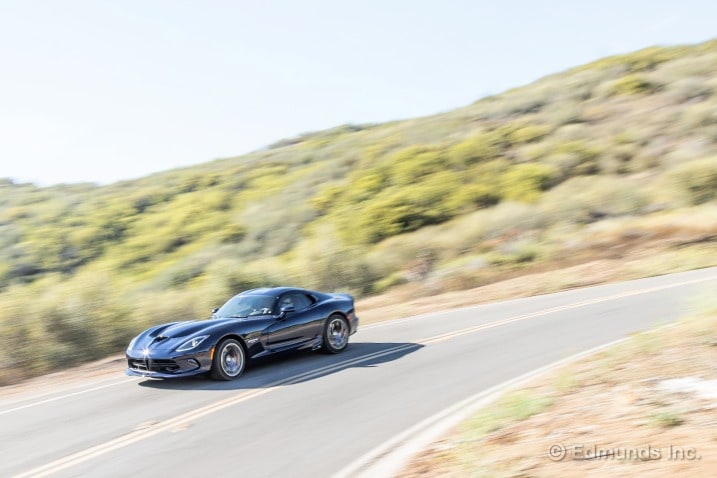
What do you want to know about?
- Introduction
- Viper, No Viping
- Works Fine as an Airport Shuttle
- On the Track, On the Road, It Should Scare You
- It's Part Alfa
- Death Valley Break-in Road Trip
- Outperforms EPA Highway Rating on Road Trip
- Fuel Economy Update for June - Single Digits in a Month of Restraint
- Good-Enough Air Conditioning
- Aggressive, Mandatory Lumbar Support
- A Cautionary Tale
- This Car Just Traveled 5,800 Miles Coast-to-Coast
- 2,740 Miles in the Last Naturally-Aspirated American Supercar
- Two Vipers Meet In Nashville
- The ACR Makes Our GT Feel Refined
- Westward, Ho! Driving 3,124 Miles Back To Los Angeles
- Insanity-Inducing Door Rattle Field Repair
- Across the Country and Back in 11 Minutes
- Road Trip Photography Do's and Don'ts
- A Quick Spin and Reminisce
- Road Trip Oil Change Proves Puzzling
- Across the Country, By the Numbers
- Driving the Tail of the Dragon
- 1,000 Miles in the Passenger Seat
- Finding a Classy Way to Get In And Out
- Poor Panel Fitment Overshadows Great Design
- Speed-Adjusted Volume Doesn't Work
- Fuel Economy Update for August - Sliding Back To Reality
- Doin' The Daily
- Tested In Its Natural Habitat
- Good Grip in Freak California Rain
- High-Horsepower Headlights Come With a Caveat
- Crazy Swede Shows Us How to Really Drive a Viper
- Digging the Carbon Details
- Coolest Car At School
- Earplugs and Ice-Cold A/C
- What We'd Buy Instead
- Fuel Economy Update for September - New Highs, New Lows
- Making Peace With Viper On Track
- Which Would You Rather?
- Skip-Shift in a 645-hp Supercar
- Toe-to-Toe With Z06 In the Mountains
- Performance-Tested Versus Corvette Z06
- Far-Reaching Weather Alerts
- Low Pressure on All Four Tires
- Won't Start After a Wash
- America's Sports Car of the Year, 2014
- I Really Dislike This Car — A Lot
- It Deserves Better Service
- Finally Scratching that Itch
- Doesn't Want a Full Tank
- Fuel Economy Update for November — Not Best Choice for Obama's Showcase at Paris Climate Talks
- Familiarity Breeds Greater Appreciation
- The Aftermarket Upgrade We Absolutely Must Get
- Pleasant Surprise - Nose Doesn't Scrape
- Hard To See and Be Seen
- Where's the Telescoping Wheel?
- Finishing the Year With a Bang
- Nice "Aw Shucks" Handle
- Better to Back Into a Spot
- Taking a Beating
- New Tires Don't Come Cheap
- Tires Make Car Washes More Expensive
- Lots of Engine Pings
- Fuel Update for January That's More Like It
- Developing Stockholm Syndrome
- Recalled for Service
- Fuel Economy Update for February — Winning With Single-Digit MPGs
- Where Are the Parking Sensors?
- Stereo Woes (Turn Up the Volume)
- Squeaky Clean Engine Bay Looks Good
- Side Pipes Need Some TLC
- I've Been Hard on it. And I'm Sorry. Sort of.
- Makes Errands Fun
- Fuel Economy Update for March - Still Double Digits
- Testing the Daily Driver Theory
- I Take It Back - I Can't Live With This Car
- Found an Easter Egg
- Styling Never Gets Old
- Angeles Crest Highway
- 140 MPH at Indianapolis With Carroll Shelby 25 Years Ago
- I Can Happily Drive it Every Day
- Sublime Seats
- I'll Miss You When You're Gone
- 5 Things I Learned About the Viper Fighting Juvenile Diabetes
- Hammers through 20,000 Miles
- Fuel Economy Update for April and May
- Draws a Crowd
- I Found Another Easter Egg
- End of the Line
- Wrap-Up
Introduction
What We Got
"The last of the muscle cars!" "The end of the V8!" "We'll never see anything this good again." We've heard these proclamations repeated and retracted more times than we can count, and knowing that, we're confident in saying the Dodge Viper is certainly the last of the truly bonkers muscle cars.
At least that's what we said five years ago when we introduced a 2009 Dodge Viper into our test fleet.
Fortunately, we were mistaken. The Dodge Viper is very much alive and kicking.
The current Viper, which debuted in 2012, is a more complete car. It's still designed to go extremely fast, but Dodge has crafted a car that allows you to get where you're going in relative comfort. Its Sabelt racing seats are offered with Napa leather and Alcantara trim. It has an infotainment system that comes standard with navigation and Bluetooth. The tall gearing in the six-speed manual means you can get halfway decent fuel economy from the 8.4-liter V10.
Some things haven't changed as much. This is the same naturally aspirated V10 that has been in the Viper since 1992, although displacement is up from 8.0 liters. Variable valve timing and a higher compression ratio have boosted output to 645 horsepower and 600 pound-feet of torque. Both of those numbers are up substantially over the previous-generation car (+45 hp, +40 lb-ft of torque) and an astounding 245 hp and 135 lb-ft up on the original 1992 Viper. Oh, and it's still a six-speed manual or nothing. No fancy paddle-shifted automatics here.
What Options Does It Have?
The 2015 Dodge Viper comes in three trim levels: SRT, GT and GTS. A base Viper SRT coupe starts at $84,995. It comes equipped with a plethora of standard features that consumers have come to expect on high-end sports cars, features never considered on the original Viper. These include things like antilock brakes, navigation, satellite radio, a back-up camera and keyless entry.
Our car is a Viper GT, the midlevel model that starts at $94,995. The GT adds six-way adjustable Napa leather and Alcantara-trimmed seats, the hood from the top-level GTS model and body-colored fascias. On the performance side, the GT coupe gets Brembo two-piece performance brakes with red calipers, dual-mode adjustable dampers for street and track, five-mode electronic stability control and all-speed traction control.
On top of that, we added a $1,995 Harman Kardon 18-speaker audio system, $1,700 six-lug Sidewinder II Hyper Black wheels and $1,000 optional GTS-R Blue Pearl paint, a new color for the Viper.
Tack on the $2,100 gas-guzzler tax and a $1,995 destination charge and you arrive at $103,785. That puts it in the same league as our long-term Jaguar F-Type R coupe, which stickered at $360 less.
Why We Got It
The Viper still has a reputation as a widowmaker despite its increased level of sophistication. Our last long-termer proved that it has moved beyond that reputation. Your mother could have driven our last Viper if she was good with a clutch.
This time around we want to see if Dodge has taken it a step further with the latest redesign or merely smoothed a few of its last remaining rough edges. Do the adjustable dampers really work? Are those leather-wrapped race seats still suitable for a track day? And is that giant screen in the dash an unnecessary distraction compared to the puny screen in our last Viper?
The fact is, we think the Viper gets pigeon-holed far too often. Other media outlets say it's only good for one thing and only able to do one thing — go very fast on a racetrack. The rest of the time it's just an expensive garage queen that sits under a cover. Meanwhile, its peers are heralded as "everyday supercars" just because they have better cupholders and automatic transmissions.
We don't think that's the case. You don't have to be a lunatic to drive a Viper every day, you just have to be an enthusiast who loves to drive. And we aim to prove it by driving this Viper day in and day out like it's a Corolla. Sure, we'll do some track days and light up the tires now and then, but we'll also pick up the kids (OK, a kid) from school, toss some groceries in the trunk and maybe even drive it across the country. Then we'll know if it deserves its place as one of the best sports cars in the world. Follow along on our Long-Term Road Test page to try and keep up with this one.
Best MPG: 11.3
Worst MPG: 8.1
Average MPG: 9.9
Current Odometer: 551
The manufacturer provided Edmunds with this vehicle for the purpose of evaluation.
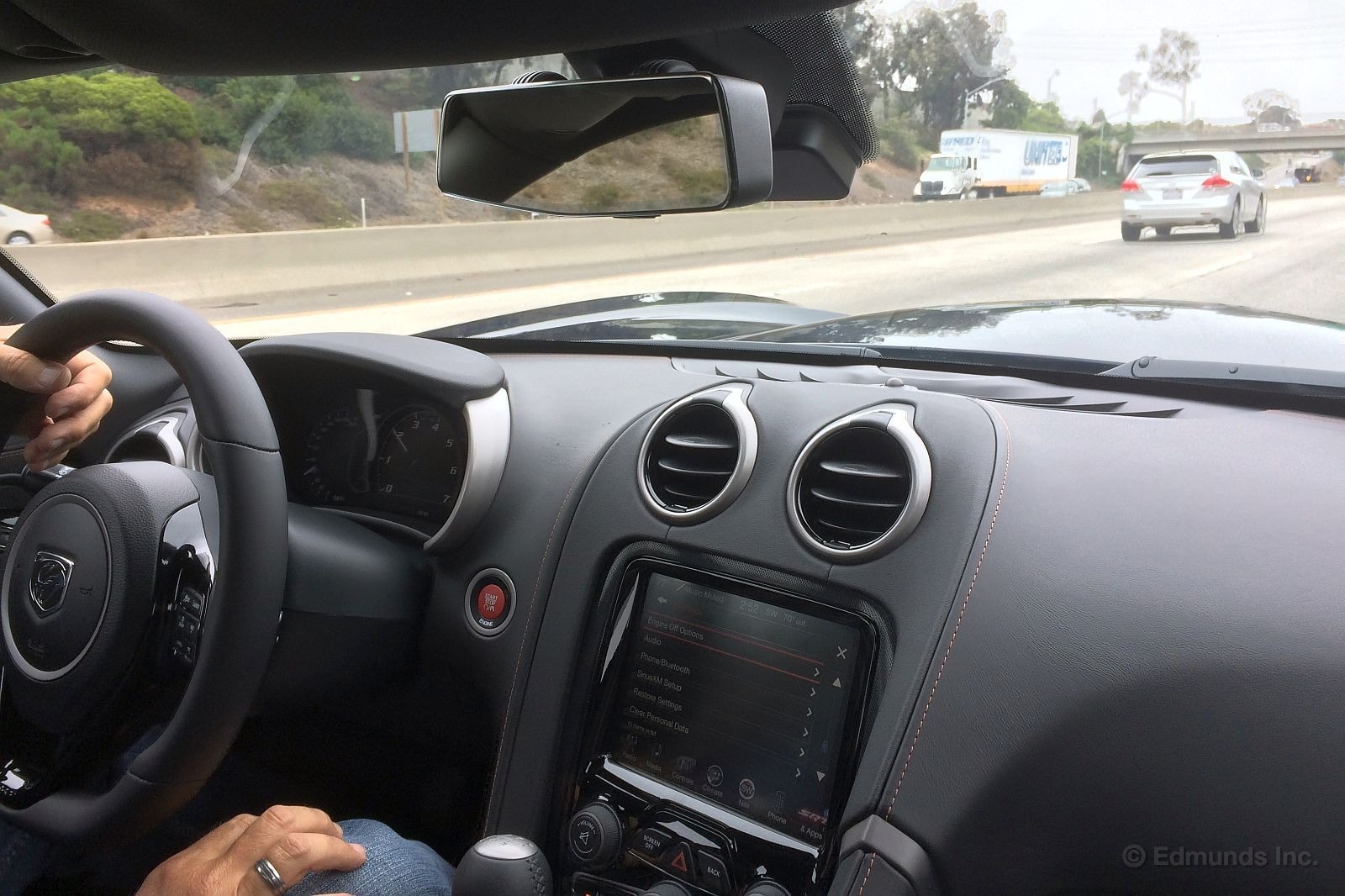
Bring home something like a 2015 Dodge Viper GT and the temptation to show it off, open it up and generally revel in the 645 horsepower and 600 pound-feet of torque you just bought is irresistible.
But Dodge and SRT don't want you to go hell-bent for leather in the first mile. In fact, they strongly suggest you hold off until 1,500 miles appear on the odometer. During that time the break-in period for SRT-sourced engines is pretty specific, and it consists of four phases that get gradually more permissive. Page 21 of the Viper manual spells it all out.
This is why you don't see any motion blur in the photograph above. Note also that the tachometer is pointing at a piddling 2,000 rpm. I am abiding by Phase I guidelines, which apply between 0 and 100 miles: no extended idling, go easy while braking, accelerate gently to no more than half throttle, shift before 3,500 rpm and never exceed 55 mph.
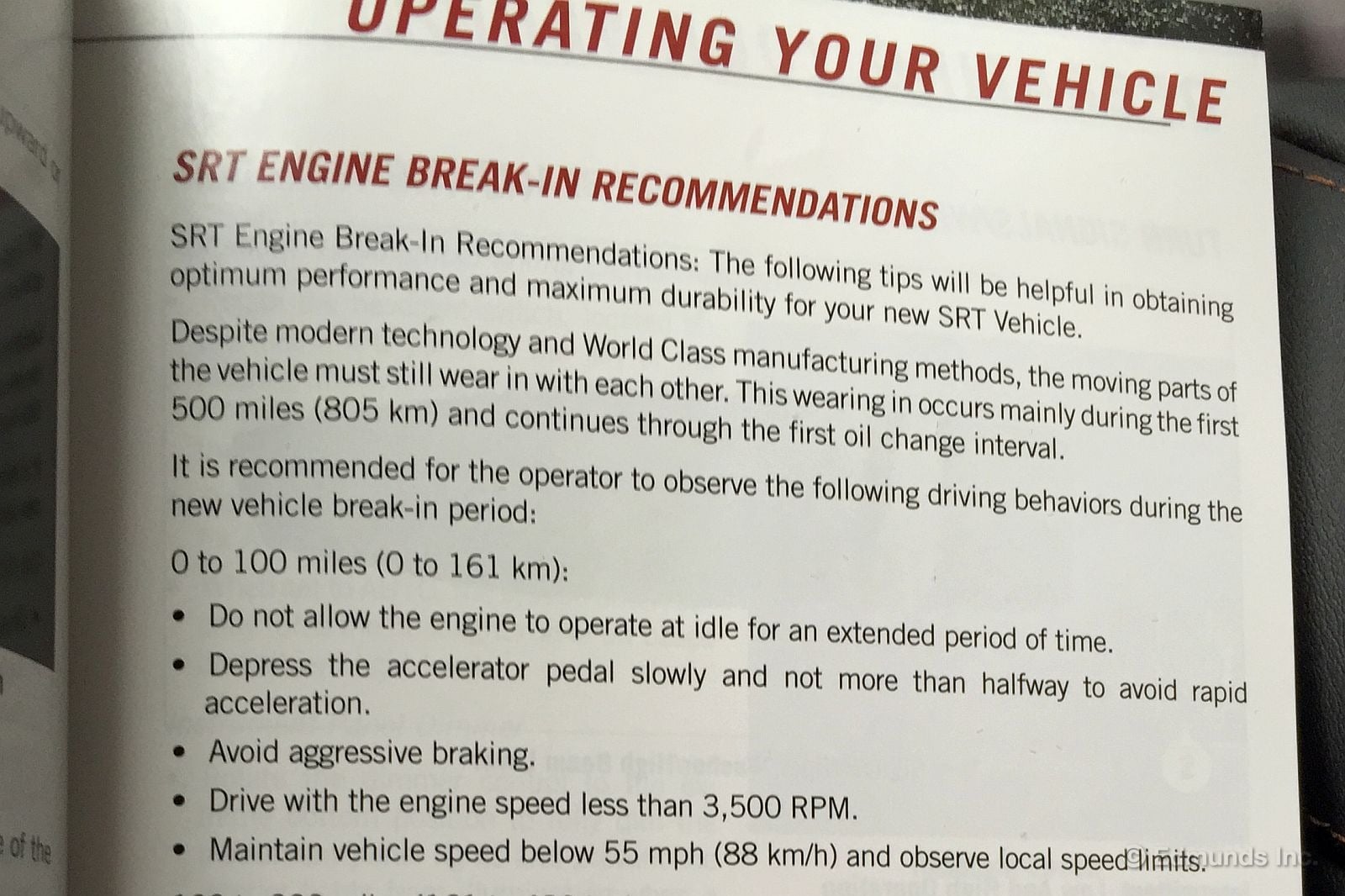
We wrapped up Phase I and its Draconian restrictions about two weeks ago, then started on the somewhat more reasonable Phase II. From 100 to 300 miles, we could exercise the engine up to 5,000 rpm without exceeding 70 mph, but the gentle acceleration/half-throttle rule was still in effect. And even though it's not spelled out, extended cruising in one gear on cruise control is not the proper way to get through this.
Phase III begins at 300 miles and ends at 500 miles. At this point things start to feel normal and the break-in period will cease to be a daily issue for most people. How so? Now we can (and should) start using the entire rpm range, which means we can flirt with the red line. Wide-open throttle is permitted, but only momentarily. Speed cannot exceed 85 mph, which is very easy to comply with around here because the highest California speed limit is 70 mph.
Phase IV stretches from there to 1,500 miles, and the advice is straightforward: no track days, performance driving schools or "similar activities," which to us means no Edmunds track testing for numbers, no burnouts, and no drifting photography.
This last restriction is similar to one we place on ourselves. We generally don't take new long-term test cars out to the track until they've got 1,500 miles, whether the manual says we can or not. Electric cars are an exception, for obvious reasons.
Throughout the process, Dodge suggests checking the oil level at each fill-up. And they warn that oil and fuel consumption may be higher than normal (presumably tapering off as things wear in) through the first scheduled oil change. In practical terms, there's another way to look at this. You could view it as a "check yourself before you wreck yourself" situation as much as an engine break-in procedure.
Surely some fraction of new Viper buyers has never before owned anything with this much raw horsepower. This break-in procedure seems like sound advice for drivers as they come to grips with their new V10-powered machine.
As for the performance driving school prohibited until after 1,500 miles, that seems like a good idea as soon as the curtain lifts, too. We'll certainly be taking ours straight to the track as soon as Phase IV is history, at which point we'll immerse ourselves in a cloud of tire smoke as we make full use of all 645 of the Viper's prodigious horsepower.
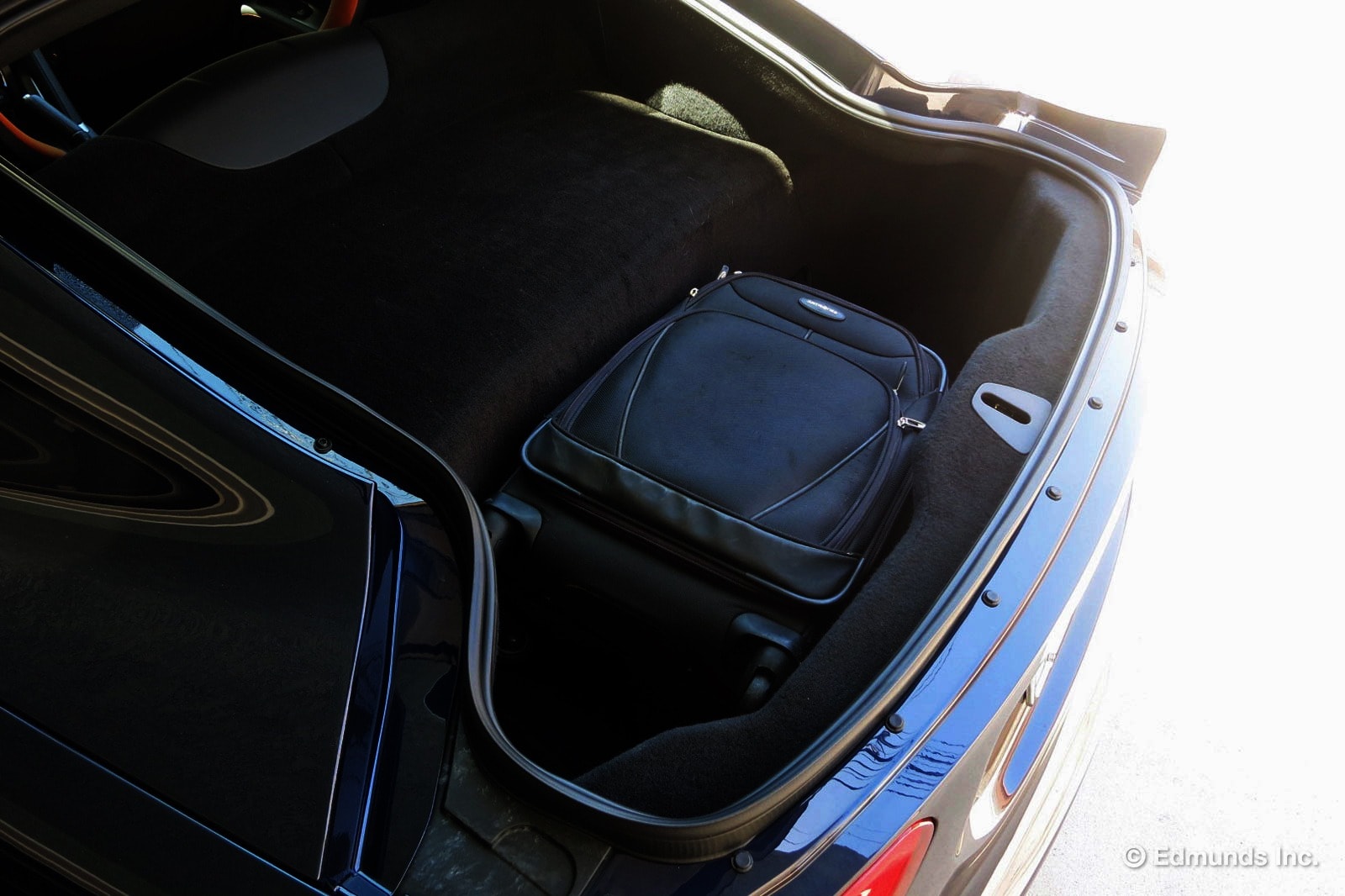
Well, we said we were going to use our 2015 Dodge Viper GT like any other car, so why not toss a carry-on in back for an airport run? The bag fit easily, unlike the overhead compartment of the 767 that flew me back from Detroit. And there was room to spare in the Viper, so I didn't even have to jam it in there.
So our Viper can handle a little cargo when necessary, which is good. No one expects a car like this to be easy to live with, but this Viper is more accommodating than you might think.
And then there's the fun part, of course. Nothing like clearing out the cobwebs after a four-hour flight with a burst from a 645-hp V10. Not a huge burst though, as it's still not fully broken in. But even a small punch of the throttle in this car is enough to rattle your head.
Two early impressions: the seats are great - if you sit up very straight. Slouch and they feel uncomfortable. I can live with that. And the shifter is better than I remember from previous Viper gearboxes. This one feels heavy and notchy, just the way I like it. Looking forward to racking up more miles in this one soon.
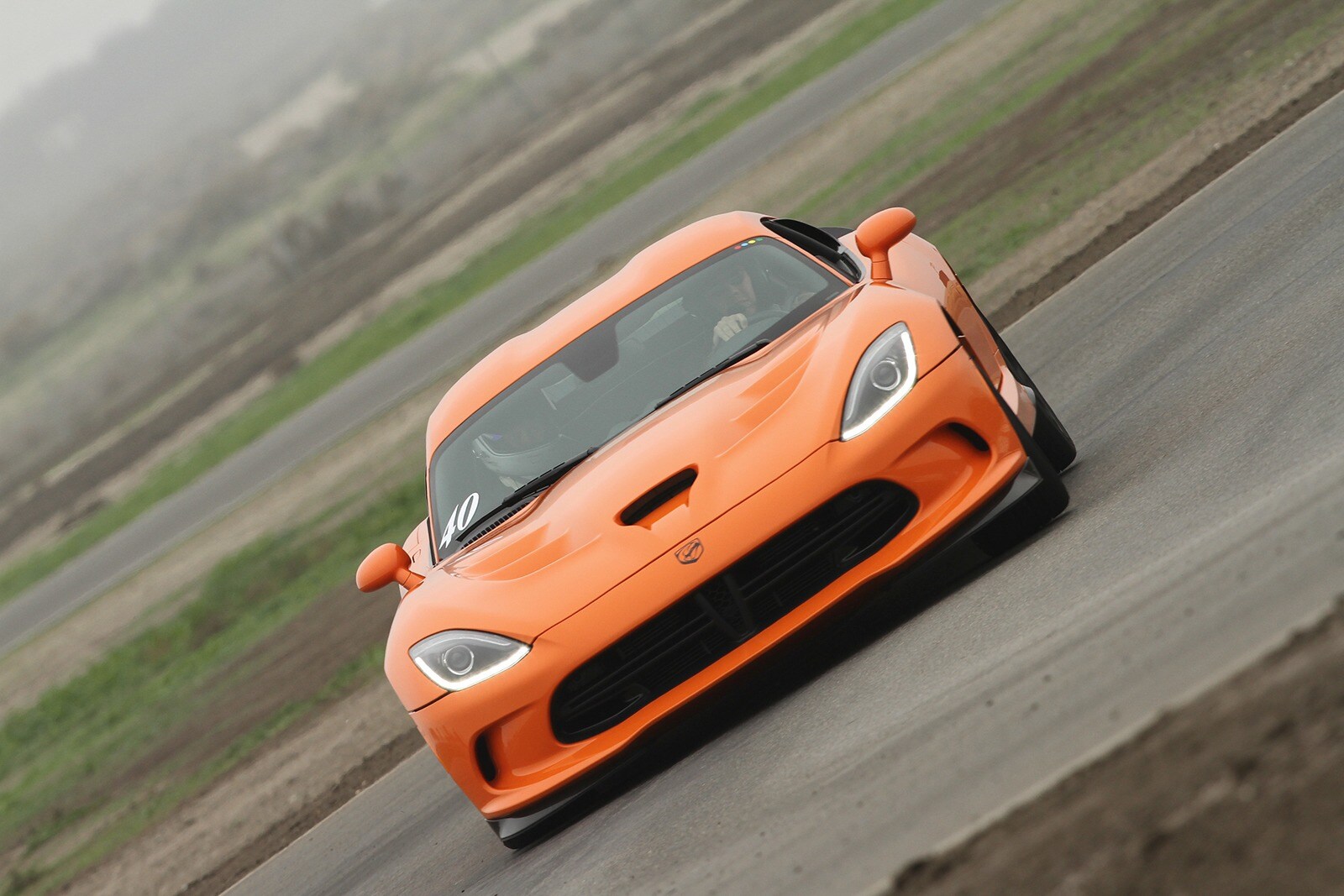
It was one of those Friday nights. Out for a few drinks and a meal with some co-workers, then an urgent text arrives from my boss. The subject had me dropping cash on the table and grabbing an Uber home as if all of humanity's life depended on it.
The message and ensuing phone call basically said, "I'm sick as a dog and can't make it to the track tomorrow to drive Vipers. Do you want to go?"
There's only one answer.
That answer is, "Yes, thank you."
I battled through thick early morning fog and arrived to a rain-soaked Buttonwillow Raceway. It was a Viper club event and I was a guest of Dodge. Part of the deal was that I'd sit through the beginner school and be placed in that run group on track, and that certainly didn't bother me. Regardless of how much track experience you may have, I still contend that there's something to be learned. Plus, the first sessions were a little treacherous as the surface was still quite damp.
After the first 20-minute session on track, the instructor assigned to me immediately bumped me up into a more advanced run group. As an added bonus, I shared my Viper TA with former racer, broadcaster and hall of famer Tommy Kendall. I'll go ahead and assume he's faster than me.
In every event I've ever driven at Buttonwillow, the track layout included the Bus Stop section at the South end of the track. This right-left-left-right section keeps speeds reasonable heading into the big Riverside turn (if you're running clockwise). For this event, we bypassed the Bus Stop and had a mostly unimpeded run-up into Riverside, despite some instructors cautioning against it.
This wasn't the first time I had been on a racetrack in a Viper, but the amount of respect and restraint you need to show never goes away. It's raw, with an ungodly amount of power and it should scare you. This latest Viper is a bit easier to drive, but I contend it's one of the more difficult to find its limits without endangering yourself. On a track like Buttonwillow, I only went wide-open throttle in a couple of spots. In that state, the Viper covers a lot of ground.
It really does feel like a racecar adapted for the street, not the other way around. I discovered at this event that we would soon get our long-term 2015 Dodge Viper and I was obviously happy about that. I was also cautious, however, as this car is punishing on L.A. roads, has a tiny trunk, is very loud, is difficult to get in and out of, and may present space issues for taller drivers.
I get the distinct impression that I'll be signing out our long-termer more than my more reasonable colleagues, and I'm just fine with that.

According to one of my guys on the inside, the 2015 Dodge Viper does indeed share parts with its Italian-based corporate brethren, specifically the Alfa Romeo Mito.
Intrigued?
Enraged?
Relax, it's minor.
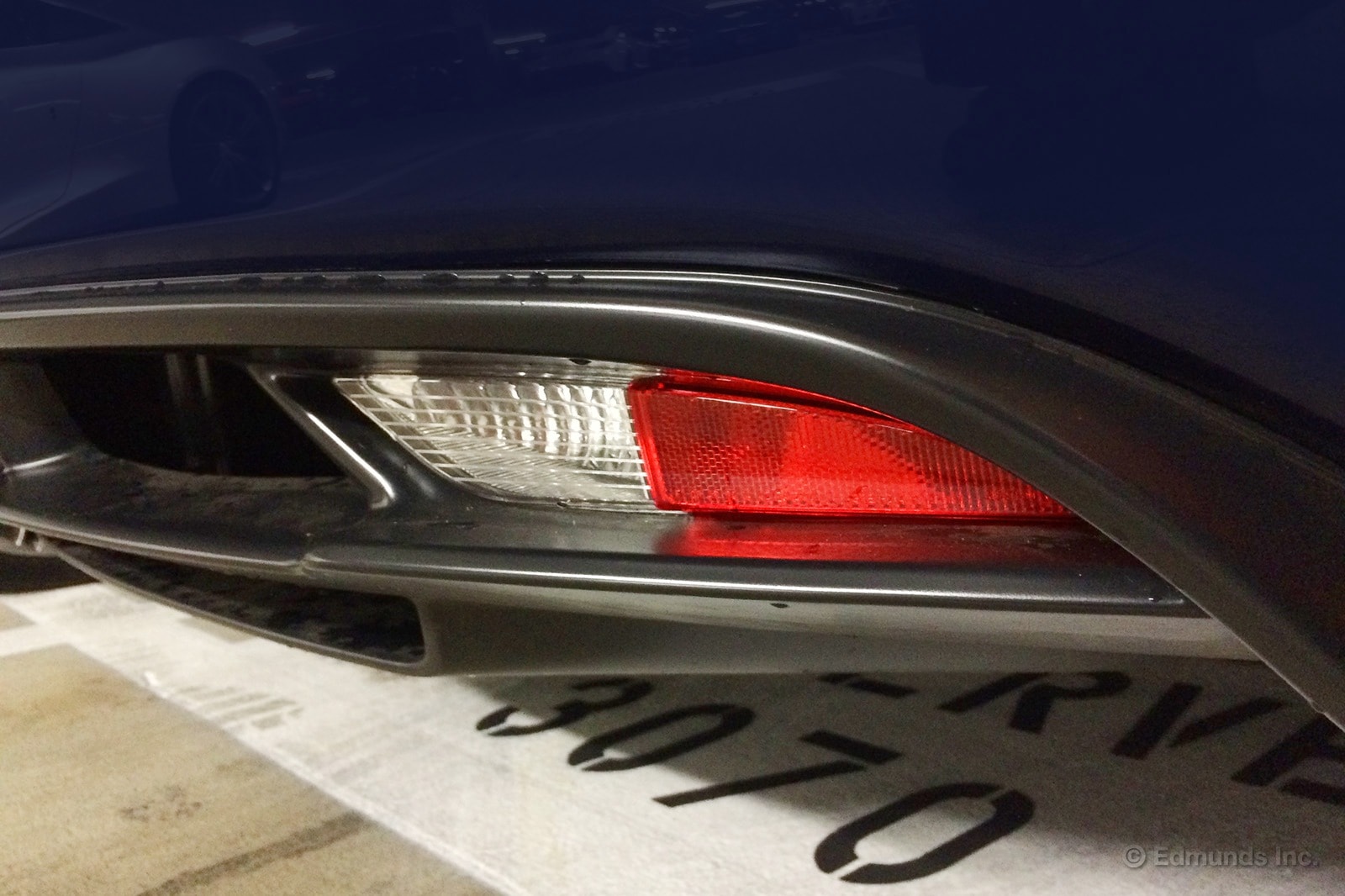
It's just this reflector and reverse light below the bumper. The rest of the car, at least 71 percent of it anyway, is North American.
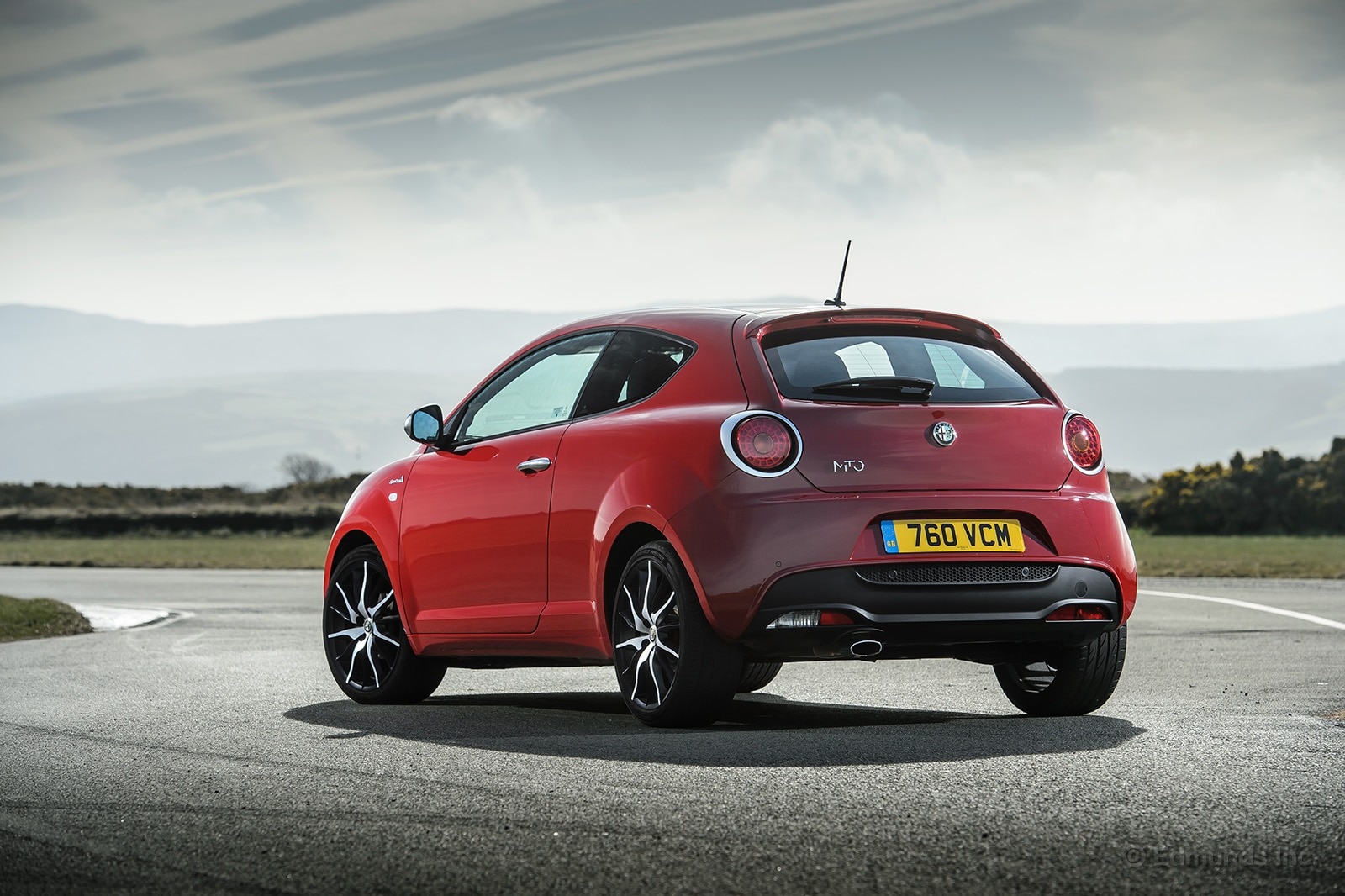
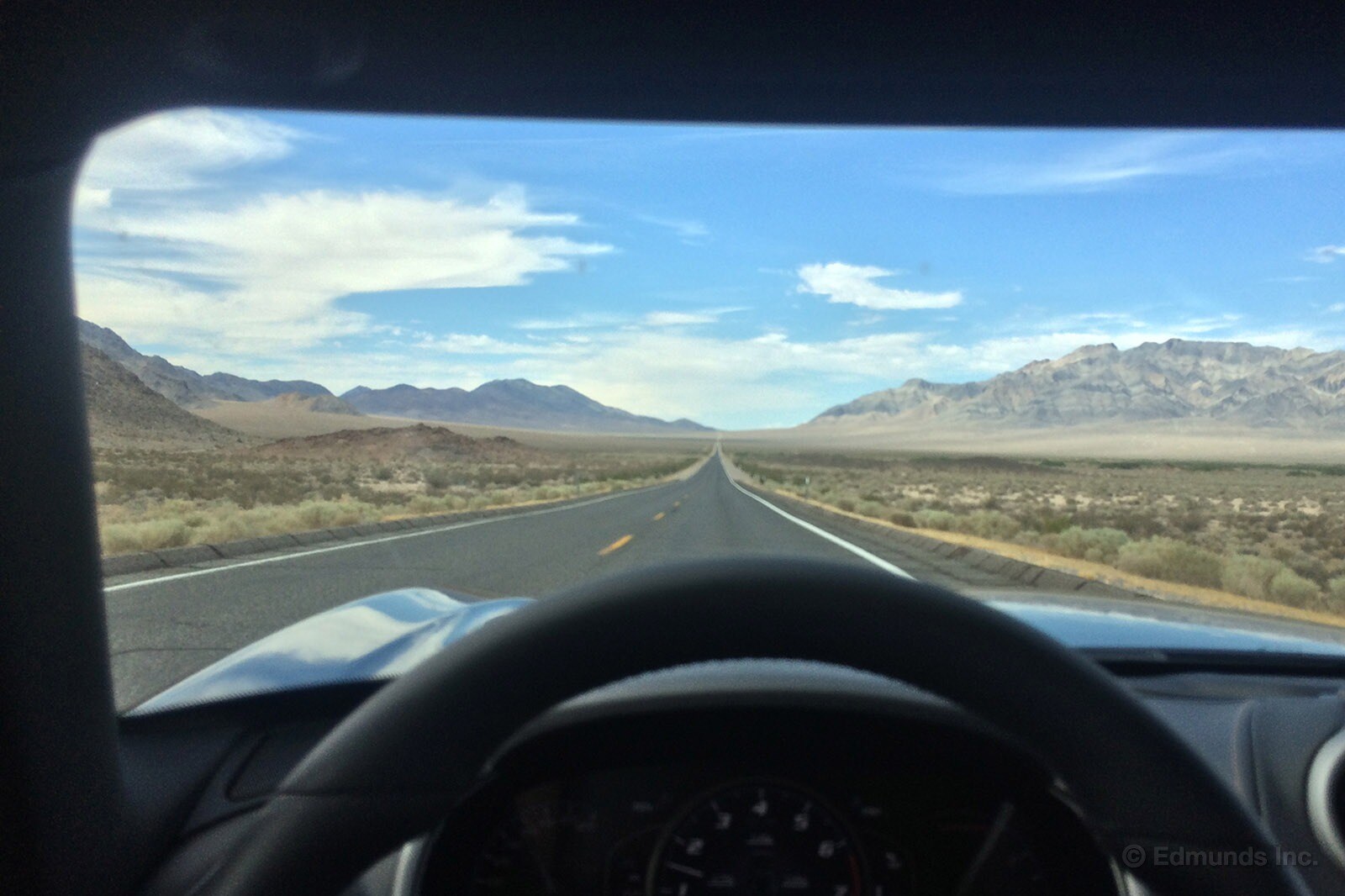
As Dan mentioned, our 2015 Dodge Viper has a frustratingly long break-in period. 1,500 miles to be exact.
Well, frustratingly long if you're not me. I loves me a good break-in road trip. I like the long hours behind the wheel. I like that you can't stay at a certain speed for too long. I even like that you can't take full advantage of all the power. It keeps me from even needing the ol' radar detector.
The Viper needed 700 more miles when I got the keys. The loop from Los Angeles to Death Valley to Las Vegas and back is about that far.
From my apartment, the route starts out by simply getting out of L.A. and driving north on Highway 14. If you've never driven this road, consider yourself lucky. There's nothing interesting on it, there aren't enough lanes and it's one of the most heavily patrolled highways in California. I plopped the Dodge into 6th and, for the first time in my life, used cruise control on a Viper. It works.
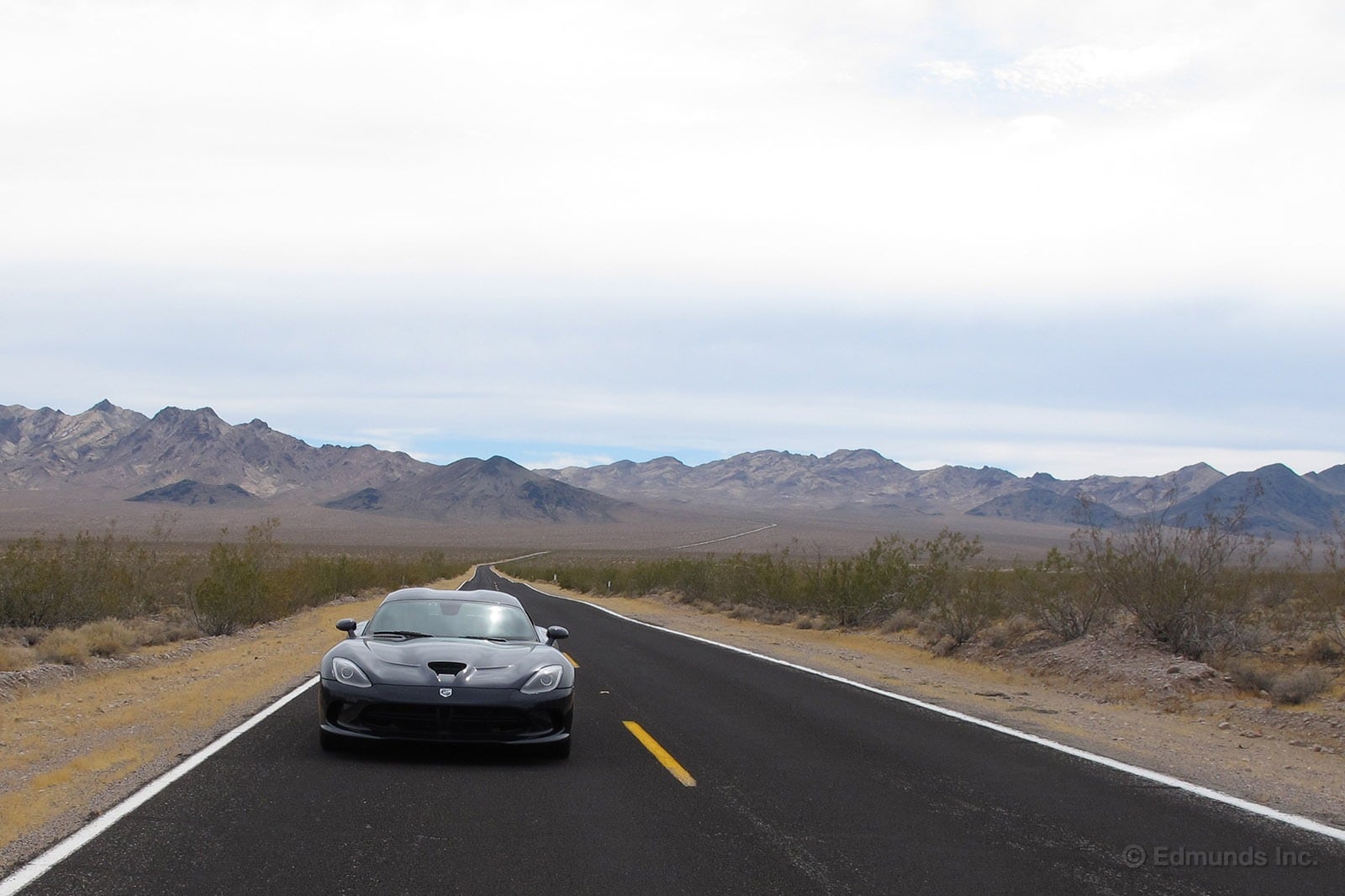
A few hours later, the road turns into U.S. Route 395 and then, mercifully, about an hour after that you end up on Highway 190 which brings you through the meat of Death Valley. This road starts out flat and bland, but then come the mountains. The road twists and turns and undulates like a roller coaster. The Viper is unfazed.
I could be going twice the legal speed limit (usually 55 mph through the fun sections) without any stress. This thing's all torque and grip and unflappable brakes. My only issue is visibility. The roofline cuts off a quarter of my forward vision and the rearview mirror blocks most of the visibility to the right. But at least the Viper hates the chipseal pavement so much that the mirror is vibrating so harshly you can't see behind you. It's worse than in the Corvette.
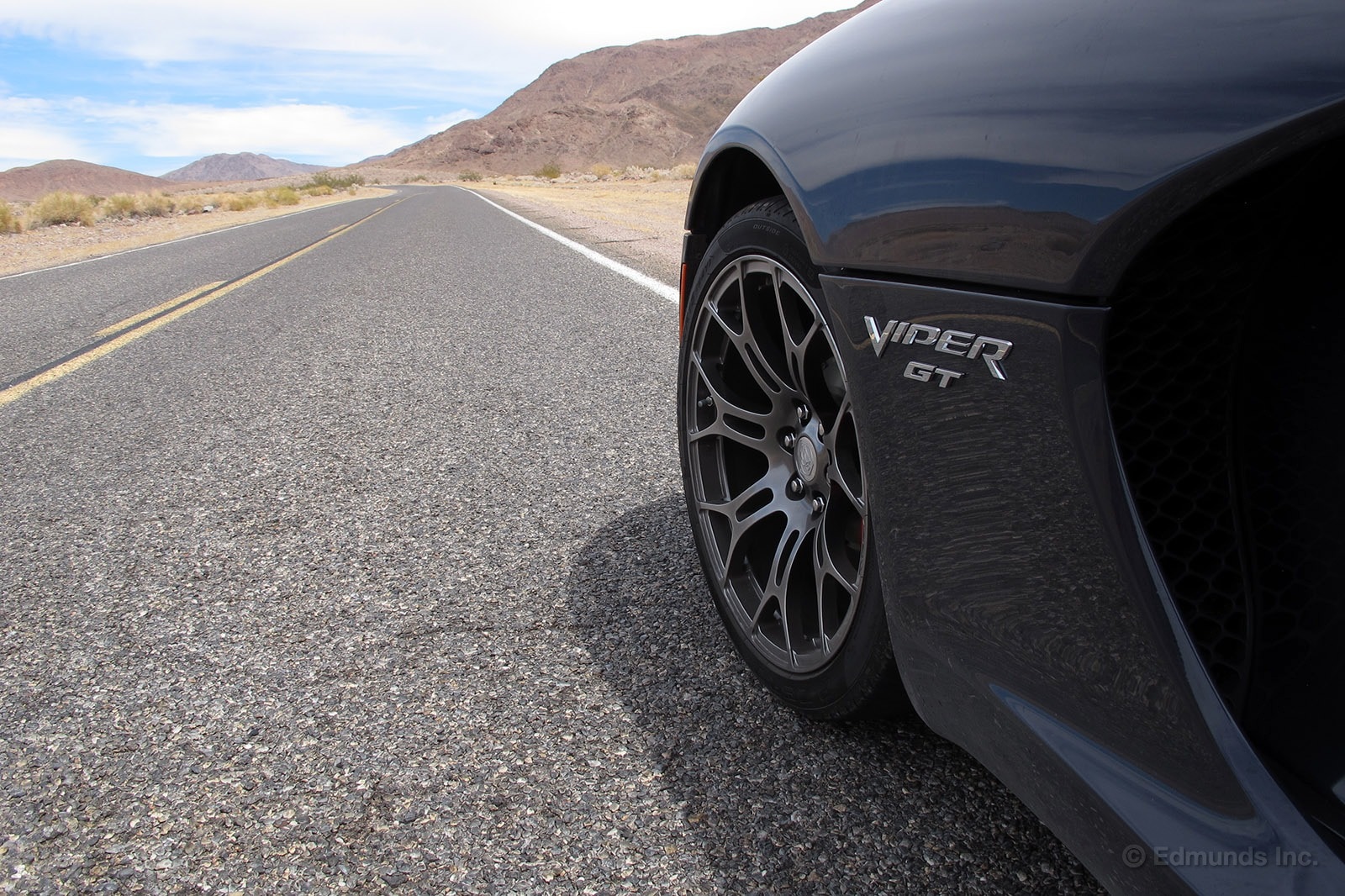
This vibration continued throughout the next hundred-something miles. The tires roar. The engine kind of drones. Your eyeballs don't feel securely attached to your face. No part of this encourages long-haul travel.
Right around the border of Nevada, the pavement gets better and, like the earlier transition from 395 to the fun Death Valley road, my entire outlook did too. I was back in love with the Viper, a feeling that continued all the way into Las Vegas, which was only 112 degrees, and is where I dumped the car in a local lot and hit the closest, softest bed.
The ride home from Vegas is as bad as the drive out to Death Valley, except with more brodozers. It's nothing but highway, fifth and sixth gears (fourth if you really need to pass), motorhomes, tire noise, engine drone. More tire noise.
I considered going back to Nevada just to use their asphalt and give my ears a rest. I've done this route in our old C7 Corvette and in a GT-R a few years back and neither caused my ears to ache the way this did.
In the end, I cleared over 750 miles in two days and managed to set records for both highest and lowest fuel economy. More on that in a later post.
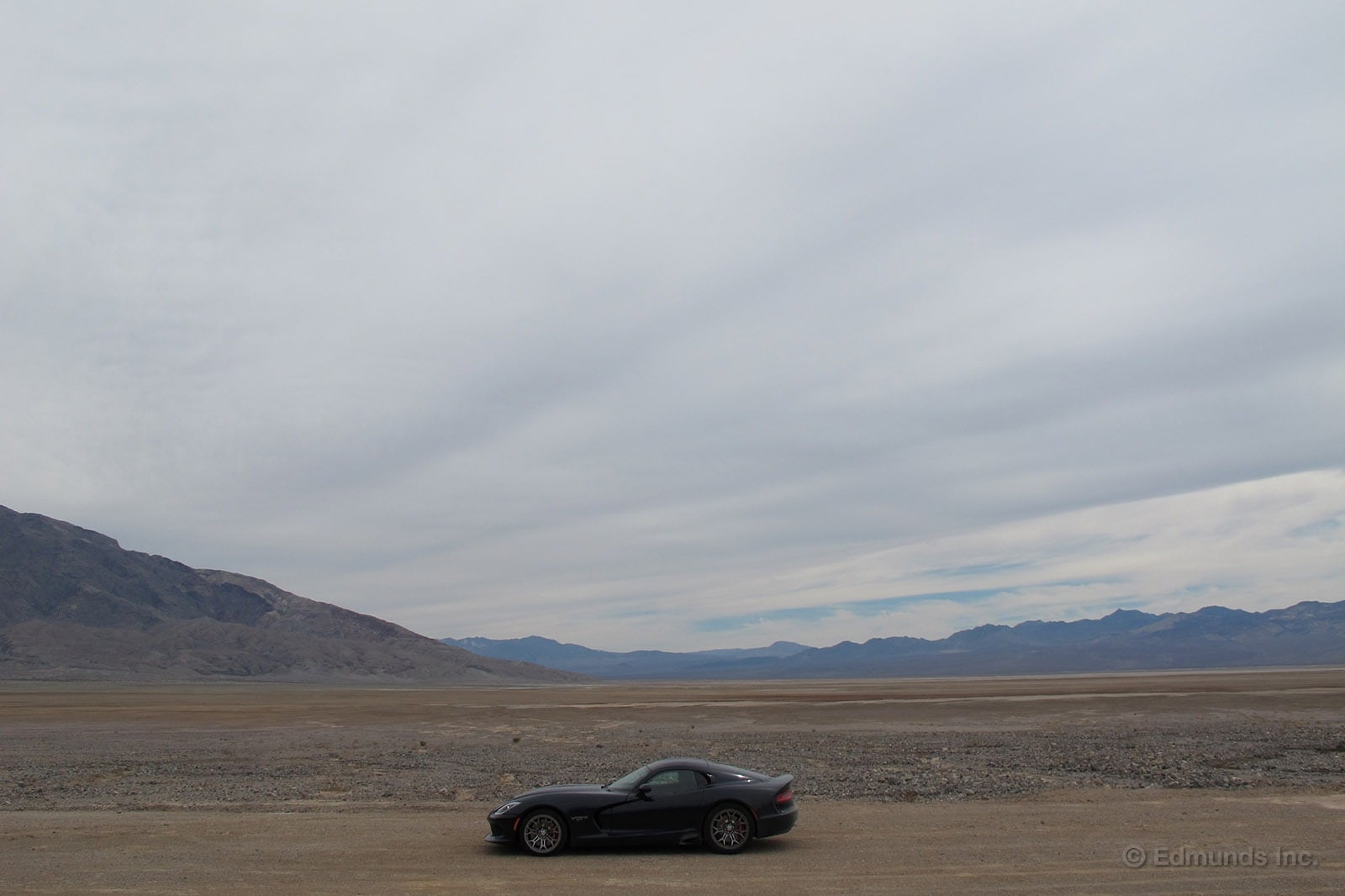
And yes, as soon as I was clear of the break-in rules and regulations, I revved up the V10, dumped the clutch and donated a few feet of rubber to a dead-end access road.
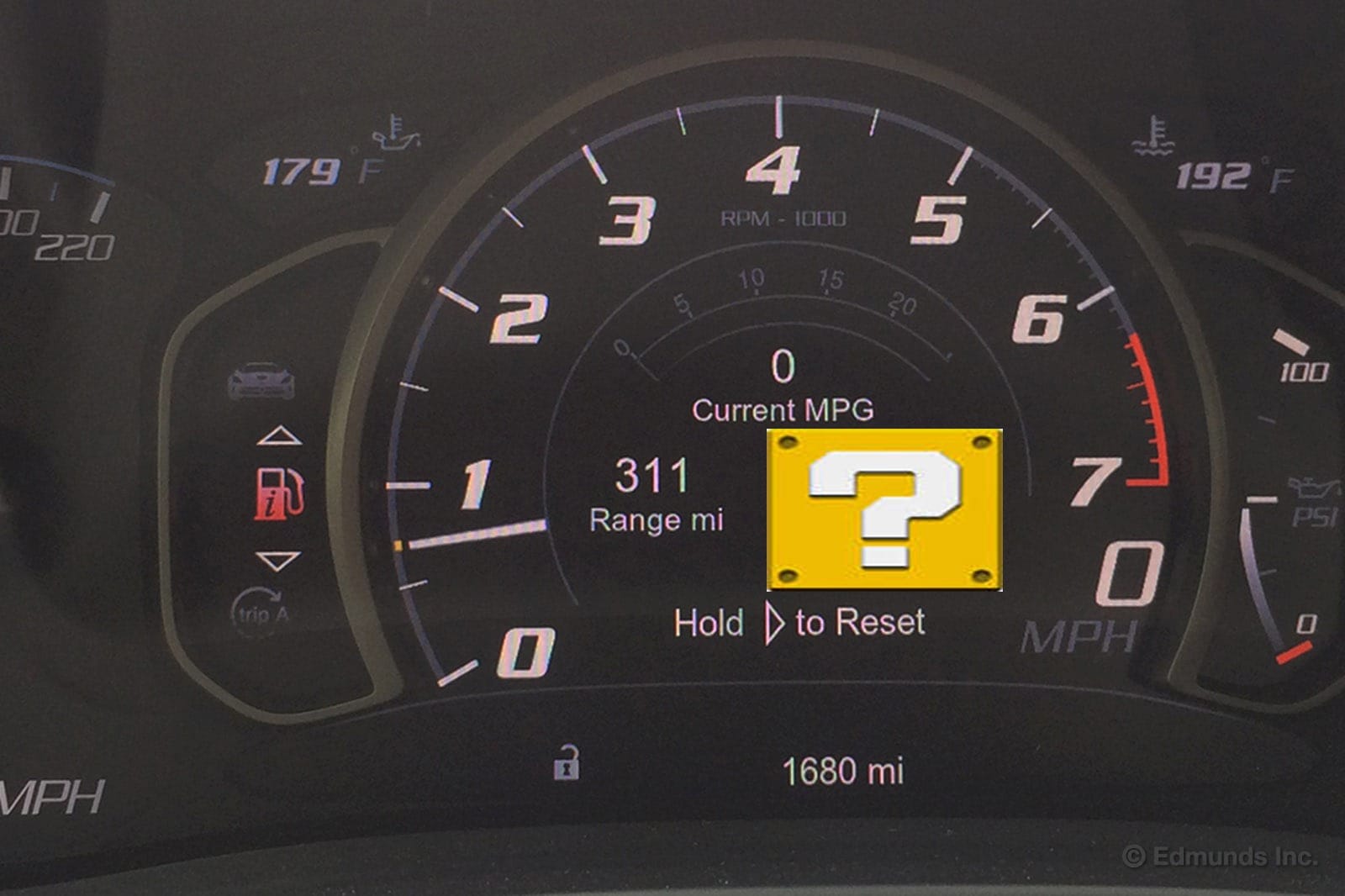
Last time we discussed the fuel economy of the 2015 Dodge Viper, we had fewer than 1,000 miles on the odo, and most of those miles were from shuffling around the west side of Los Angeles.
But then I took it on a road trip. 700-plus miles, no traffic, minimal stopping. Plenty of gas stations, so no need to be conservative with the go pedal.
Where we were:
Worst Fill MPG: 8.1
Best Fill MPG: 11.3
Average Lifetime MPG: 9.9
EPA MPG Rating: 15 Combined (12 city/21 highway)
Best Range: 138.2 miles
Current Odometer: 670
My week with the car:
Worst Fill MPG: 7.0 (my commute is not kind to V10s)
Best Fill MPG: 23.8
Average MPG: 16.6
EPA MPG Rating: 15 Combined (12 city/21 highway)
Best Range: 294.3 miles
Current Odometer: 1,680
Adding them all together:
Worst Fill MPG: 7.0
Best Fill MPG: 23.8
Average Lifetime MPG: 13.3
EPA MPG Rating: 15 Combined (12 city/21 highway)
Best Range: 294.3 miles
Current Odometer: 1,680
That 23.8 mpg tank was a short drive, only about 90 miles. I misjudged my coffee timing, had to pee and realized I forgot to check the oil at the first stop. Figured I'd get gas, too. I backed up this tank with a 22.6 mpg tank from Vegas to LA. I wasn't nursing it, but I wasn't in any danger of getting pulled over for speeding, either.
As for other fluids, the Viper took a half-quart of 0W-40. The manual says it may use some oil during break-in, so a half quart over 1,600 miles seems fine.
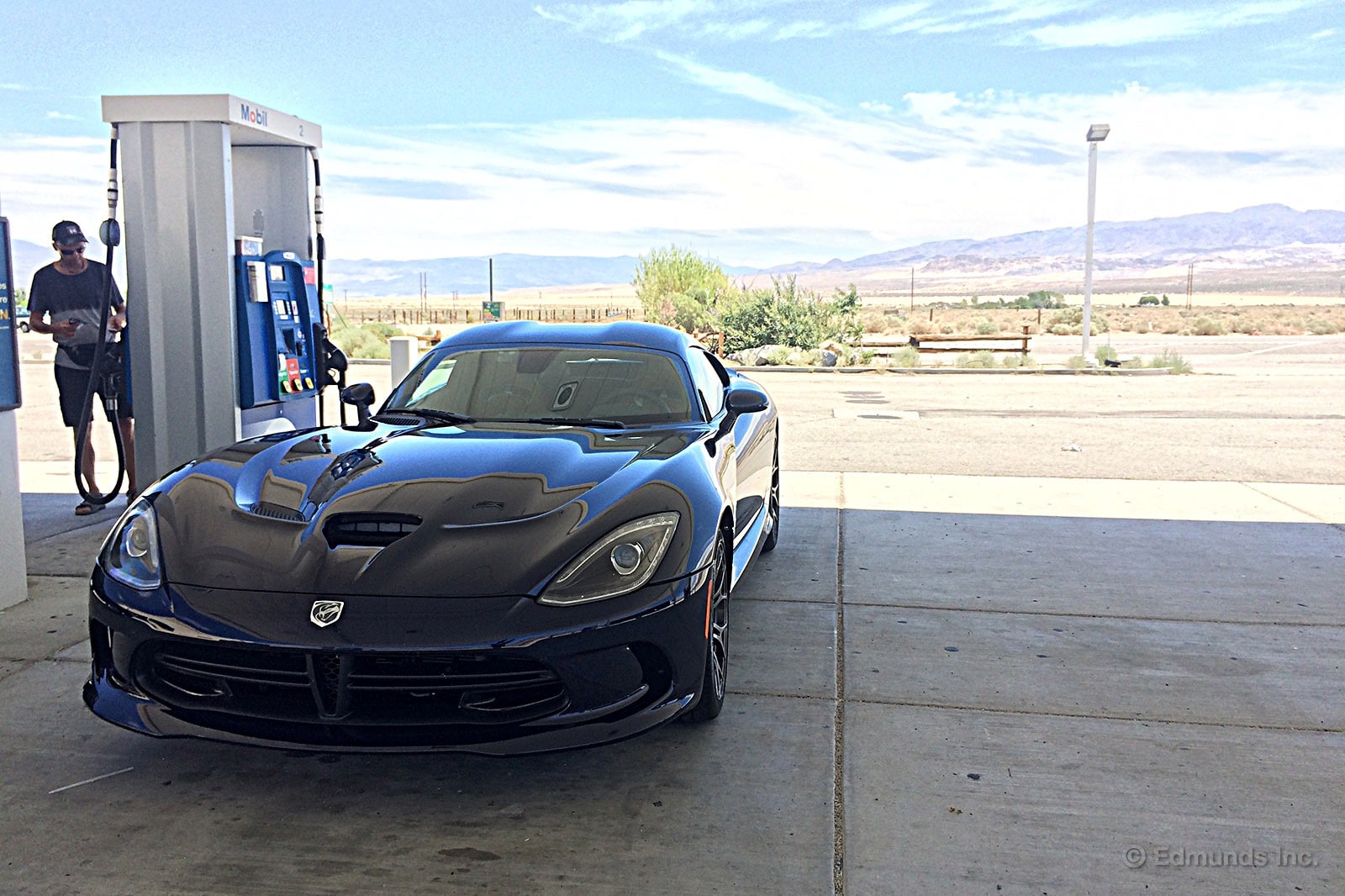
The first fuel economy report for our 2015 Dodge Viper is not going to paint a good picture.
We took it on a photo shoot. Rarely left the city. Observed engine break-in rules and generally just puttered around, using all of the rev range waiting to cross the 1,500-mile line.
It'll get better. And probably much worse.
Worst Fill MPG: 8.1
Best Fill MPG: 11.3
Average Lifetime MPG: 9.9
EPA MPG Rating: 15 Combined (12 city/21 highway)
Best Range: 138.2 miles
Current Odometer: 670
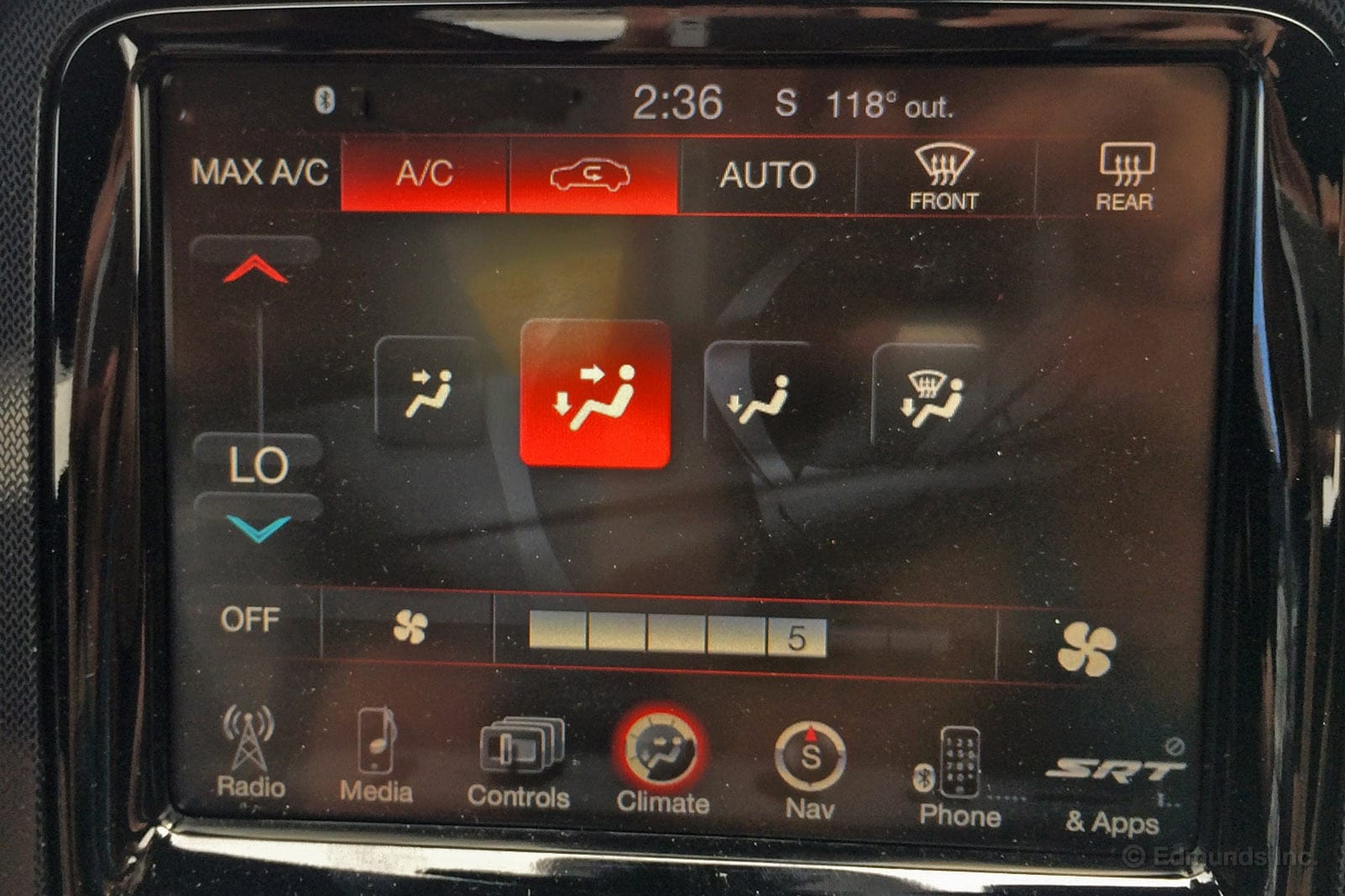
I loved our 2009 Dodge Viper. Drove it all the time. That car and me were buds. I've got nothing but pleasant memories of that car, with one exception: the air conditioning.
It's a Viper after all and what Vipers do is blow cold air at your hands and let your feet cook in heat generated by its massive truck motor. Don't believe me? Erin wrote it down which means it must be true.
Our 2015 Dodge Viper doesn't do this!
During my break-in road trip, the temps hovered around 116 with the occasional spike to 118 and the occasional low of 112. For more than 12 hours, the Viper existed in triple-digit temps and, honest-to-god, not once did I complain about the air conditioning. My feet weren't cooking and my hands weren't frozen. The interior of the car was almost cool.
Sure, it would've been neat if it had gotten so cold I had to turn the fan down or if it had some sort of humidity control as it was bone dry in there, but Vipers are supposed to be a little rough around the edges. The air con's acceptableness wasn't just limited to closed-cabin cruising, either. After a stop where we left the doors open, the system cleared out the heat in a matter of minutes.
Unfortunately, the items in the trunk of the car did not enjoy the same lack of hotness as the front-seat occupants did. That's okay, though. I like my sunscreen boiling.
*Apologies on the crummy picture. The in-car meter finally leveled at 118, I was too bored to stop and my passenger assured me that they got the shot. I'll double check their work next time.
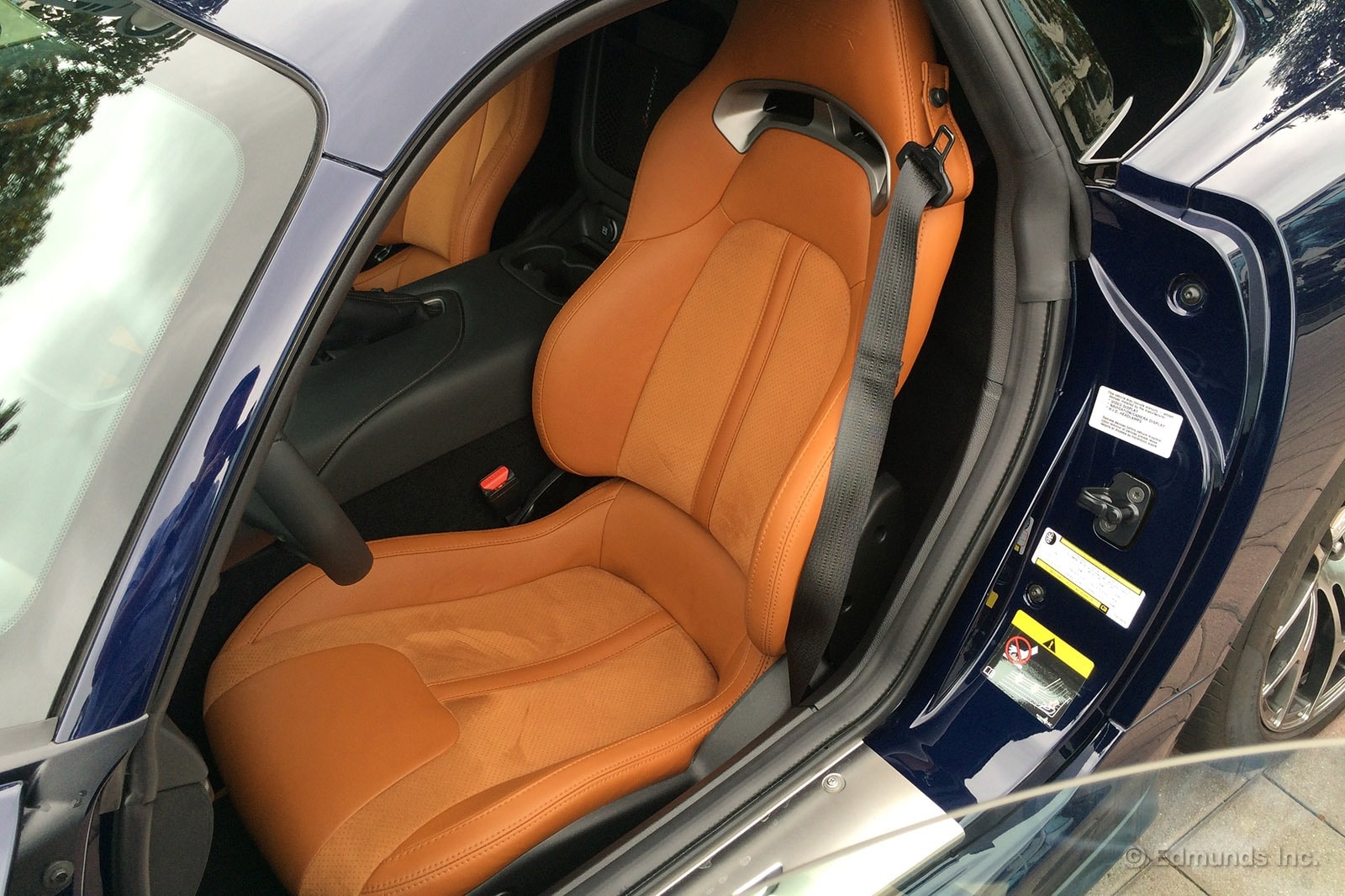
Someone at Chrysler hates my spine. First the Dart, then the Cherokee, and now it's our 2015 Dodge Viper.
Each one of these cars has a similar seat design where the thigh-bolsters continue in a puffy ring around the seat bottom that surrounds your butt/back like one of those foam things that parents dump babies into when they want to protect the baby's soft skull, but also drink wine.
Those poor babies...
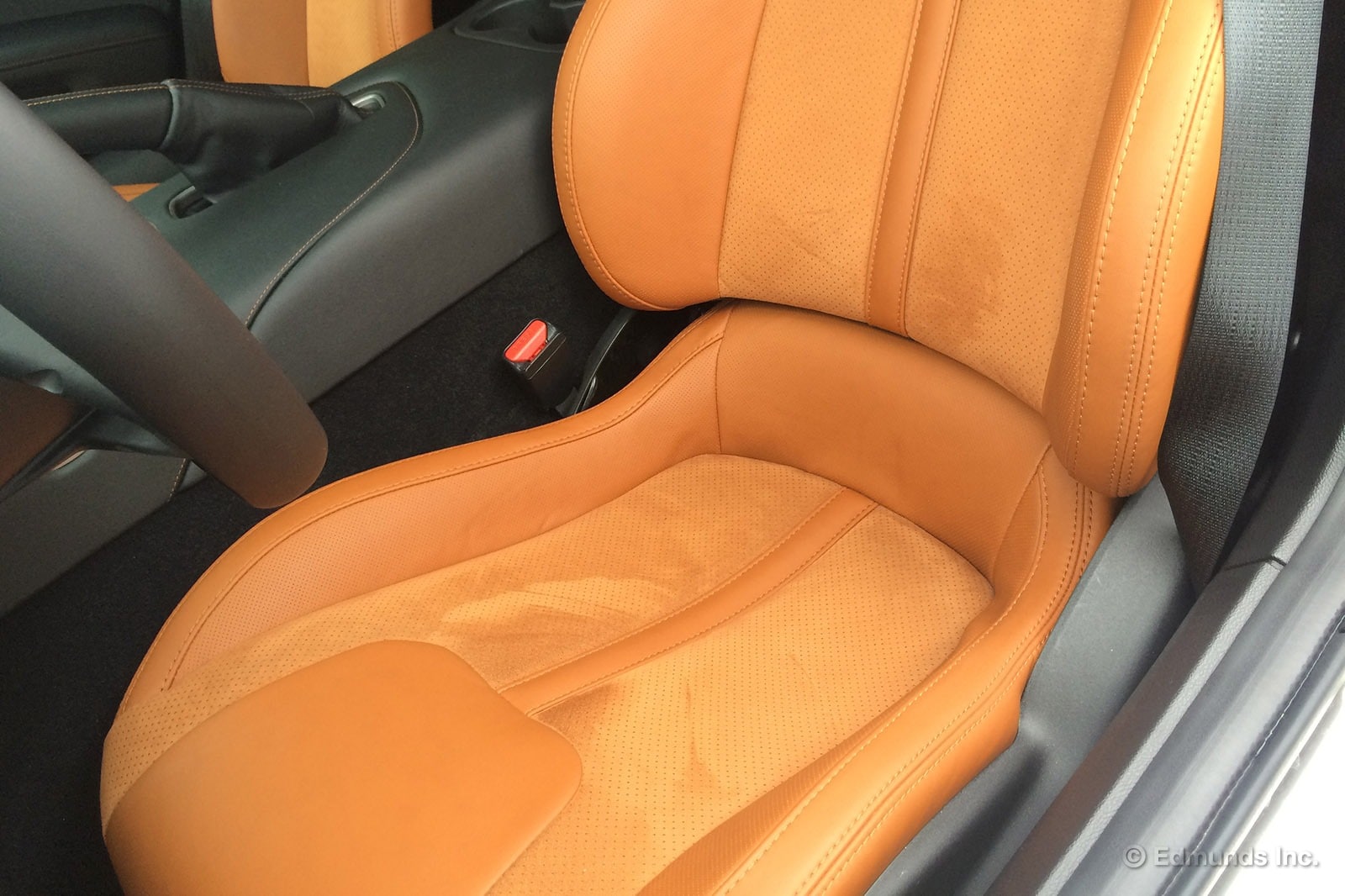
Look at that seat and then take a look at this seat from the BMW 235i.
You can see that the BMW has LOTS of adjustment and the Viper has the least adjustments allowed by human decency. You can see how on the BMW the seatback and the seat bottom intersect at a sane angle. See how the intersection on the Viper has a big lump in your lumbar and then a second lump right above that? Spines aren't supposed to bend like that and mine doesn't.
And lest you think it's a "sports car thing!" take a peek at our old Corvette. It's got a little bit of rounding at the bottom of the seatback, but nothing crazy and the pivot point isn't at the bottom of your ribcage.
And speaking of pivot points, when you recline the Viper's seat, the lumbar punch gets worse. It goes from "sitting on the ground leaning against a log" to "lying perpendicular on a beam fence." Putting the seat at absolute vertical is the only way not to feel like your kidneys are being crammed through your navel.
The downside here is that, like the Corvette, the seats are too high and when it's vertical, your vision is 40 percent Viper ceiling, 20 percent hood, and 40 percent road. Also like the Vette, the Viper doesn't have adjustable thigh support and, you guessed it, this seat bottom could stand to be a bit longer (or could tilt back further in the rear to kind of fake it).
Rounding out the experience, the Viper's seats aren't ventilated and don't breathe particularly well.
I get that it's a Viper and it's not supposed to be pleasant, but I keep feeling like Chrysler products are penalizing me because one of their seat engineers has a back that doesn't match mine. After 15 hours behind the wheel in only a few days, I was beat. I got back home, kicked off my shoes and lay down on the floor without moving for about an hour.
I love the Viper, I really do. But for $100,000, I just expect more — and could get it in a Corvette, Porsche, BMW or Jag.
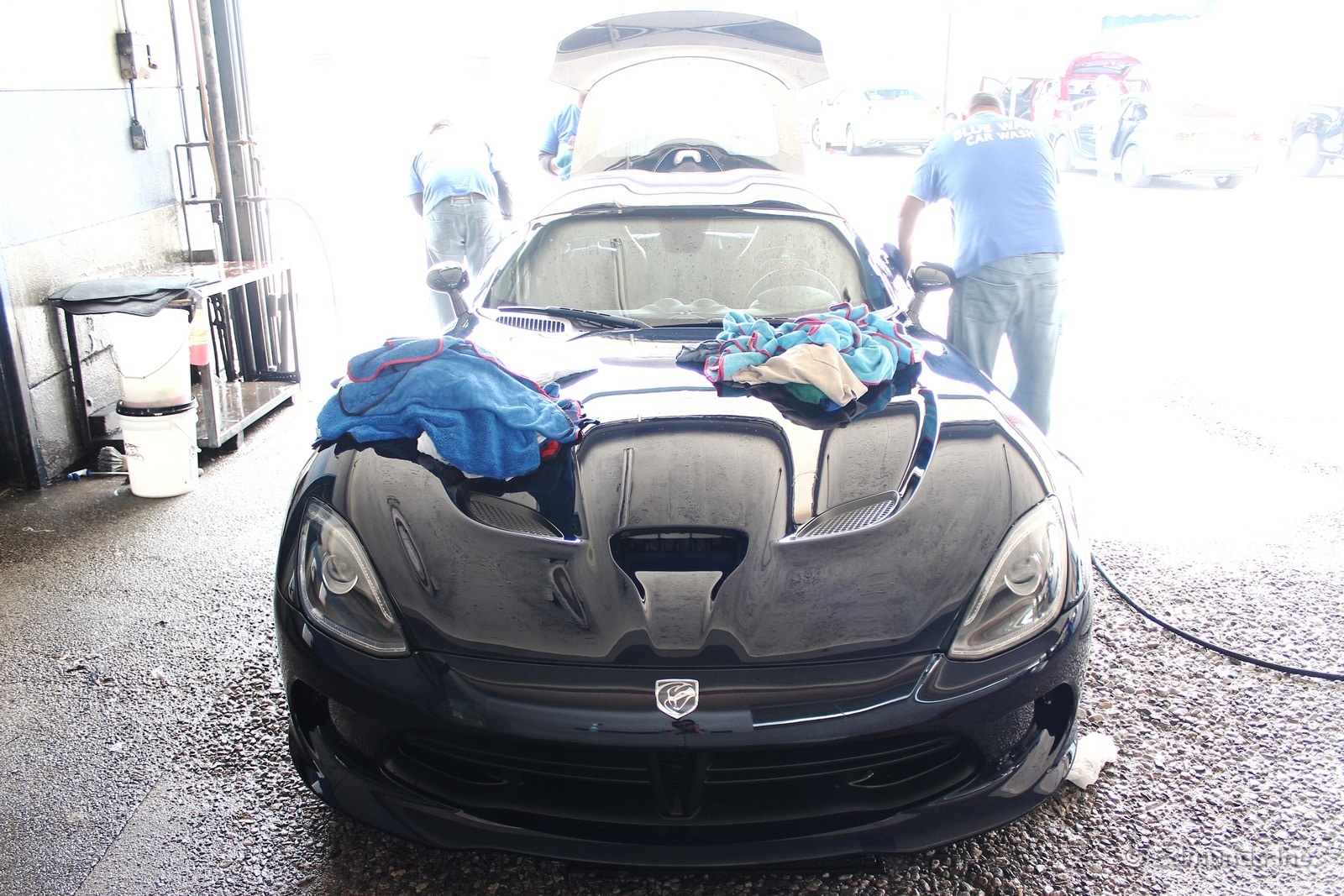
I noticed some birds had dropped trou above our 2015 Dodge Viper's hood since its last wash, so I took it in first thing in the morning for a sprucing-up. You'd like to think that all Viper drivers are similarly conscientious.
You would be wrong.
I know this because I came across the following first-generation Viper parked on the street in Venice. You really gotta see this one for yourself.
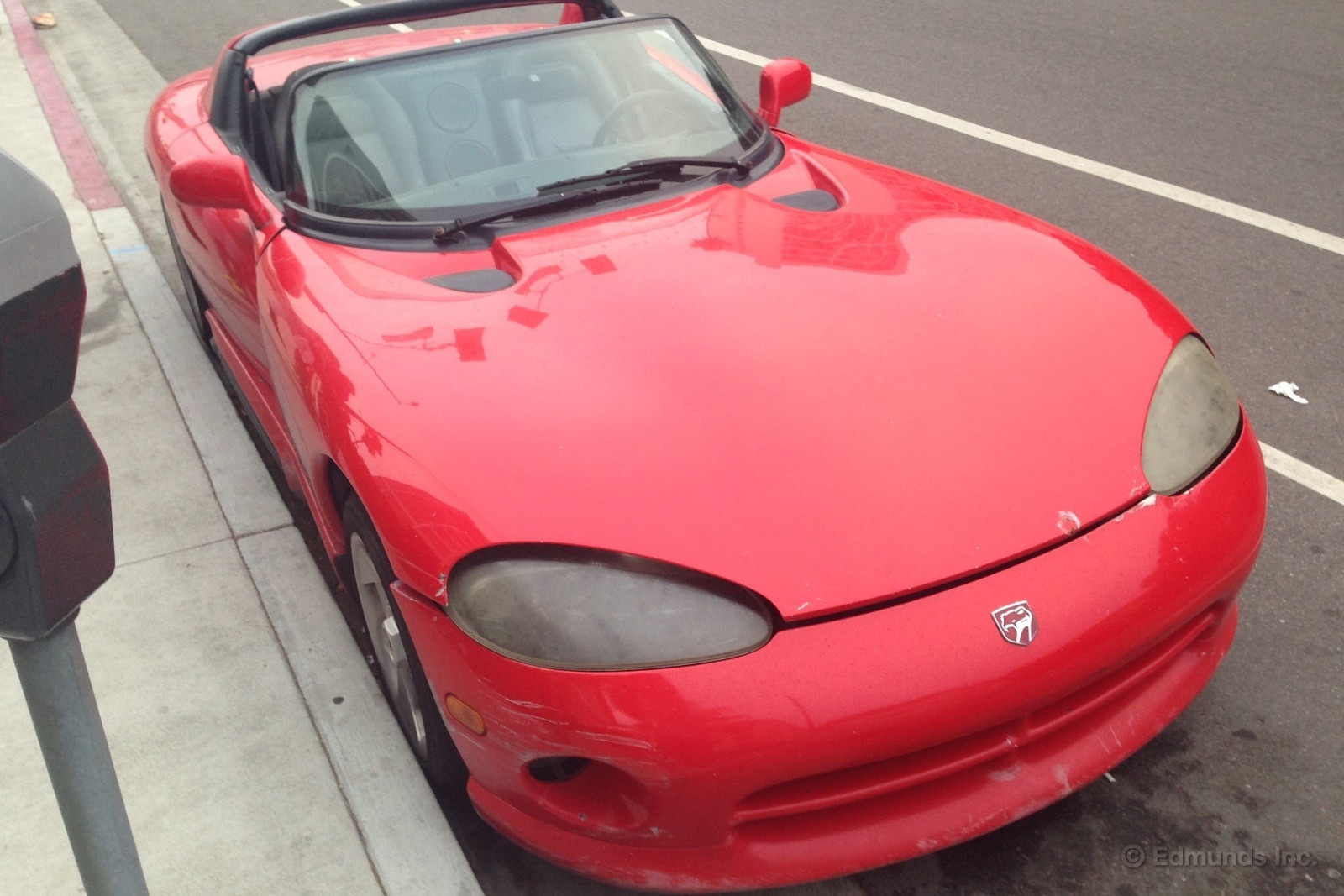
This is actually one of its best angles. Slight hood-alignment issue, but everything else should buff out.
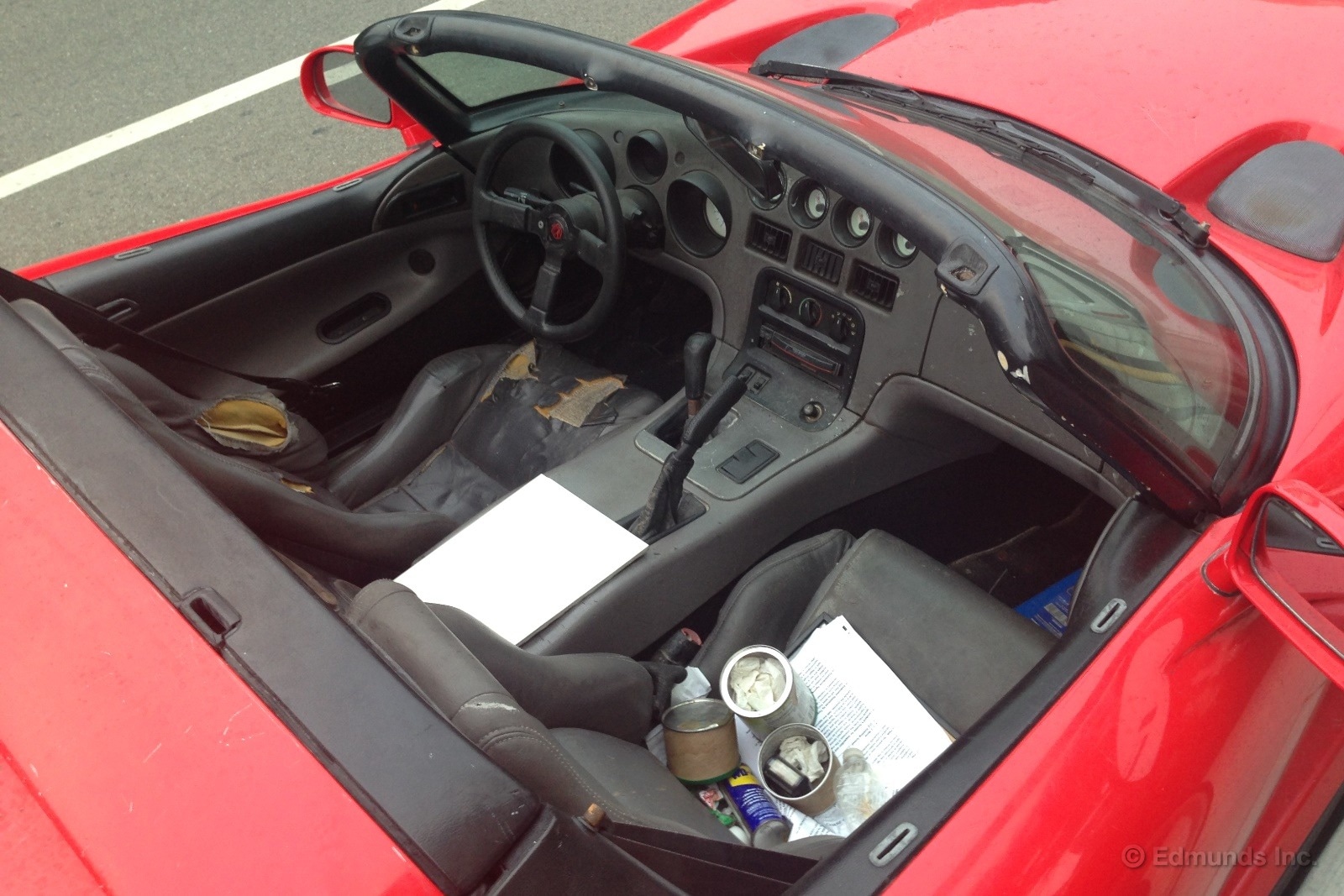
Oof. Shizz just got real. The armrest appears to be a piece of drywall. Is that a paint can full of latex gloves? On top of...a screenplay?
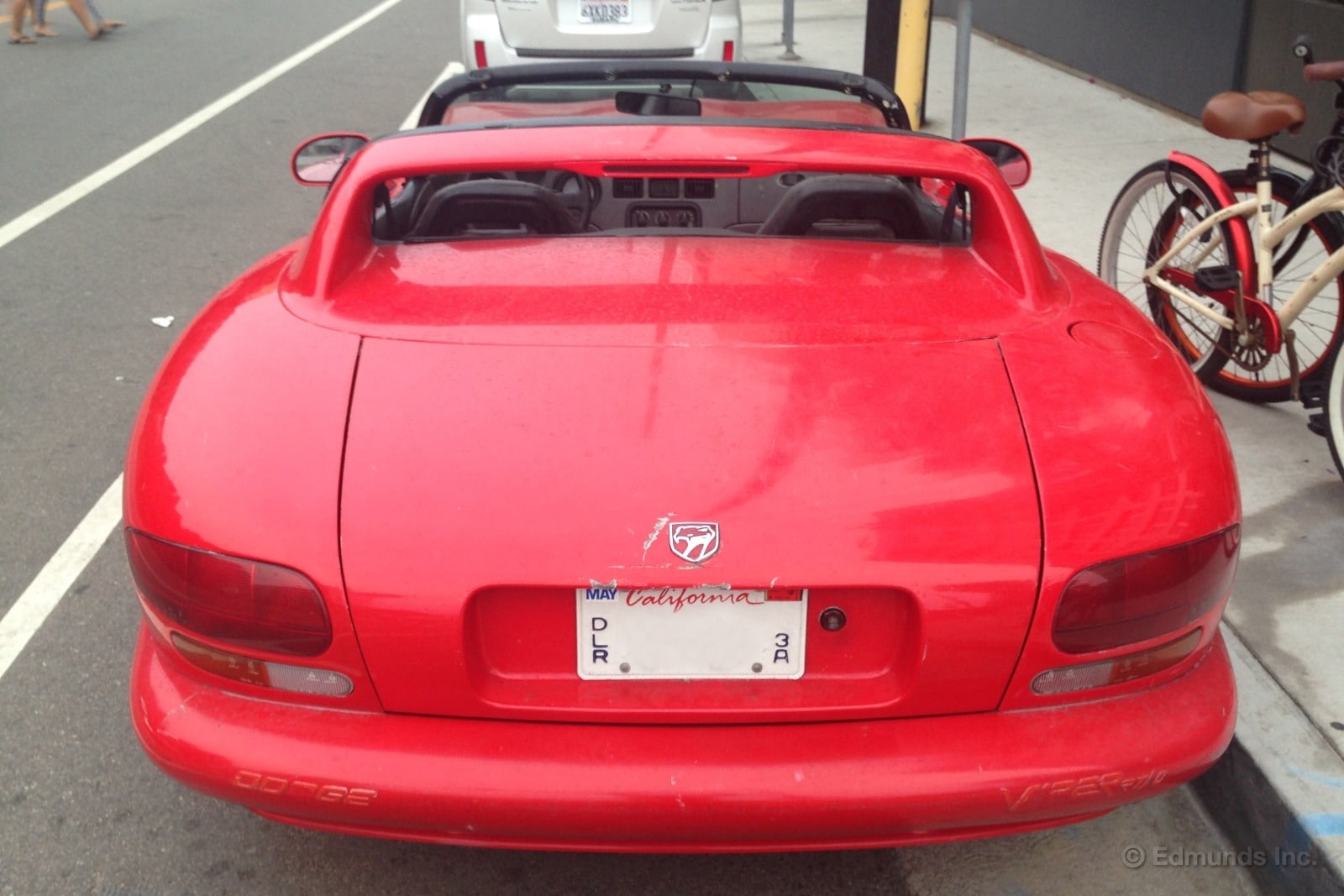
Dealer plates. This is clearly a story that needs to be told. I should have left my card.
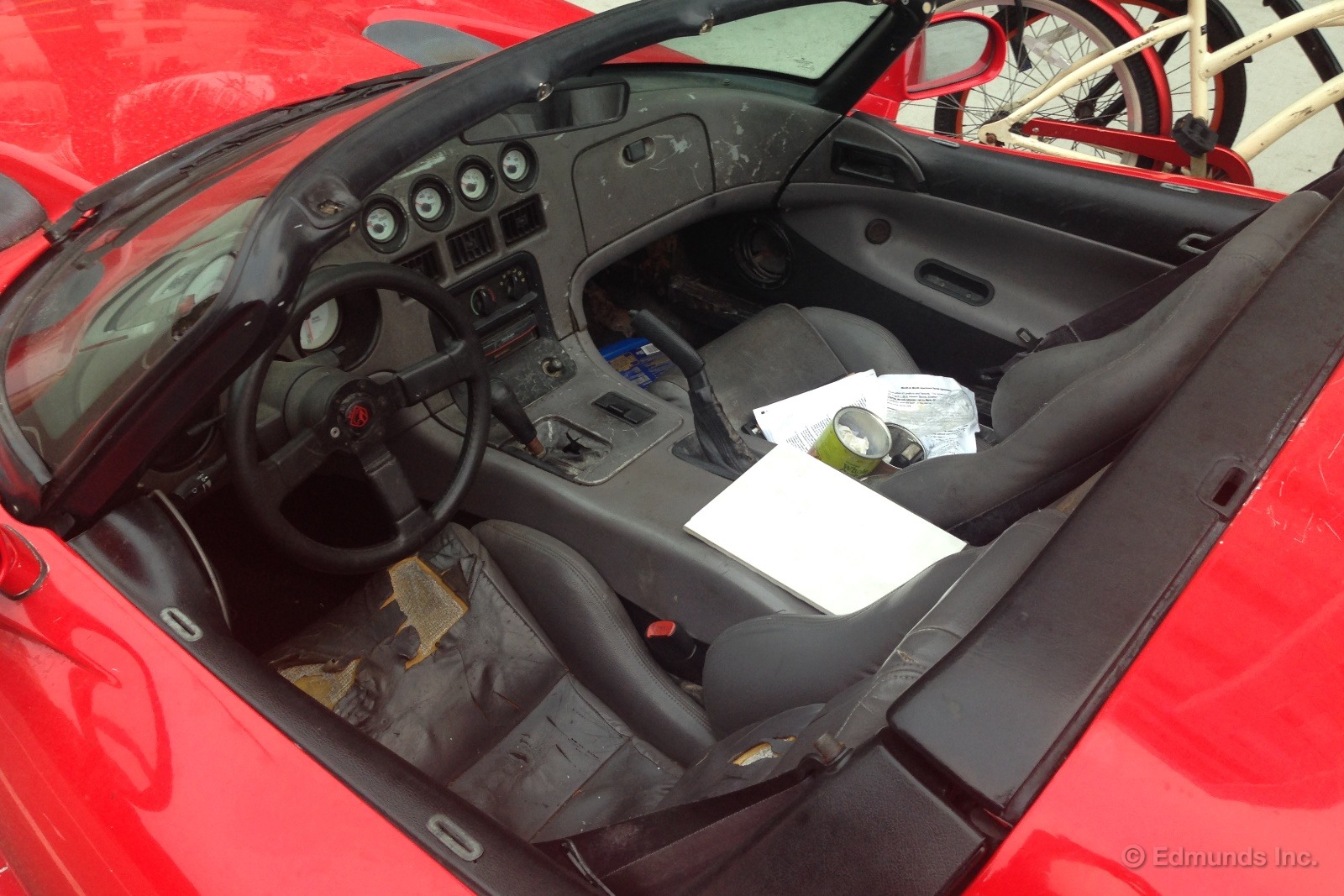
Moral of the story? Keep your Viper clean, kids. This could happen to you.
This Car Just Traveled 5,800 Miles Coast-to-Coast
Two drivers. One car. 5,800 miles. No car washes.
Our long-term 2015 Dodge Viper was recently tapped for duty in a road trip from Los Angeles to Durham, North Carolina, and back. Okay, Durham's not quite on the coast, but you get the picture. A lot of miles were covered in a compressed, but not silly, amount of time — about a week and a half in total.
Thanks in part to the not-frantic pace, along the way we gleaned many insights about the sports car, this great country and our own sanity. We'll be sharing those observations and more with you, our loyal readers, in subsequent posts here in the Long Term Updates section of the site.
We've got a few topics in mind, but we'd also like to pass the mic to you. Are there specific things you want to know regarding our trip? If so, please let us know in the comments section and we'll do our best to address them in the follow-up posts.
For now, please enjoy this gallery of our Viper at the terminus of the trip as it wears the terroir and fauna of many of this nation's states. We intentionally didn't wash the car at any point during the trip, though it did receive a few deluges from the sky along the way. Road trip grime is a badge of honor.
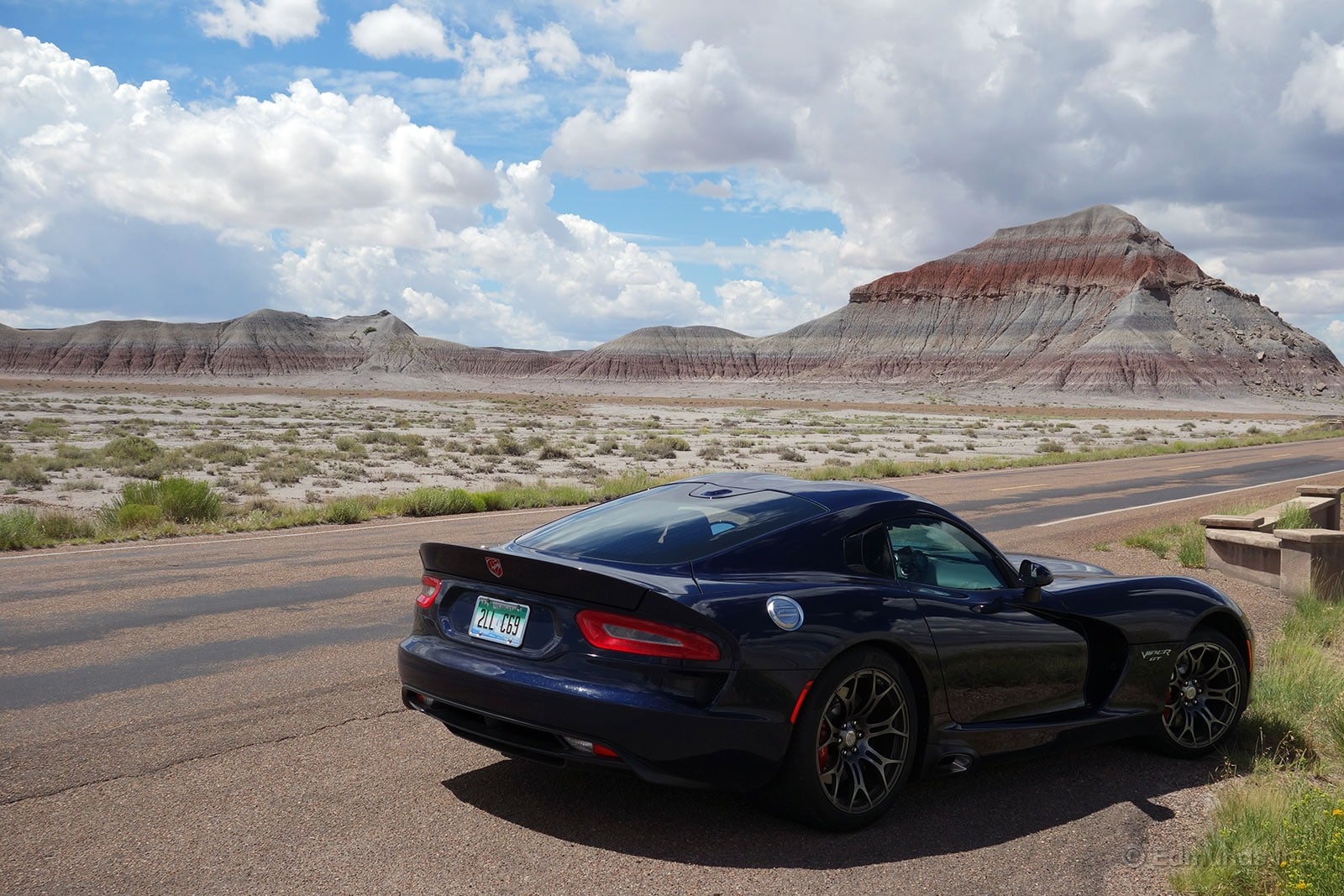
Driving a 2015 Dodge Viper across the country is a bad idea. But a funny thing happens with bad ideas: They get appealing. How else do you explain skydiving or Las Vegas? This phenomenon is also, largely, the foundation on which YouTube exists. Well, it and cat videos.
When Dodge invited us out to North Carolina to drive the Viper ACR, the fastest and wildest track-ready Viper yet, we decided to drive there — from Los Angeles — in our long-term Viper. How can you resist driving the last naturally-aspirated American supercar across its home field? I gave myself five days and set a loose course along Interstate 40.

You spend day one acclimating to the Viper's interior. Remember the saying about trying to fit a square peg through a circular hole? If the hammer's big enough, you can do it. I make way towards Arizona being pressed into the form required by the offset pedals and aggressive seats. The engine drone and road and tire noise muffle the stereo and Bluetooth phone calls. I use it as an excuse to practice meditation.
Despite the discomfort, loudness, and tight visibility, the Viper takes well to freeway cruising thanks to accurate steering and a tall sixth gear. I feel out a comfortable range of around 250 miles per tank, which coincides with my distance-to-get-out-and-stretch goal.
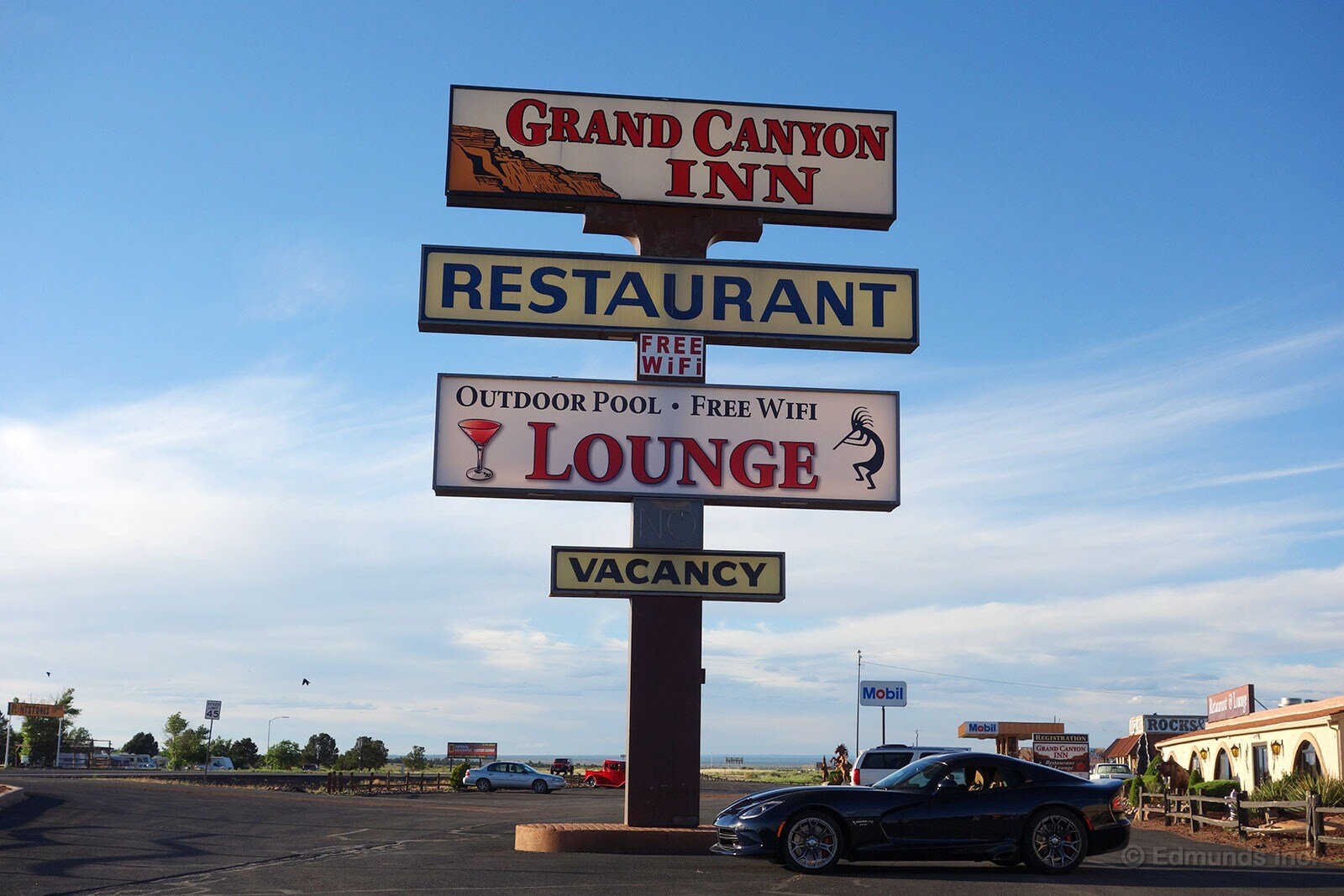
I turn off I-40 before Flagstaff and head north to the Grand Canyon. What better time to see an immense and powerful American icon than while driving one? Pictures do neither justice. The Grand Canyon's vastness is of a magnitude that makes it seem fake. I walk around taking the same picture over and over again, trying to capture the size of the expanse.


The Viper sits in the parking lot enjoying the view of rental cars. I feel bad for it, so I tape the Grand Canyon fact sheet to its dash in an attempt to make it feel better.

The tape falls off. Undeterred, I poke around to see the Viper can get a better view. After a little searching, I find the spot.
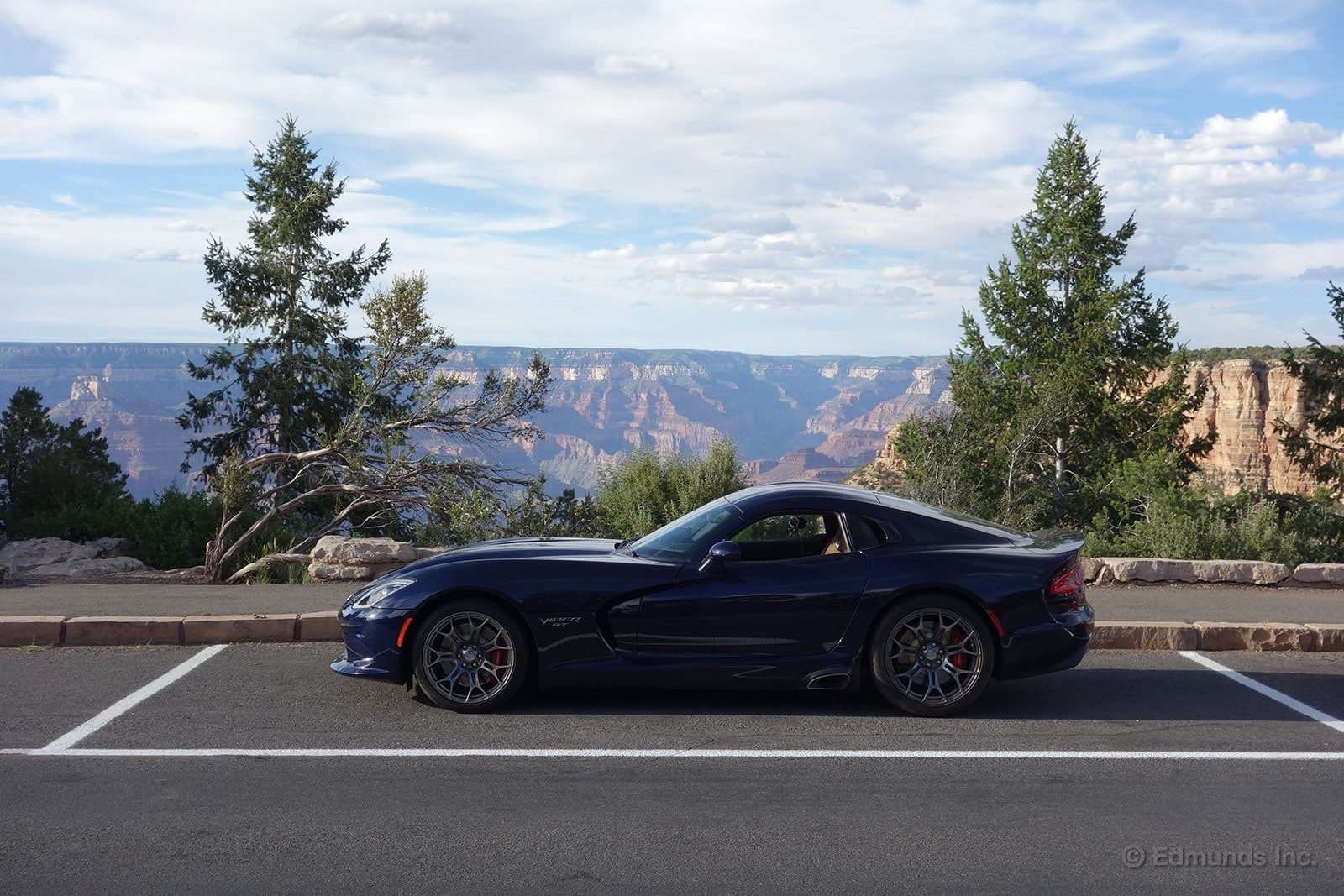
It looks perfect.
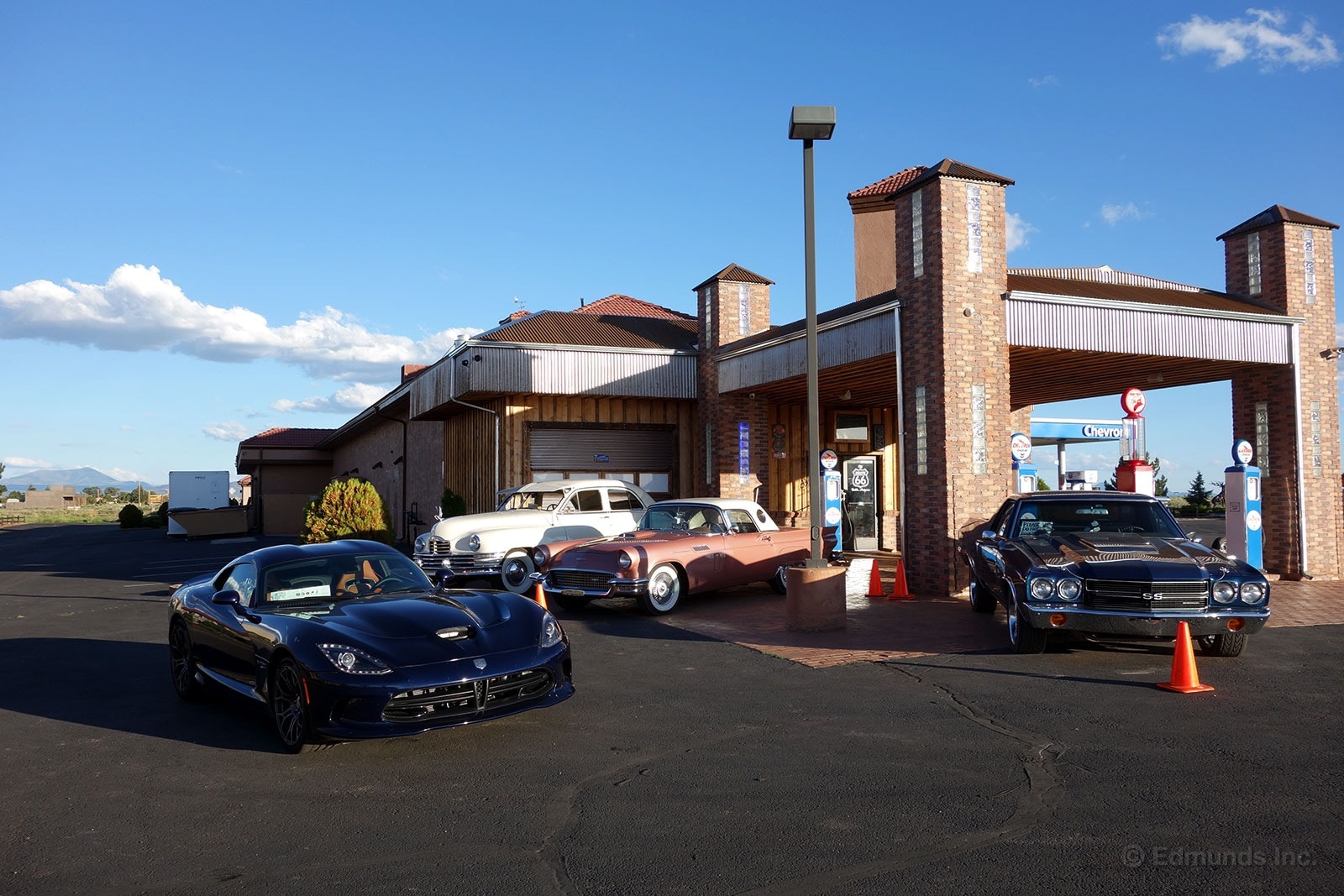
The next morning, I wake up with a plan and set off to the nearest auto parts store. While struggling to hear each other over the phone the day before, I needed to make the Viper's interior more livable.
Some neon green painter's tape on the top of the driver's window makes a better seal, while affixing microfiber towels on the armrests should provide a bit more comfort for my elbows. A few store employees look quizzically as I make the neon-green exterior additions. I eagerly reach freeway speeds and find the tape drops wind noise to tolerable levels. The towels add a bit of crucial padding to my elbows. Success!
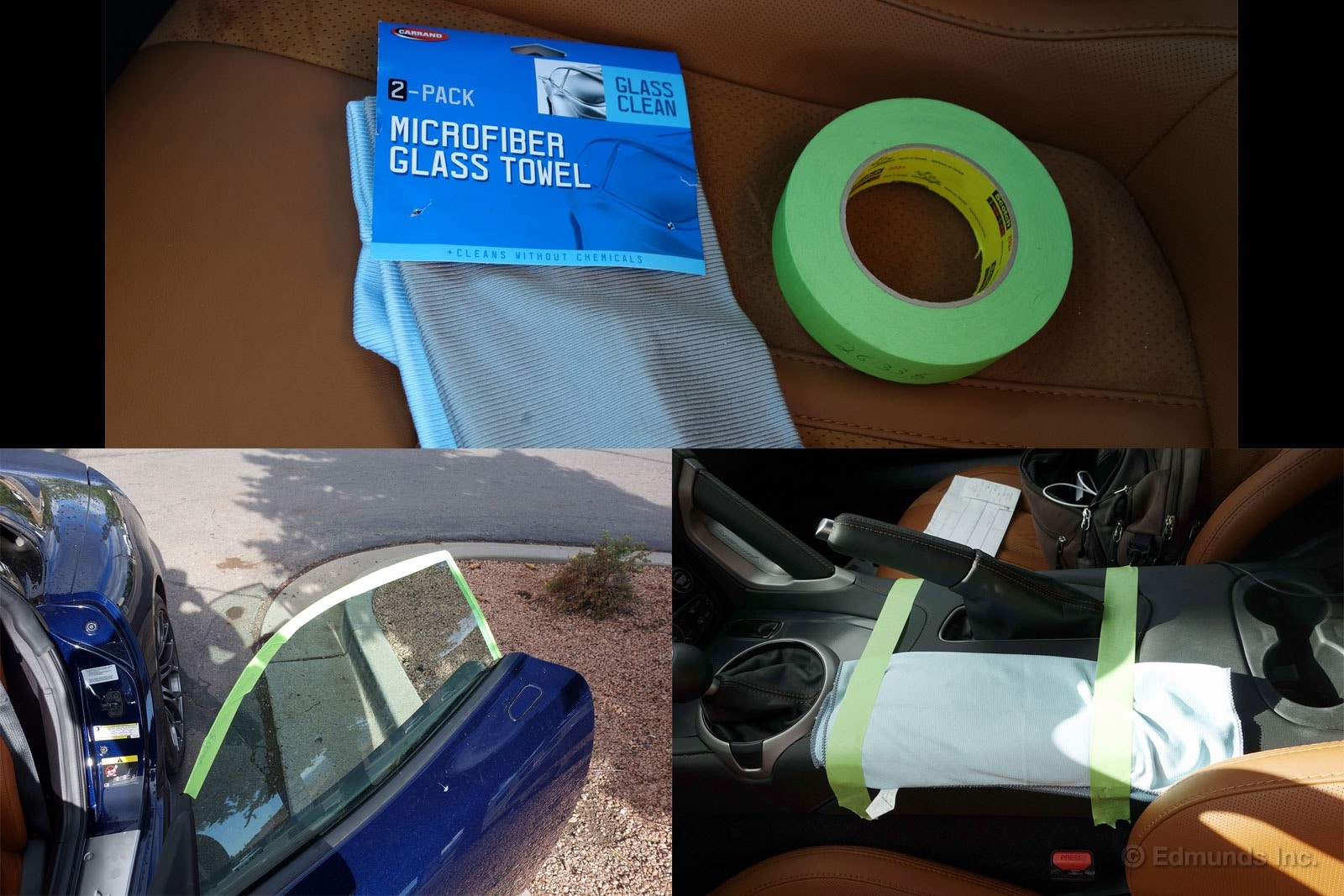
I chose I-40 because it parallels much of Route 66, and through Arizona and New Mexico every few dozen miles you see road signs beckoning you off the highway. The Meteor Crater lies not far out of Flagstaff, and like the Grand Canyon, it's another large hole in the earth. But this one's created by a haphazard, 150-foot diameter chunk of space rock. Standing over it, you can only wonder the vision of hell that happened when it hit.
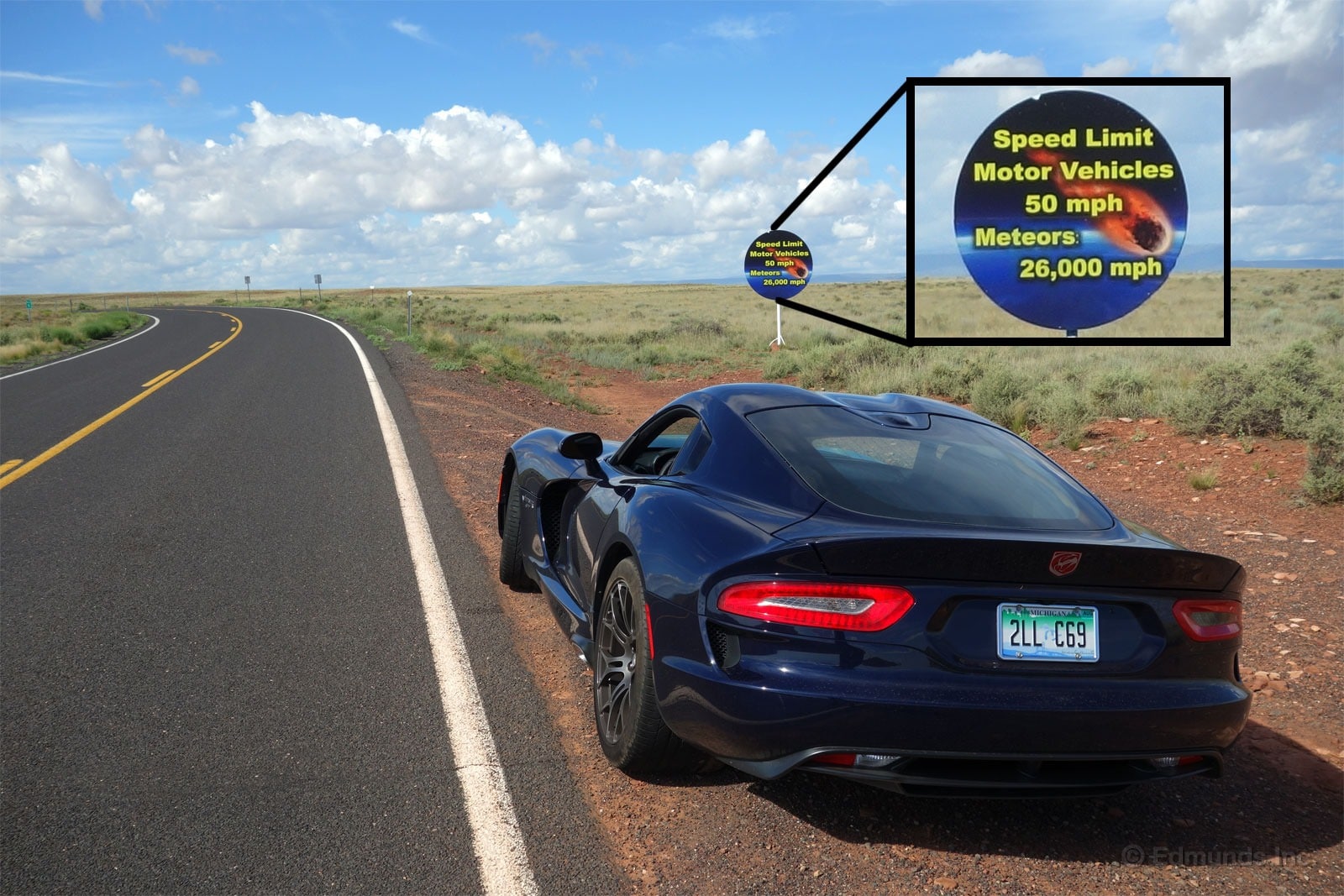
Again, the Viper's left out from sightseeing. I take it for a picture with one of the many road signs leading to the crater and hope it doesn't feel too bad.

Arizona and New Mexico are vast places with gorgeous plains and unobstructed skyscapes. As I-40 dances around the edges of a dark thunderstorm, you can appreciate the awesome scope of the clouds as they stretch across the windshield and into the side mirrors. Lightning hits occasionally in the distance.

Outside of Albuquerque, there's a stretch of Route 66 that's been grooved so that when you drive over it at 45 mph, it plays "America the Beautiful."
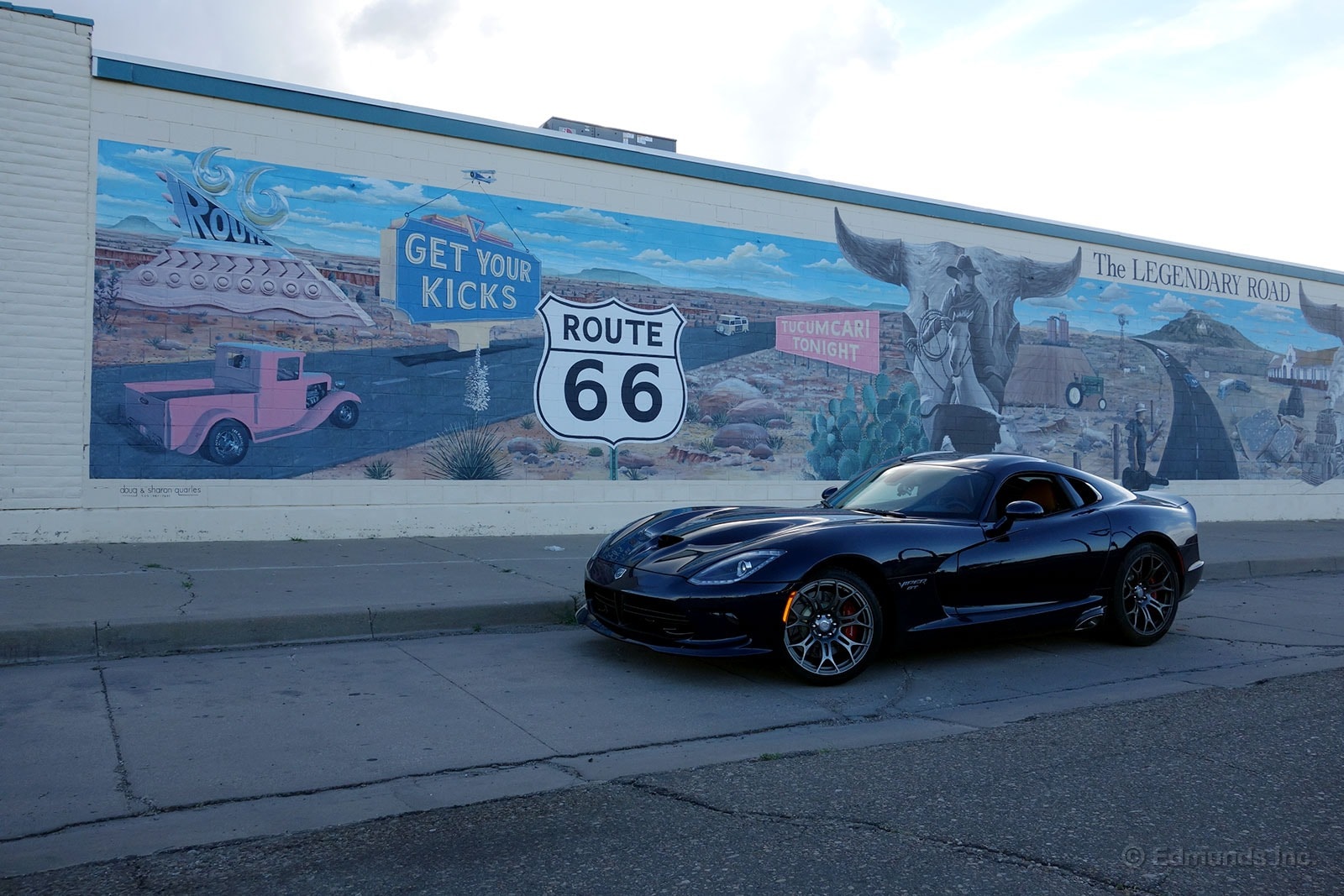
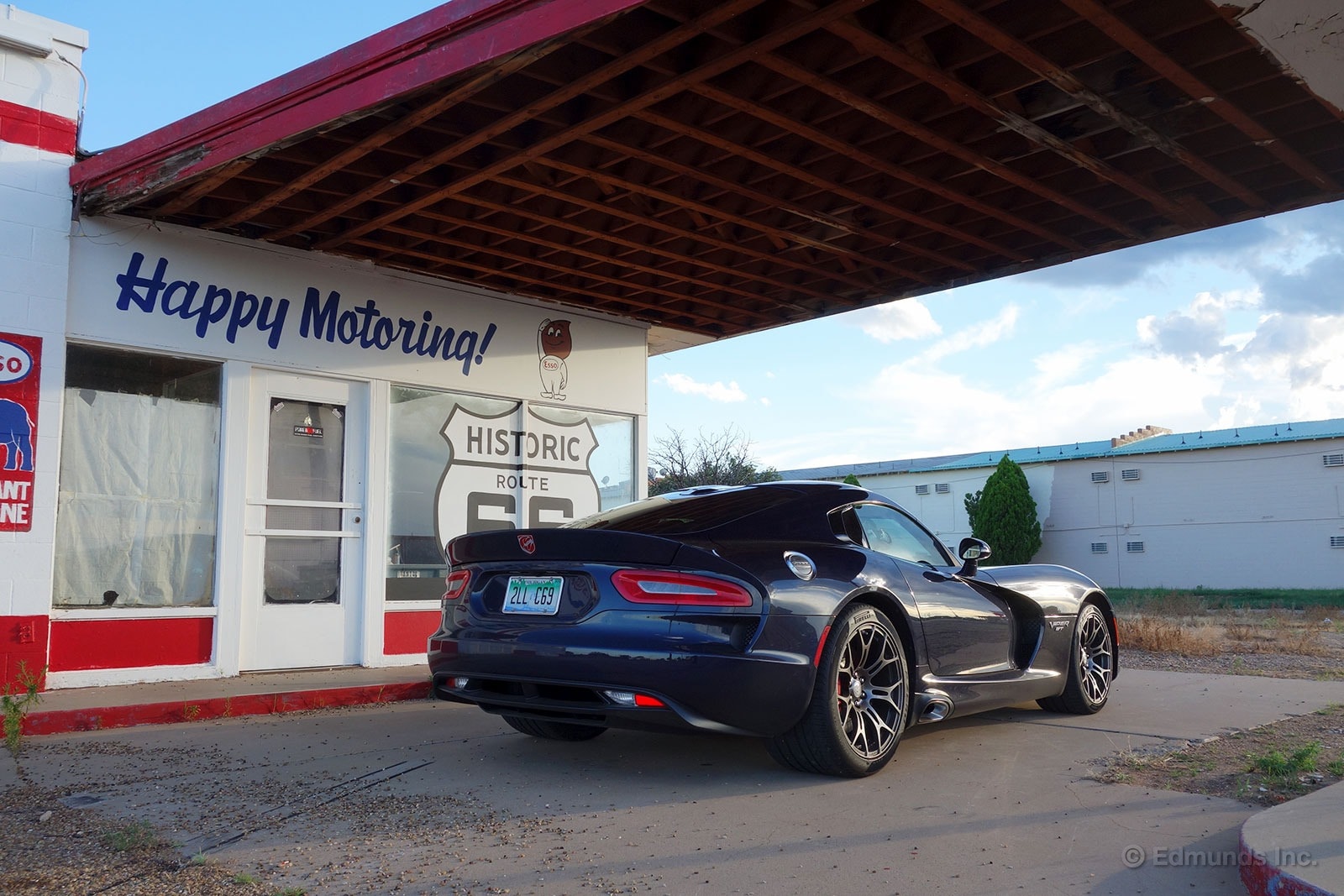
Route 66 runs through Tucumcari, New Mexico. Gas stations, restaurants, and motels line the boulevard, but most seem abandoned. A stream of tourists like myself come and take pictures of the buildings. Then we head back to the big-name chain hotels, gas stations, and fast food closer to the I-40 exit for the city.
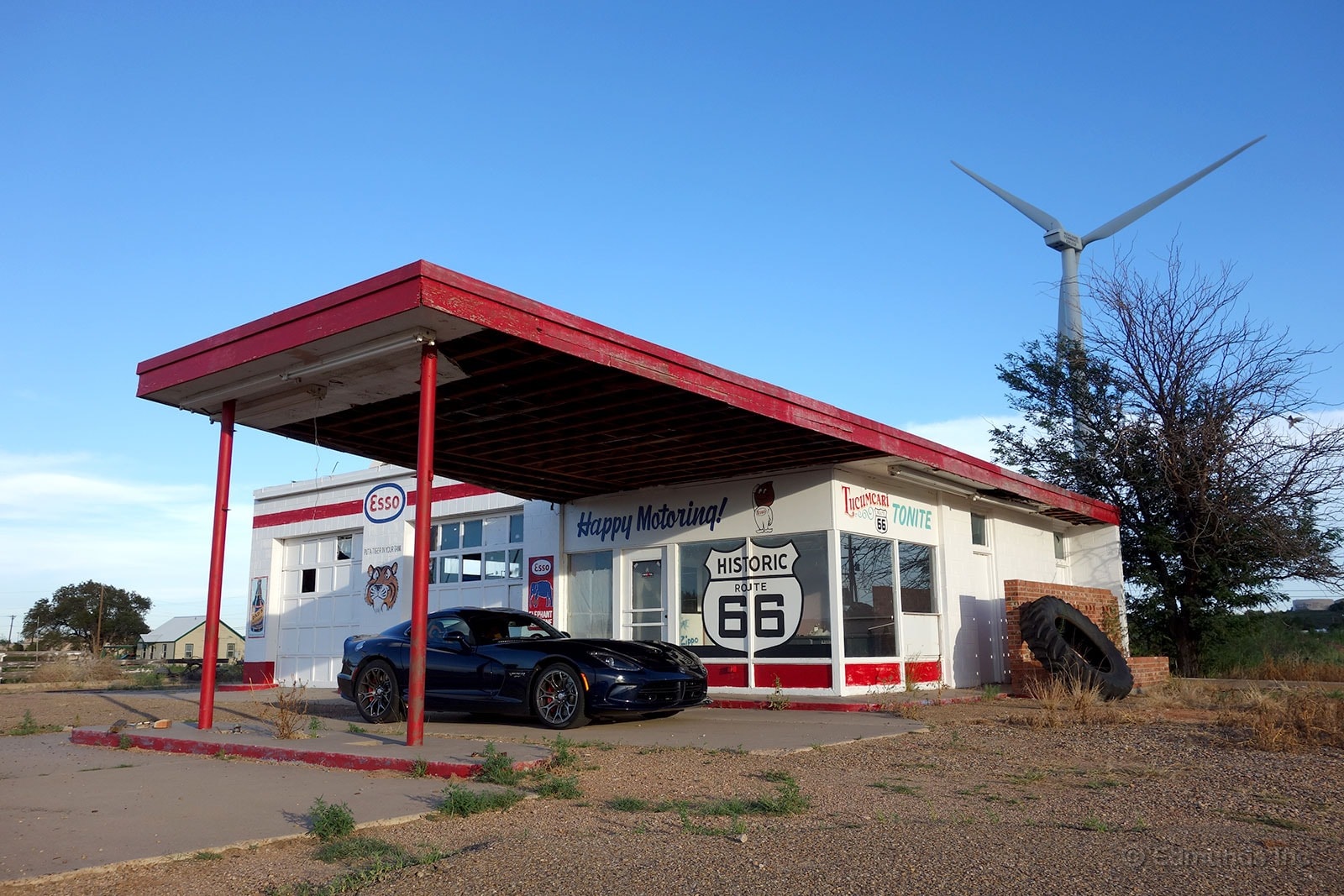

Viper fatigue levels out on day three. It's a bit like sitting in a plane in that you learn to cope. The Viper also breeds confidence with familiarity. Once you acclimate, you can drive the Viper longer and feel more comfortable with it. I start trying to stretch the gas tank further and further.

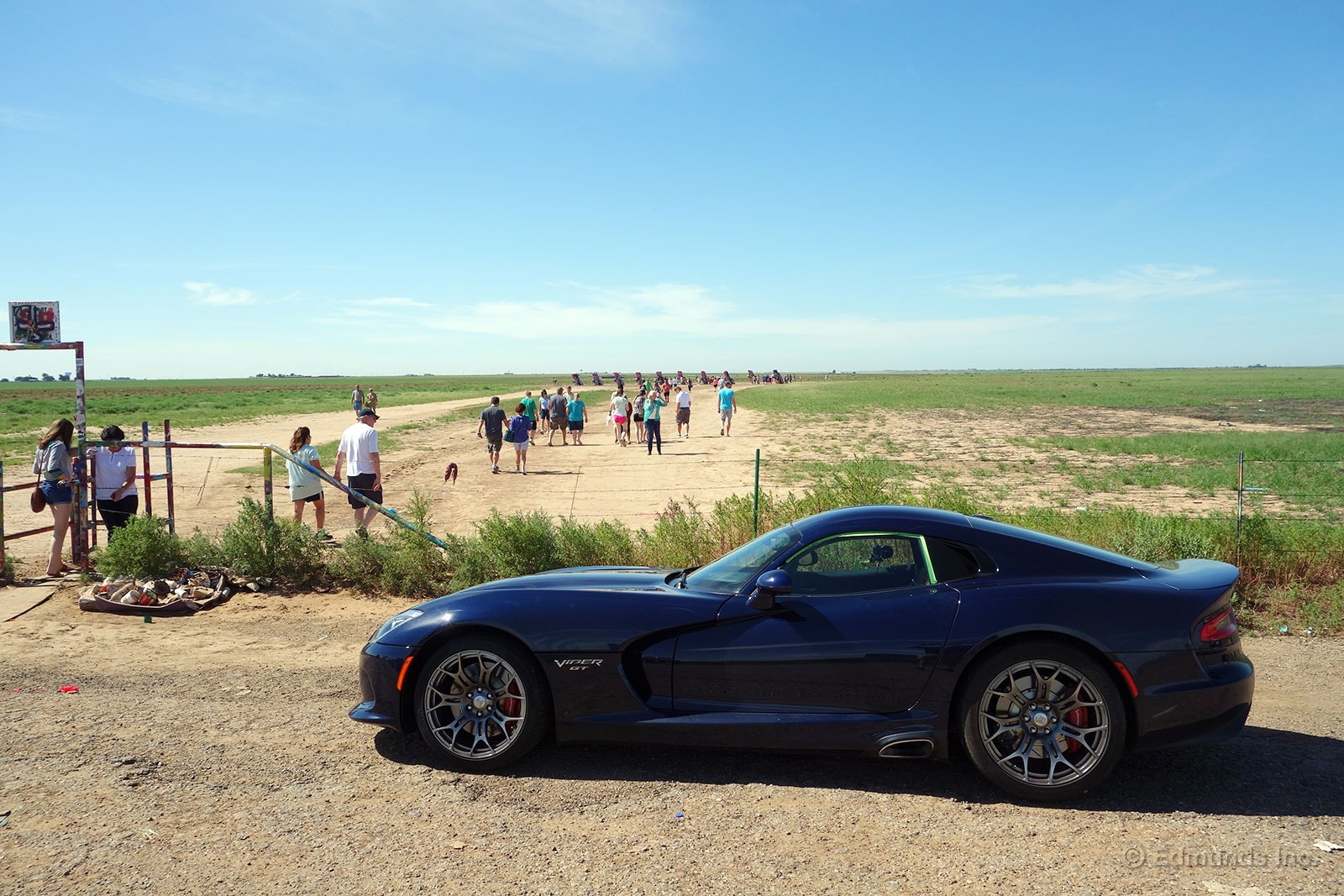

If Arizona and New Mexico are about big holes in the earth, northern Texas is about putting old cars in holes and spray painting them. On the west side of Amarillo is the famous Cadillac Ranch. On the east side is the VW Slug Bug Ranch. They share a similar idea: Take a few cars, stick them in the ground, and spray paint them.
The Cadillac Ranch sits on a large empty field and is swarmed by travelers. Empty spray cans and trash cover the ground. It photographs well, but smells awful. The Bug Ranch is empty, sitting off the side of I-40 next to a dilapidated service station.
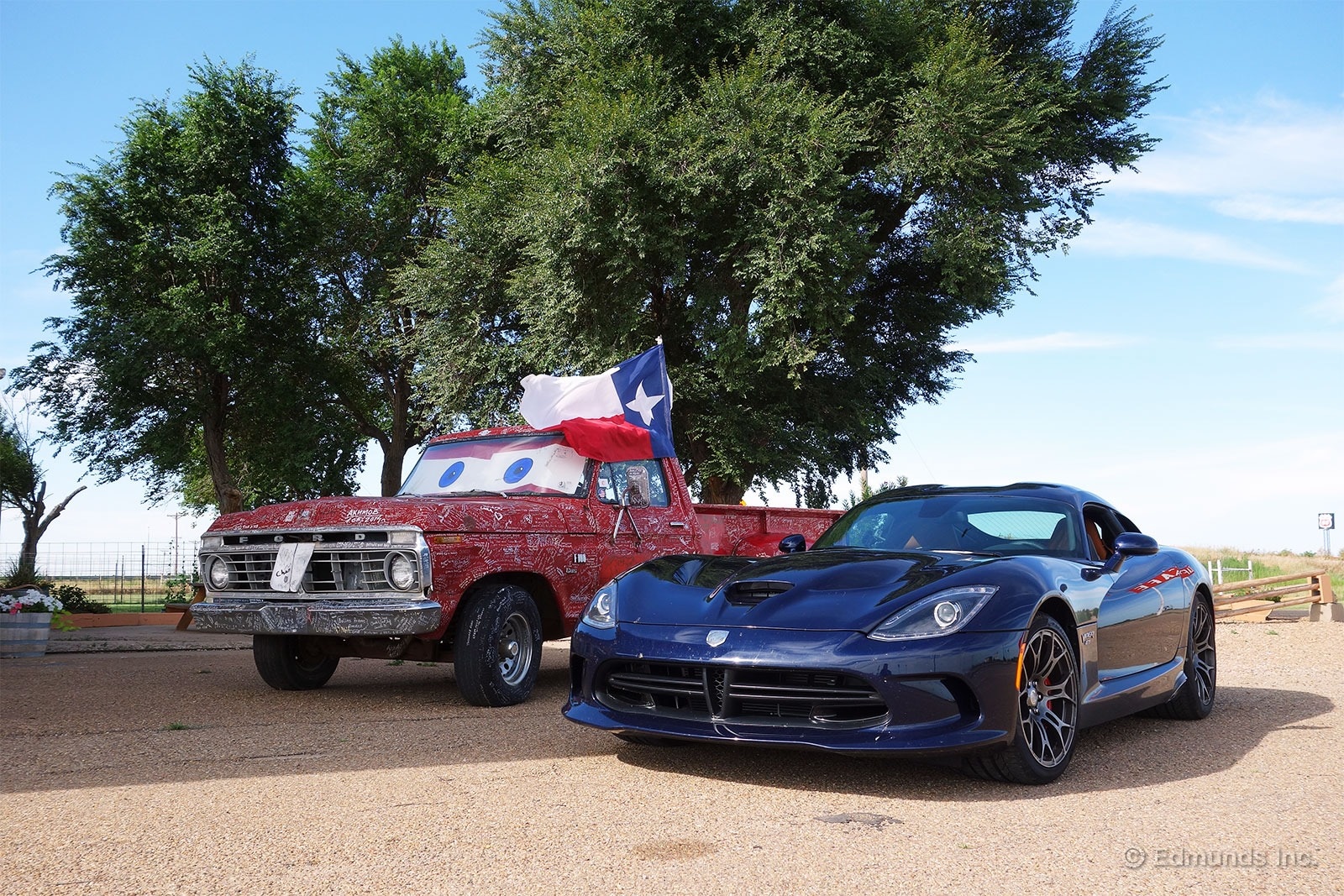
I make way into Oklahoma and stop at Okemah, the home of Woody Guthrie. The folk musician wrote "This Land is Our Land" and inspired countless other musicians. But I always remembered him for the slogan on his guitars: "This machine kills fascists." His home is now an empty lot, save for a tree that someone's carved in his honor.

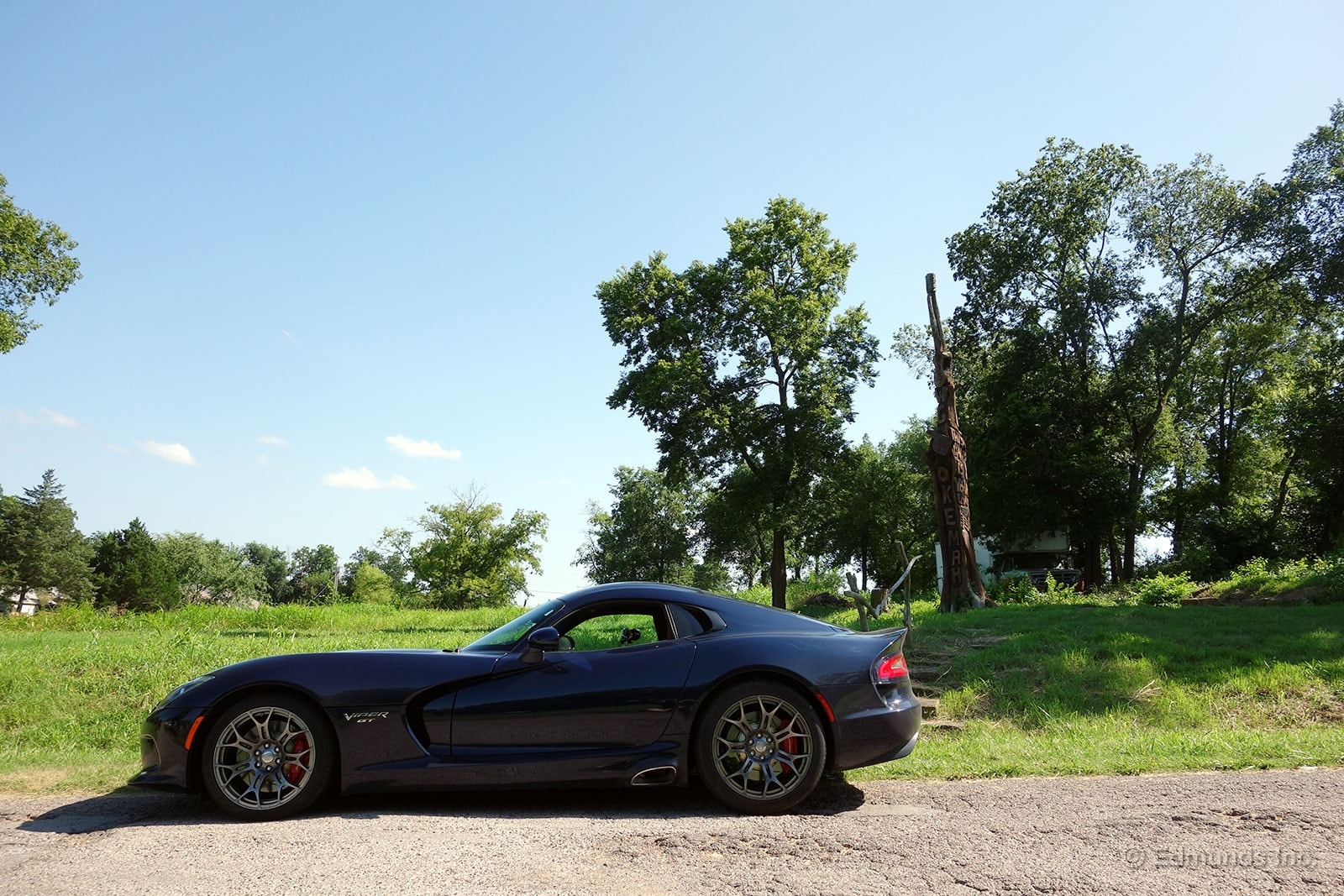
Notes on Arkansas, the 25th state of this great nation:
- Travelers entering from Texas are greeted with a friendly sign: "Speed limit strictly enforced. Zero tolerance."
- I pull off the freeway for the hotel and see a lifted truck sporting a Confederate flag.
- I go out for dinner and order a beer. The waitress shrugs and says, "Sorry, dry county." These still exist? I Google the county line. Suddenly, NASCAR's beginnings make sense.
I don't spend much time in Arkansas.

Going east the scenery changes from open colored mesas to highways walled with trees. The temperature stays hot, but goes from a dry heat to a wet one. The Carl's Jr.'s change name to Hardee's. The Viper soldiers on without issue.
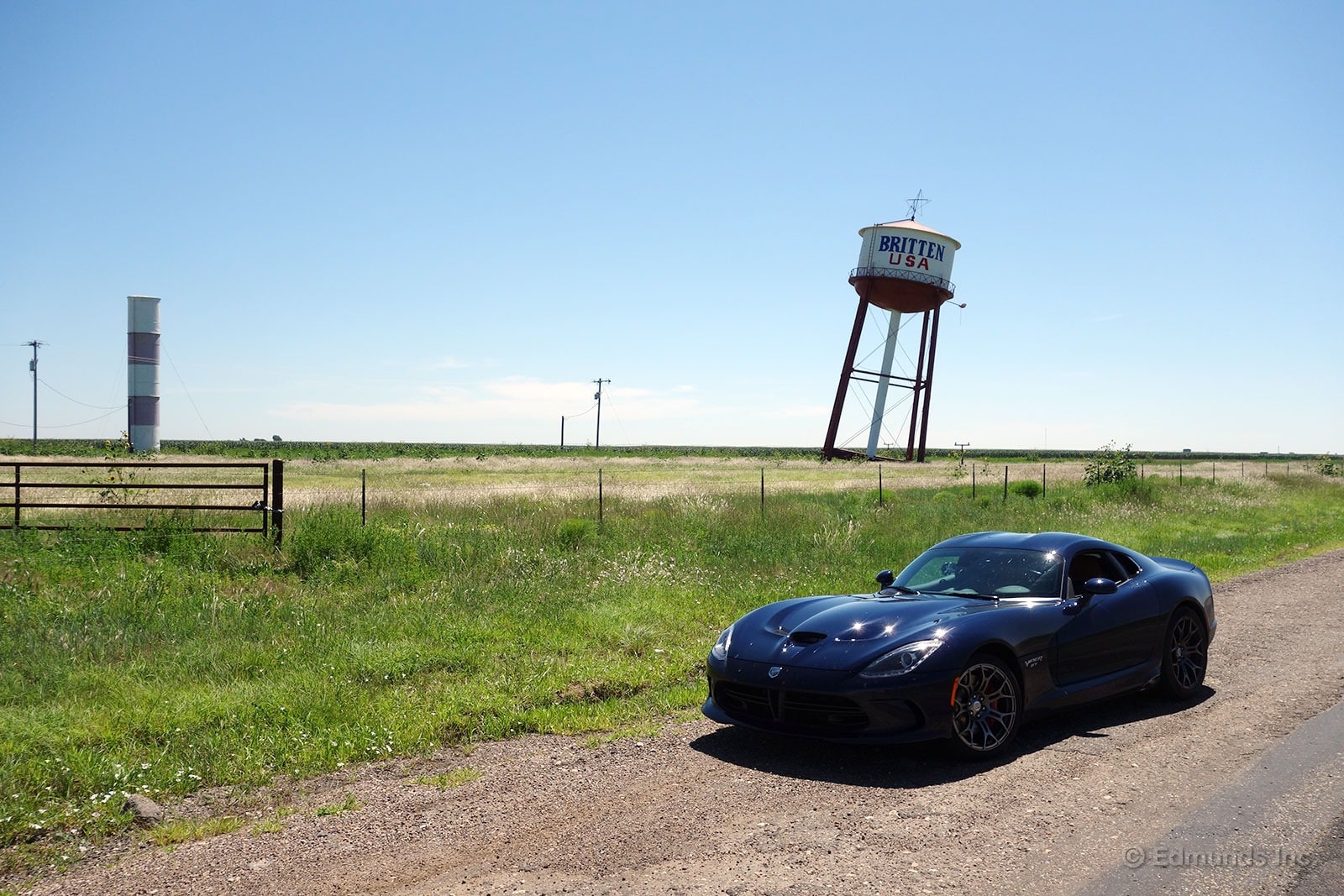
I want to get to Nashville with some daylight in my pocket, which means blowing through Memphis. I hear there's a burger joint there that's been using the same grease for a century. My mouth regrets not stopping; my digestive system feels pretty good about it.

I pull into Nashville and cruise down Broadway. It may be a Monday night, but there's plenty of foot traffic and you can hear country rock played live from every bar you walk past. There's a statue of Chet Akins playing a Gretsch a couple blocks north of the main strip. A family is sitting around the statue eating ice cream. I decide against asking them to move for a photo.

Also, there's another Viper in Nashville tonight, but we'll come back to it later.
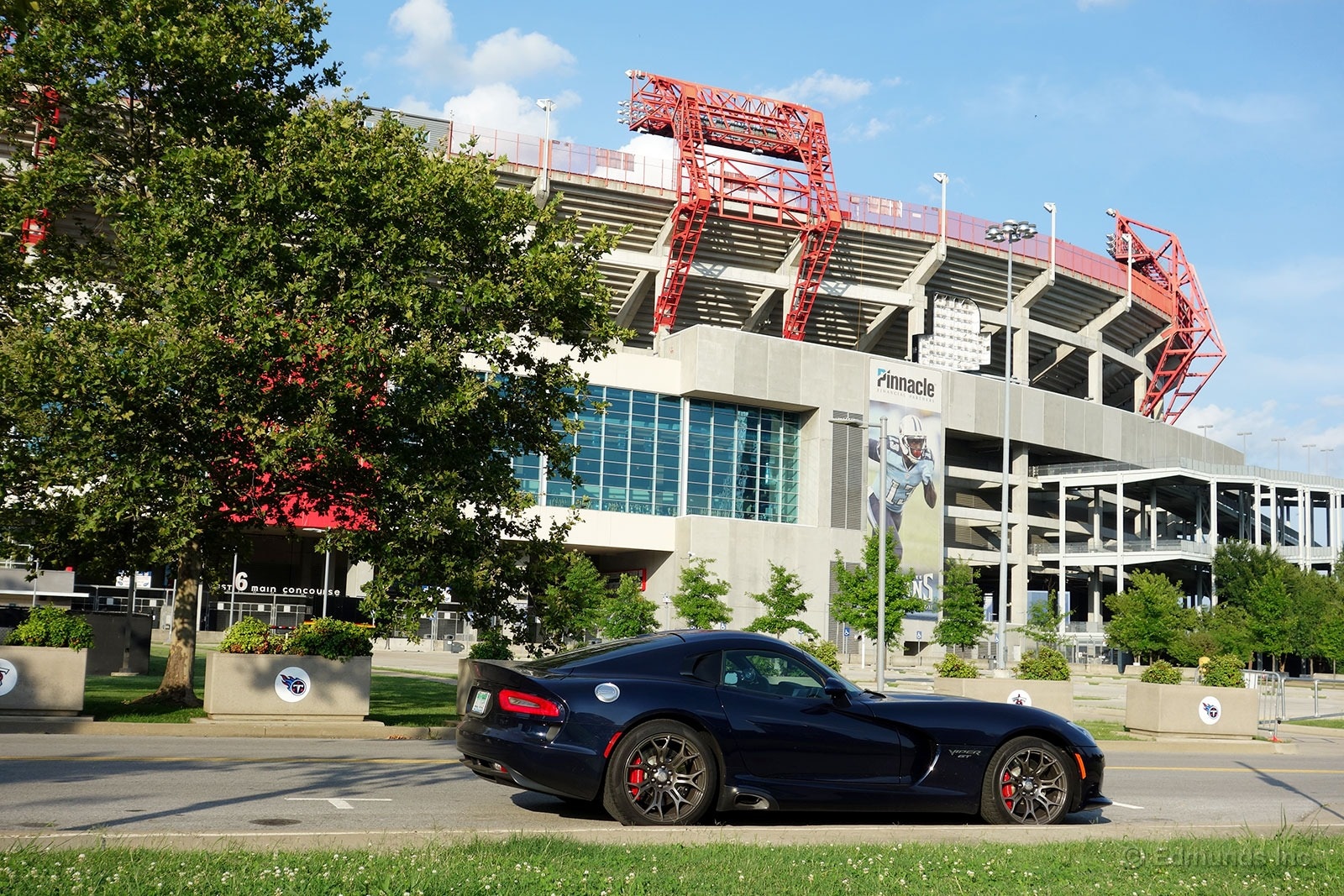
I'd been lucky with weather the entire journey, but the rain finally comes down as I get into North Carolina. It puts a damper on the day's plans, so I skip the famous Tail of the Dragon road at Deals Gap, and head straight for Durham.
It's easy going, with minimal traffic. I'm confident with Viper car now, happy to rev it out on every on-ramp to keep a good speed through the rain. The interstate again dances around the worst bits of the storm, which I watch through the Viper's on board weather display.
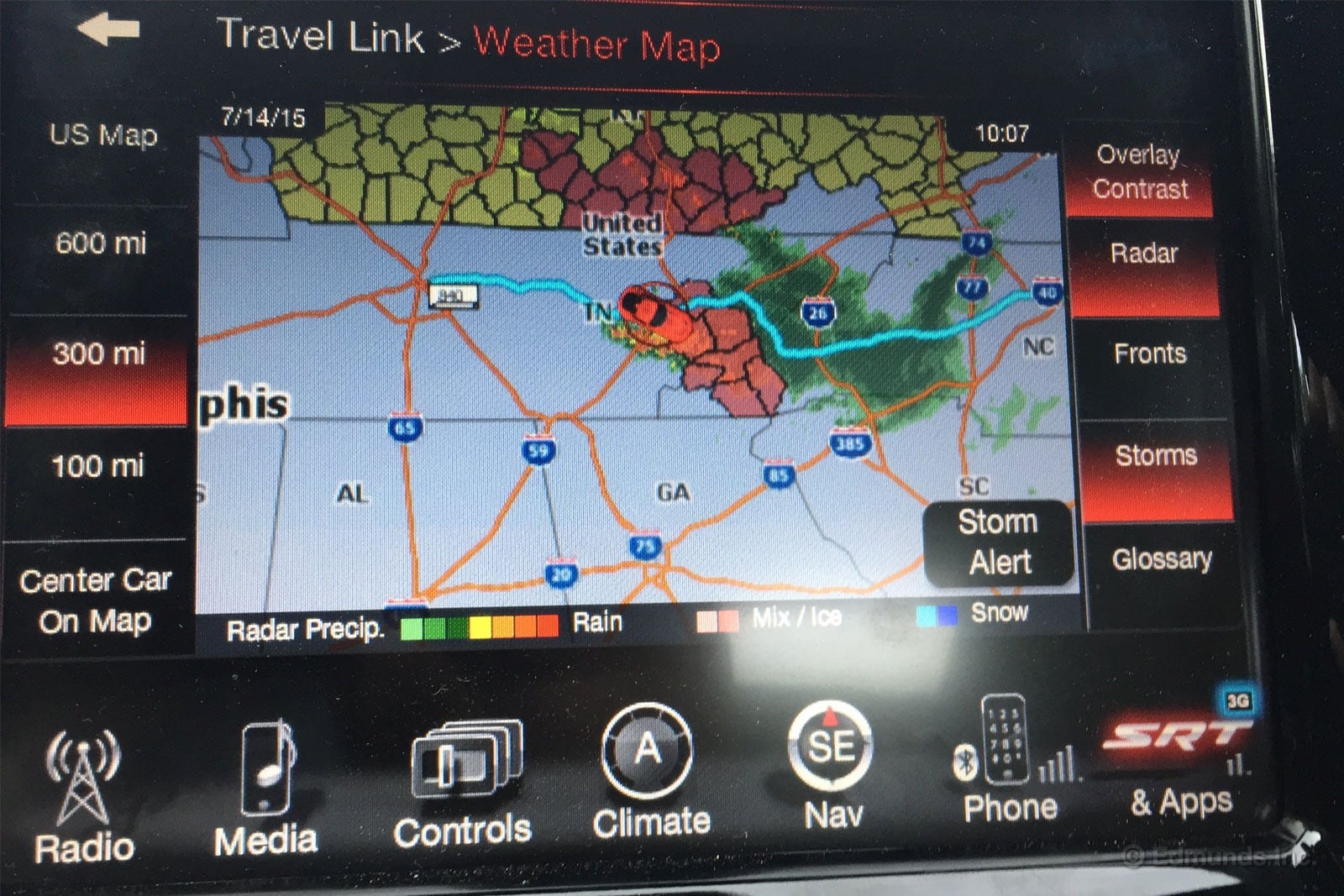
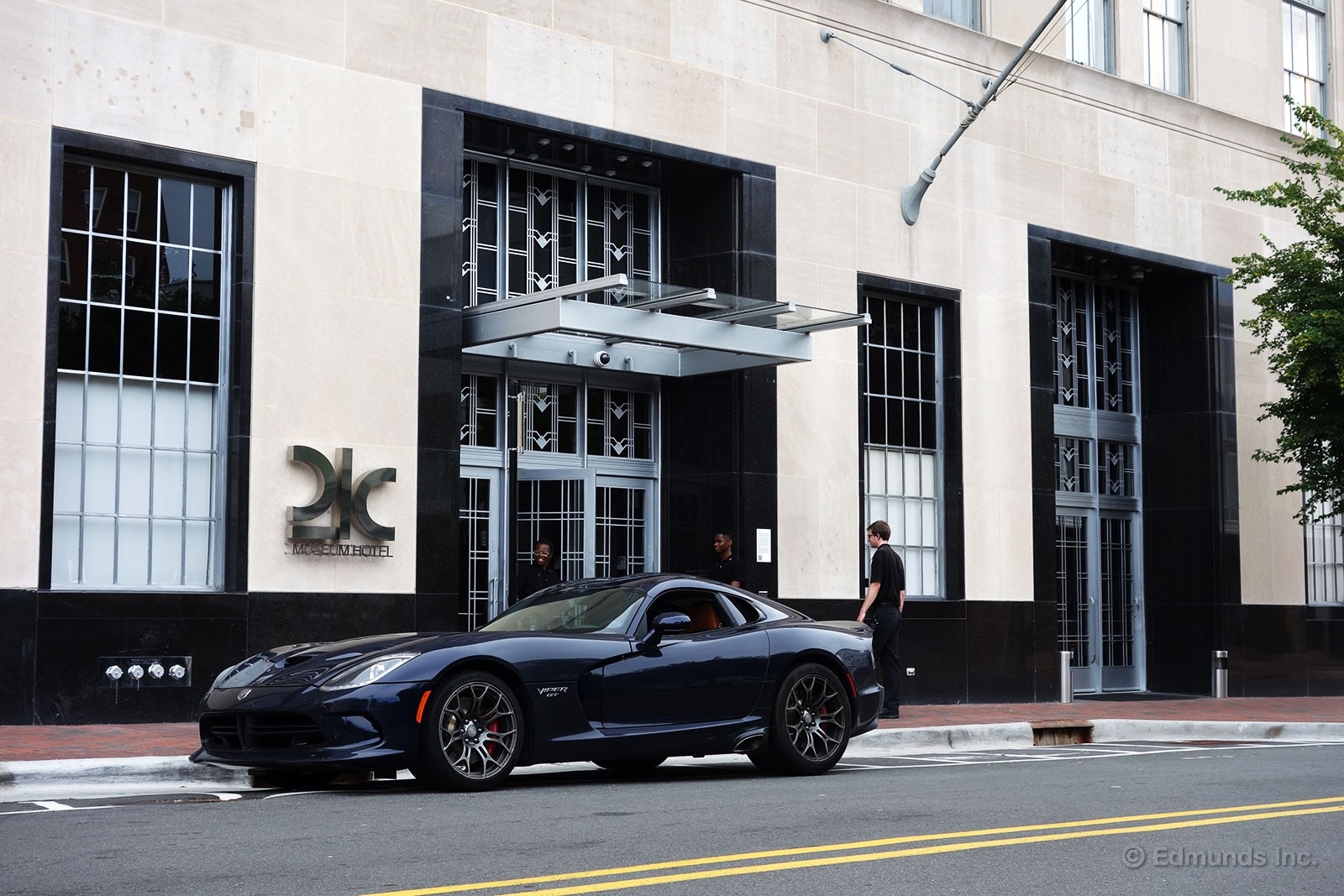
The drive ends with quietly in Durham. There's no banner, no parade, and no fireworks. There are a few impressed Dodge representatives present for the ACR event. And there's Jay Kavanagh, who's flown out to drive the car back to Los Angeles. I give him the key and some advice, and he takes off. Despite the lack of fanfare, it feels like a legendary accomplishment - and maybe a good idea after all.

Photo by Ryan Frankenfield
The odds of two Vipers, each on cross-country road trips, ending up in Nashville on the same night can't be good. But that's exactly what happened on a Monday in July. I was cruising down Music City's main drag with our long-term 2015 Dodge Viper, feeling like a hot shot on day four of my coast-to-coast drive. You don't see many Vipers on the road, so I clearly would have the only one in town. And then I spotted something orange over the fender bulge. I was wrong.
Through the ever-expanding reach of Instagram, I got in touch with its owner, Ryan Frankenfield. He was driving his recently-purchased 2014 Viper TA back home to Florida from Idaho. Though he had already left town when we got in touch, I was eager to hear the details of his trip. In the image above, I took the photo on the left and Ryan shot the one on the right.
"I watched that Viper TV show as a kid," Ryan said, and he's loved the car ever since. "I never thought I'd have the opportunity to own one."
The TA is his third.
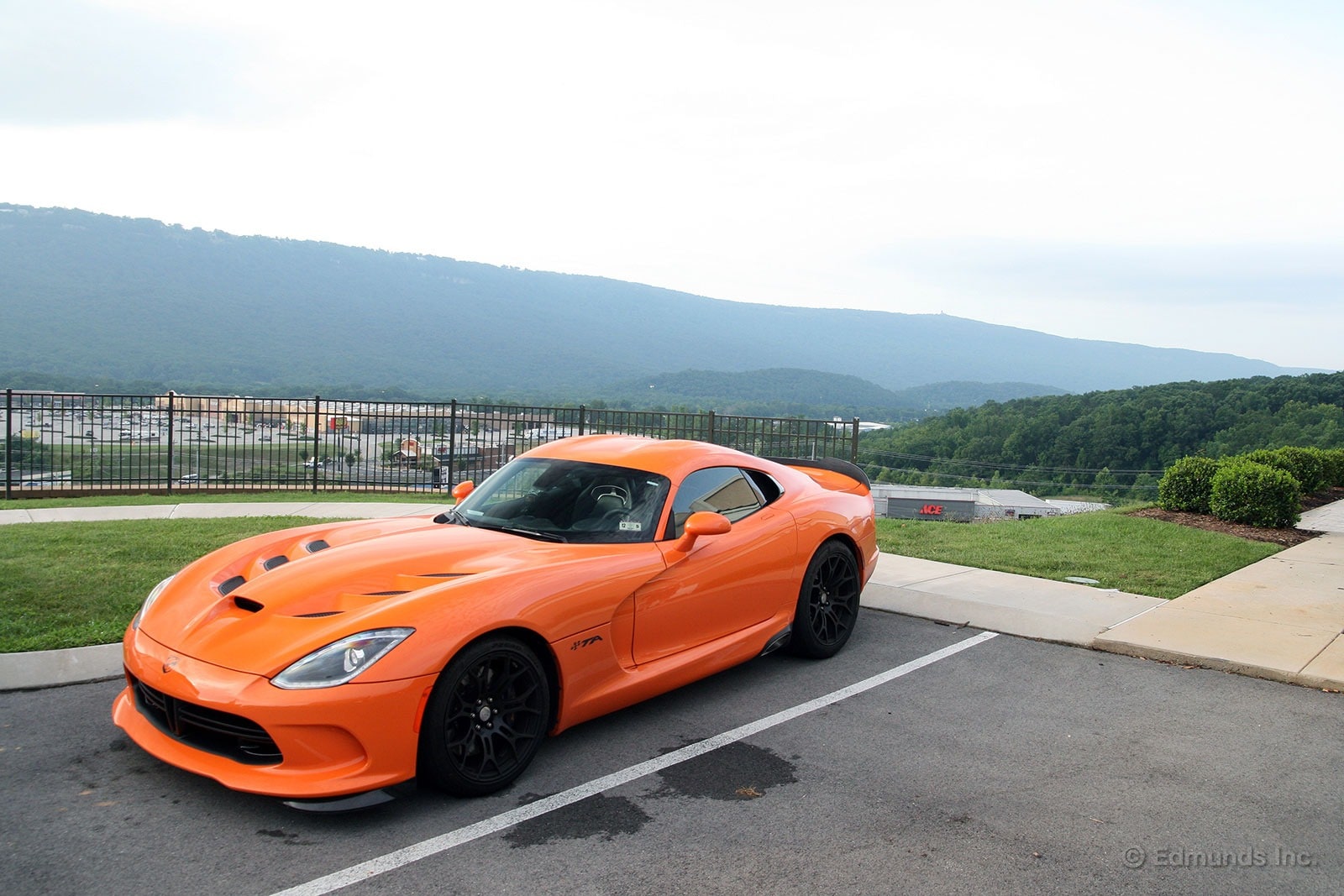
Photo by Ryan Frankenfield
His first was a 2006 that had a little motor work done. The second was an orange 2003 with a supercharger that put 700 horsepower to its wheels. With its Michelin street tires, Ryan said "it would spin in third gear." And with drag radials on it, he ran it through the quarter in 10.69 seconds at 131 mph.
With the 2003 rapidly losing street tractability, Ryan sold it and starting hunting for a current-generation model. He found the TA in Idaho and flew out with his dad to drive it back.
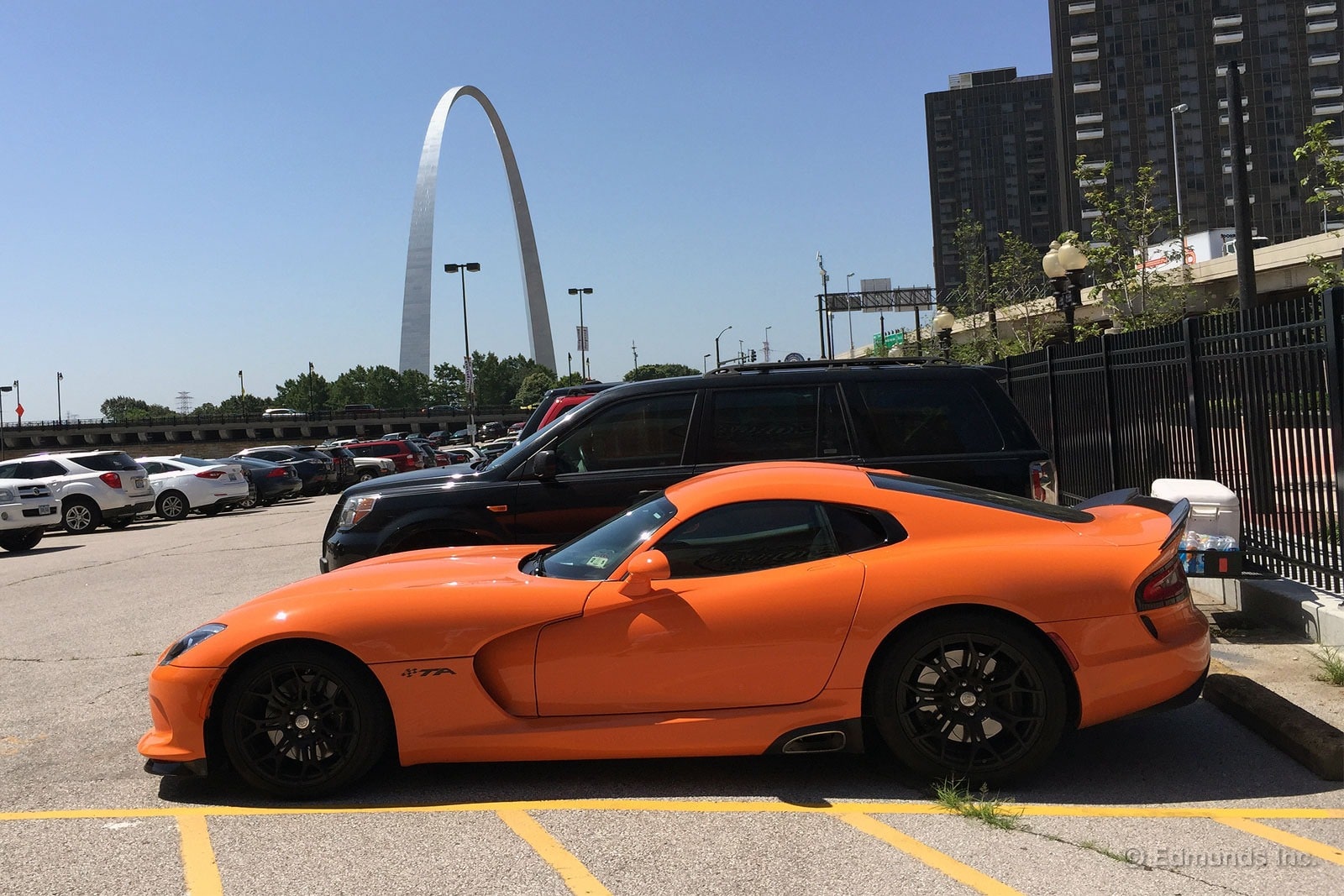
Photo by Ryan Frankenfield
Ryan hadn't done a cross-country drive before, so they took their time through the Rocky Mountains and stopped for the Gateway Arch in St. Louis. They took four days to cover the 2,420 miles home and they both enjoyed the creature comforts of the new Viper. In his previous cars, Ryan says that "you'd never forget you were driving a Viper."
And how'd his dad fare?
"I think he enjoyed the drive more than I did," Ryan says.
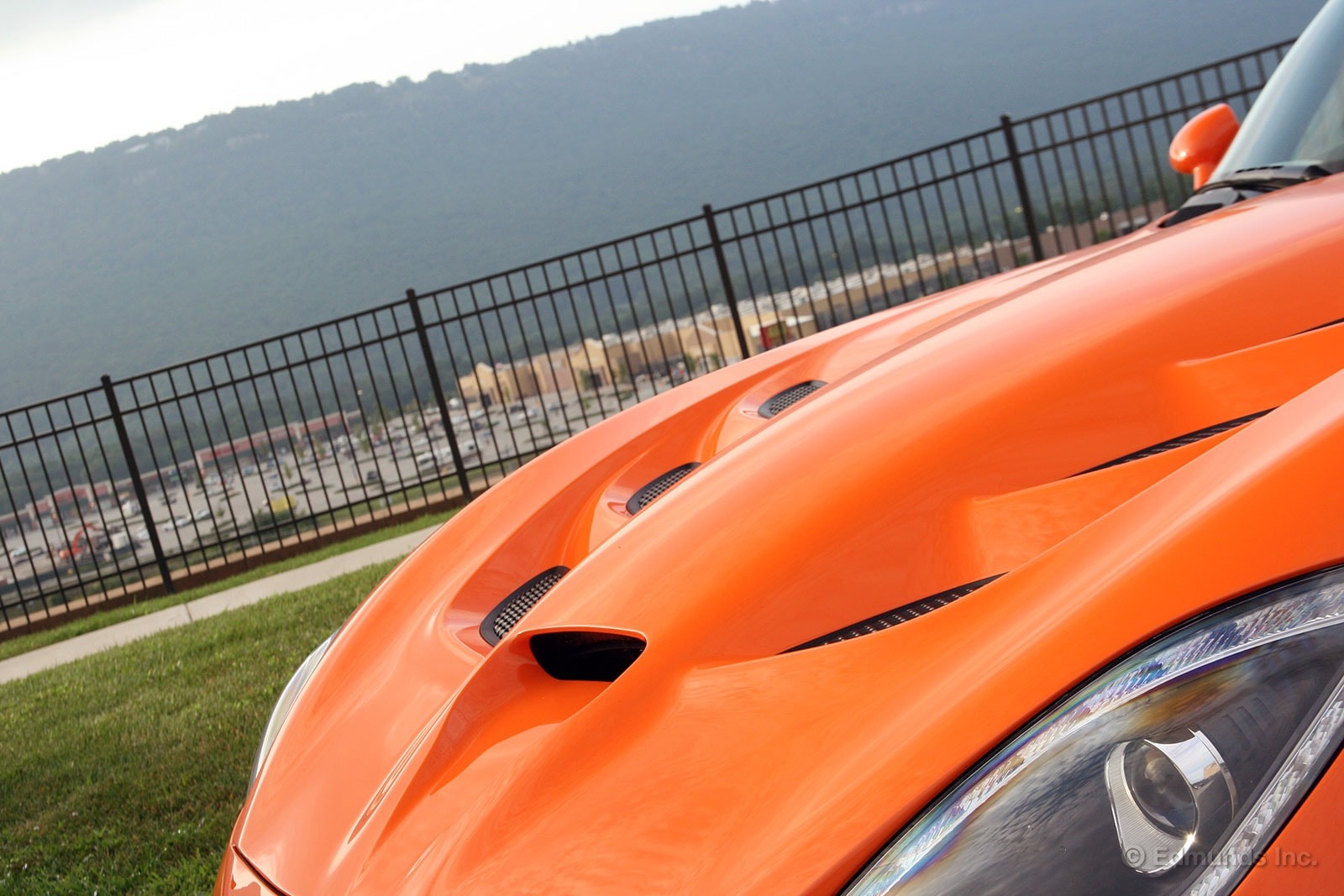
Photo by Ryan Frankenfield
Since getting home, Ryan says he's driven the TA everywhere. With some drag racing under his belt, he wants to try road racing next. Also, he's looking for a reason to drive across the country again.
I asked if he'd seen the Viper TV show recently. Ryan laughed and admitted that he had.
"It was pretty awful."
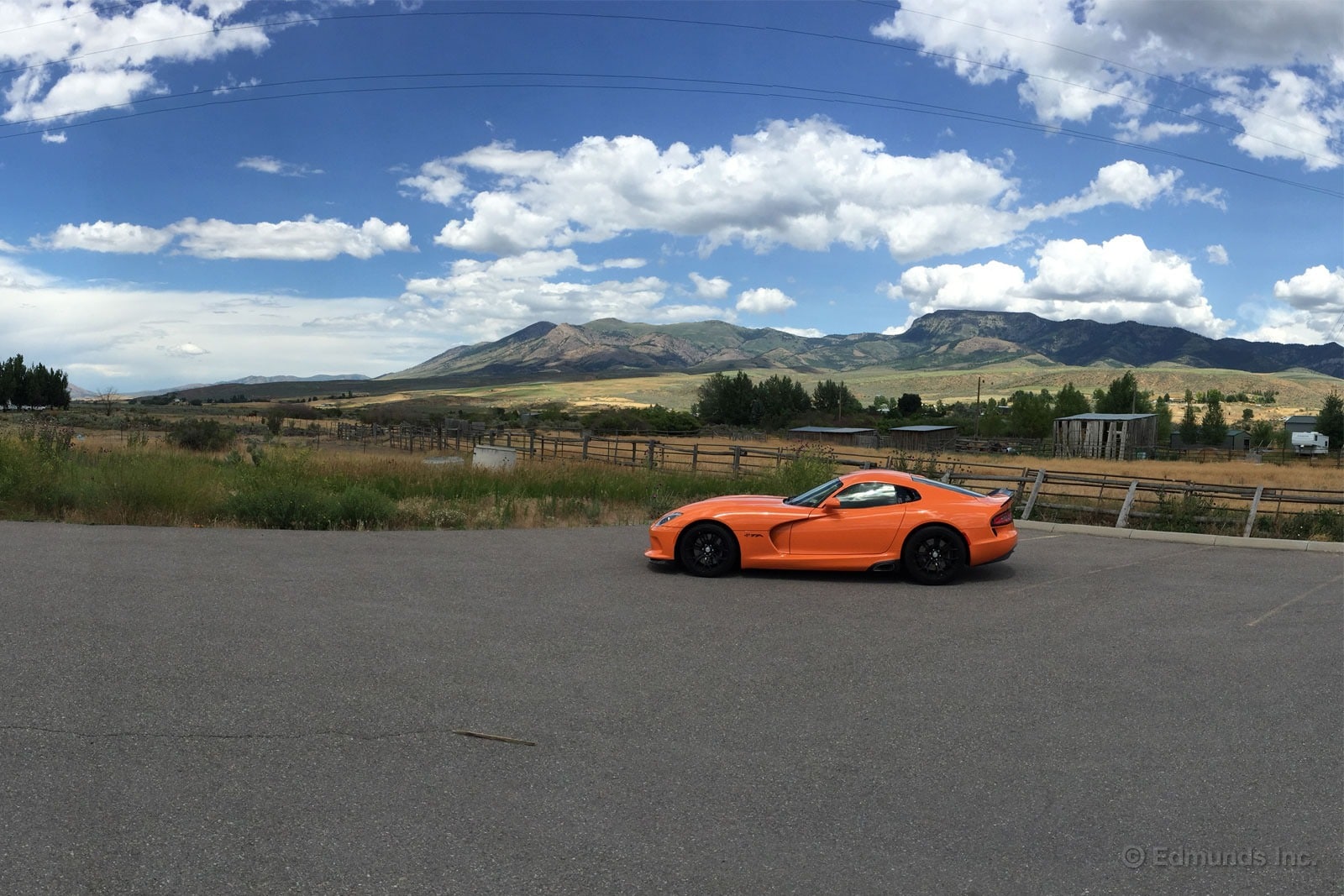
Photo by Ryan Frankenfield
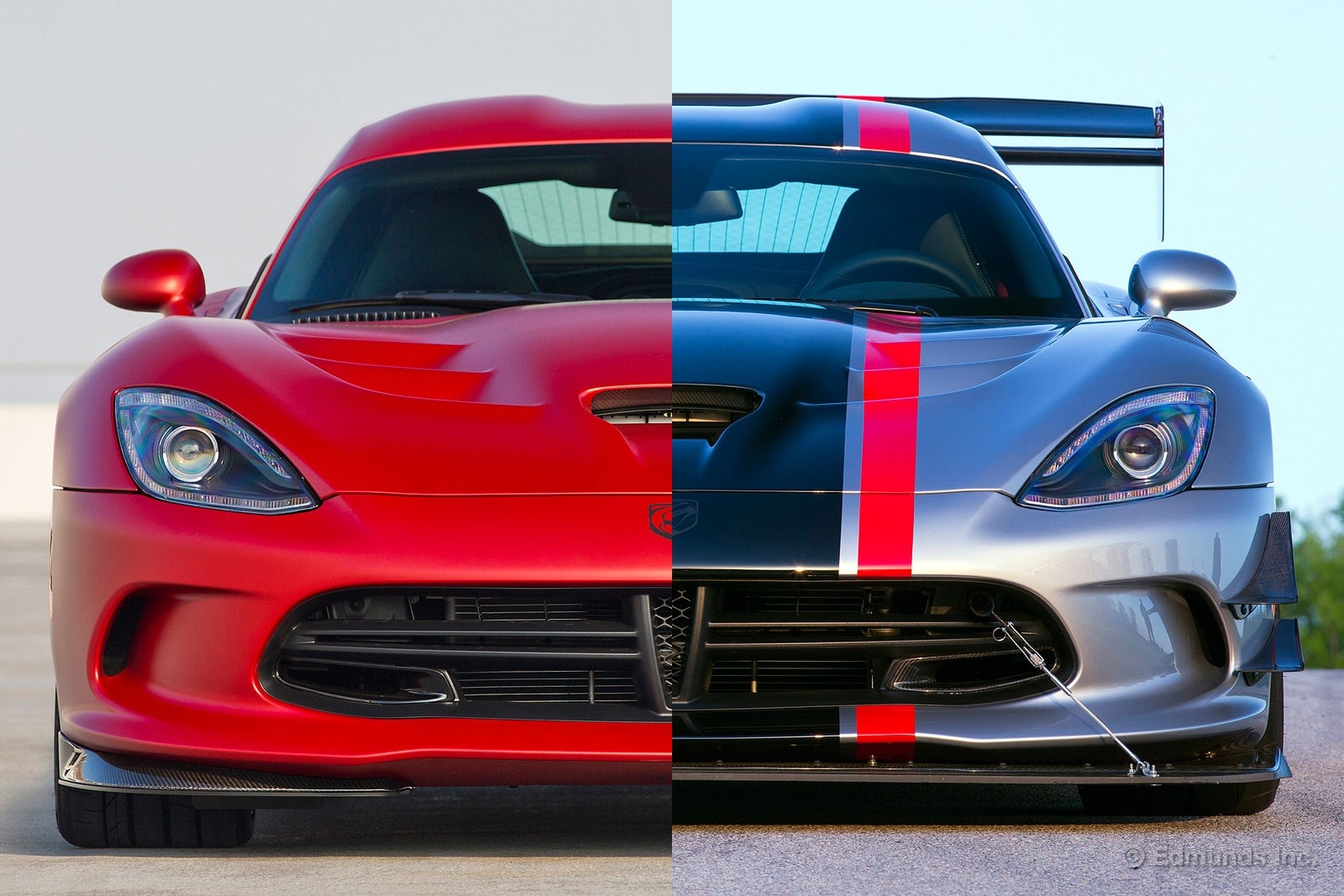
Our long-term 2015 Dodge Viper GT is a serious car. It's loud inside and out. Its tires are huge. And it's very fast. So what does that make the Dodge Viper ACR? After driving our long-term test car 2,740 miles across the country, I was eager to find out.
As it turns out, our GT isn't serious. It's quiet. Soft, too.
Making a car go faster around a racetrack requires narrowing the car's focus, shaving away non-essential things like street drivability with each step you take down the rabbit hole. And I can't think of a new car from a major manufacturer that's gone further down the hole than the ACR. Only the Porsche 911 GT3 RS shares a similar intent.
The Road Test covers the transformation, but if you take away one thing, it should be how the front splitter and strakes on the rear diffuser are designed to rub the ground and be replaced. That is serious.
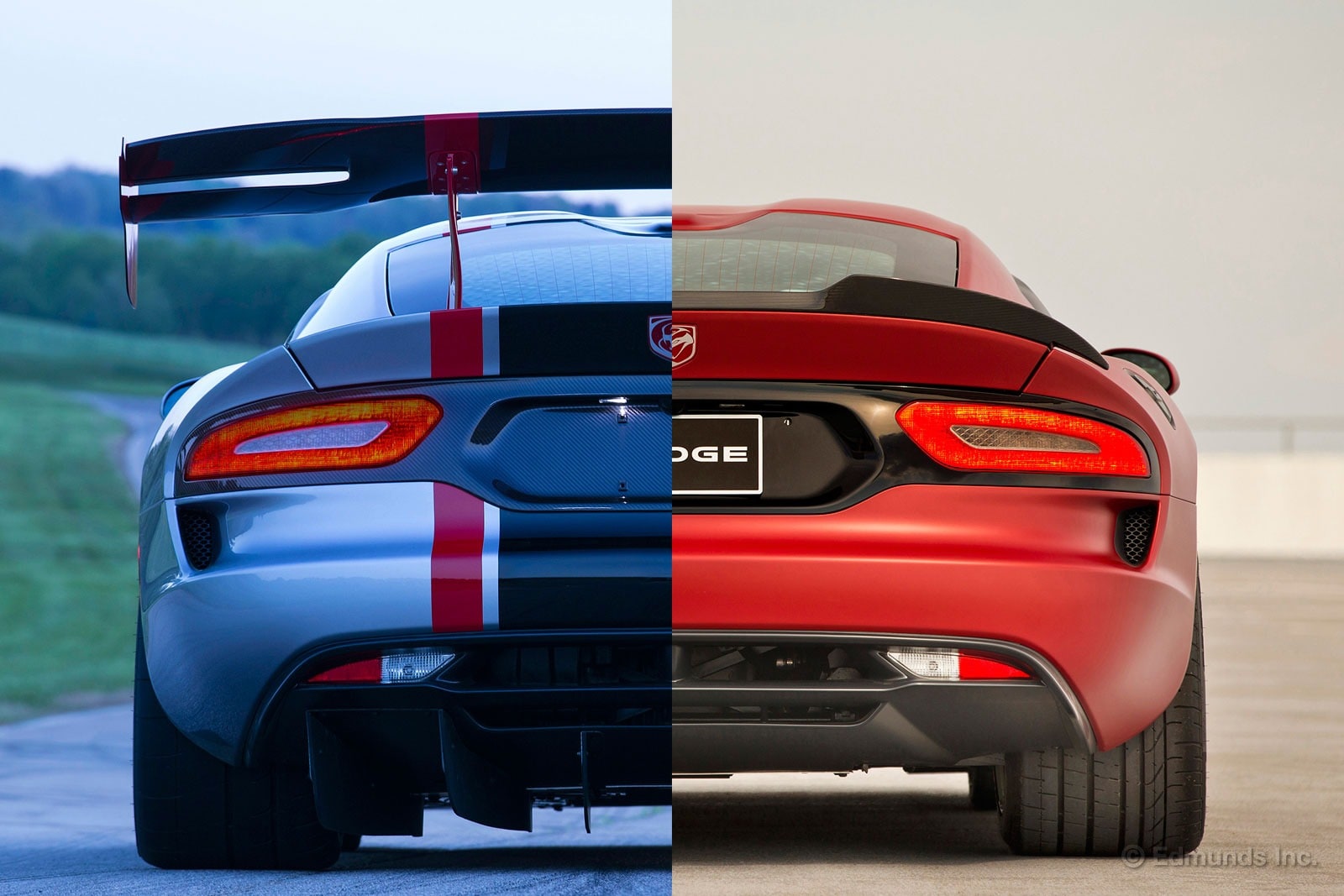
It's not the hardware alone. The adjustability in the suspension and aerodynamic package allows owners to tailor different setups from track to track. The ACR also prioritizes durability. While magazines and bench racers tend to compare single lap times, the ability to drive many laps at pace is what separates street cars from racecars. The engine, tires, and brakes need to be able to hold at temperature and last.
I have no doubt they do, but I challenged a few of these parts while lapping the ACR on Virginia International Raceway's 4.1-mile Grand Course configuration. It's a fast and technically demanding track with anywhere up to 30 turns depending who you ask. In my amateurish hands, the ACR could reach more than 130 mph in three different places.
Typically, under-driving a racecar means a bad time. When the hardware isn't up to temperature, it doesn't work. There's no grip in the tires, no bite from the brakes, and not enough speed to reap the benefits of downforce. I didn't sense this racecar-style light switch with the ACR. Instead, its high performance headroom also comes with a climbable learning curve. I wanted to learn it.
I spent five days in our GT. I thought it was rough. I'd put the electronically-controlled dampers in Race mode to remind myself that the ride quality could be worse. I taped up the windows to reduce interior noise and put towels on the arm rests to make my elbows more comfortable. But after driving the ACR, our GT seems refined.
The normal Viper isn't a car for most people; the ACR is a car for even fewer. I love it.
Westward, Ho! Driving 3,124 Miles Back To Los Angeles
Nobody in their right mind would choose to drive a Viper from North Carolina to California, which explains how we chose our long-term 2015 Dodge Viper for this trip.
Actually, I sorta dig road-tripping long distances in cars ill-suited to the task. I once drove our 2009 Viper SRT-10 from Los Angeles to High Plains Raceway near Byers, Colorado, and back. That was a few years ago, so enough time had passed that the rose-tinted glasses were in full effect.
It was high time to get stupid with a Viper again.
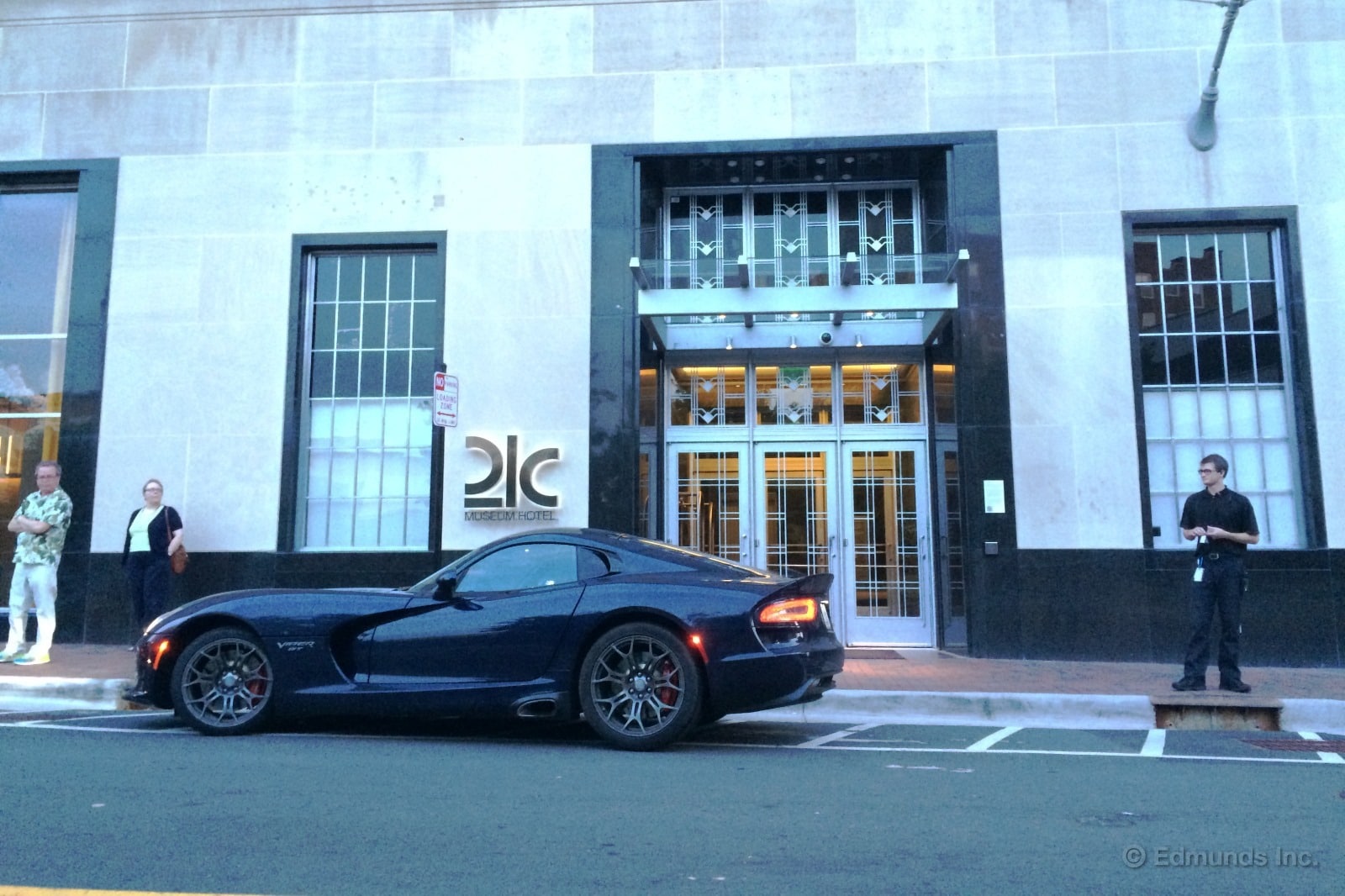
I flew in to Raleigh-Durham, North Carolina, and picked up the Viper from fellow editor Carlos Lago at his hotel. I'd be driving it back to Edmunds intergalactic headquarters in Los Angeles County.
By all rights Carlos should have been loopy after wheeling that thing 2,700 miles. He seemed well. I was concerned. Perhaps the drive pummeled his sanity into milky submission. My route would take me along a more northern path than Carlos' strafing run on Interstate 40, plus I took a few side trips along the way.
I drove from Durham to Asheville, North Carolina, that night. Almost immediately, I found it difficult to get comfortable in the Viper. The driving position and seat were playing "screw you" with each other and I was caught in the middle. On the short jaunt to Asheville, I fiddled constantly with the seat and pedal positions.
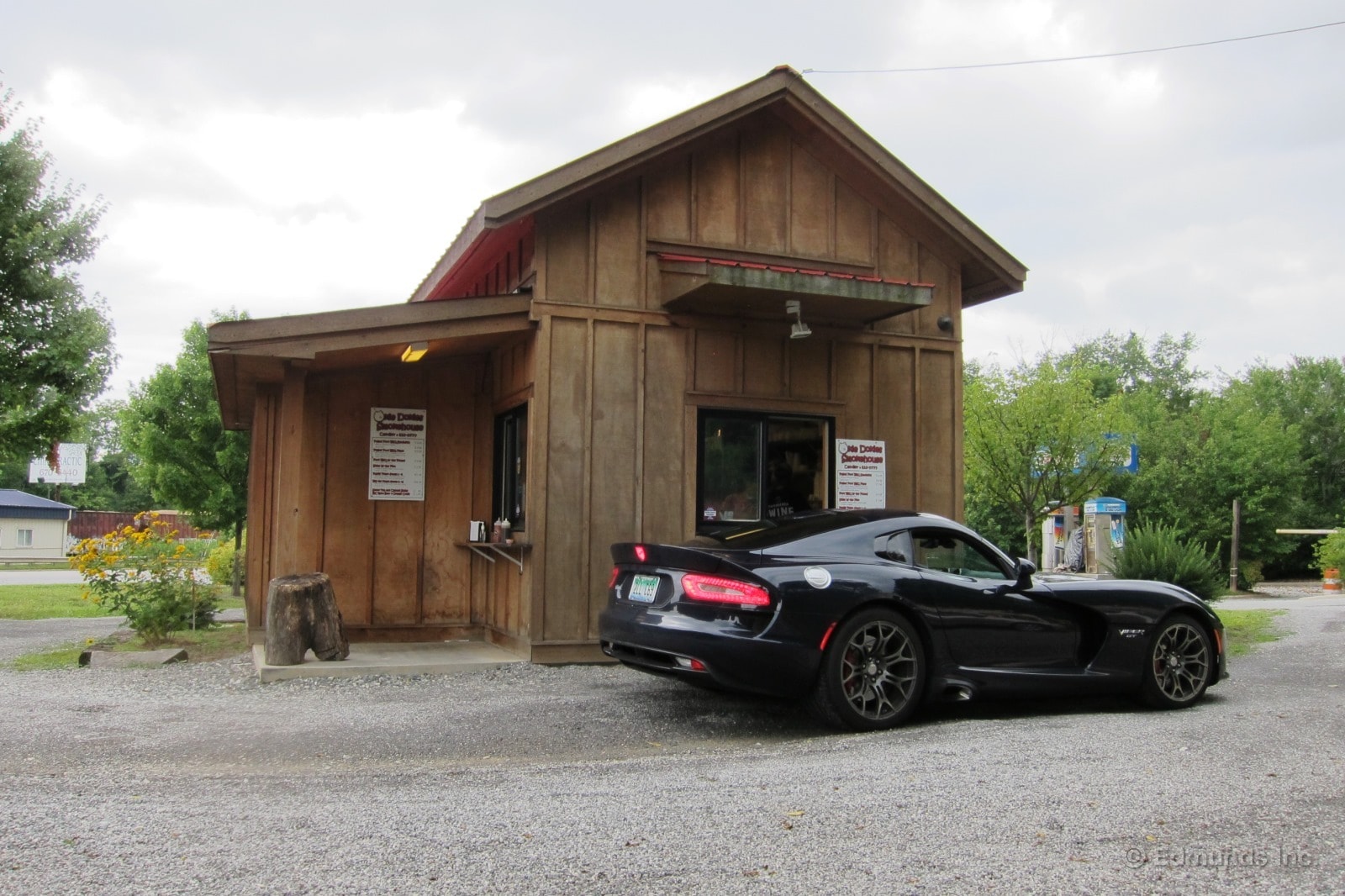
By the time I hit Okie Dokies Smokehouse drive-thru barbecue in Candler, North Carolina, I had found a driving position that worked. I wouldn't say it couldn't be improved upon, but it was an amicable compromise. It was good enough that I didn't change it one millimeter for the remainder of the trip.

The Blue Ridge Parkway in western North Carolina is a scenic drive with an absurdly low speed limit. Of course, in a Viper all speed limits seem absurdly low — to a point. More on this later.
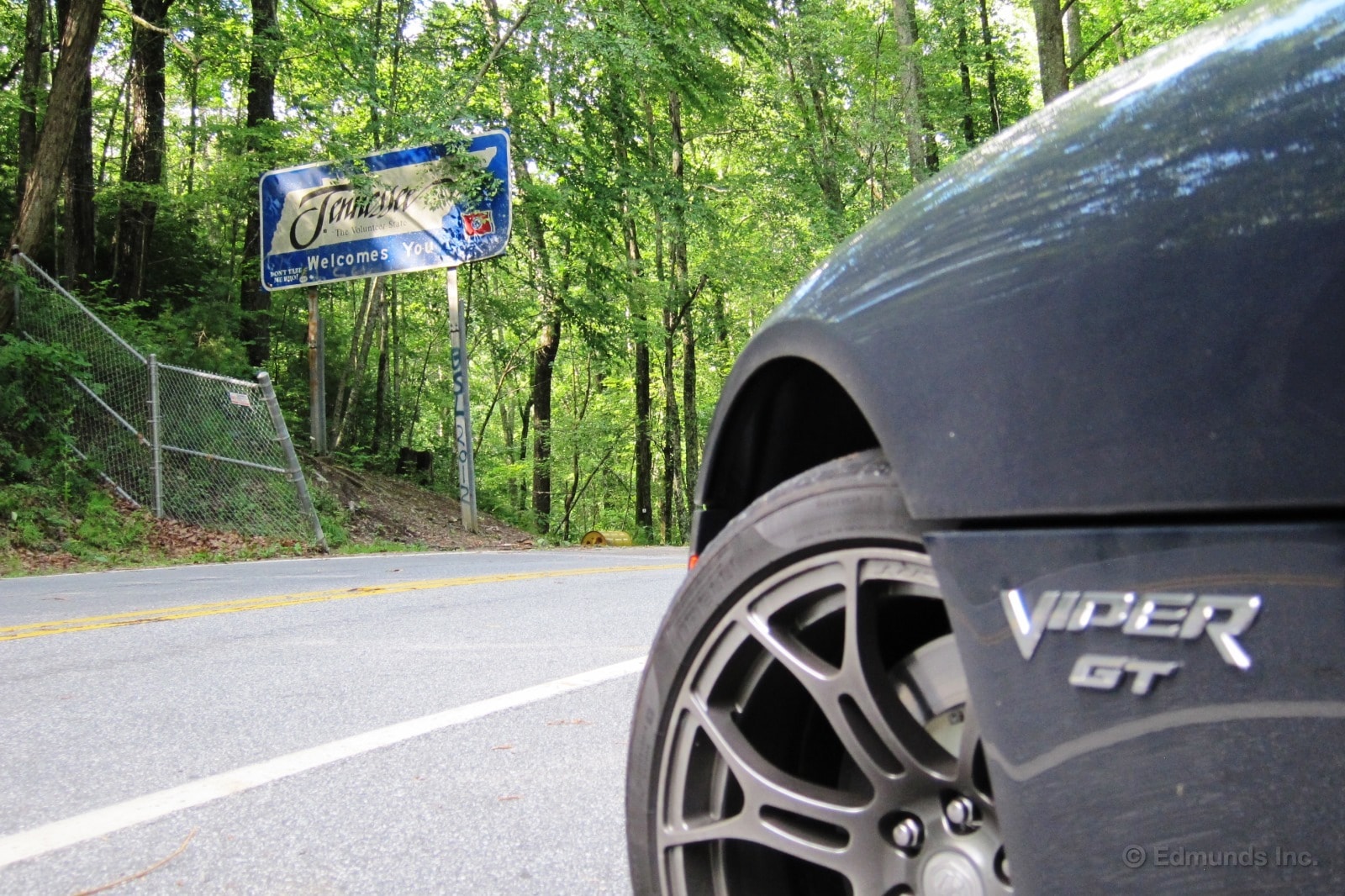
Can anyone guess the road shown in this photo? I've got a separate post planned for the drive of this stretch of tarmac. It was about 95 degrees and 300,000 percent humidity here, yet the Viper's A/C battled it admirably.
Previous Vipers would heat-soak their footwells, which would in turn radiate into the rest of the cabin. This Viper doesn't do that. The only time cabin heat becomes uncomfortable is if you're idling it with the door ajar, in which case the exhaust wafts into your face and the sill gradually bakes in the radiant wash of the sidepipe.
Solution: close the damned door, dummy.
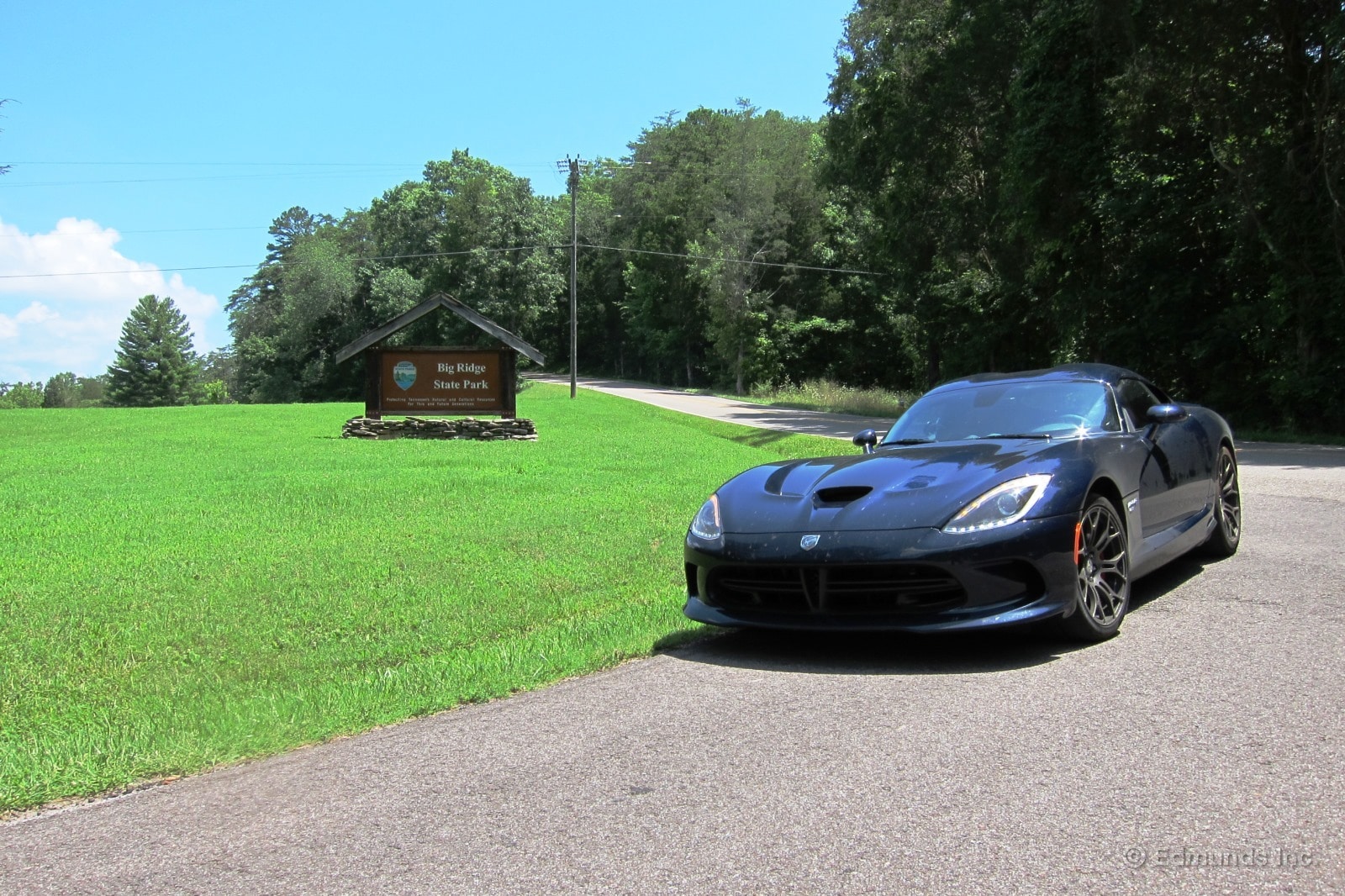
The road leading to the Big Ridge State Park in Maynardville, Tennessee, has a few killer corners in it. This Viper's higher-fidelity steering inspires much more confidence in fast driving than our old long-term 2009 Viper. There's so much grip on tap that you really need a racetrack to explore its limits.
Due to the Viper's lack of visibility, forget about tackling any uphill right-handers at speed. The top of the windshield drops low into the field of view, especially for taller dudes like me. The big rearview mirror sits right smack in between it and the voluptuous hood, gobbling up the view almost entirely in that direction.
On this road you only need one gear, such is the car's vast ocean of torque and forever-long gearing. In this sense, and only this sense, the Viper is like an electric car.
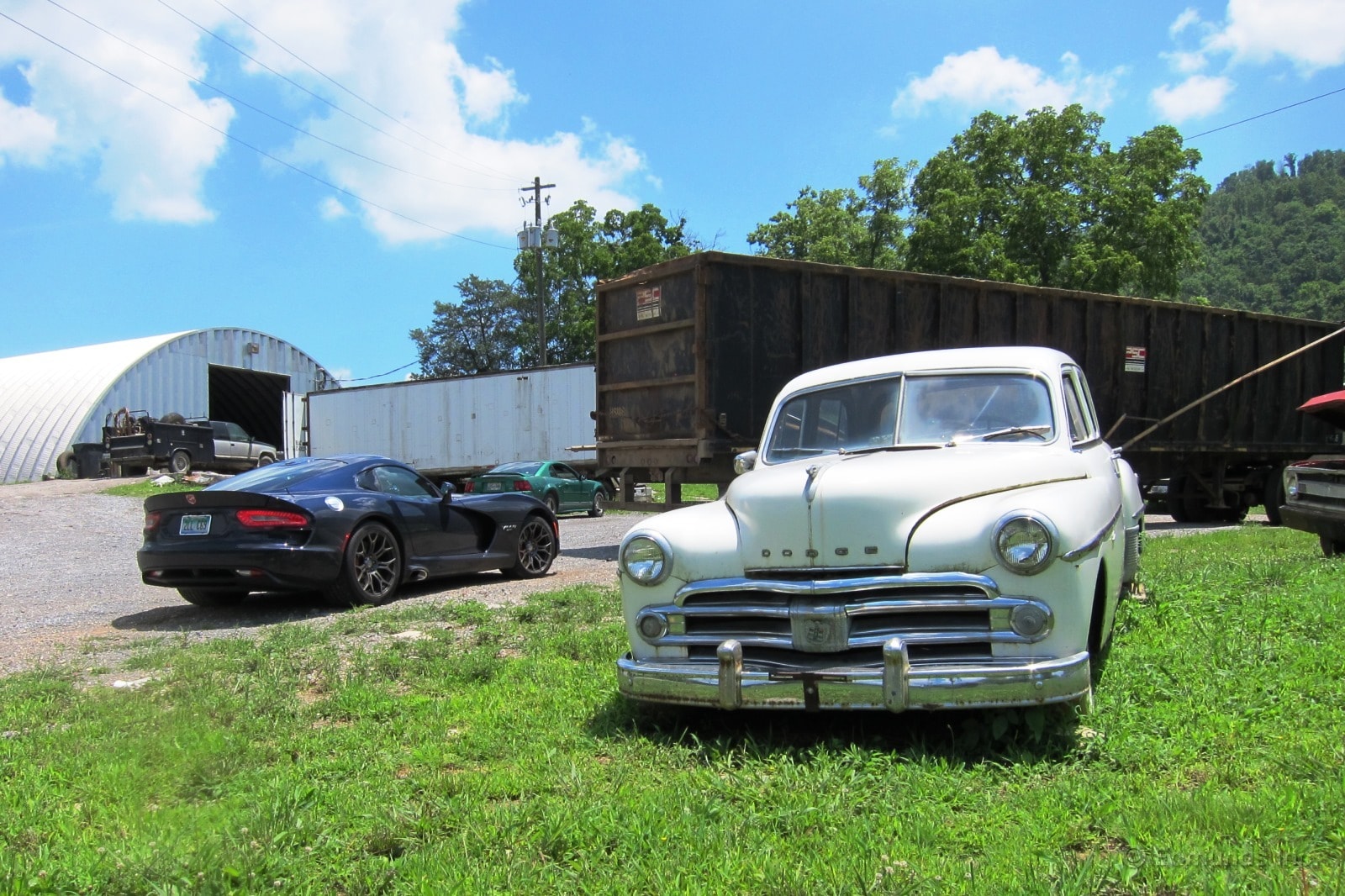
Fact: there was a Confederate flag in view a stone's throw from here.
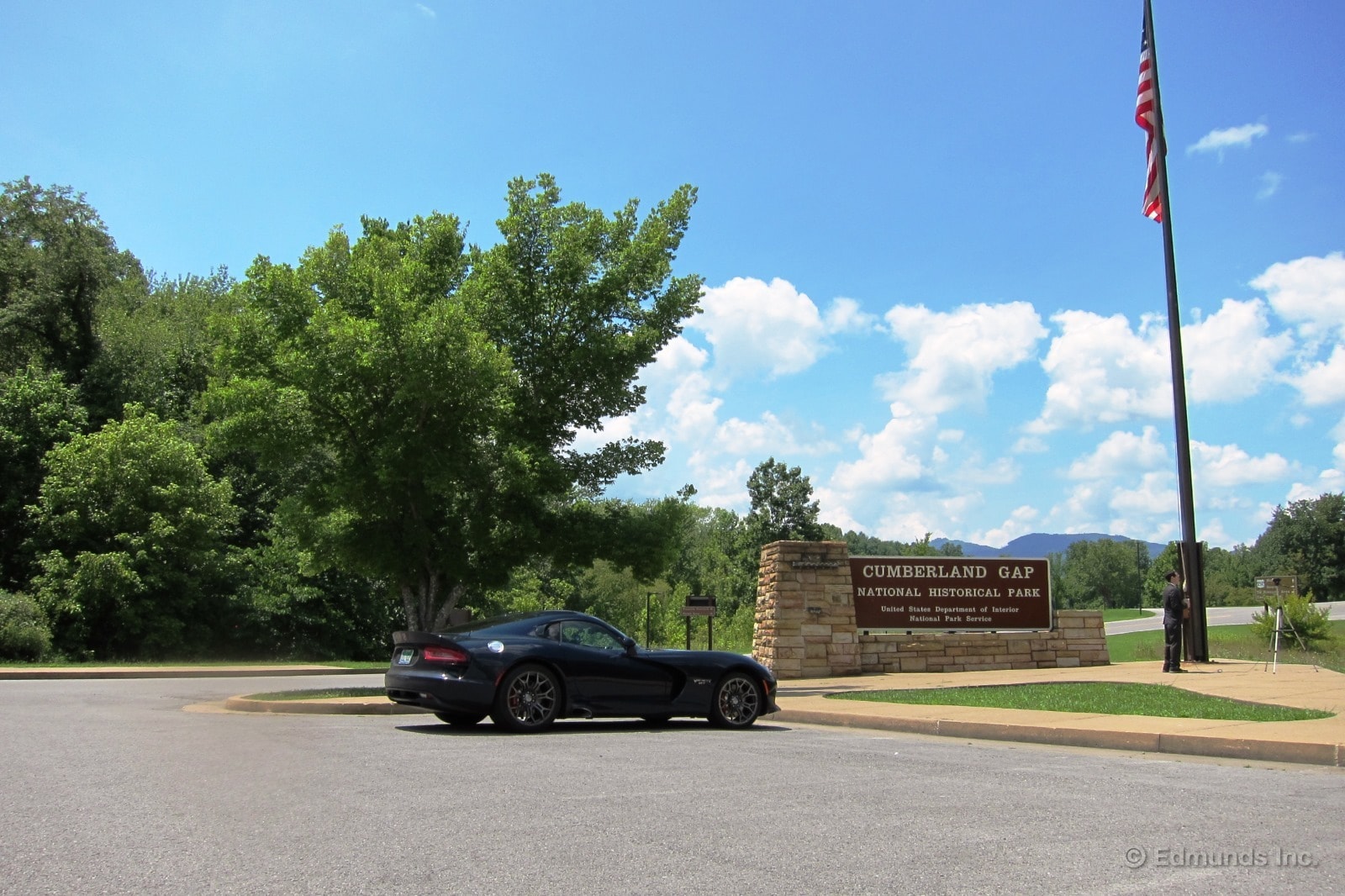
If you look closely you can see a guy standing near the flagpole. He was a reporter recording a stand-up for a local TV station about how recent extreme rains have affected tourism to the area. I'm pretty sure I nuked his mic with sidepipe blat when I rolled up.

After a stop in New Albany, Indiana, I hit the road. I wouldn't see curving mountain roads again until I hit Colorado, some 1,000 miles from here. I don't know how people live without those.
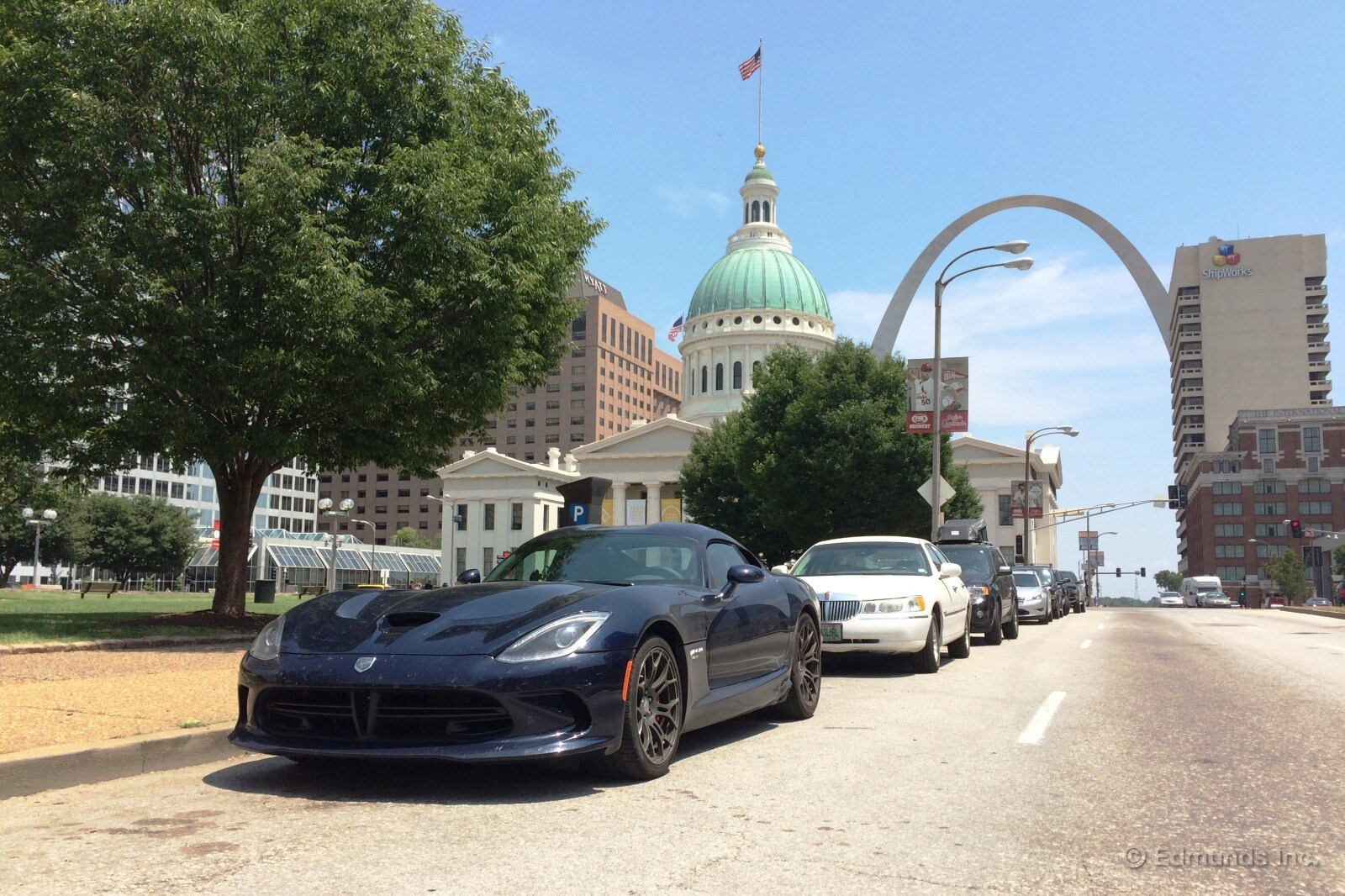
My brief stop for lunch in St. Louis marked the only point at which the Viper's A/C flagged a bit. It was in the mid-90s and humid as a sponge outside when I left the city, and trundling around in city traffic didn't allow enough of the soupy ambient air across the car's condenser. Breaking free from the confines of traffic on the freeway on-ramp, the air blew cool again.
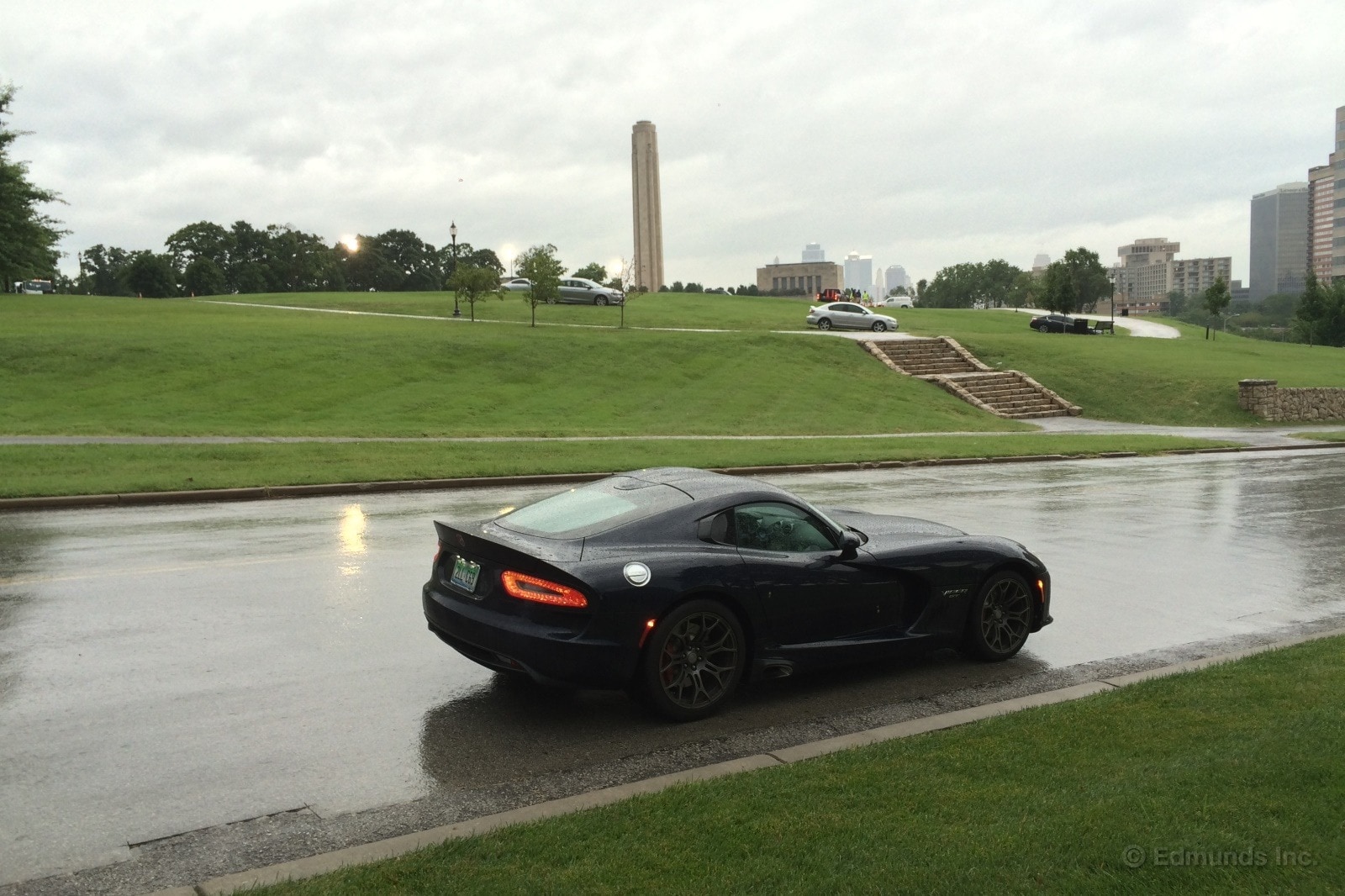
I include this photo of Liberty Memorial in Kansas City here not because it is a particularly good photo. In fact, it is a particularly crappy photo. I include it here because an inordinate amount of time was required to capture such a particularly crappy photo.
Access to the memorial was restricted due to some festival being held later that day, and people were setting up at the hilltop near the memorial. The lone open road was a one-way street and I had to convince the security guard to let me up there even though I wasn't part of the festival. This only hardened my resolve to get the shot (what's the saying: 'Dumb enough to begin, stubborn enough to finish?')
There was no reversing direction and Officer Johnson wasn't going to let me take another pass up the road. "No Stopping" signs were everywhere. Plus it was raining. I had one shot. And so, kind Edmunds reader, I give you this crappy photo.
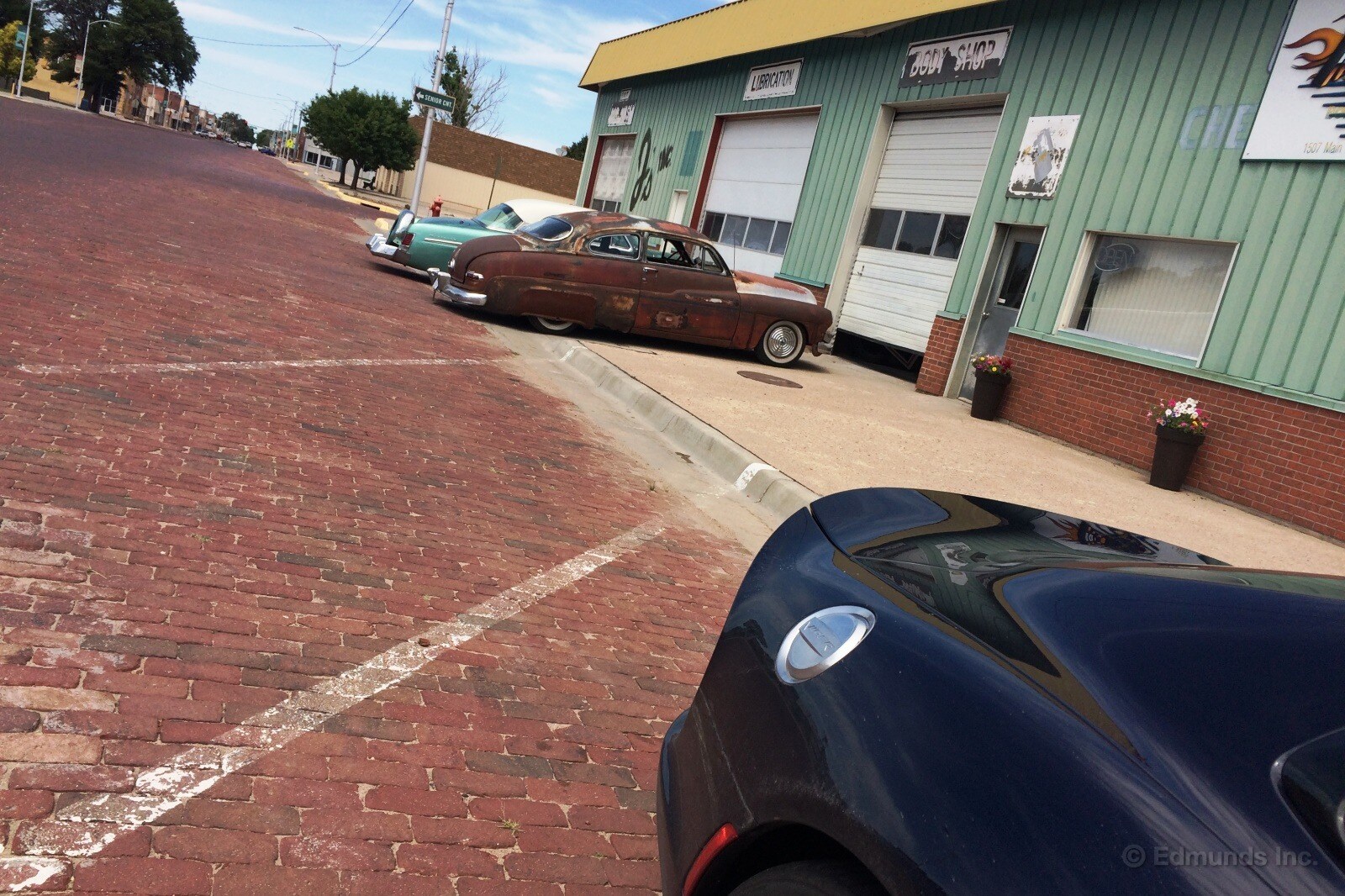
Want people to slow down on Main Street? Pave the road with bricks. That's what they did in the tiny town of Goodland, Kansas. I stumbled across this time capsule of a town thanks to my insistence on not eating at national chains on this (or really any) road trip. The chains are all clustered around the freeway interchange. Drive a mile or two and you find stuff like this.
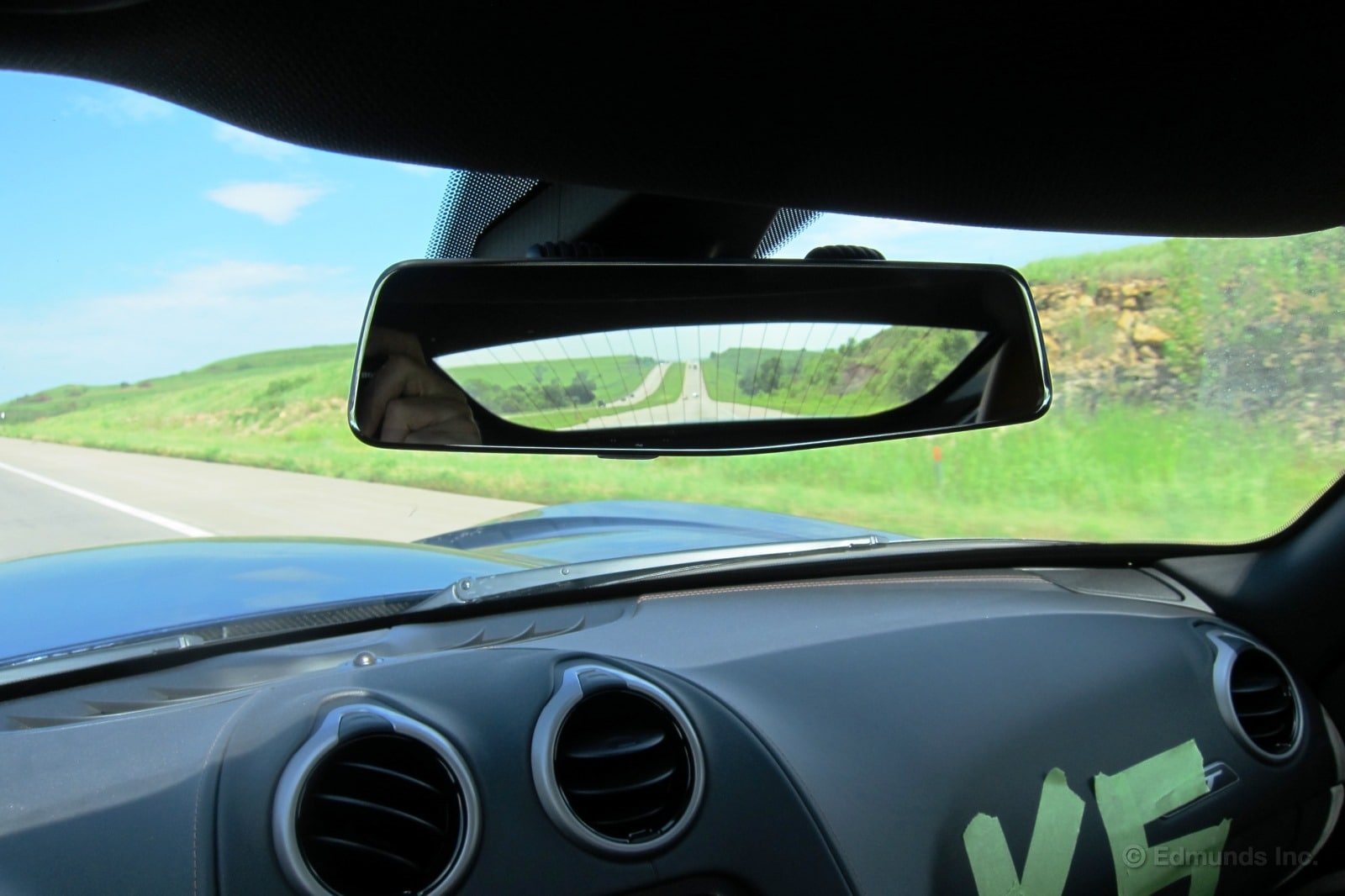
This is my view in the Viper. See what I mean about visibility?
Interstate 70 through Kansas (shown in the photo above) may be straight like I-5 in California, but all the recent precipitation in the Midwest has produced a blanket of green everywhere that made it a pleasant drive. Relatively speaking, of course. I mean, I was still in a Viper.
Also, a few observations on Interstate 70 drivers:
1: They don't know how to merge. I encountered three separate freeway lane closures in Indiana, Kansas and eastern Colorado. In each one, drivers piled into the other lane at the first sign posted, about a mile before the lane closure (and would-be merge point). This despite signs imploring "USE ALL LANES TO MERGE." One truck driver and several passenger cars straddled both lanes as if to prevent other cars from driving on the other perfectly usable lane. America, you need better driver education. Or any driver education. In the meantime, merge like a zipper, and do it at the merge. Not before. Rant over.
2: They're pretty passive. I saw the familiar "left lane train" phenomenon common to two-lane freeways that share traffic with trucks. This happens all the time on I-5, but the I-70 trains passed the trucks with less speed differential, left more space between cars in the left lane and camped in the left lane more persistently.
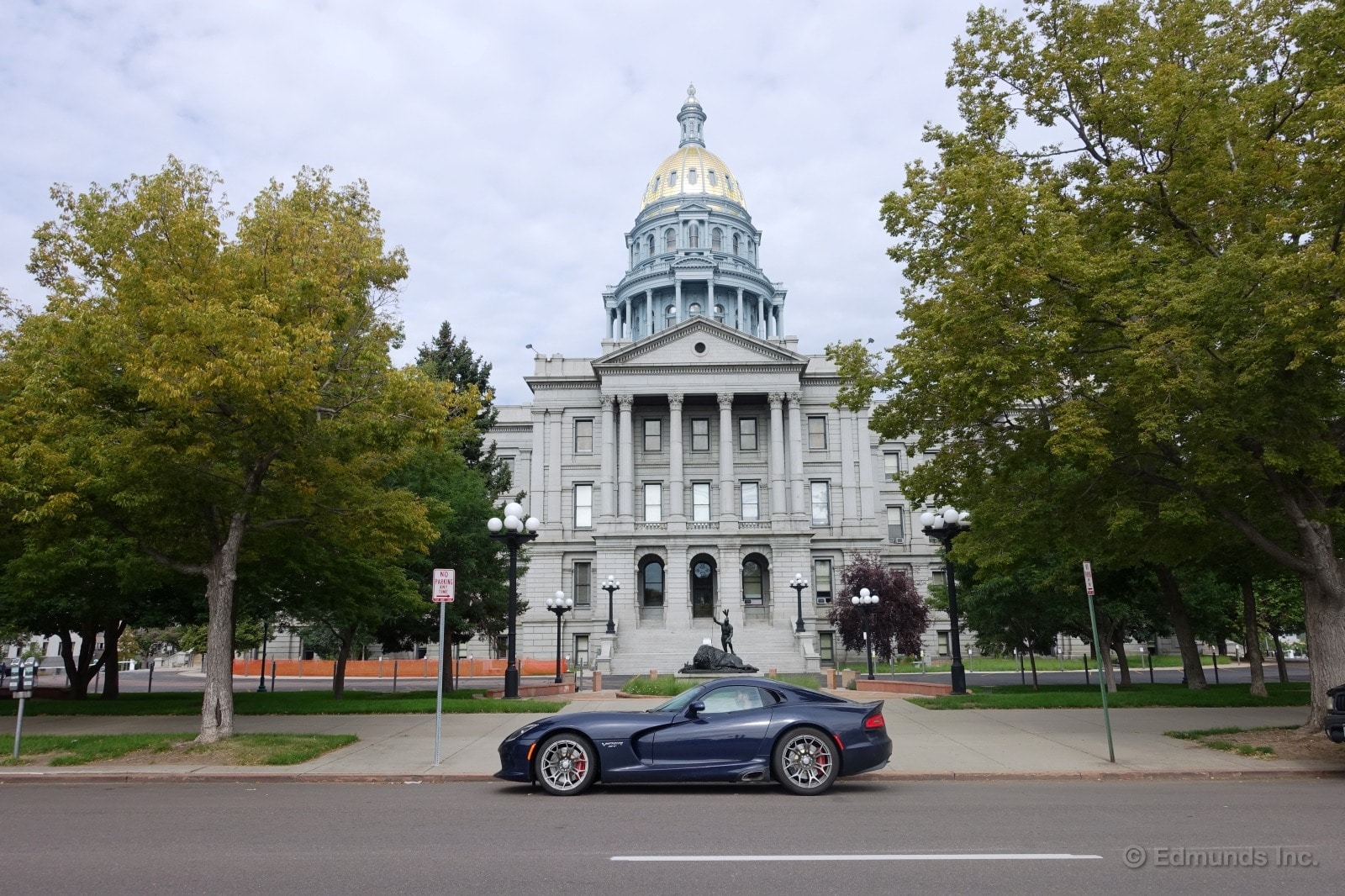
Denver, you're a cool town. I'll be back. I don't like how your airport's basically in Kansas, so I'll just drive there again next time.
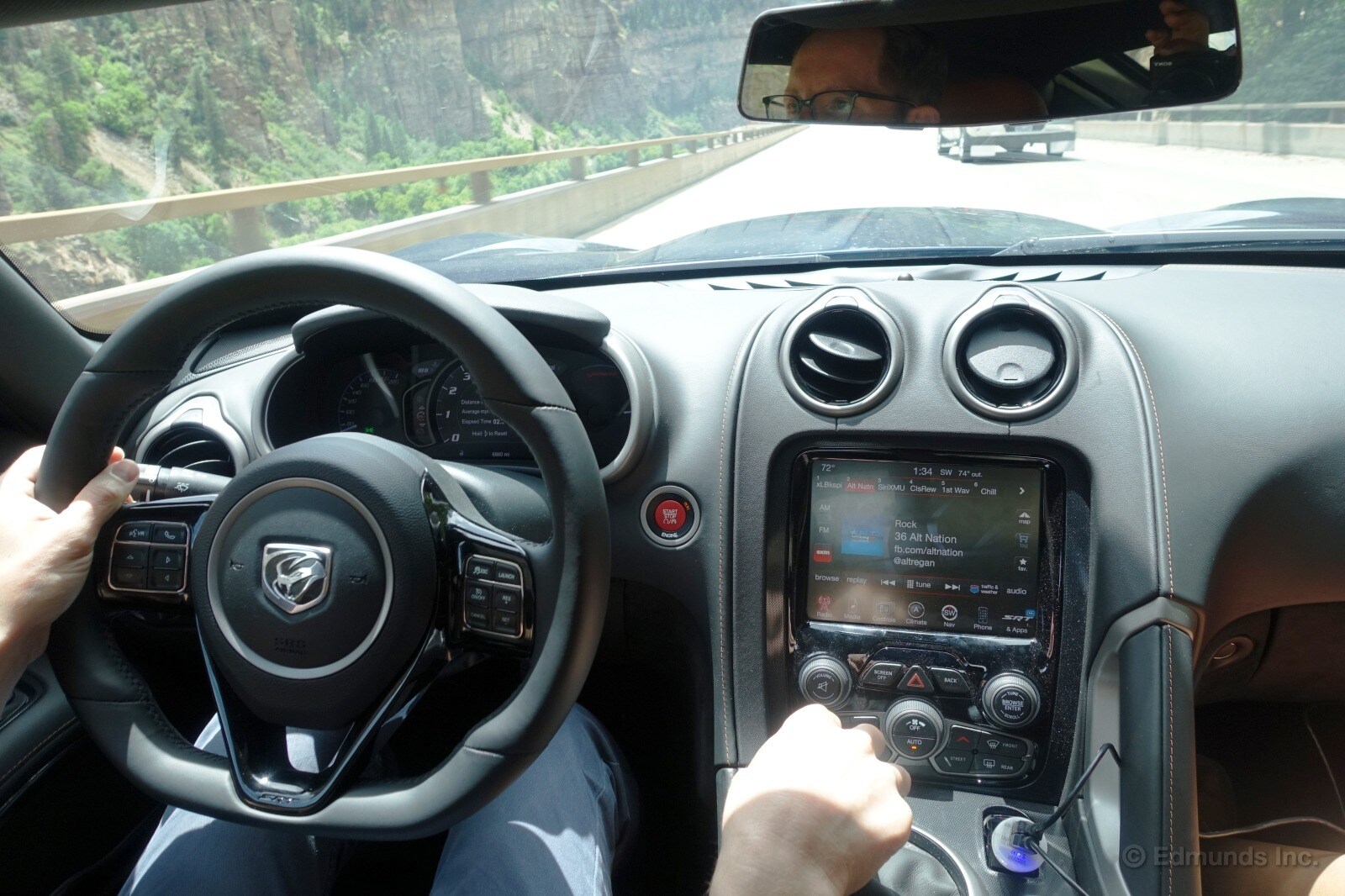
Carlos's gripes about hard interior surfaces never bothered me. I drive with the steering high enough that my elbows don't touch anything when at 9 and 3 on the wheel. That, and I'm tough as nails.
The Viper's shifter is a marvel. It feels immensely solid yet slots into the gates with ease. Love it. You'll never miss a shift in this car.
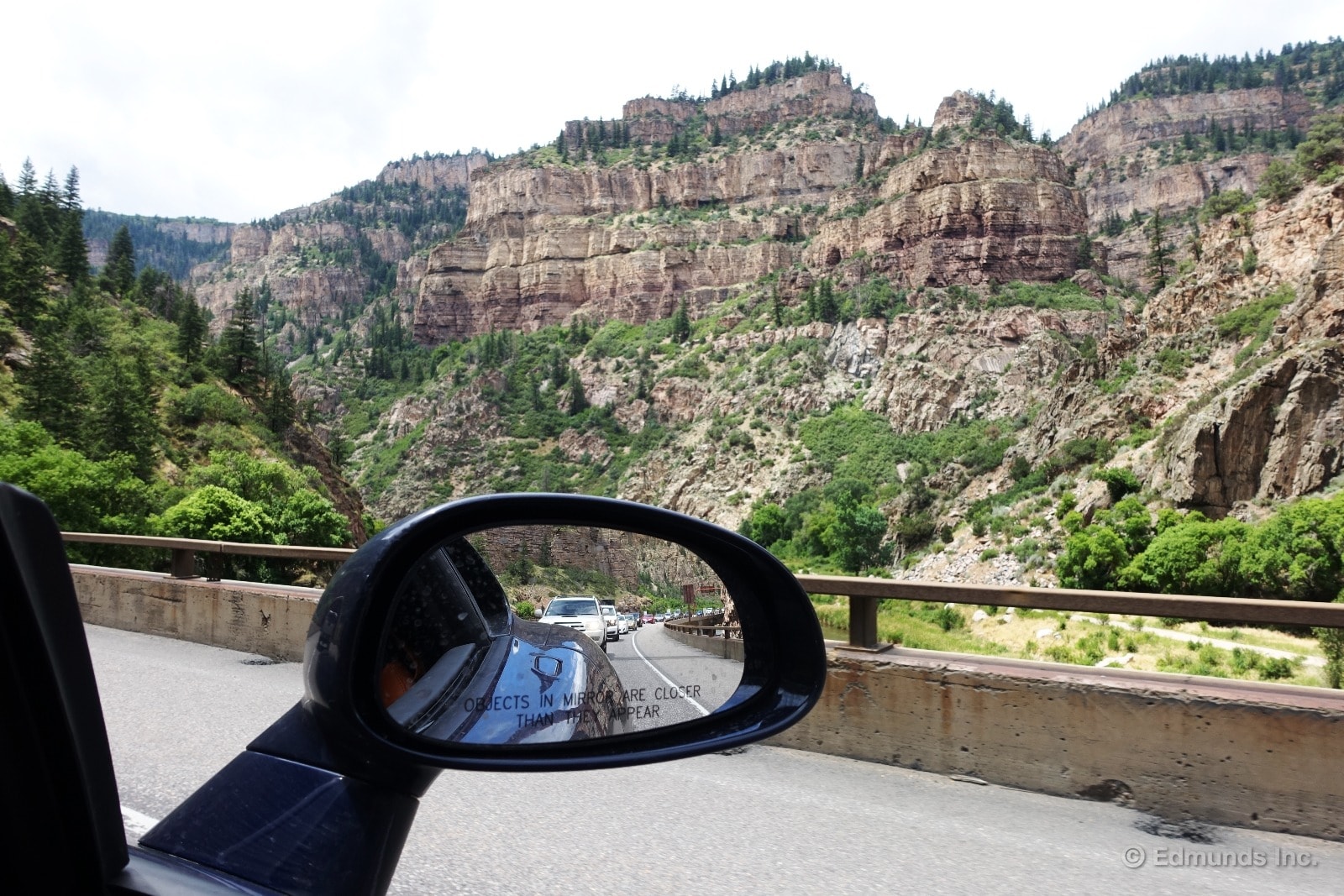
I-70 on the west side of Denver is one of the most scenic interstates in the continental United States. Around each bend it's just one spectacular view after another. Intermittent downpours here didn't faze the Viper, the big land missile tracking straight and true even in standing water at elevated speeds. Only once, in Kansas City, did the car's front end hydroplane slightly.
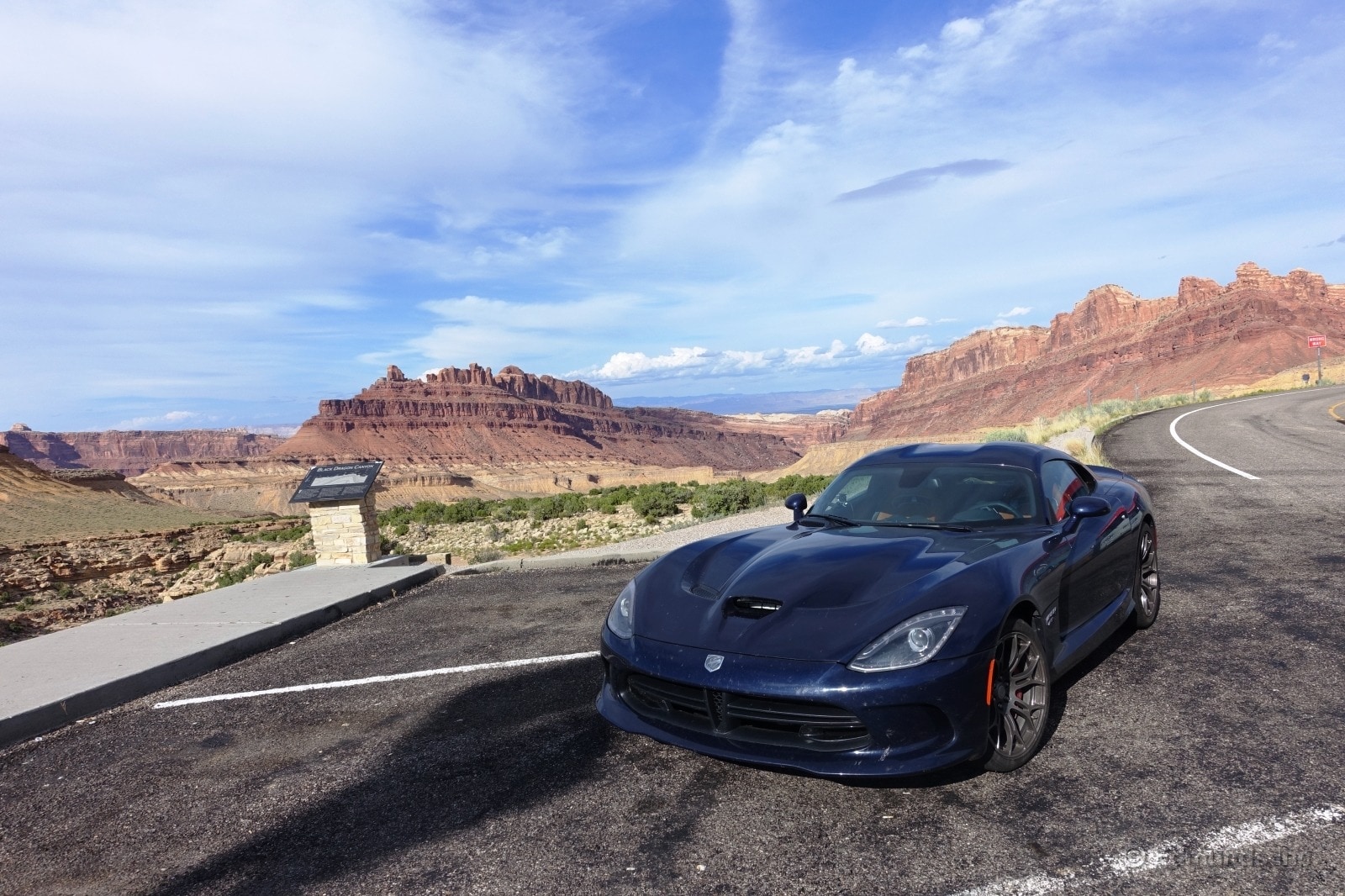
And then Utah just blows your freakin' cerebral cortex. It's unreal, this place.

I-70 in Utah has an 80 mph speed limit. In the Viper, that's about as fast as you want to travel over prolonged distances. Beyond that, the Viper's cacophony of road, wind and engine noise becomes exponentially more overwhelming.
I wish this engine sounded better. The big V10 blasts your face holes with a discordant, penetrating drone at a cruise. At full whack, it sounds like hippopotamus flatulence.
Anyway, take a look at these photos and tell me Utah isn't stunning:
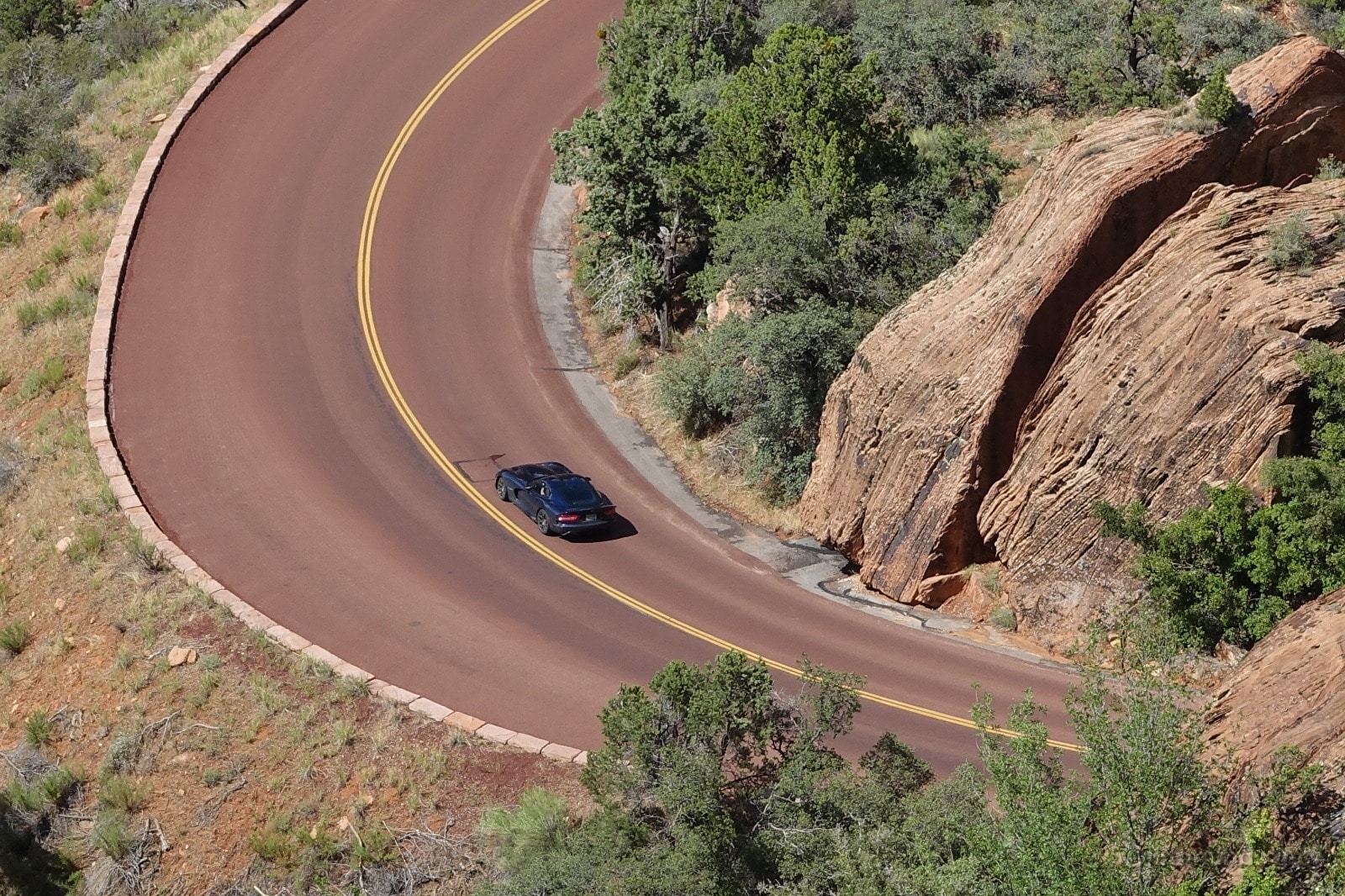
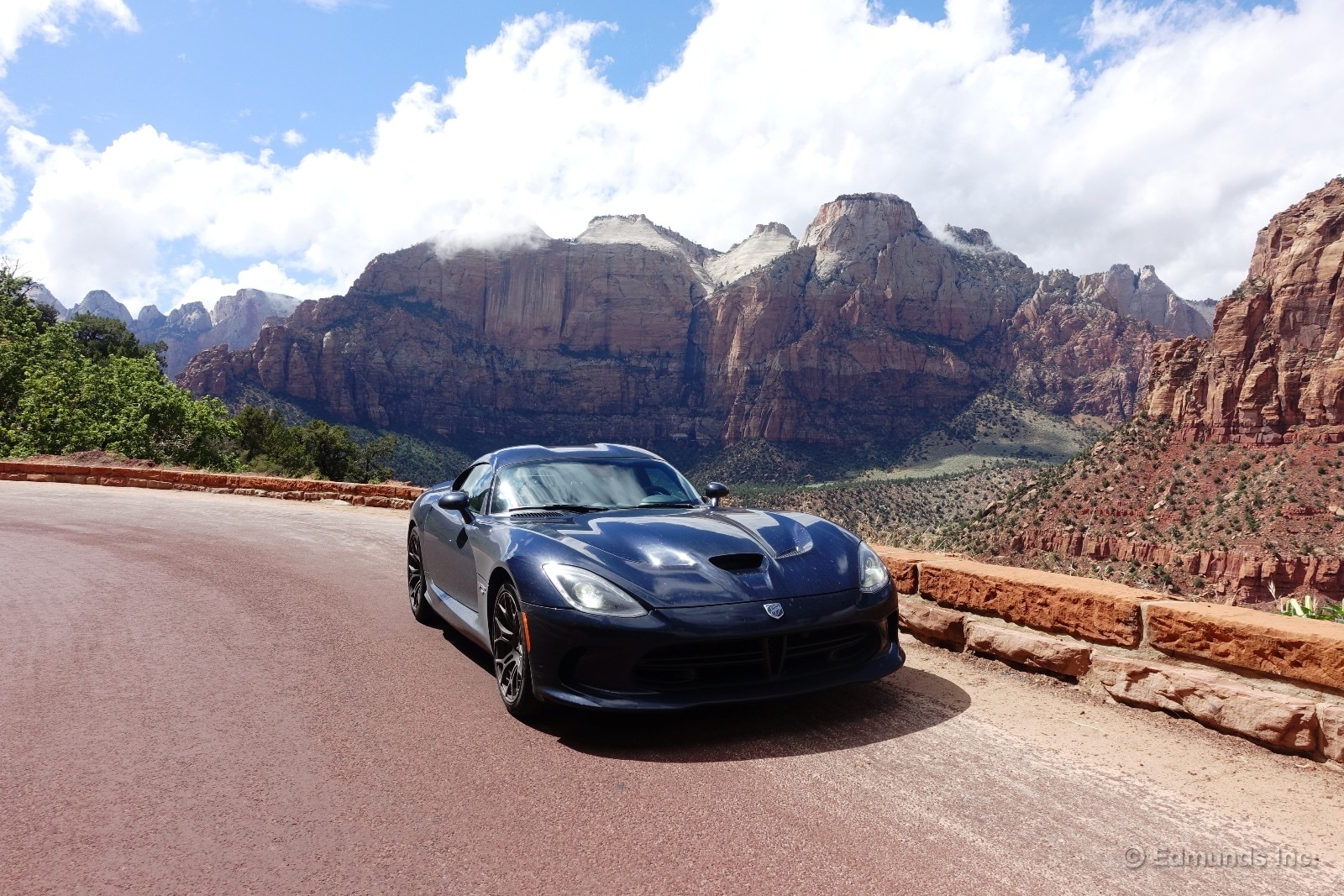
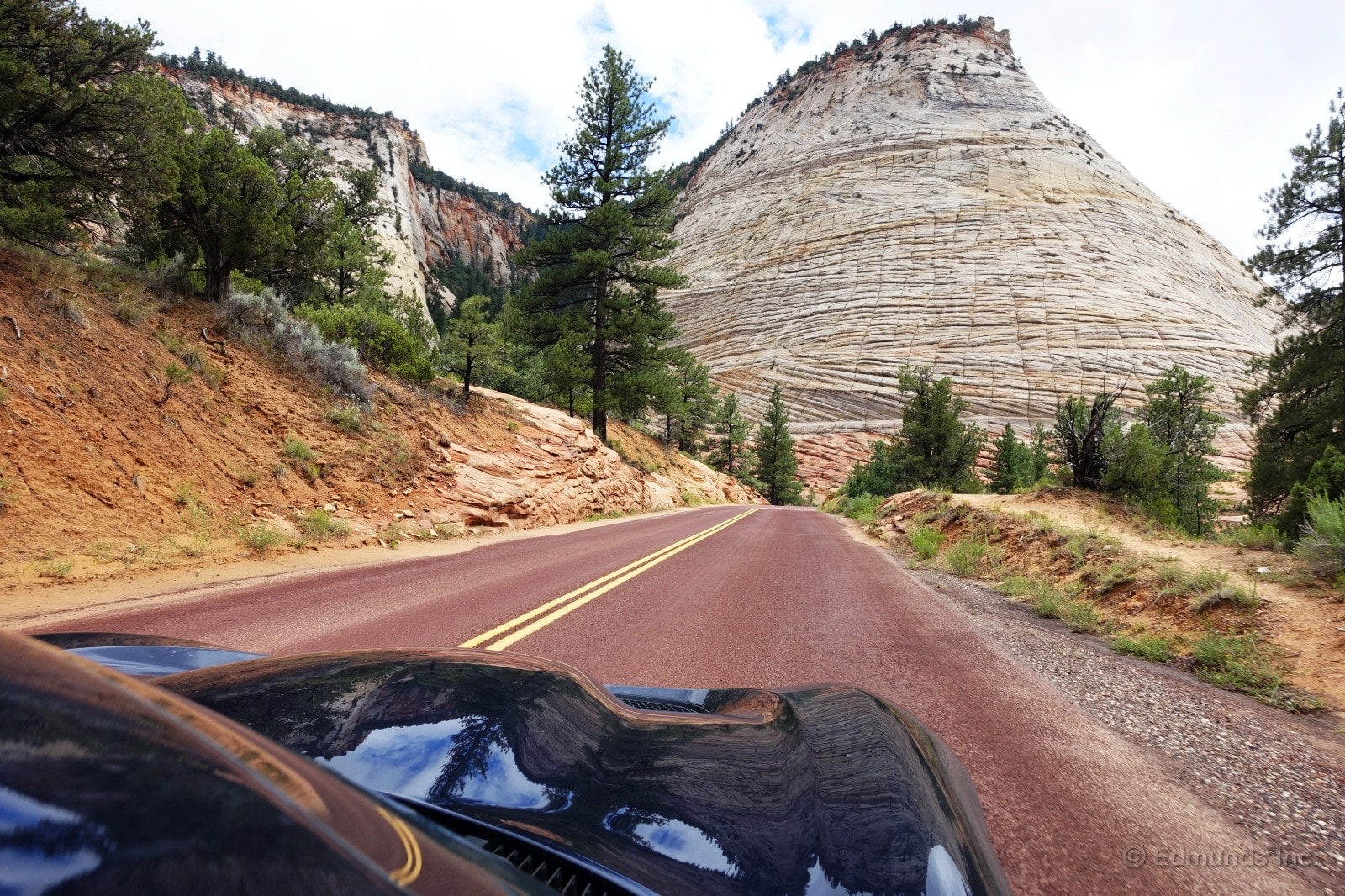
It's the strangest thing: in most cars, any kind of discomfort inevitably degrades into get-me-out sores after a few hours. Not so in the Viper, despite the seat's unusual lumbar and unrelenting ride quality. I never got road butt or the squirms even after eight hours in the saddle. The general modest discomfort in the Viper just plateaus indefinitely to a still-tolerable level. This phenomenon is impressive.

Even in its difficult-to-photograph dark blue hue, this Viper has an uncommonly common appeal. Someone would come over to chat nearly every time I stopped for fuel or food or a photo op. They always knew it was a Viper, too. For a car that looks like a cartoon superhero, it somehow manages to be unostentatious.
In virtually every one of these interactions with strangers, they'd ask a question or two about the Viper and then immediately pivot into talking about their own car. For one guy, it was his old BMW 850i. Another guy had a Pontiac Grand Prix GXP, the one with the tranverse small-block V8 driving the front wheels. Yet another had an old Malibu. Someone else had a Corvette. And they loved talking about it.

The Viper is the ideal vehicle in which to explore this nation. It showed to me that no matter where you go in this hugely diverse (and just plain huge) country, people can all be united by something as seemingly ubiquitous as a car. It's a special car that can pull this off, and there isn't another one I can think of that would elicit the universal good vibes I observed. Pickups and Jeeps are too utilitarian. Italian exotics are eye-catching but pretentious. A Corvette, too common.
There just isn't another car like the Viper. It's the fabric that holds this nation together.
(Make sure to click through the photo gallery at the top of this page. There are a lot of additional photos not included in the body of this post).
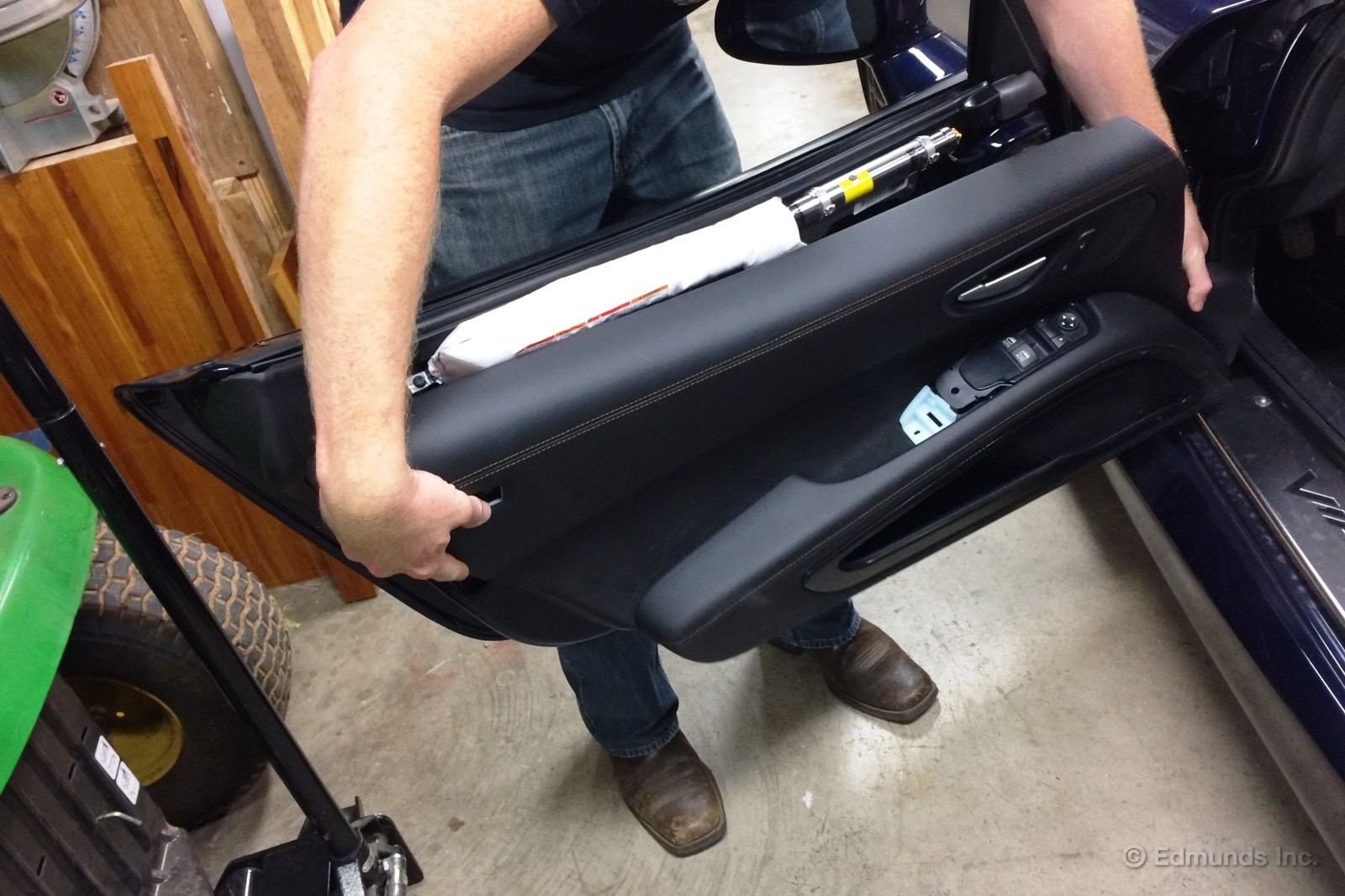
What's going on here?
There had been a rattle in our Viper's driver side door since we took delivery of the car, or thereabouts. Sometimes the rattle was prominent, sometimes not so.
Carlos managed to zen himself into submission and lived with that ludicrously obnoxious noise all the way across the United States. I don't know how he did that without plumbing the depths of madness.
Me, I couldn't hang. A few hours into my coast-to-coast road trip in our long-term 2015 Dodge Viper, I snapped. The rattle occurred constantly. It wasn't like a little click or something when you drive over a pavement seam. It was a persistent rattle/jingle originating maybe a foot from the driver's left ear. Imagine three quarters in a dryer and you're on the right track.
After dinner at my friend's house in Knoxville, Tenn., we broke out the tools. Actually, first we broke out our monkeypower and just sorta guessed at how we thought the door card should be attached and tugged accordingly. When that didn't produce results, we turned to the internet and within seconds had an entire 2015 Viper service manual on the tiny, magical device clutched in our fingertips. Amazing.
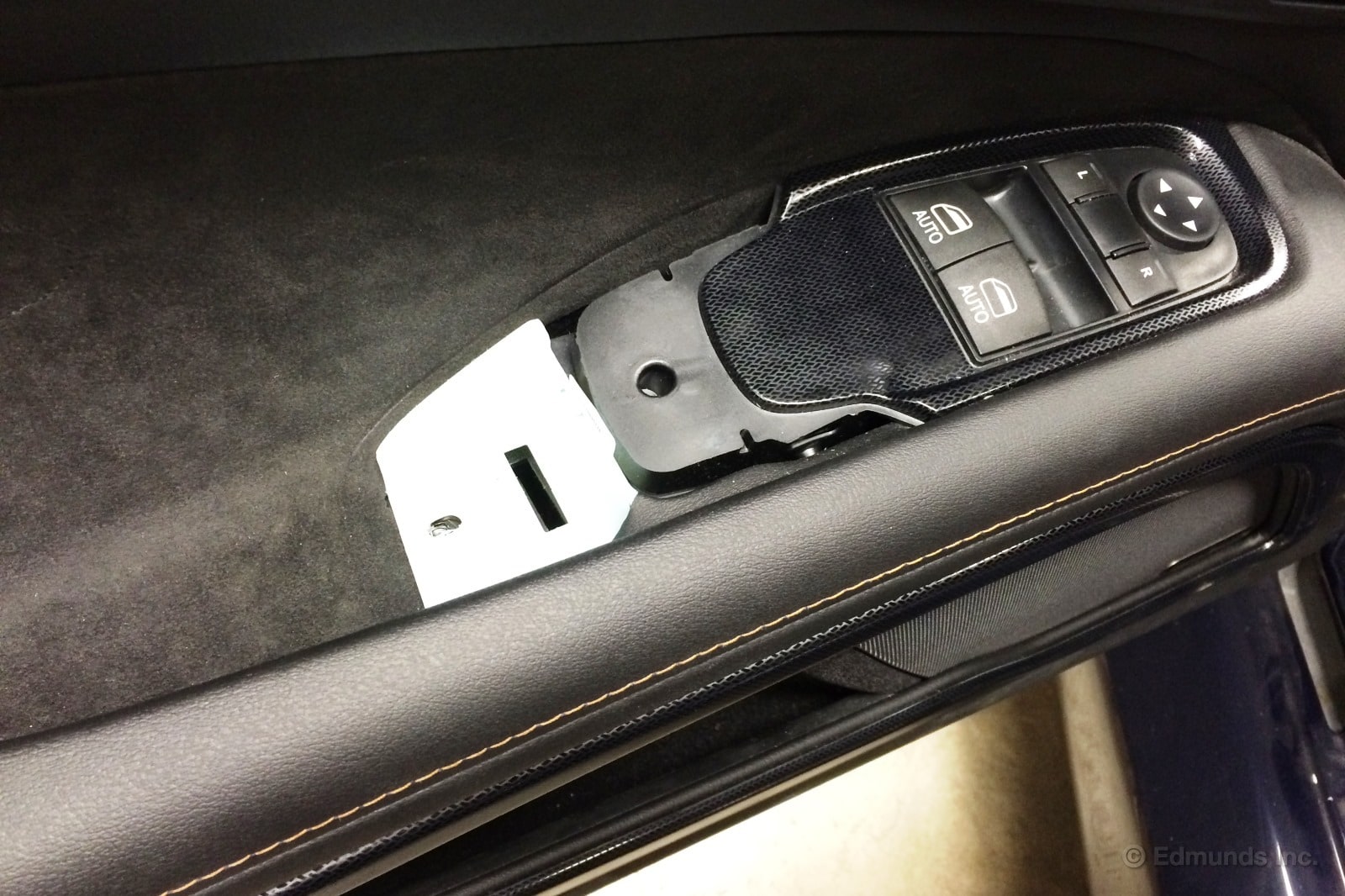
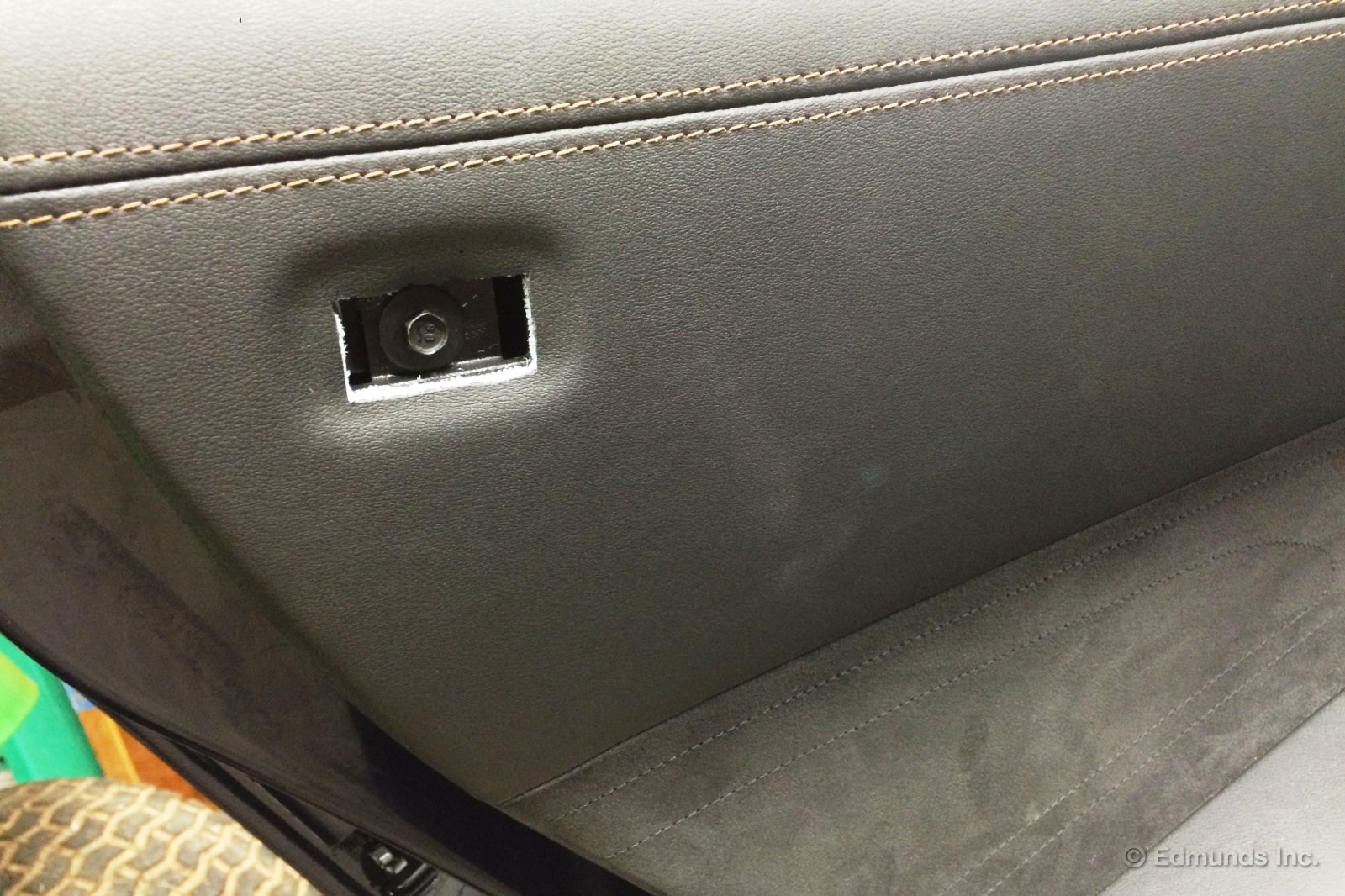
Three fasteners and three strategic pulls later, the door card was free. The source of the noise instantly became apparent.
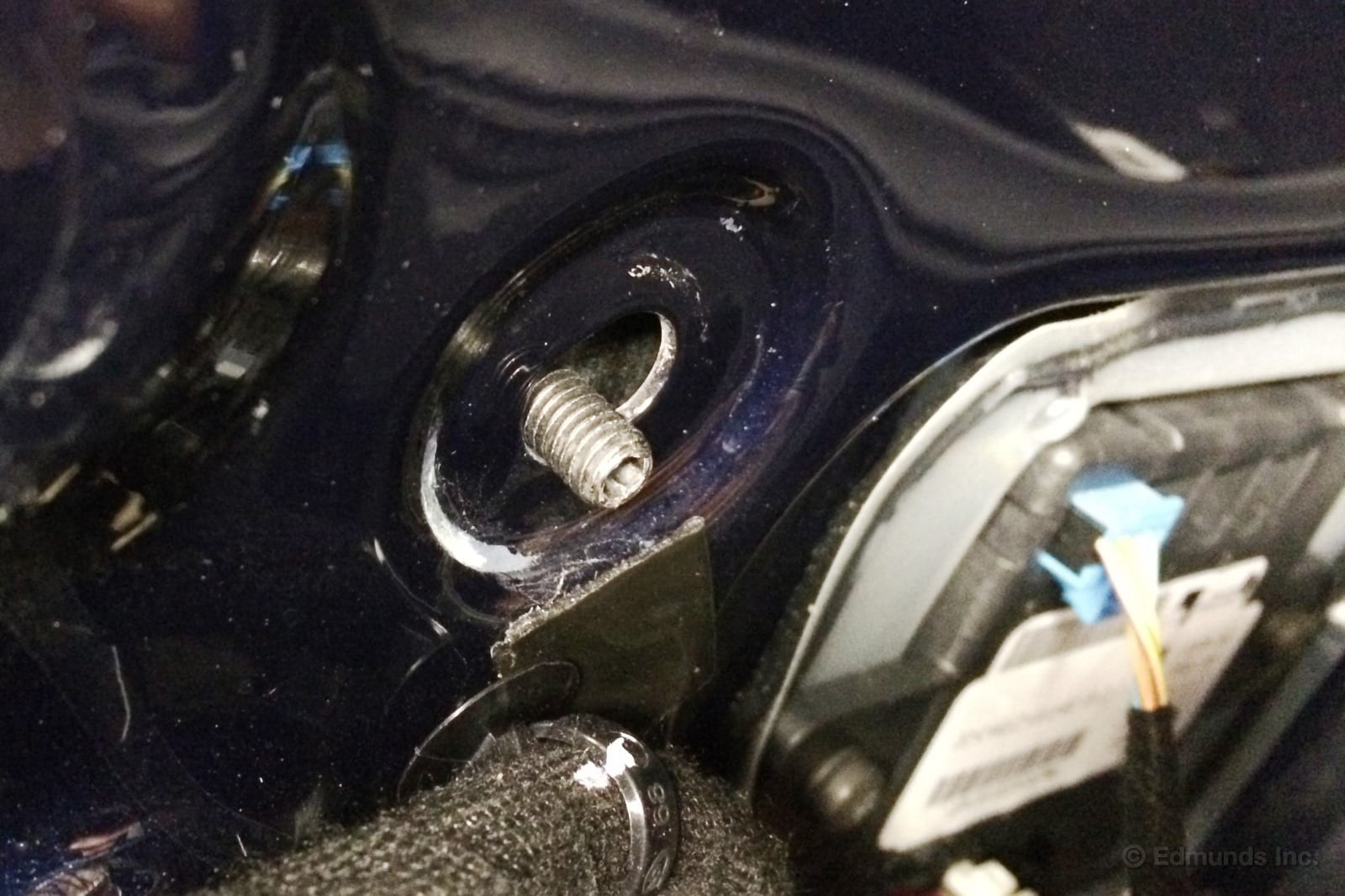
That little exposed stud is the offender. Without a nut anchoring it, the stud was loose and dancing around. When wiggled, it produced exactly the sanity-draining rattle with which I had become too familiar.
I assumed the original nut would plunk to the floor when the door card was liberated from its mooring, but no such luck. We rummaged around and found a right-sized nylock nut in the dusty corner behind the toolbox in the garage and cinched it down (note the little female hex feature in the end of the stud to hold it stationary while tightening the nut). Boom, no more rattle! Sanity restored.
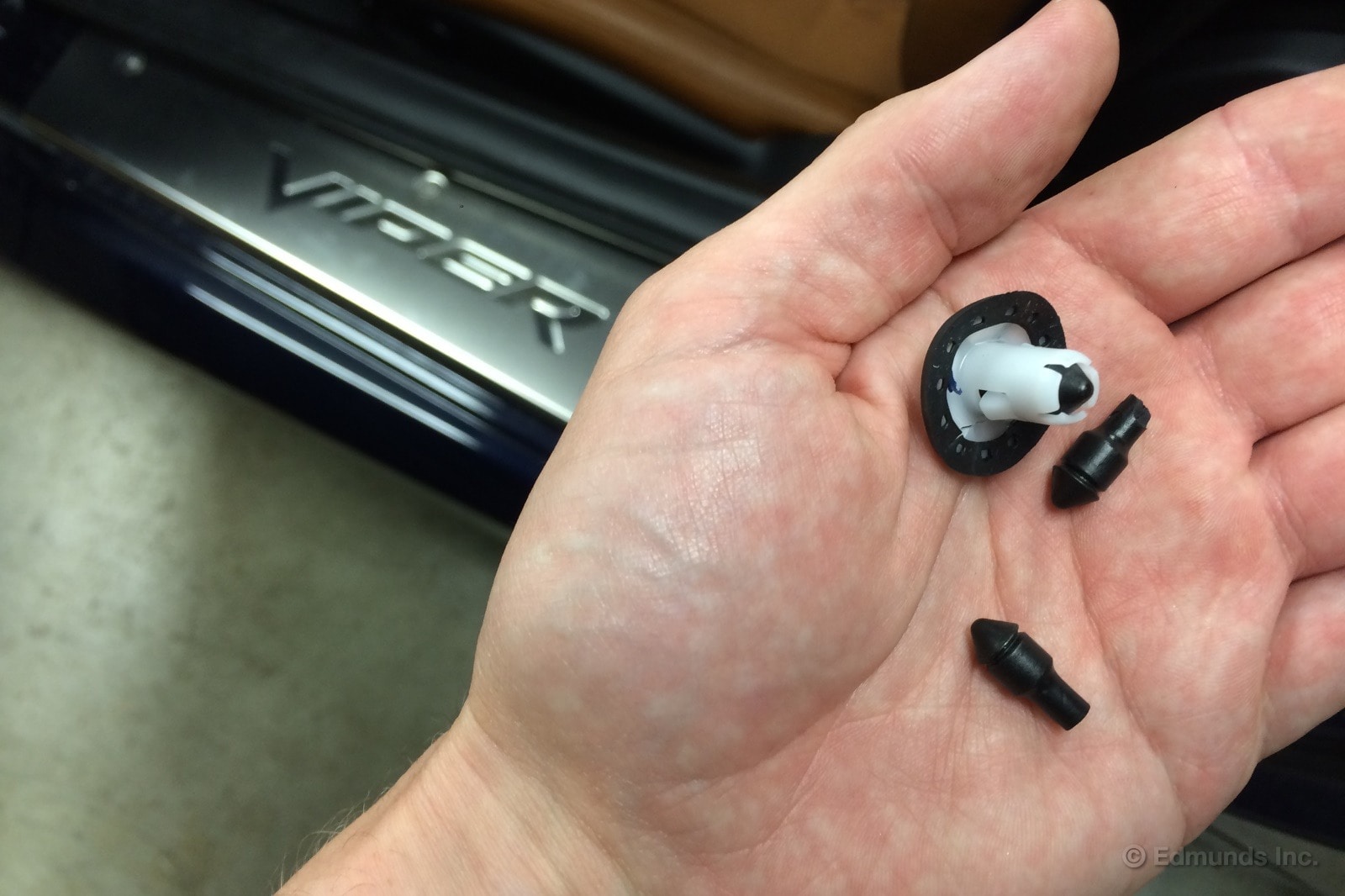
Of course, there were a few casualties along the way. These plastic door trim clips exploded when the door card was gently lifted away from the door. I didn't feel the least bit bad about that. Judging by the clips that were missing before I started in on this field repair, I'm not the first person who's been mucking about with this door.
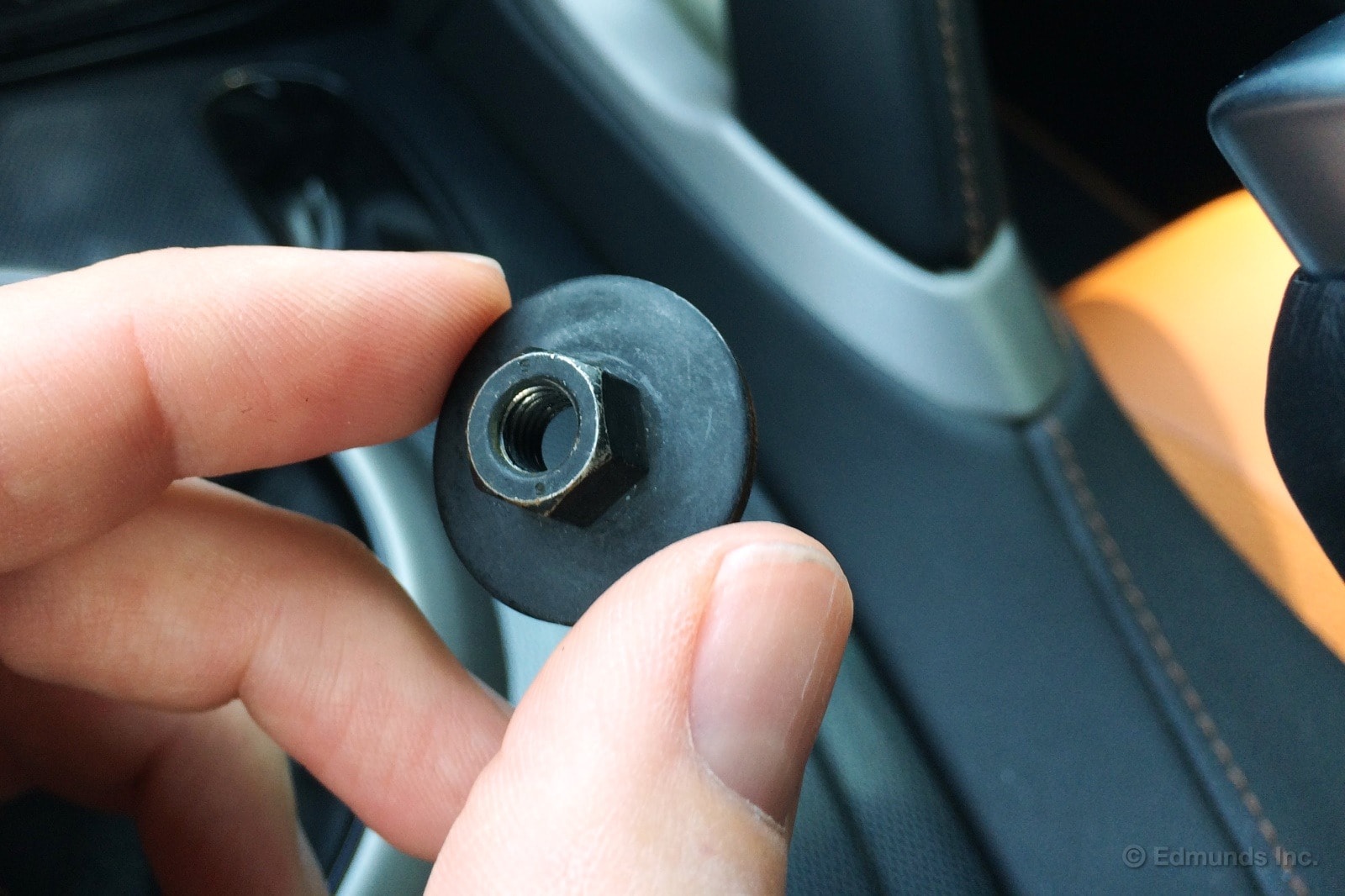
The next morning I found the nomadic original nut in the cupholder. Oh well. We'll have the dealer fix this rig for real now that the car's back in California.
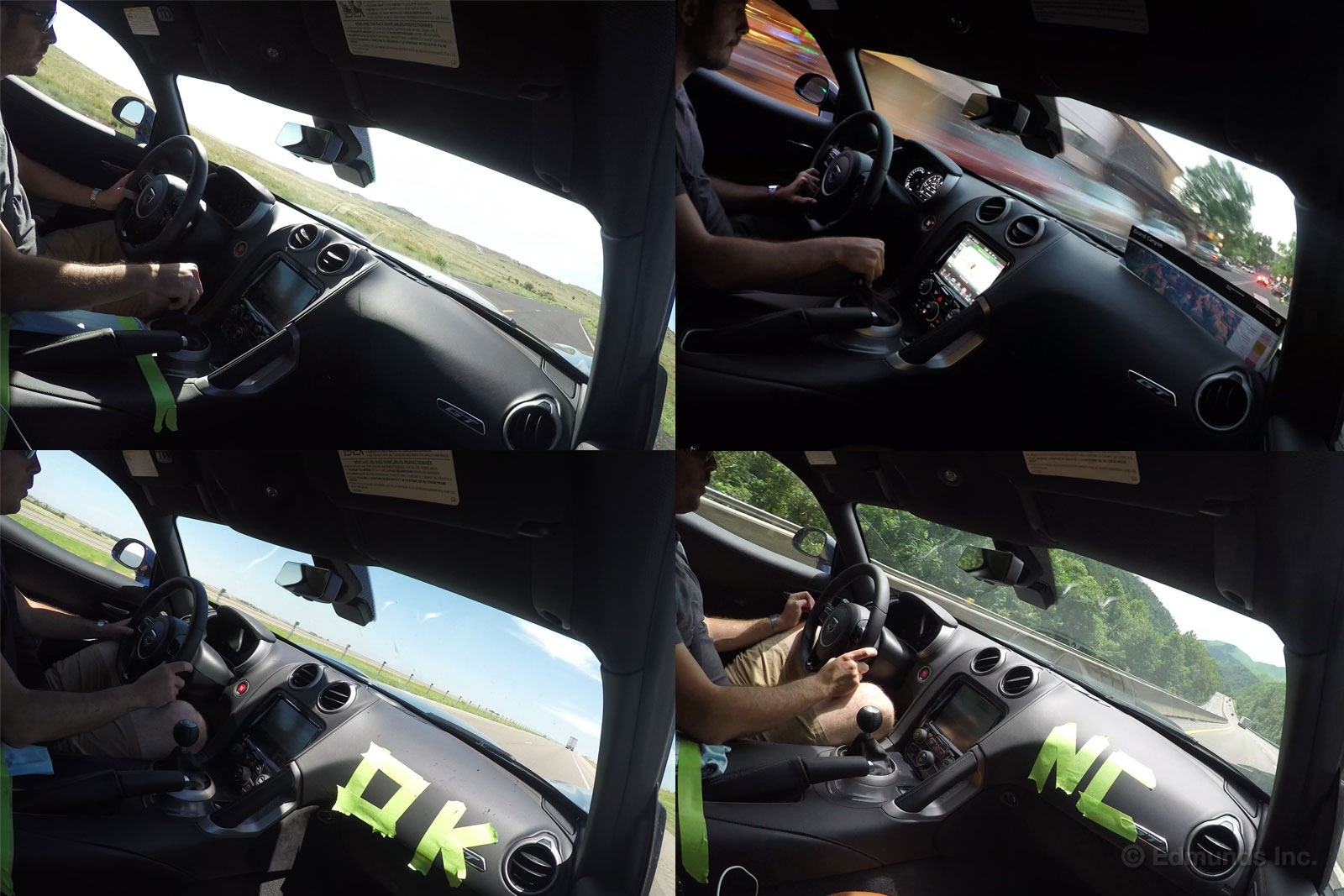
The night before setting off on our cross-country road trip in our 2015 Dodge Viper, I thought it would be cool to do a time-lapse of the drive. I stuck my trusty GoPro to the passenger window and there it sat for the next 5,914 miles.
For settings and tech, I used a GoPro Hero 4 and the convenient time lapse mode. When it worked, it took a picture once every 10 seconds. The Skeleton Housing accessory allowed us to power it with a USB cable plugged into a 12 volt-to-USB adapter.
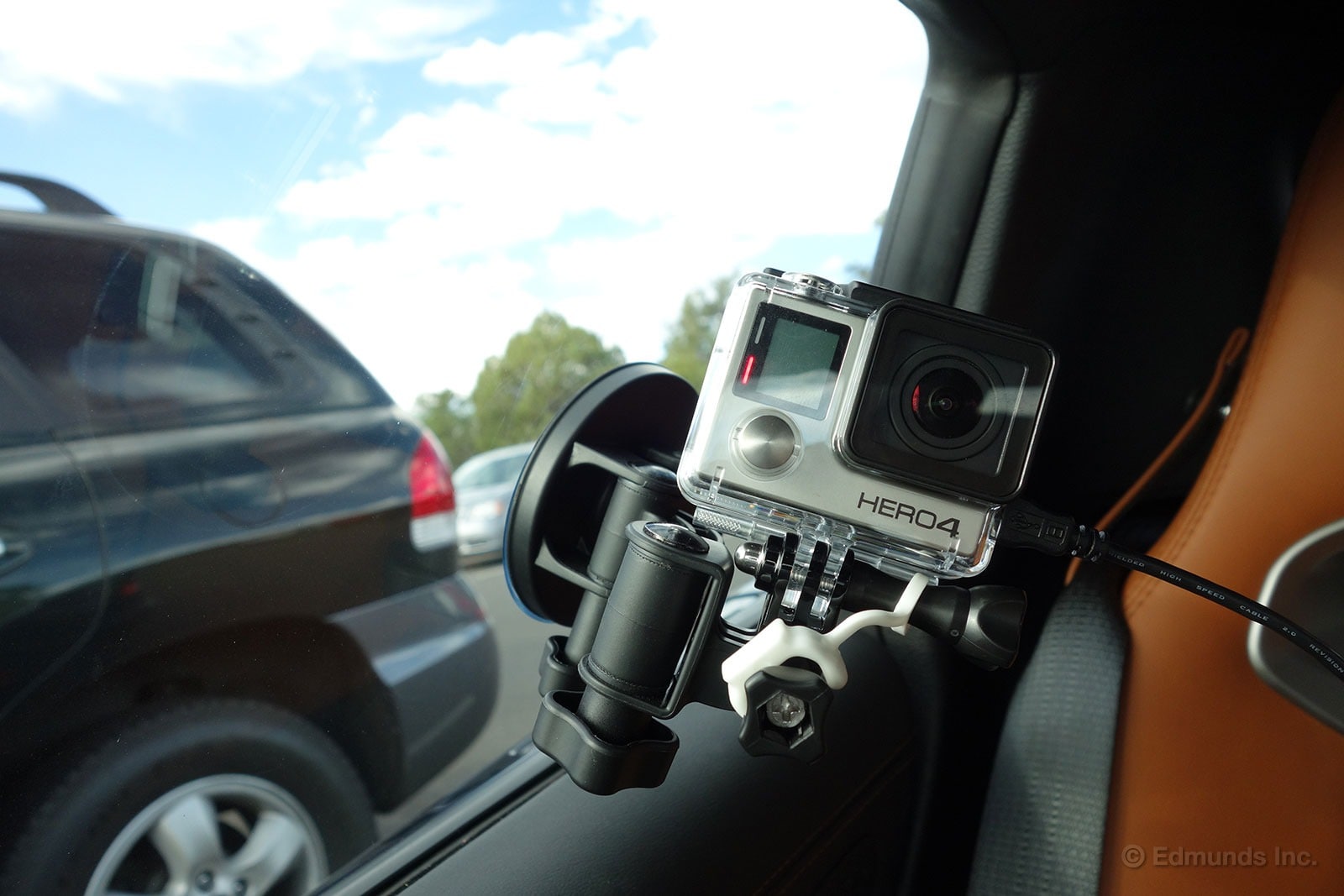
Note: Don't try powering a GoPro from a Viper's USB plug. The camera really doesn't like it. After learning this, I had to remove the GoPro battery to force it to restart.
The GoPro occasionally refused to cooperate. It simply decided to not record my drive from Los Angeles to Needles, and it gave up on Jay altogether in Colorado during the return leg. Still, the video it captured of a Viper rapidly assaulting the horizon is somewhat hypnotizing.
Road Trip Photography Do's and Don'ts
When you're dealing with a car that looks as good as our 2015 Dodge Viper, you'd think taking a good photo requires little more than getting it in the frame. Alas, Jay Kavanagh and I are not photographers. So when we returned from our cross-country road trip with a few SD cards loaded with photos, we handed them to actual photographers: Edmunds.com's Scott Jacobs and Kurt Niebuhr. Their critique follows.
Road trips are about adventure. You want to capture those moments of scenic beauty, history, or hilarity of the place or situation. To us, the most common shots in travel photography boil down into two categories. One is something discovered on its own (e.g., the Eiffel Tower) and the other is comparing two elements (Nana and Uncle Fred standing in front of the Eiffel Tower).
Besides the basics of focus and exposure, simplifying your photos and putting a little thought into them will make them much stronger.
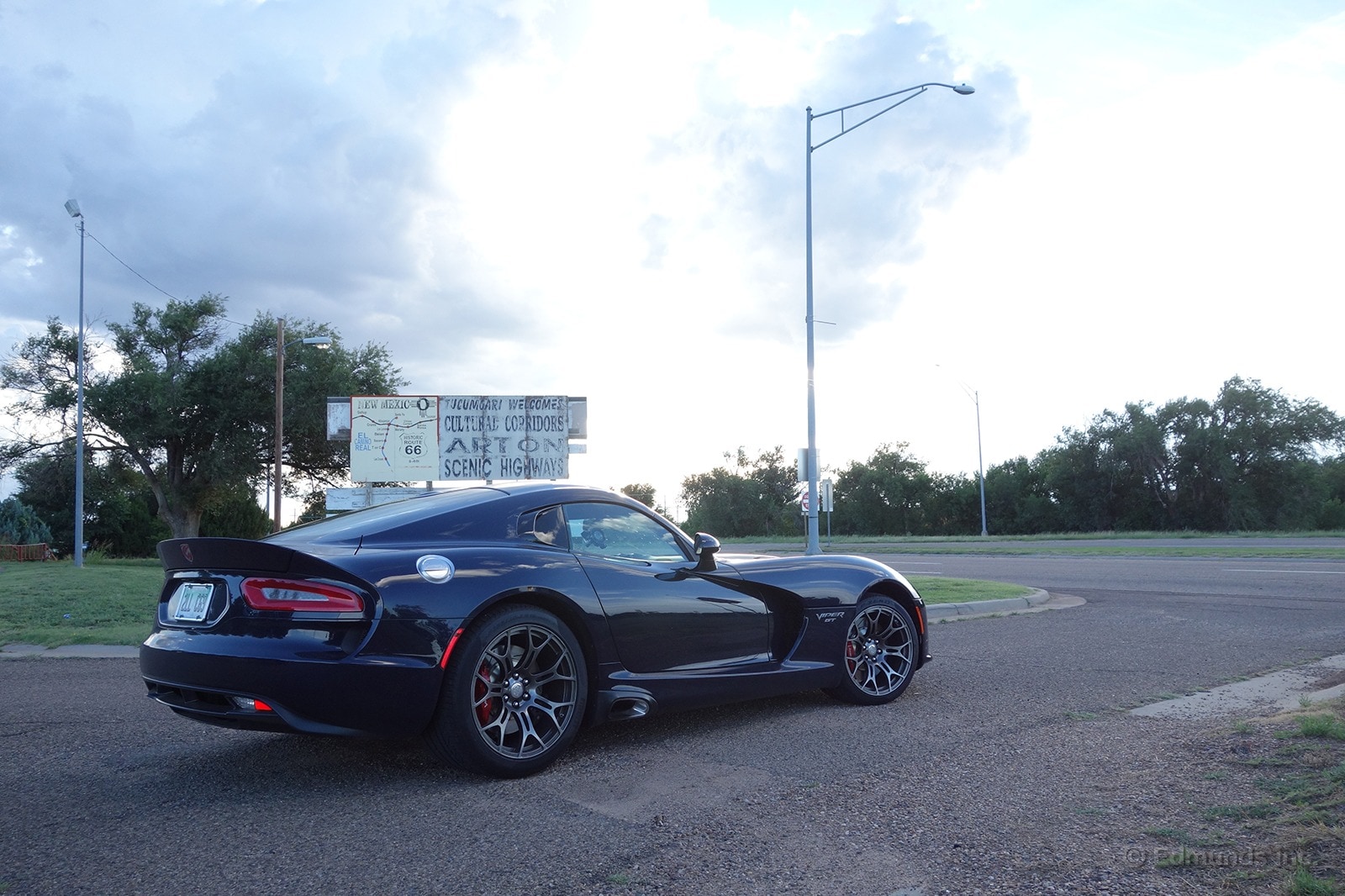
Having a picture of Nana with a sign growing out of her head is jarring to the eye. Here we have the Viper GT in lieu of Nana. When putting two subject elements into a photo, make sure there is room for both.
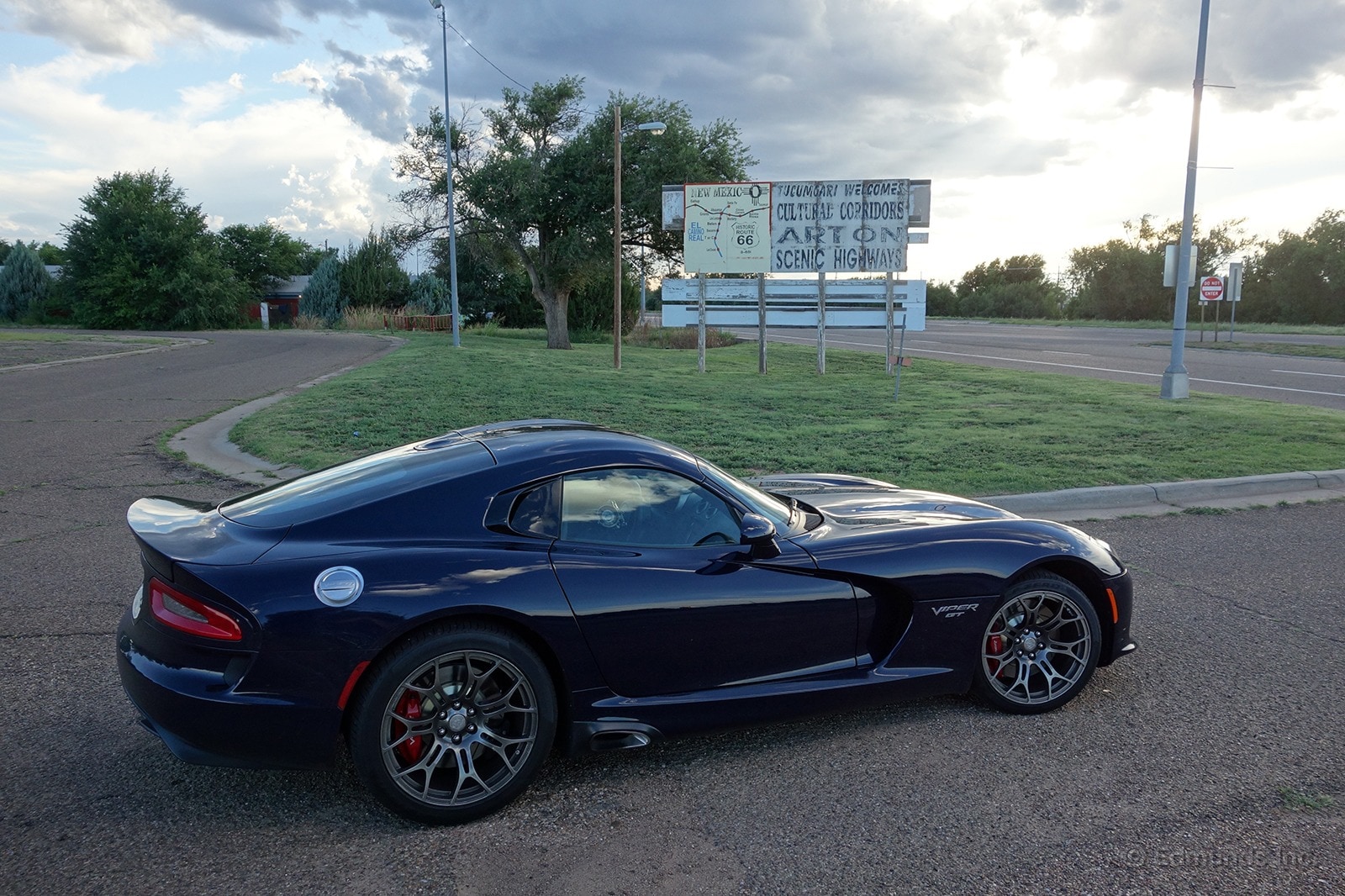
Just standing up and moving a bit to right, there is plenty of breathing room for all. It looks a lot less cluttered and is more pleasing to the eye.

"It's the sun. You can't move the sun." Sage advice from a boss I received many moons ago. Make sure your subject is lit. Here we want both the sign and the car, but the sun is only shining in one direction. I'd rather have the broad side of the car in the sun, otherwise it looks like a big dark blob. By turning the car to the right, you'd put it into the light. License plates and taillights will help break up the shadows, giving it a little more life.
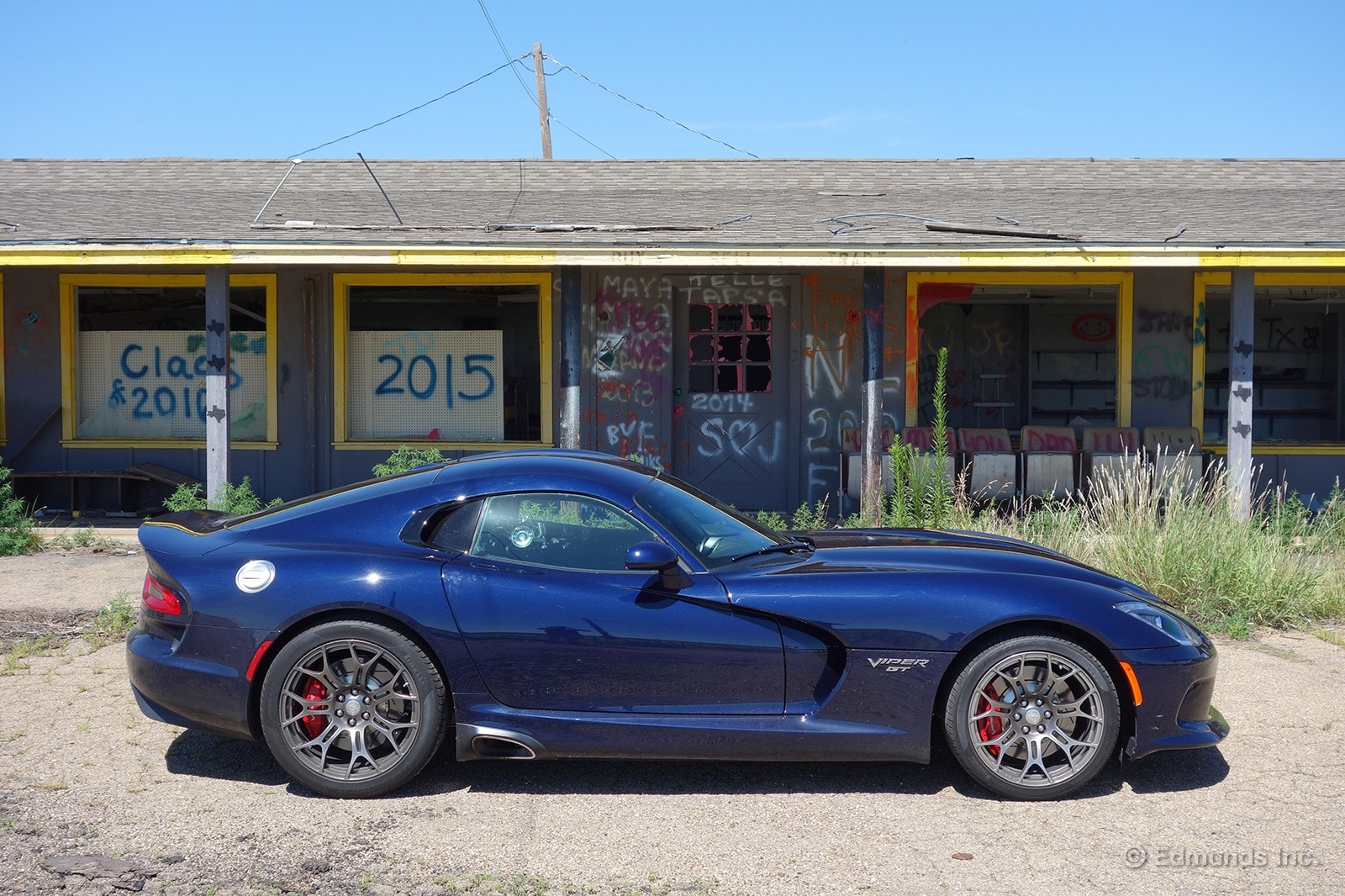
The tried-and-true stand-in-front-of-the-location shot. A classic travel format, but boring.
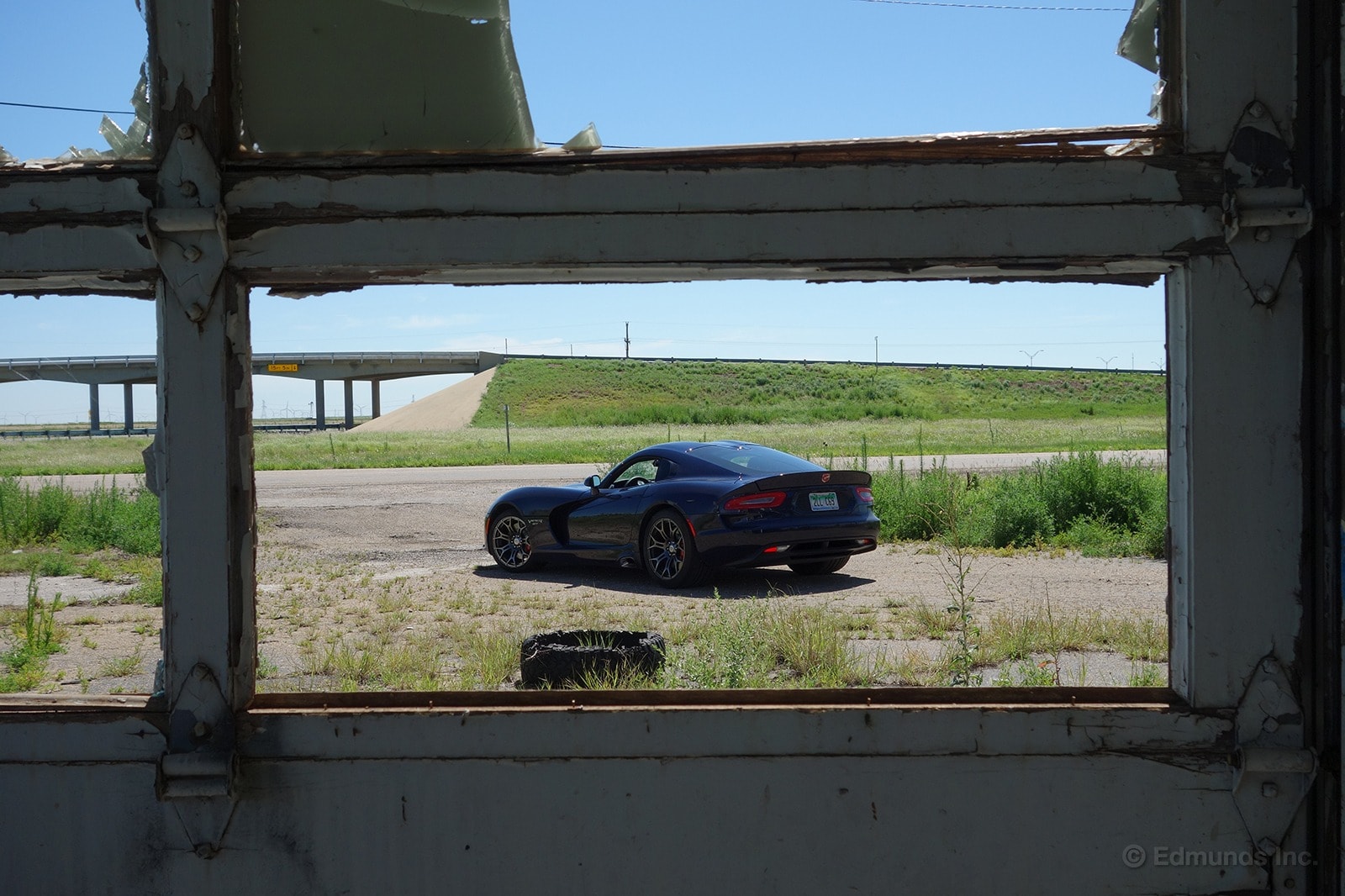
By giving it a little thought and looking for a different point of view, you can make your photo so much more interesting. Just be careful of broken glass and Hantavirus.
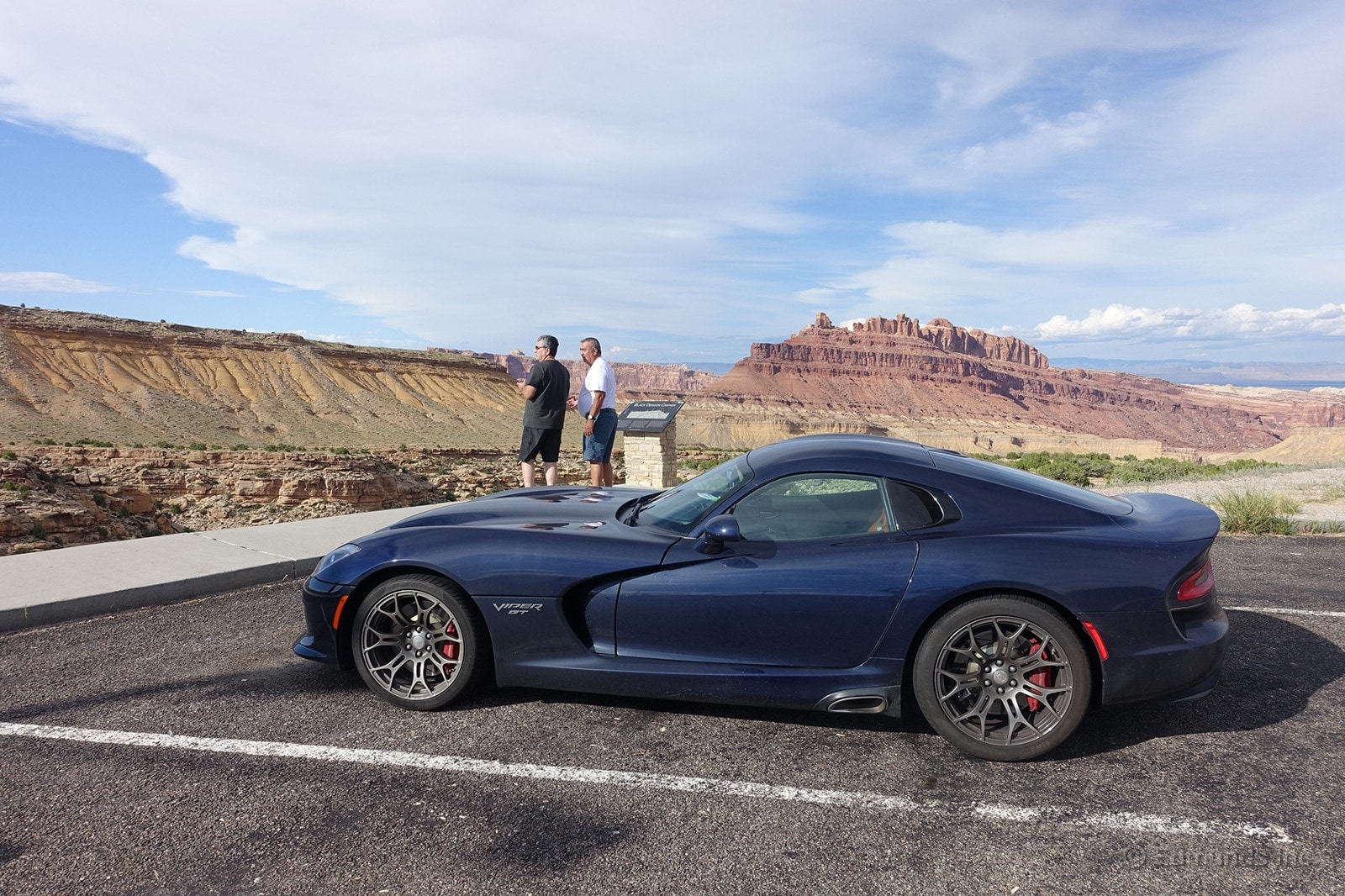
"Excuse me sir..." People getting into your shots are only slightly more annoying than in-laws. They just clutter the shot and are very distracting.
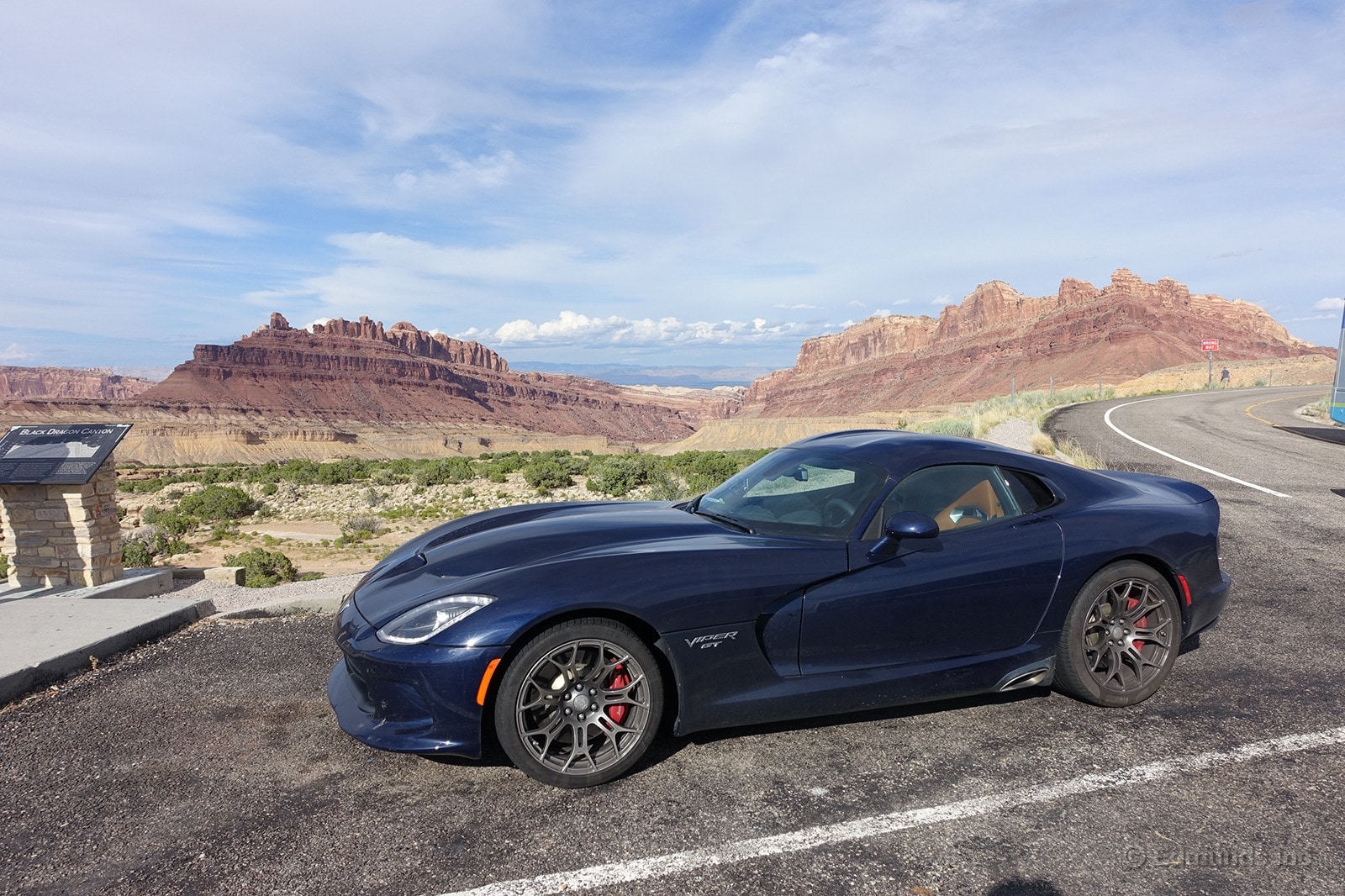
Control the situation. Move to an angle where they can't photobomb you. In this example, a less cluttered shot increases its scenic beauty.
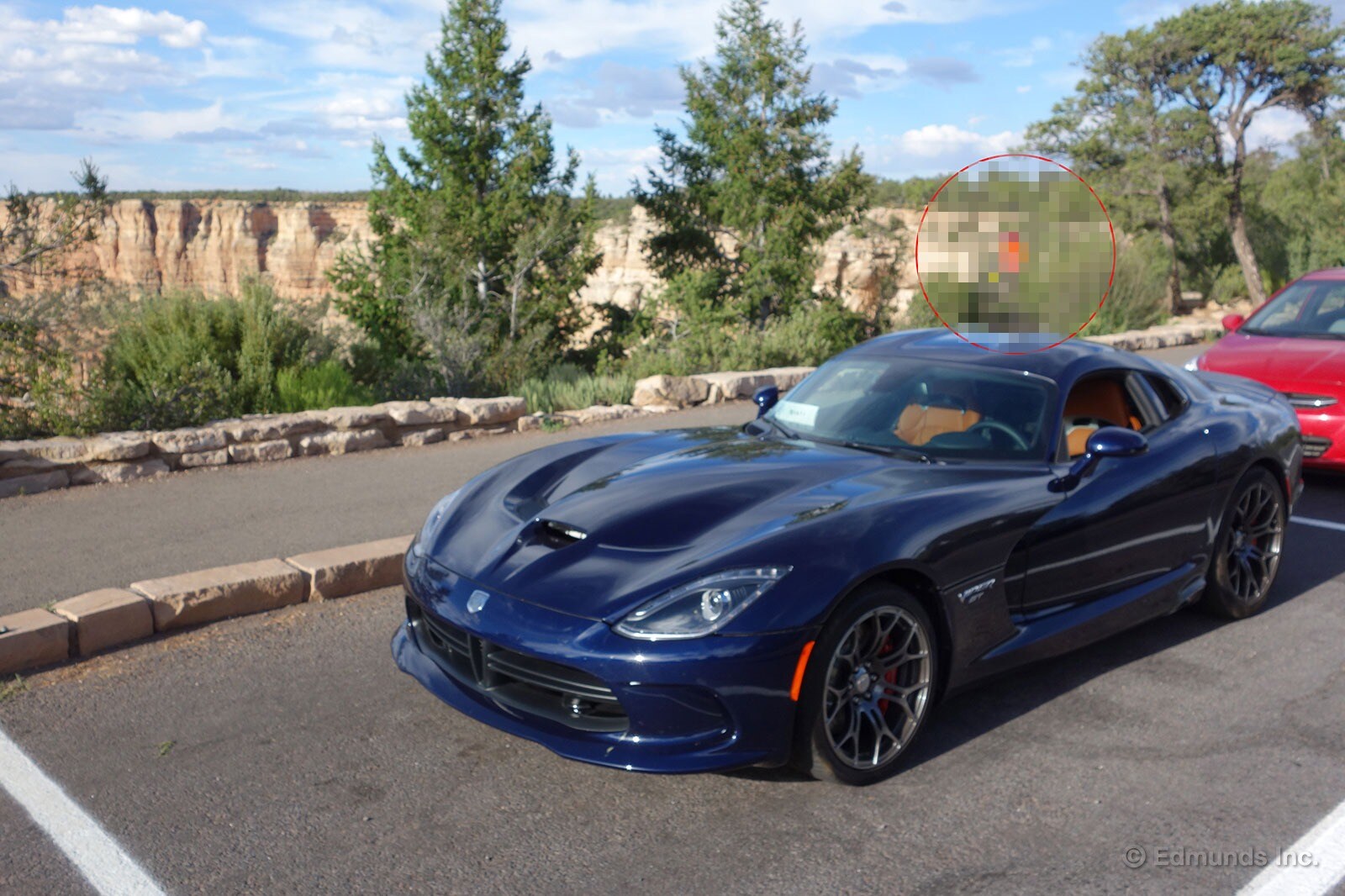
Be aware of your backgrounds. You may never know when somebody is taking a leak in the bushes. OK, maybe they weren't, but the bright orange jacket brings your eye right to it and detracts from the rest of the photo.

Proper framing of a subject can make a real impact. Here the Viper is nestled under the theater marquee. It combines two elements very effortlessly. The lighting flare gives a touch of drama and some life to the photo.

After driving our long-term 2015 Dodge Viper over 5,000 miles across the country and back, Jay Kavanagh and I had a few things to say. So we thought we'd try something new: With a few GoPros rigged up in the interior, we took a short drive up into Malibu and chatted about our experiences and the car itself.
We decided to wear matching shirts, too.
Let us know if you like this video format. We're eager to experiment more with other vehicles in the Edmunds.com garage.
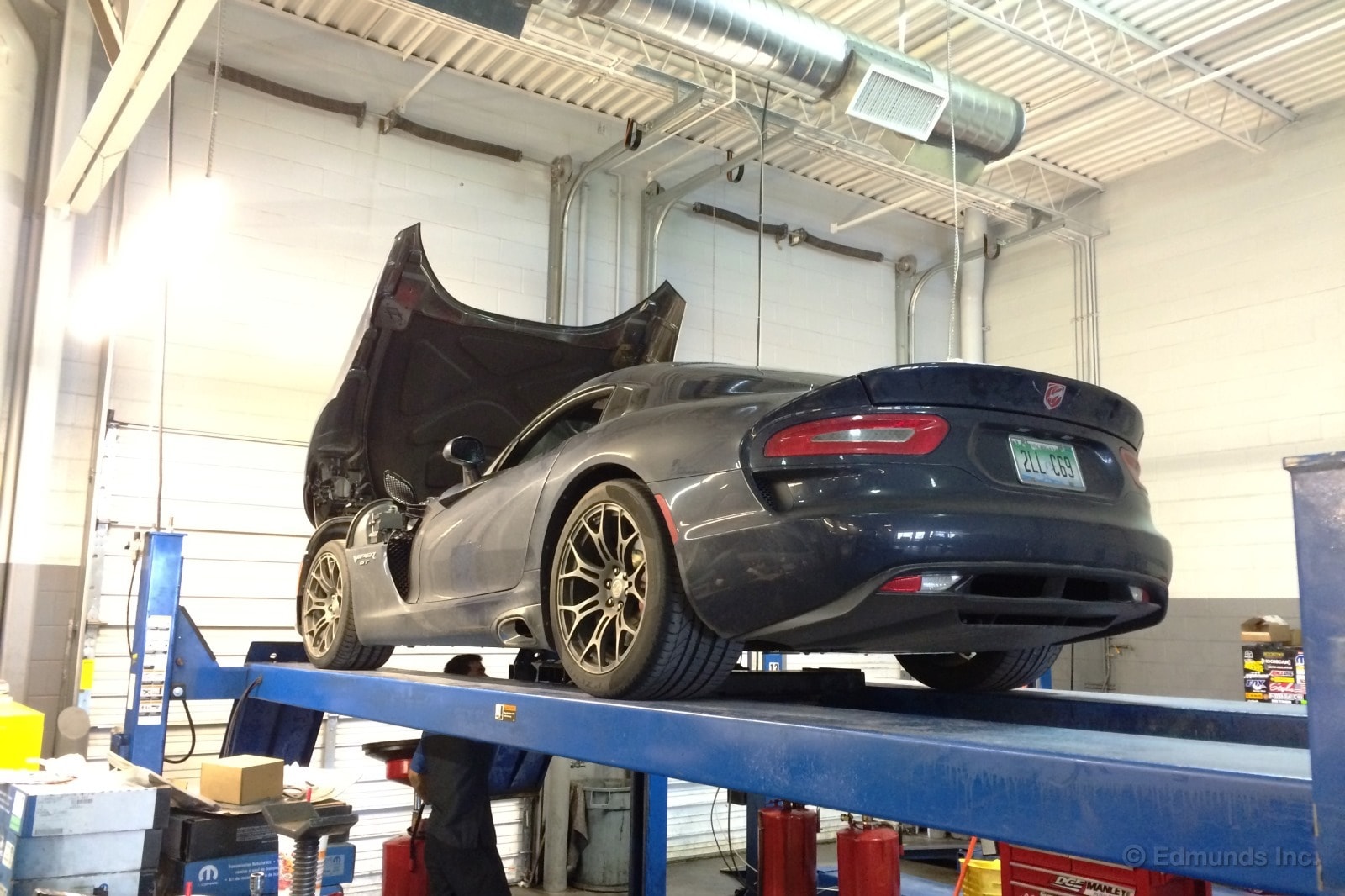
At some point during my coast-to-coast road trip in our long-term 2015 Dodge Viper, it became apparent that the oil change interval would crop up before I returned to Los Angeles.
It appeared as though I'd be in Denver roughly near the point when the odometer reached the 6,000-mile mark for its first service. This would work out well, I thought, until later in my trip when my arrival plans firmed up. That is, it became clear that my arrival in Denver would be on a Saturday evening, and I would be leaving Denver on Sunday. Dealers are closed until Monday. Furthermore, logistics precluded getting the oil changed at my previous stopover in Kansas City.
Utah, then.
My next stopover/oil change opportunity after Denver was in Richfield, Utah. I called the Dodge dealer there to arrange an appointment for that Monday morning. The service advisor checked to ensure they had the correct Viper-y oil in stock, confirmed it and said 'see you in 30 minutes.' Richfield is apparently a pretty sleepy place.
When I arrived at the dealer, I received the bad-ish news: they had the correct oil in stock, and enough of it, but didn't have the Viper-specific oil filter on hand. Oops. He called the next dealer on my route that would be big enough to have the right stuff on hand and made arrangements to have the Viper serviced in St. George.
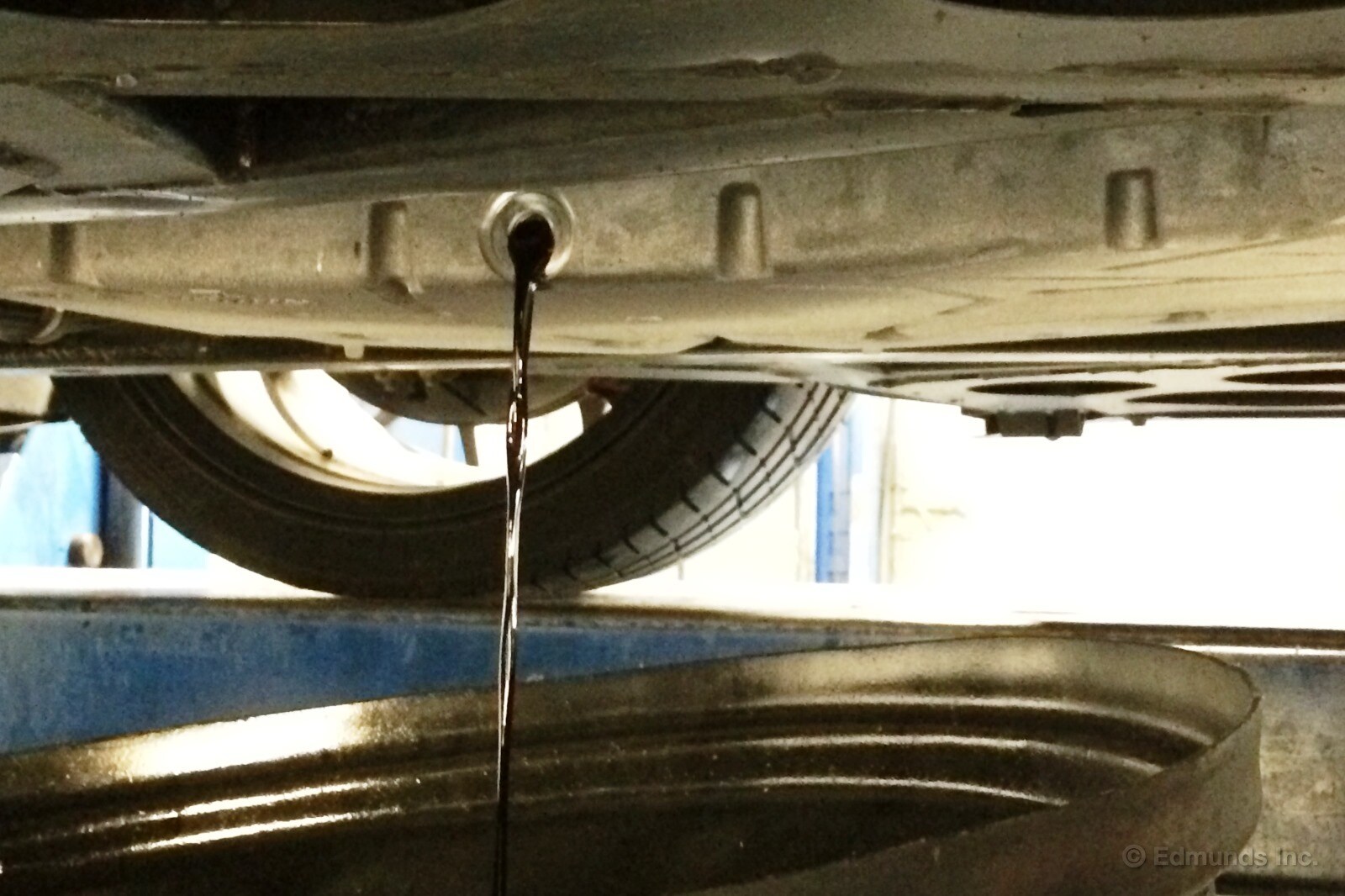
I arrived in St. George about 30 minutes before closing. They took the Viper in right away and I milled about in the waiting area. While there, I noticed the technician trying to open the trunk. He was struggling with the key fob's trunk release button and pushing and pulling the hatch. It wouldn't open. He seemed frustrated by its obstinacy.
To be fair, the Viper's hatch is kind of a hassle to open. The latch doesn't really release even when the popper's popped. I've since figured out that to successfully open it, you press the release button located above the license plate while simultaneously pushing upward on the hatch with the heel of the same hand. It almost looks graceful now.
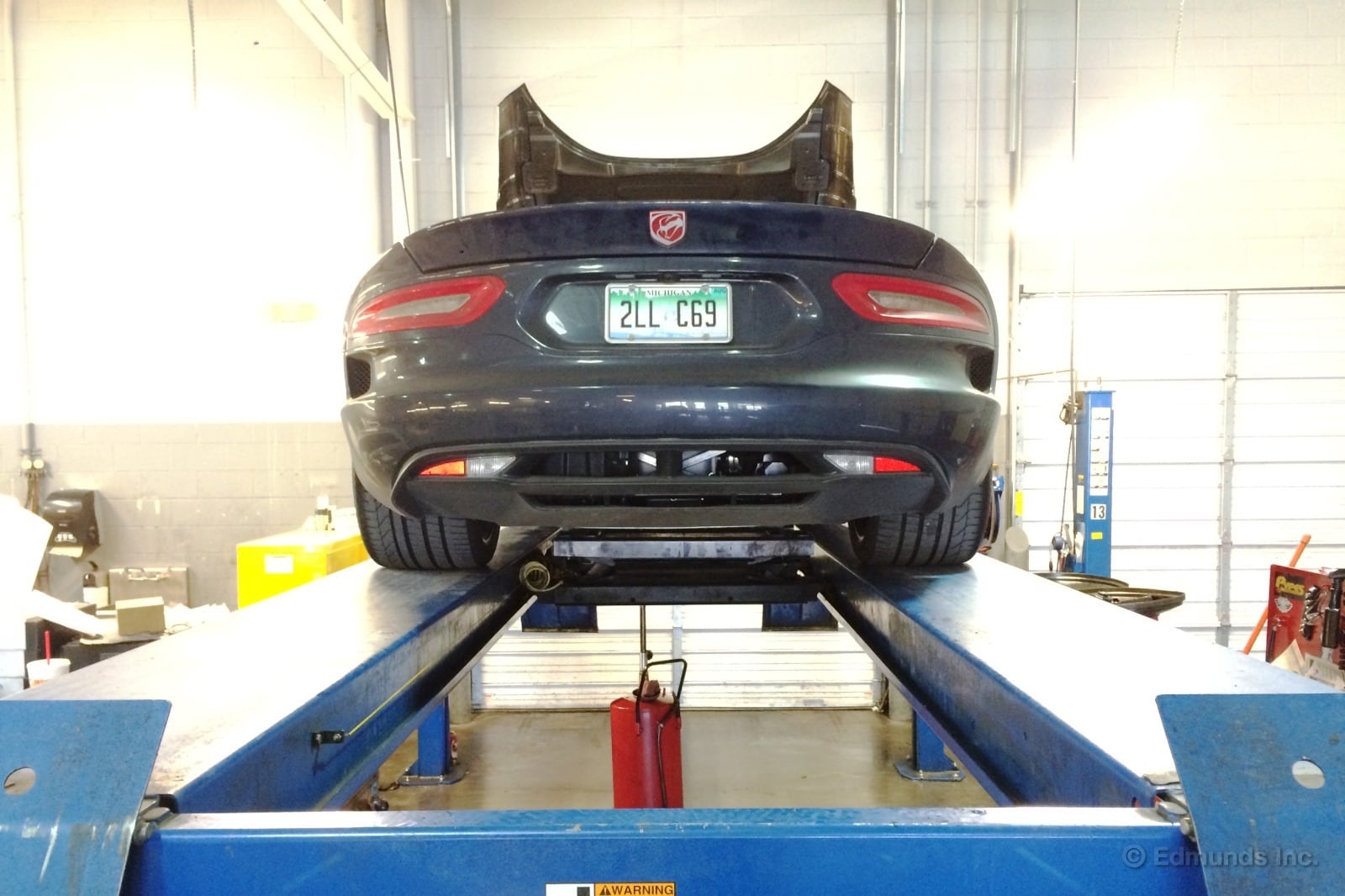
Anyway, I wasn't sure why he needed to get in the trunk, but I figured I'd clue him in on its idiosyncracies nevertheless. I went into the service bay accompanied by the service manager and mentioned that the trunk is indeed weird and opened it for him.
Reading my mind, the service manager asked the technician: "So, why do you need to get into the trunk?"
His response was one of the more baffling things I've heard in my car-guy life: "I was looking for the engine."
Speechless.
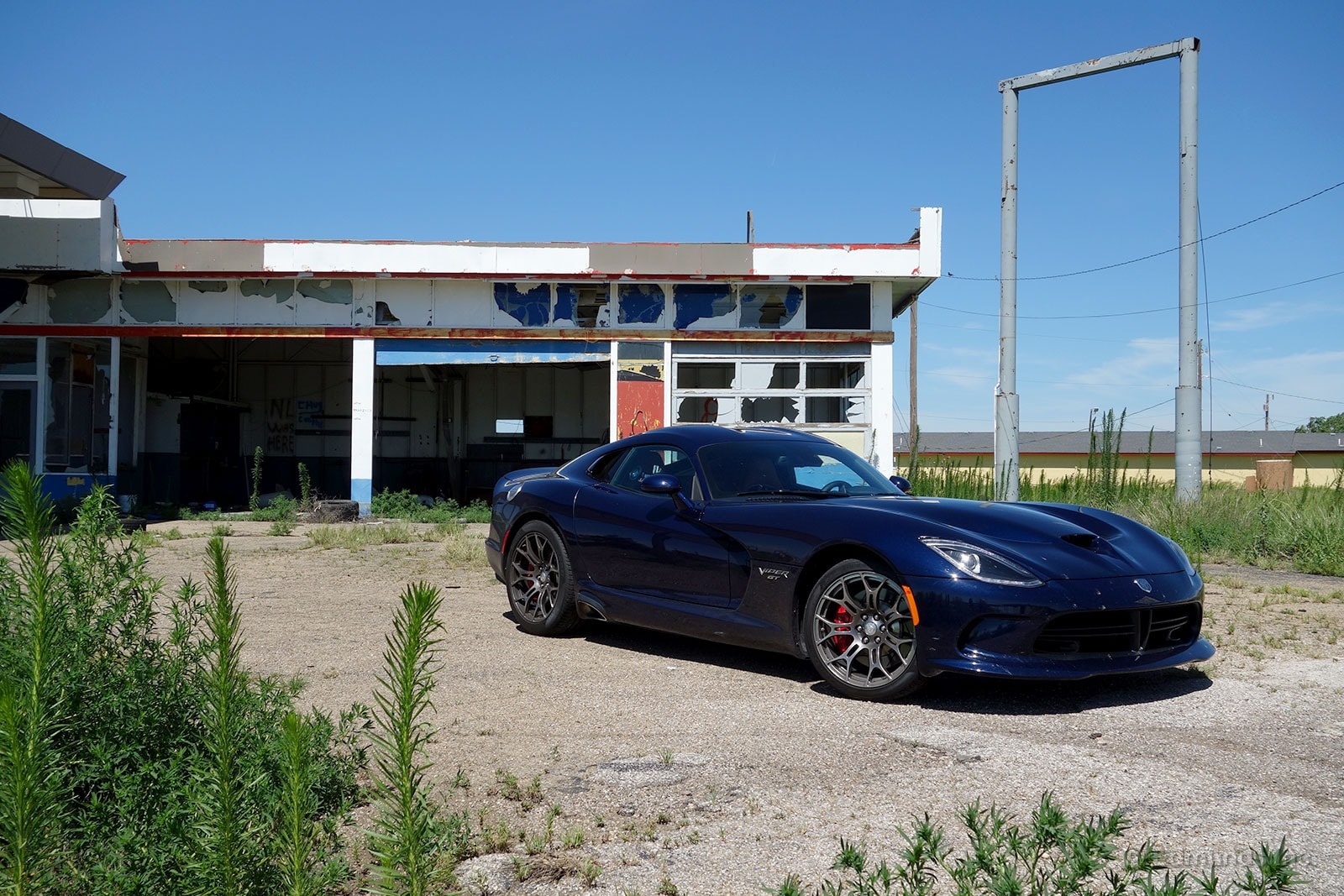
By now you've read about our coast-to-coast drive and return trip to Los Angeles in Edmunds’ long-term 2015 Dodge Viper. If not, go ahead. We'll wait.
Here's a breakdown of our round-trip drive across the country in numbers:
Miles travelled by Carlos and Jay, respectively: 2,740, 3,124
Gallons of gasoline consumed: 290.5
Average number of fuel stops per day: 2.1
EPA highway mpg rating: 21
Carlos and Jay average mpg: 20.2
Best tank mpg: 25.1
Worst tank mpg: 15.5
Most miles traveled before refueling: 288
Average speed, mph: 63
Number of times Carlos and Jay burned legs against the exhaust pipe, respectively: 3, 0
Pairs of shorts worn by Carlos and Jay, respectively: 4, 0
Number of oil changes: 1
Capacity of oil system, in quarts: 11
DIY repairs performed: 1
Range of engine displacement guessed by onlookers, liters: 7.0-7.6
Cylinder count guessed by onlookers: 12
Number of times asked how much it cost: 0
Number of other Vipers encountered: 1
Minimum number of times Carlos and Jay cursed the 1st-to-4th skip-shift "feature": 8
Minimum days Carlos and Jay would wait before doing this again, respectively: 25, 31
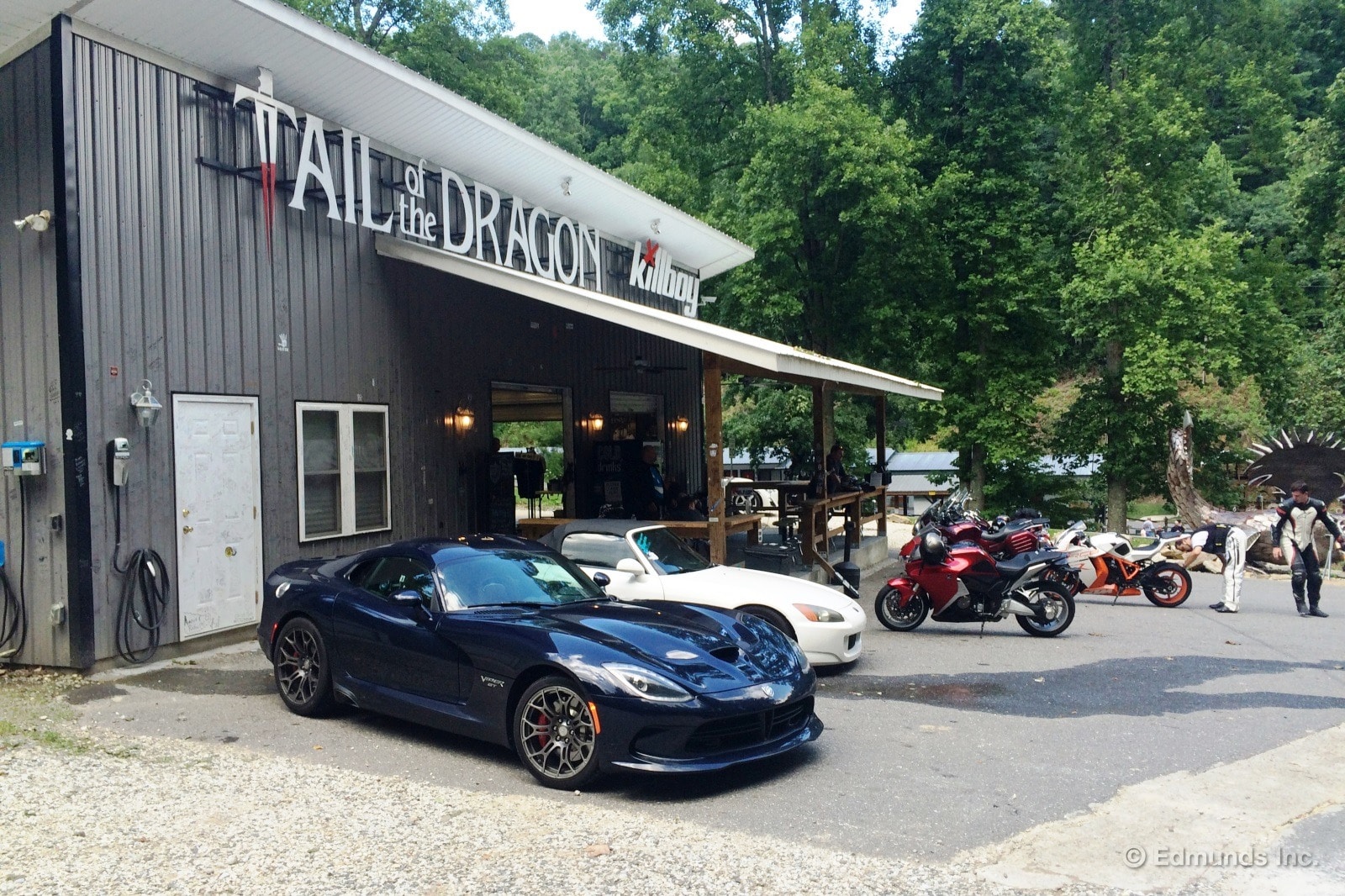
One of the side effects of my coast-to-coast road trip in our long-term 2015 Dodge Viper is that it warped the time-space continuum.
By this, I mean that the monumental gravity of my wraparound cross-country voyage dwarfed all possible side trips in its wake. Destinations a hundred miles or so away suddenly seemed not nearly so far.
So it was that I ended up venturing to The Tail of the Dragon, an 11-mile winding stretch of tarmac on Route 129 in Robbinsville, North Carolina. 'Hey, it's only that far away!' I said to myself, looking at my route on the scale of the entire nation.
It was mid-afternoon by the time I reached The Dragon. A thousand degrees and eleventy billion percent humidity at the time, I picked up some bottled water at the kitschy shop located right at the base of the drive (shown above). There were all manner of Dragon sticker-festooned rides in the lot. The Dragon has something of a mystique surrounding it.
Hmm. I was starting to regret this. For me, overt fanboyism always tends to induce skepticism.

While I staged at a large turnout up the road to get the above photo, a C7 Corvette pulled in behind me. It was driven by a couple from Ohio. Their destination? The Dragon. They'd taken holiday specifically to drive their new C7 on this very road. Uh-oh. More fanboyism.
They had pulled over to wait for a break in traffic and to ask about the Viper. We chatted for a bit and then they took off up the road once there was a good, long spell of no cars. I finished my amateur photo shoot, buckled up and followed suit.
I caught up to the C7 after a few miles of traffic-free motoring. About halfway through the drive we came upon a battalion of Harleys. Slow-moving Harleys. Slow-moving Harleys that refused to use turnouts. And that was that. Brain-dead traffic is, unfortunately, one of the prices paid for popularity.
The Dragon is a good twisty road, with decent variety among its cambered and blind corners. I'm not sold on the hype surrounding it and I suspect there are many other roads in the area that are of similar topography, but with less traffic. Maybe I'm just spoiled by the plentiful spectacular canyon roads here in SoCal.
Still, if you're in the area of Robbinsville during an odd time — say, mid-morning on a weekday — check it out. Better yet, go exploring. Find your own Dragon.
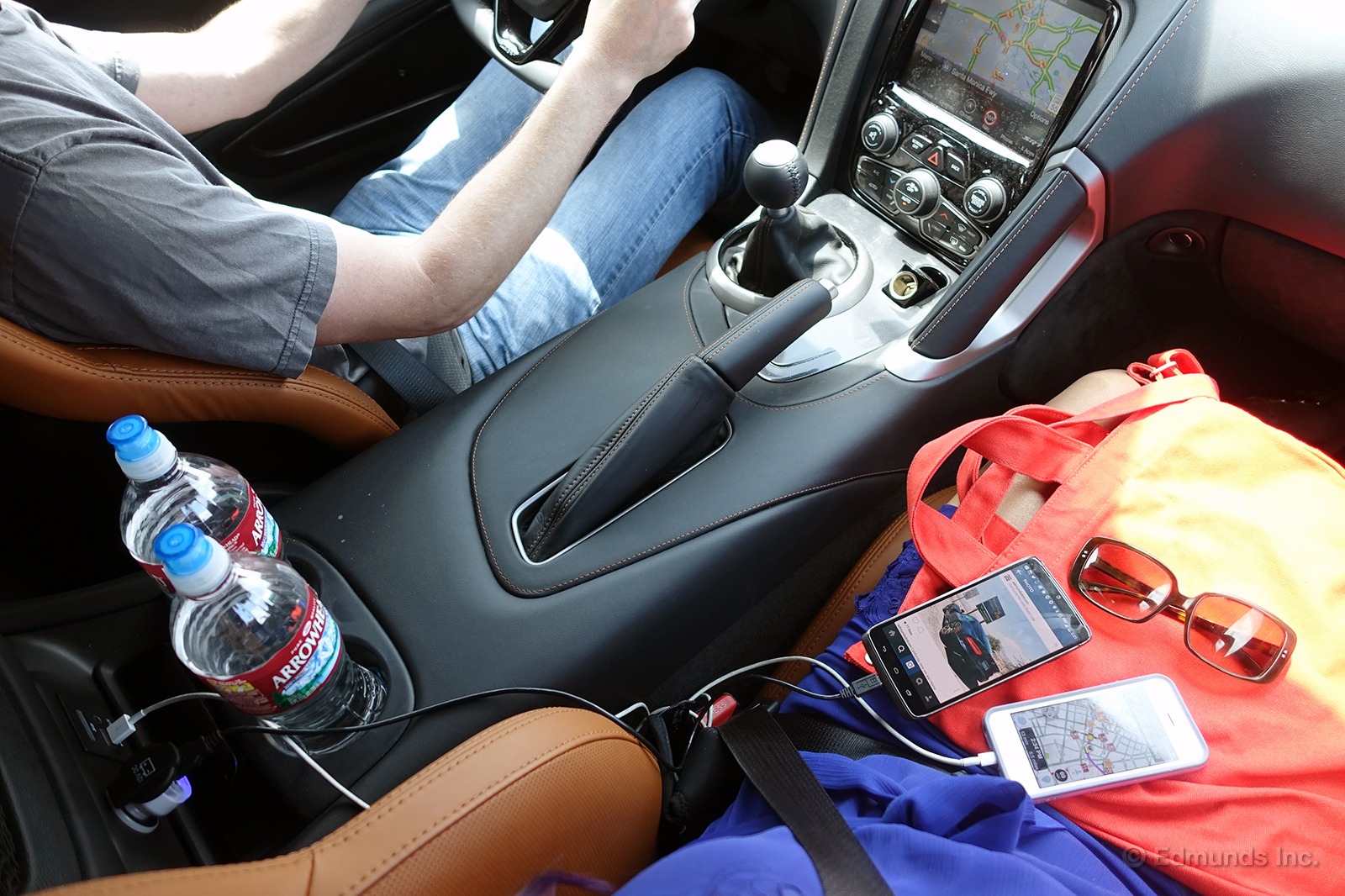
When I first heard that editor Jay Kavanagh was going to be driving our long-term 2015 Dodge Viper GT from North Carolina back to Edmunds HQ, I immediately claimed shotgun. Never mind that this sports car isn't the most ideal road trip car, for a passenger at least, or that there wasn't any room for my favorite road trip companion, my dog. I'd never seen that part of America before and had heard it's beautiful!
I flew into Denver, joining Jay for the last third of his journey and documenting it for Edmunds' Instagram. We would head toward Los Angeles, passing through Colorado, Utah, and Arizona. Jay had warned me beforehand that space in the Viper's trunk was very limited. Since the weather through all those states was in the 80s and 90s, packing only a small dufflebag's worth was a cinch.
That wasn't the problem.
Not only were we short on trunk space, but obviously the cabin itself lacked all the handy storage space one would rank high on a list of ideal road trip vehicle features. Yet we were able to make do.
During the trip, the two small cupholders at our elbows ended up holding charging phones and Jay's wallet. We stashed our large water bottles, as well as my purse and laptop, in my footwell. My charging smartphone and camera were always on my lap for easy access, but this made it difficult to jump out of the car, having to first untangle, then unearth myself from the low bucket seat of the Viper.
The Viper's passenger seat doesn't recline all that much, but as a passenger, I make it a rule to never fall asleep anyway. The passenger should be the driver's navigator, DJ, and water bottle server.
So, yeah, I could deal with the Viper's lack of space, the uncomfortable seat, and even the road noise. All that noise made me feel more connected to the voyage on the road. The thing that really raised my ire was the car's spotty WiFi. I know, #firstworldproblems. But as anyone addicted to social media knows, an unreliable connection is damn annoying. My smartphone picked up a better signal than the car's WiFi did.
Also, the car won't let the passenger search the navigation or sign into WiFi when the Viper's in motion. Very inconvenient.
One saving grace of the Viper is its air-conditioner. It did an excellent job of quickly cooling down the cabin, especially after a Vegas hotel valet displayed the car in the hot desert sun all morning before we had to hit the road.
But all in all, it was fun to travel those beautiful roads through Colorado's national forests and Utah's Bryce Canyon and Zion National Park and see it from the low seat of the Viper. Definitely a fun bucket list item to check off. If I get another chance to drive across America, however, I'm keeping my fingers crossed for something more plush.
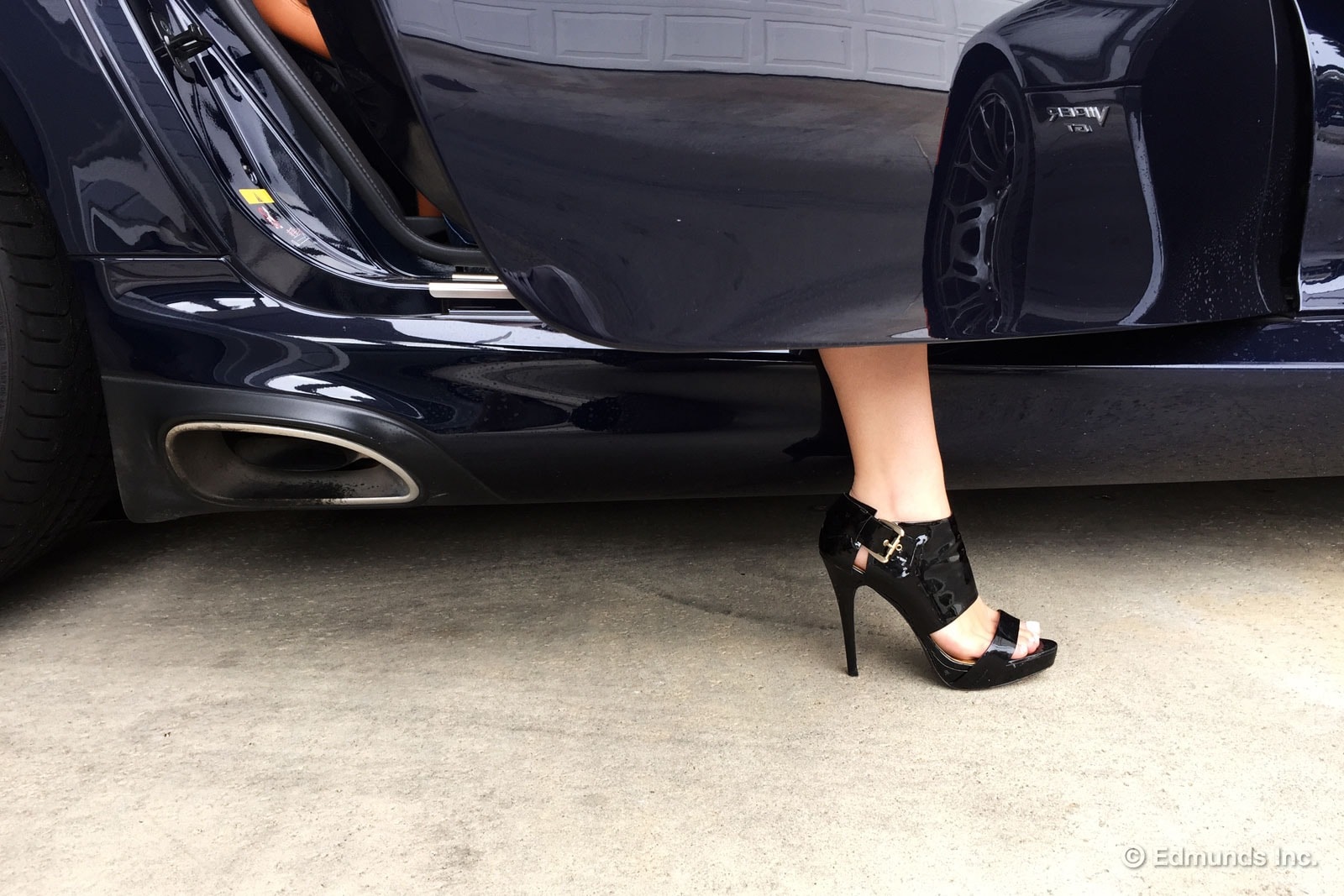
Not one to worry much about being graceful, I find getting in and out of our 2015 Dodge Viper simple: Just flop yourself down in there and wriggle around a bit until the pedals and steering wheel are in the right spot.
The process is a little more complicated than your normal car for two reasons. One, the door opening is small. Two, the door sill is wide. And three, the side pipes make that sill excruciatingly hot. It sounds similar to jumping through a flaming hoop.
So I challenged my girlfriend to try it.
I wanted to hear how difficult it was from her perspective. I may not care about graceful entry, but I also don't wear fancy dresses or heels.
We devised a consumer advice test with the logic that when you drive a swanky car, you want to go to swanky places. And you want to feel swanky when you get out. Mind you, we didn't actually go anywhere swanky, but somehow she still agreed. On went some elegant shoes, and out came my notepad. A few practice runs later, she found the right process — with only one burn to show from it.
A discreet ingress requires you to put your left foot in, grab right side of seatback with right hand, and sit down on the edge of the seat. While using the door as a privacy shield and avoiding touching the searing hot door sill, bring the other leg in.
The classy egress? Sit up on the side of the seat. While again avoiding the sill, use the seatback as support with your right hand and the door with your left, twist one leg out and step up.
She felt like a pro afterwards, ready for any door-opening situation in front of the finest restaurants. And then she asked for what time I'd made our reservation.
Oops.
Poor Panel Fitment Overshadows Great Design
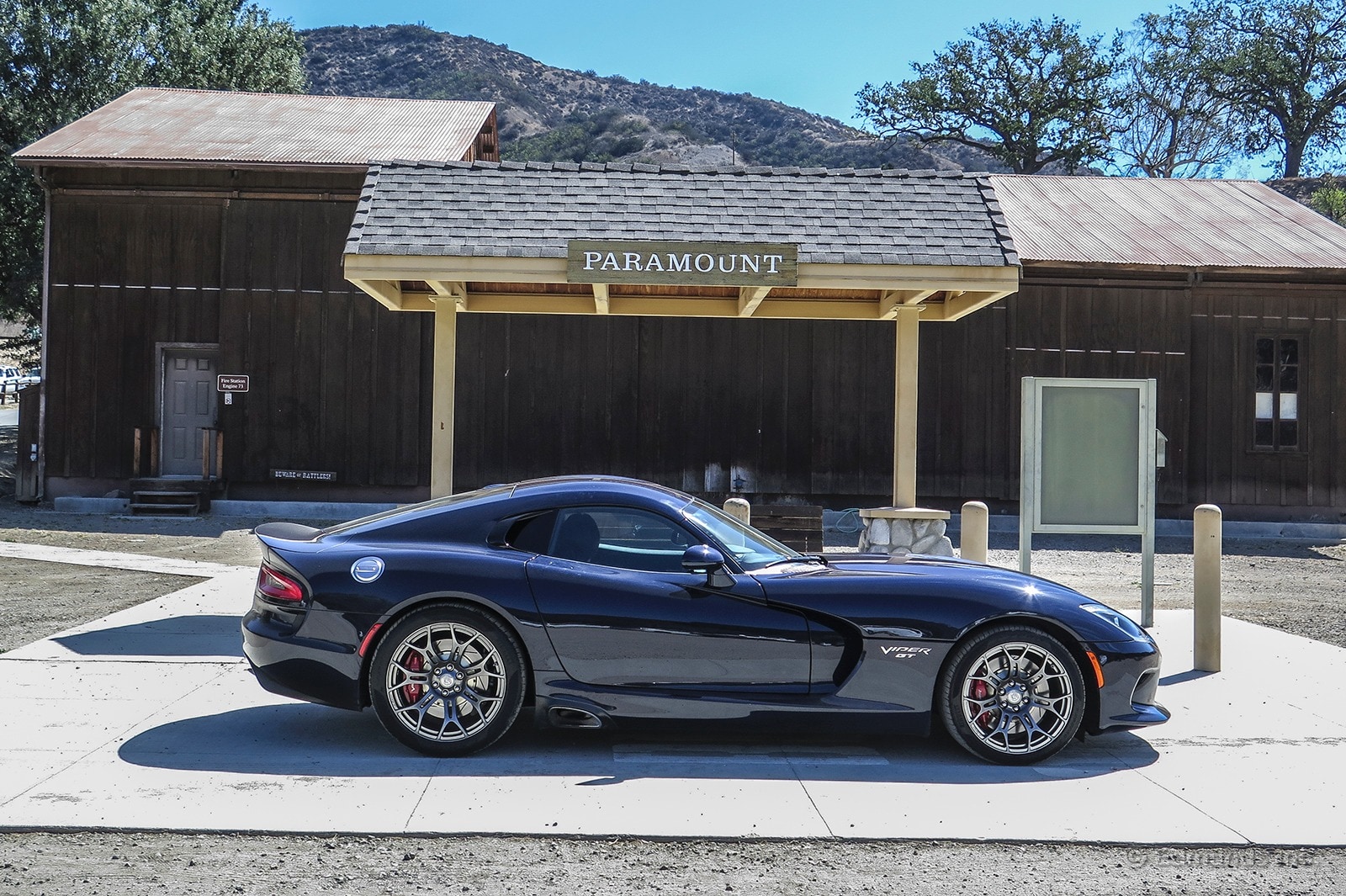
I think our long-term 2015 Dodge Viper is a great-looking car. Even without the ridiculous speed and fantastic noises it makes, I love the way it makes me feel when it's standing still.
The sweeping character line that cuts through the front fender and glides back over the rear wheels is strong, but not so angular that it interrupts the flow of the design. The duckbill spoiler proves that function and form can exist in the same place at the same time. The wheels are large, but so is the car. It's proportional and attractive, until you look a bit closer.
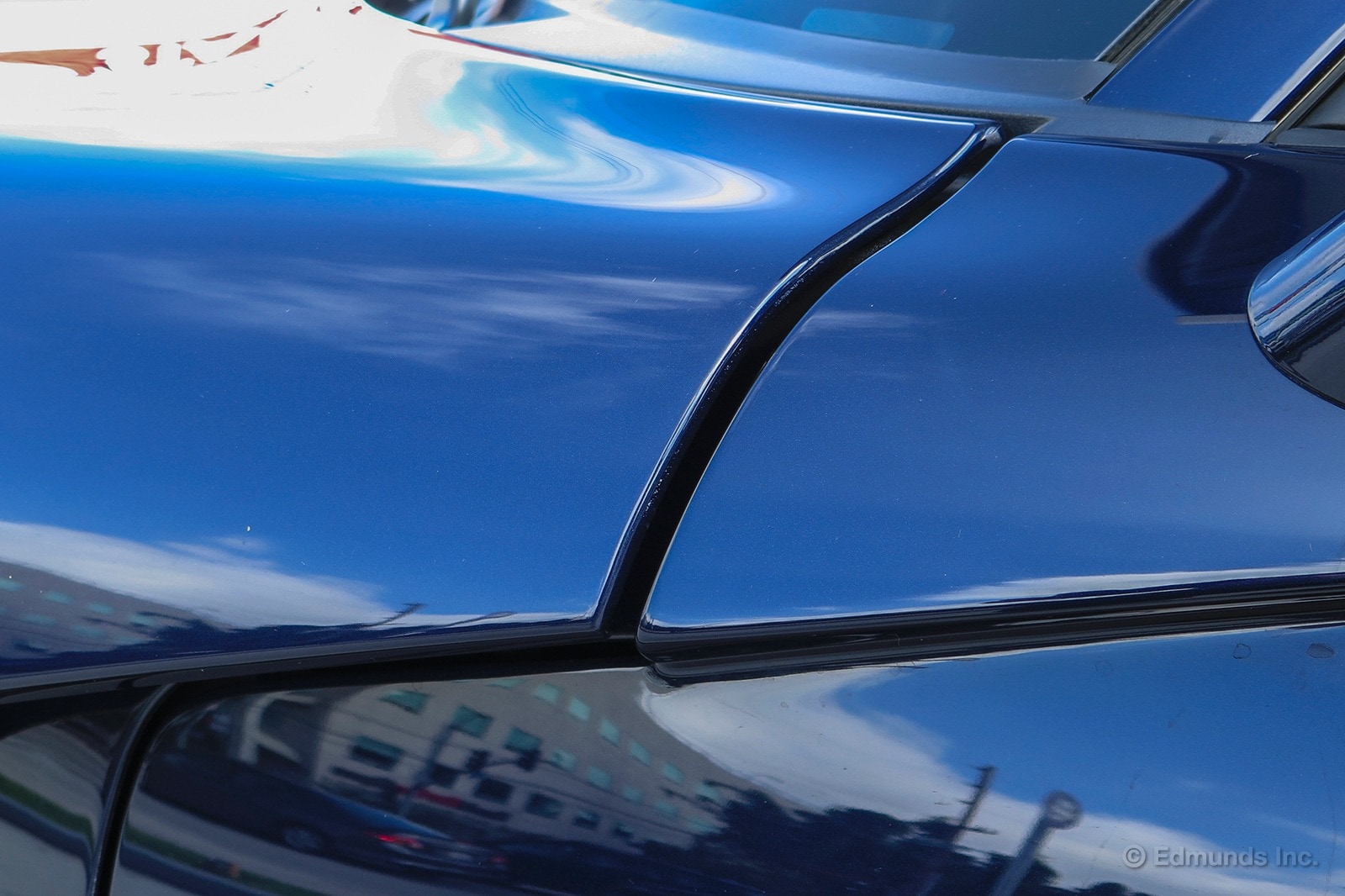
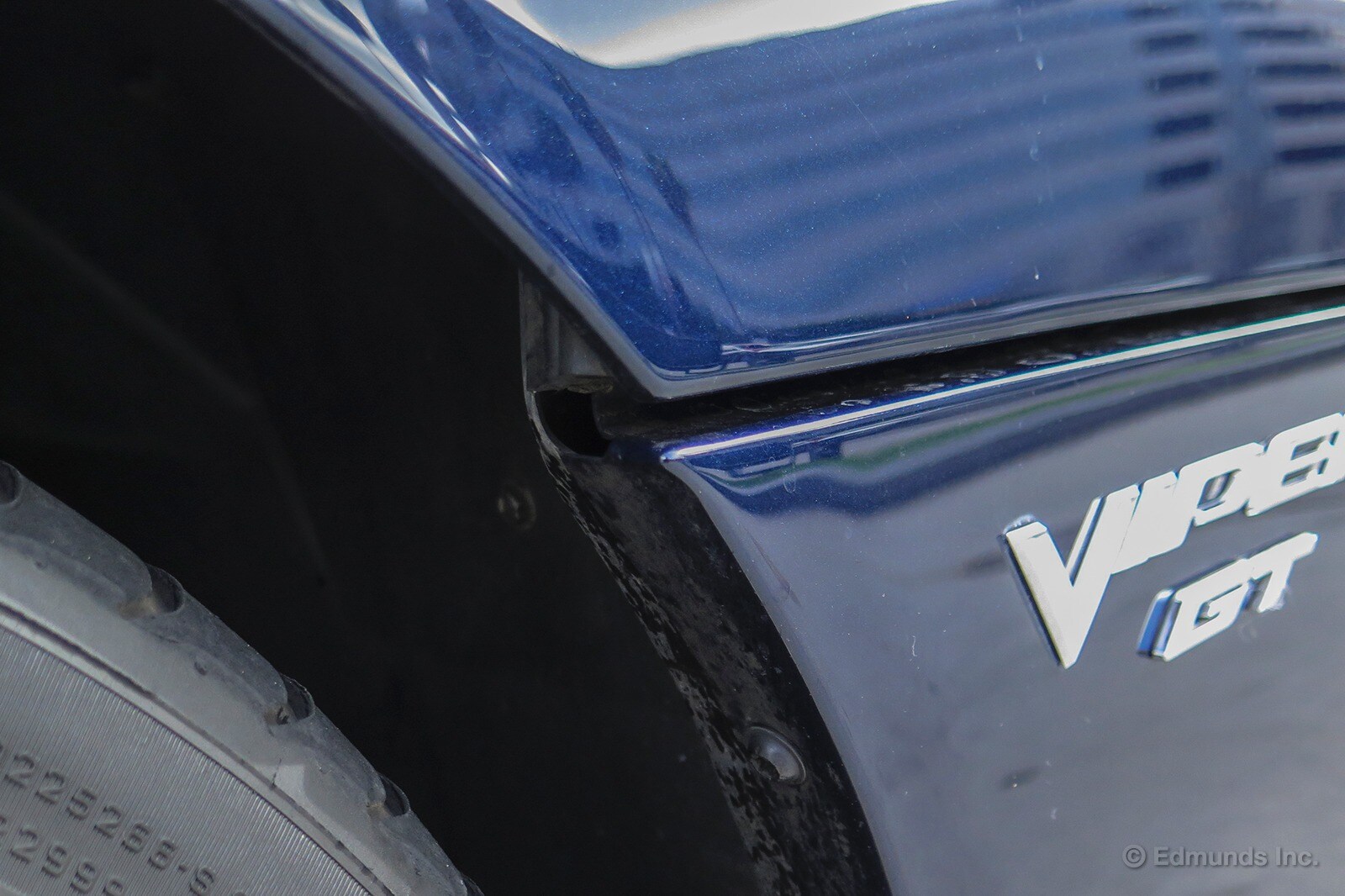
The doors don't line up with the hood and the hood doesn't line up with the front bumper. The side panels protrude out an eighth of an inch further than the hood, and they're also further forward than they should be. Around the back, there's a massive gap between the trunk lid and the rear quarter panel and an equally-large chasm between trunk lid and the top of rear bumper.
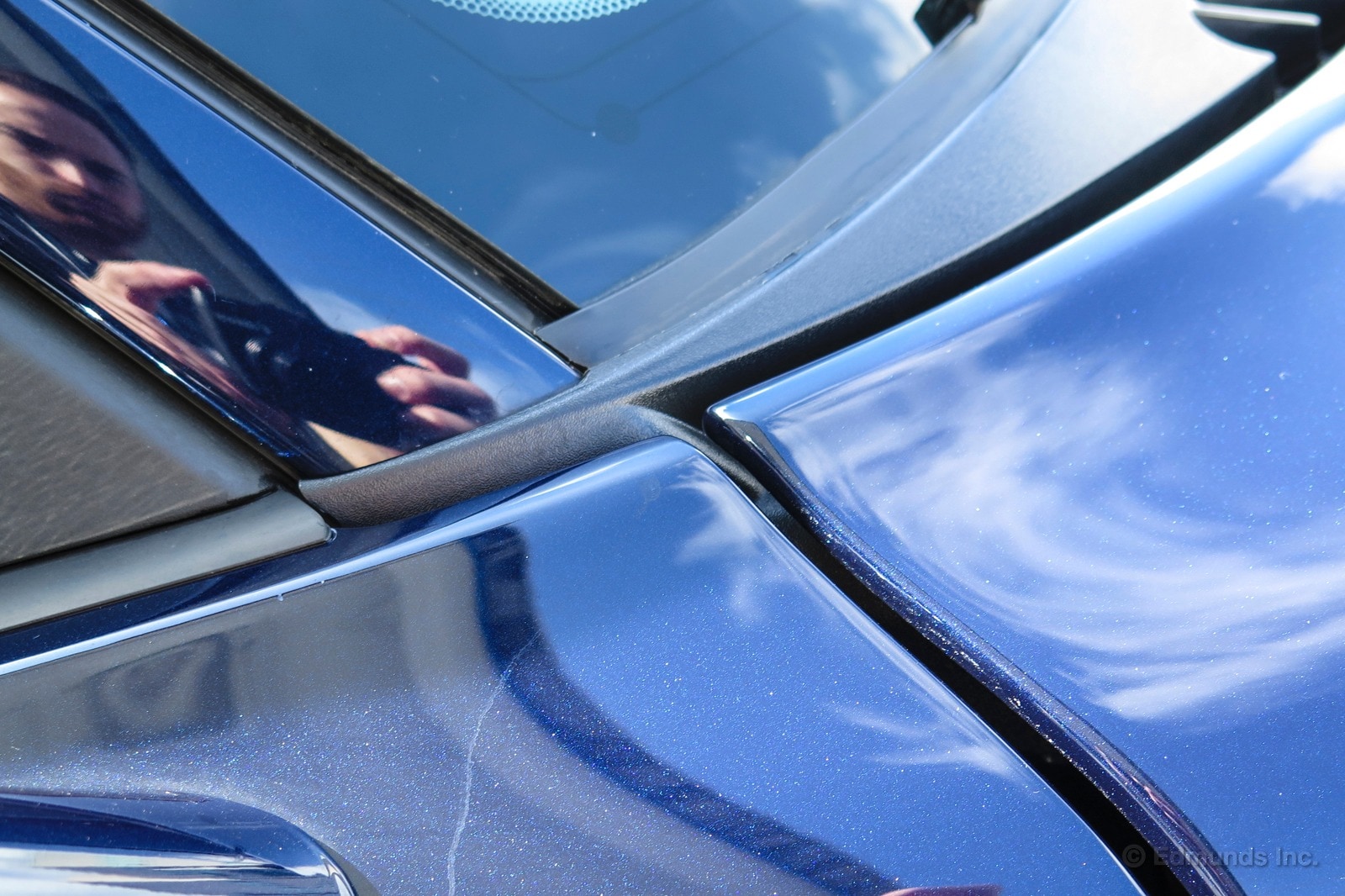
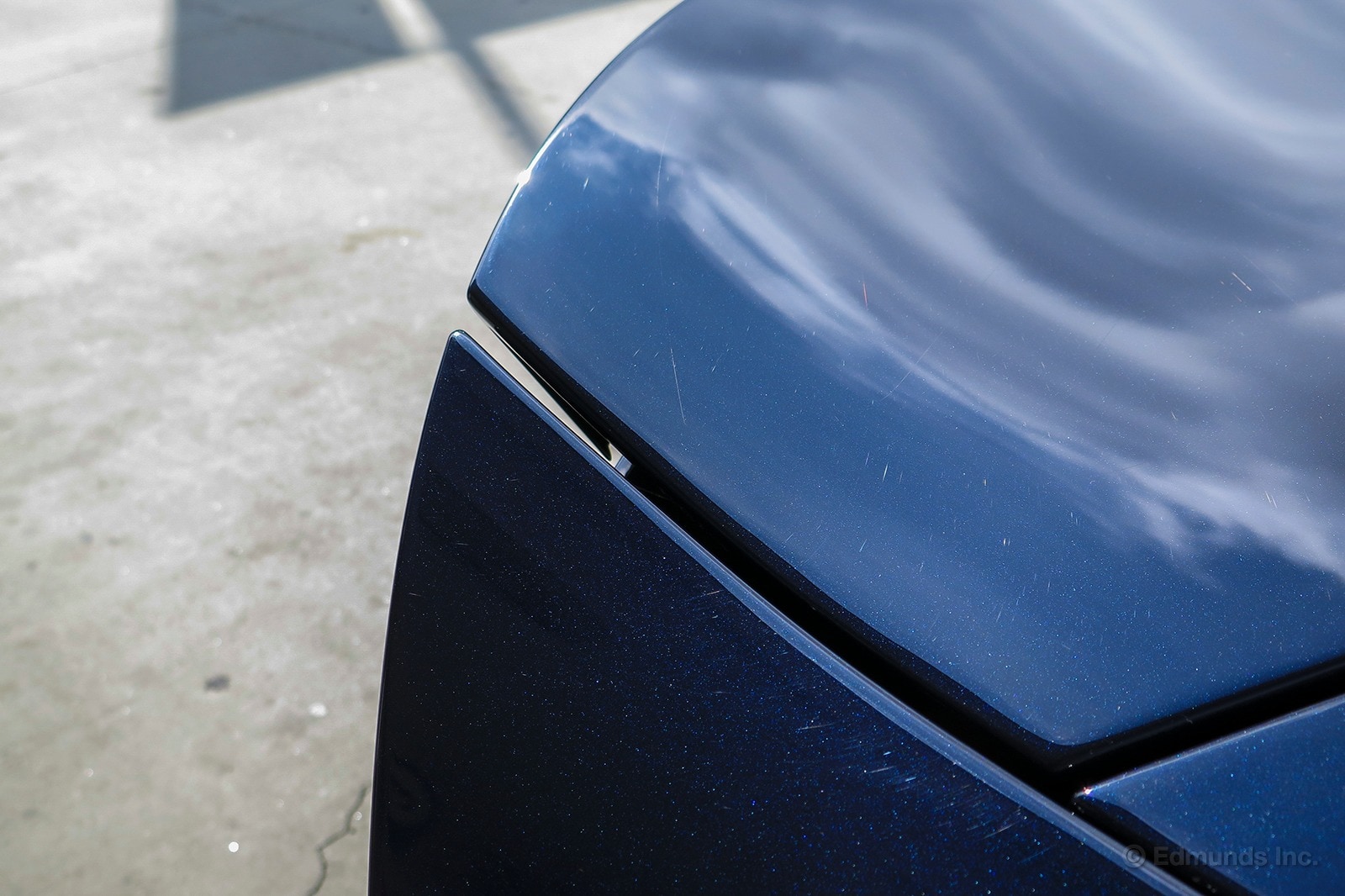
Spend enough time staring at the Viper and you can see a flaw from nearly every angle. The design is right, but the fit and finish need work.
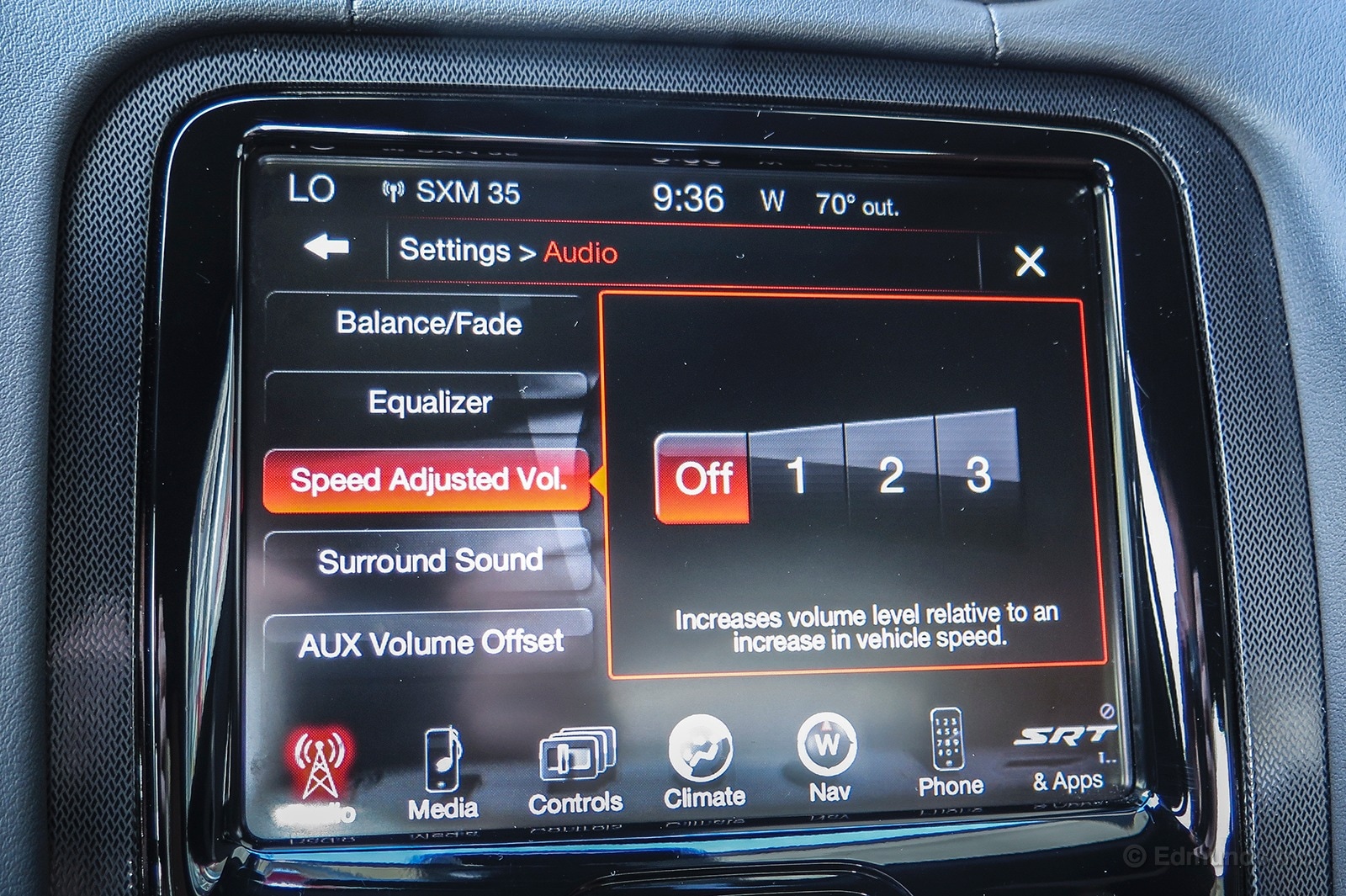
The "Speed Adjusted Volume" in our long-term 2015 Dodge Viper doesn't work. Well, it works, but just not the way I want it to. This feature turns ups the stereo volume as vehicle speed increases, compensating for road noise.
It does that part just fine. But if you want to turn the feature off, the Viper is disinclined to acquiesce to your request.
When the feature is turned on, it compensates for road noise well. Problem is, it does the same thing in the "Off" setting. So even with the setting disabled, the stereo still lowers the volume when you come to a stop, then increases it when you get going again.
Whether I'm stopped at a light or cruising along Pacific Coast Highway with the windows down, I like my music loud. This feature positions a big, annoying rain cloud directly over that parade.
Fuel Economy Update for August - Sliding Back To Reality

The cross-country highway party known as Carlos and Jay's Hypermiling Love Fest is over. Now our 2015 Dodge Viper is back in the real world, the world of traffic, tempting mountain roads and more traffic. Oh, and meatheads like me.
In August, we plumbed the depths of its vast reserves of power. We've tached it out, flung it around and muscled it through about a 1,000 miles of typical Los Angeles living. Reality is calling.
What we learned last month is that no one else (in their right mind) is going to touch those 25.1 mpg or the 294.3-mile range records. Ever. We also learned how alarmingly easy it is to dip into the single digits over a tank of fuel. It's like, really easy. It's actually kind of funny, until you get the fuel bill.
On a side note, we should start keeping a tally of how many legs have been burned by the sidepipes.
Worst Fill MPG: 7.0
Best Fill MPG: 25.1
Average Lifetime MPG: 16.6
EPA MPG Rating: 15 Combined (12 City / 21 Highway)
Best Range: 294.3 miles
Current Odometer: 9,577miles

I'm not sold on the daily drivability of our 2015 Dodge Viper.
Why would I be, you ask? After all, is this $104,000 super carnivore really meant for running errands? Some of us think so. Or rather, some of us think that the Viper can be used for the indignity of daily life quite nicely, and we've set out to prove the theory, even if it requires some recalibration of one's expectations.
Consider cargo area, for example.
Actually, I was pretty surprised and impressed that the Viper could handle this Labor Day BBQ-prep run as well as it did. I was certain that some of these items would be riding shotgun, but no. After a few re-shuffles, it all managed to fit quite snugly in the rear cargo well. There was even room remaining on the cargo shelf, which would've been useful if I'd had longer, flat items.
Granted, this wasn't a typical Costco haul with 100 rolls of paper towels or gallon drums of shampoo and conditioner, but there was enough in the cart that I'd wished I'd driven a compact car at least.
Score one for the Viper in the daily grind.
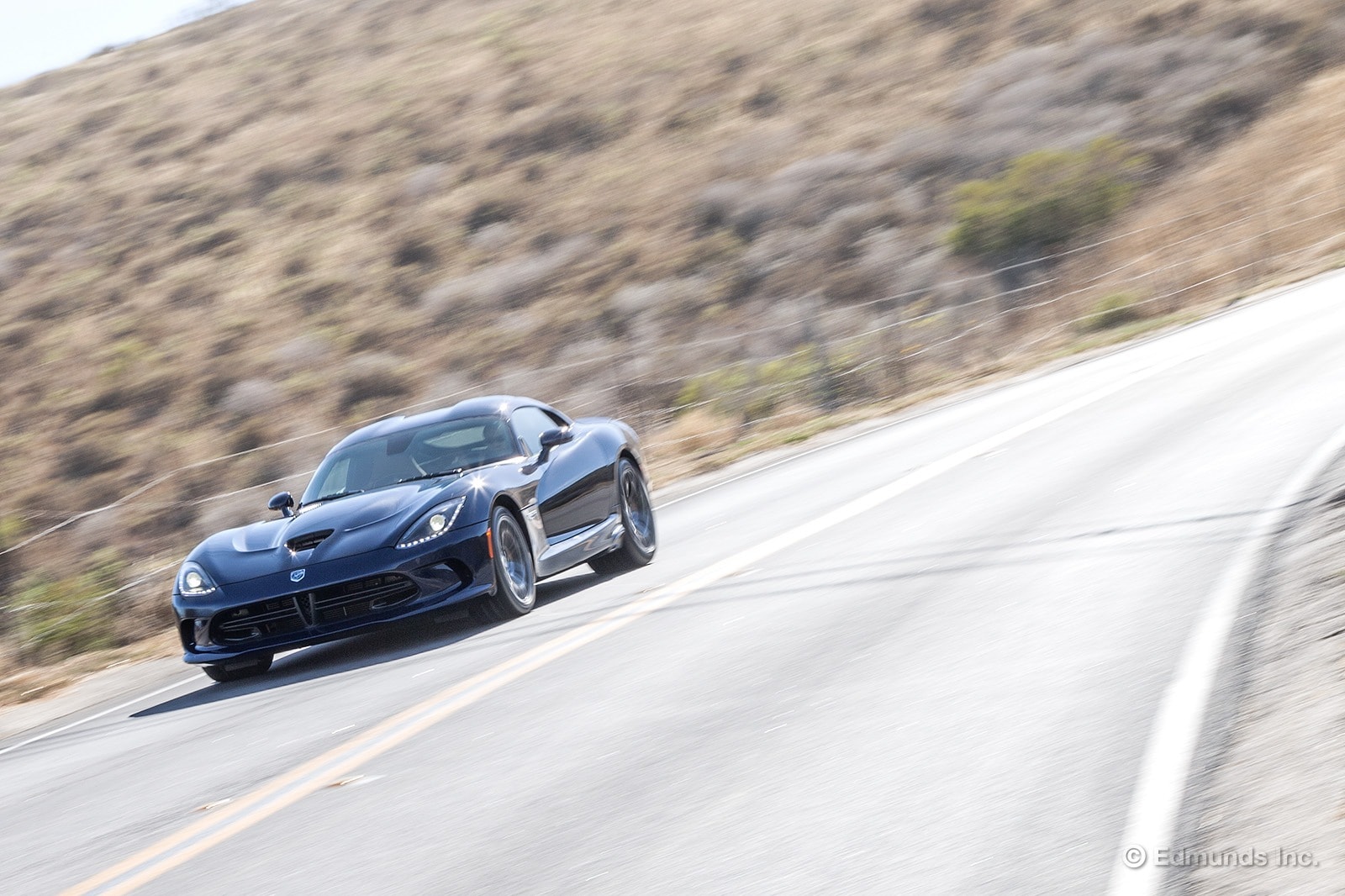
Our 2015 Dodge Viper GT is the most powerful long-term vehicle we've ever tested. Its 8.4-liter V10 generates 645 horsepower, 45 more than the 2009 Dodge Viper SRT-10 we tested a few years back. This is a seriously impressive horsepower number that should lead to more impressive numbers at the track.
While this new Viper might be much better to live with day-to-day, in the end it's still a V10-powered cruise missile at home on a test track or race course.
Vehicle: 2015 Dodge Viper GT
Odometer: 8,030
Date: 7/28/2015
Driver: Carlos Lago
Price: $103,785
Specifications:
Drive Type: Rear-Wheel Drive
Transmission Type: Six-speed manual
Engine Type: V10
Displacement (cc/cu-in): 8,390/512
Redline (rpm): 6250
Horsepower (hp @ rpm): 645 @ 6200
Torque (lb-ft @ rpm): 600 @ 5,000
Brake Type (front): Two-piece vented and slotted disc with four-piston fixed calipers
Brake Type (rear): Two-piece vented and slotted disc with four-piston fixed calipers
Suspension Type (front): Cast-aluminum unequal-length upper and lower "A" arms, coil springs, low-pressure gas-charged shock absorbers, stabilizer bar
Suspension Type (rear): Cast-aluminum unequal-length upper and lower "A" arms, toe-control links, coil springs, low-pressure gas-charged shock absorbers, stabilizer bar
Tire Size (front): P295/30ZR18 94Y
Tire Size (rear): P355/30ZR19 99Y
Tire Brand: Pirelli
Tire Model: PZero
Tire Type: Summer
As-tested Curb Weight (lb): 3,367
Test Results
Acceleration:
0-30 (sec): 1.8 (w/ TC on 2.2)
0-45 (sec): 2.7 (w/ TC on 3.1)
0-60 (sec): 3.6 (w/TC on 4.1)
0-60 with 1-ft Rollout (sec): 3.4 (w/TC on 3.8)
0-75 (sec): 5.0 (w/TC on 5.3)
1/4-Mile (sec @ mph): 11.41 @ 128.75 (w/TC on 11.74 @ 128.02)
Braking:
30-0 (ft): 25
60-0 (ft): 103
Handling:
Slalom (mph): 69.2 (68.9 w/ESC on)
Skid Pad Lateral acceleration (g): 1.03 (1.01 w/ESC on)
RPM @ 70: 1550
Comments
Acceleration: "The Viper produces immense acceleration even in key-up settings. Traction control helps minimize wheel spin, but doesn't go overboard and engage too aggressively. It smoothly lets up once the tires find grip. Launch control is less impressive. I followed the on-screen instructions (quickly apply gas and quickly release clutch), and it simply did a burnout. The resulting acceleration was slower than the key-up run."
"Best acceleration was achieved with electronic aids off and a clutch release at around 1,500 rpm. First gear can do 60 mph, but catching it without hitting the rev limiter is difficult. Gearing is otherwise spaced nicely for the quarter-mile. You run out of fourth right after the finish line. I love this shifter and clutch pedal. Shift lever has excellent, positive throws. You can rush it really fast and never fear missing a shift, unlike the Corvette. This really helps you tighten up shift times. Viper exhibited lots of wheel hop on aggressive launches, which it really did not seem to like. I tried minimizing it by extending the clutch take up, but it didn't seem to improve anything."
Braking: "Braking distance improved by three feet from the first to second run, indicating that the system and/or tires want some heat in them. The brake pedal has good bite at normal speeds, but requires extremely high effort to exert maximum stopping force. It has good, predictable feel, but you really have to dig into it. Five stops produced no fade or odor, and stops remained consistent around 103 feet. While braking repeatability was satisfactory, we were surprised this couldn't break the 100-foot barrier. We've seen Corvette Z51 pack cars do that, including our old long-term test car."
Handling:
-Slalom: "Viper confidently approaches the slalom at 70 mph. It's stable and controlled, provided you plan and get the steering inputs right. It'll do exactly what you ask of it, even if what you ask it is to spin. Track ESC settings allow a lot of freedom and offer a safety net you can lean into. The high-grip, high-g, high-effort experience can be tiring."
-Skidpad: "Good neutral balance. It transitions smoothly from understeer when you're going too fast to oversteer when you lift the throttle, which helps the driver control the nature of the car around a corner. The front has a ton of bite and precision. And you can provoke little slides to keep the speed up. But don't let those slides get too big! Once the Viper exceeds a certain slip angle, it's gone."
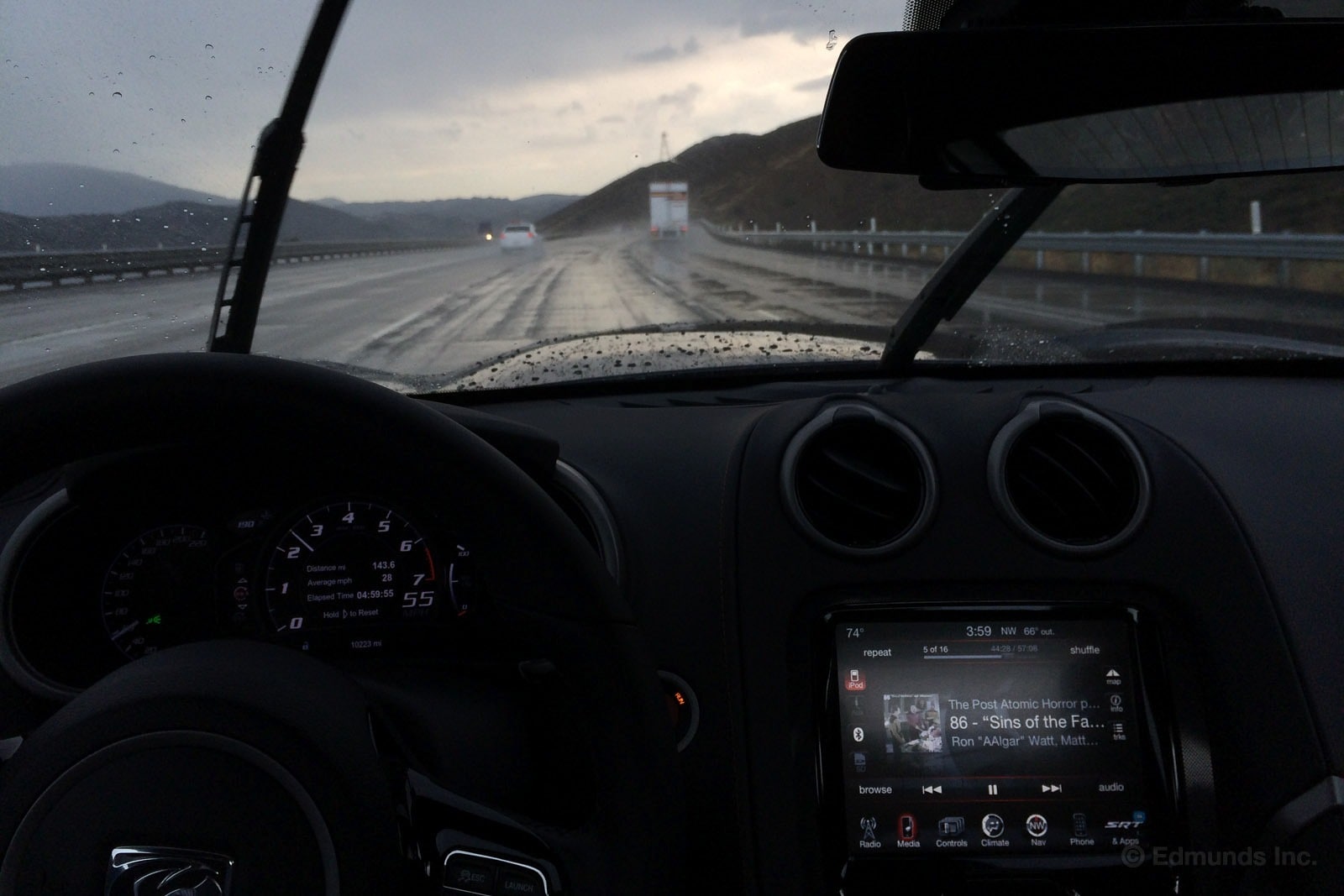
"Gaah! What's this? Water coming out of the sky? Such a curious thing has never happened!"
This was me, more or less, on a recent drive in our 2015 Dodge Viper. I had driven out of Los Angeles, heading north on Interstate 5, when I encountered thunderstorms around the Tejon Pass. It's uncommon to get rain up there this time of year, and probably even more so in this age of the California drought.
Rain came down heavily. My iPhone was buzzing with automated flash flood warnings. And there I was driving our mondo-tired Viper for the first time.
"Mass hysteria!" I thought to myself. But it turned out I need not have worried too much.
I did dial back the Viper's speed to match road conditions, of course, but I felt pretty confident with the Viper's traction. It maintained its dead-ahead attitude nearly the whole time. Twice the Viper got a little skittish, which I attribute to a combination of standing water and the car's inherent tendency to want to follow grooved pavement. It never got serious, though.
Rain? Viper? Peh. Bring it on, El Nino.
High-Horsepower Headlights Come With a Caveat

You can only drive as fast as you can see. Once you start out-driving your headlights, you're in trouble. Fortunately, our long-term 2015 Dodge Viper has some mega headlights. They're almost as fast as the car, and that's saying a lot.
I found out that the effectiveness of the Viper's headlights on a twisty road like Angeles Crest Highway is dependent on one crucial factor, however.
You have to use the high beams.
Using only the low beams, the headlight cutoff is razor-sharp and simply too low for this road. Consequently, the light doesn't penetrate nearly far enough into a turn, so you have no inkling what's ahead or even where the road goes. You have to back way, way off as a result.
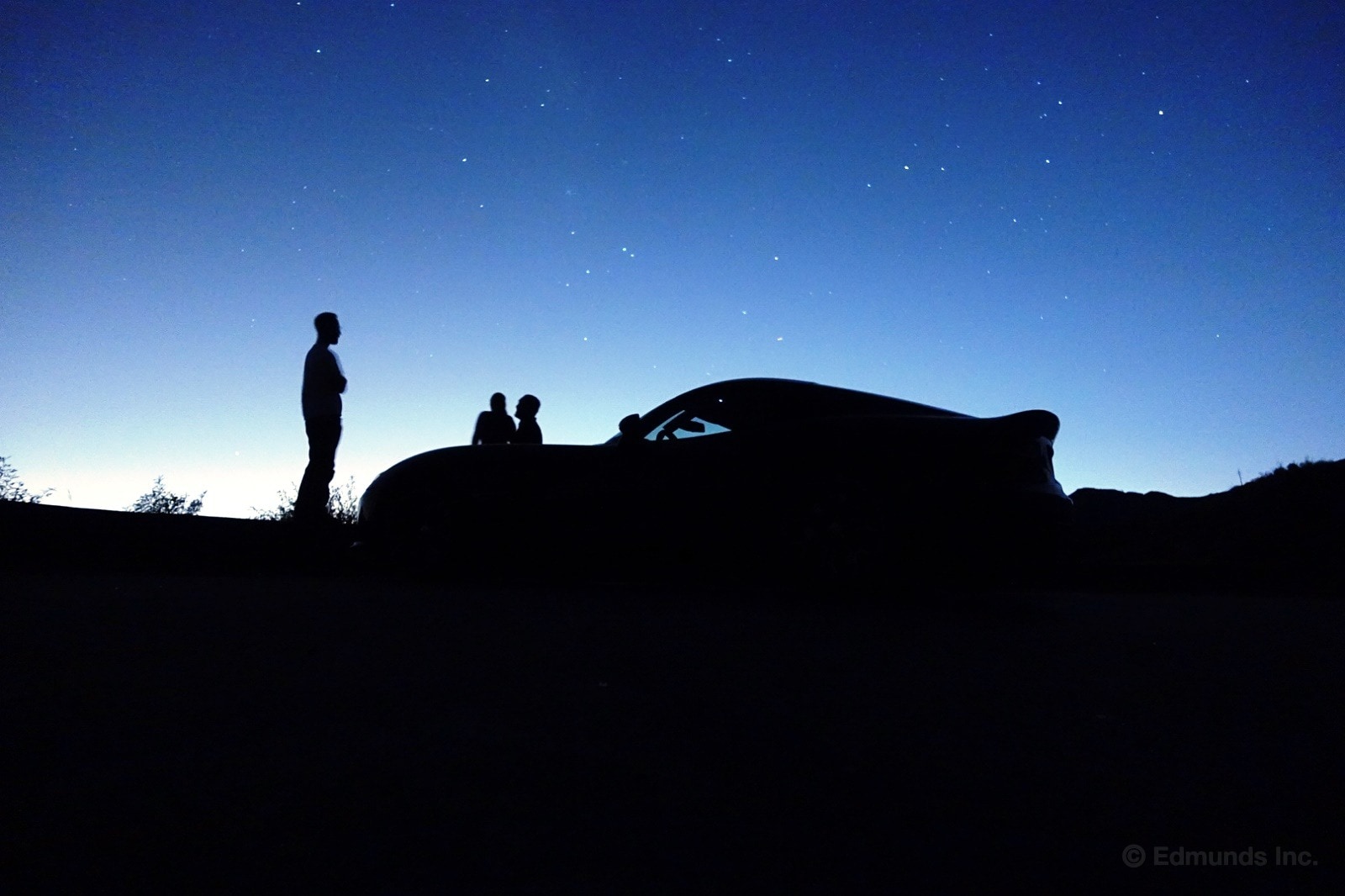
Clicking on the high beams utterly transforms the situation. There's a wall of even white light that spills way over to the sides and way up high. This is a bit unusual, as manufacturers often accomplish the reverse (lots of light in the middle, nothing on the sides), which places a big black hole in the illumination precisely where the corner goes.
Not so in the Viper. With the high beams on, they're stunningly effective headlights.
Crazy Swede Shows Us How to Really Drive a Viper
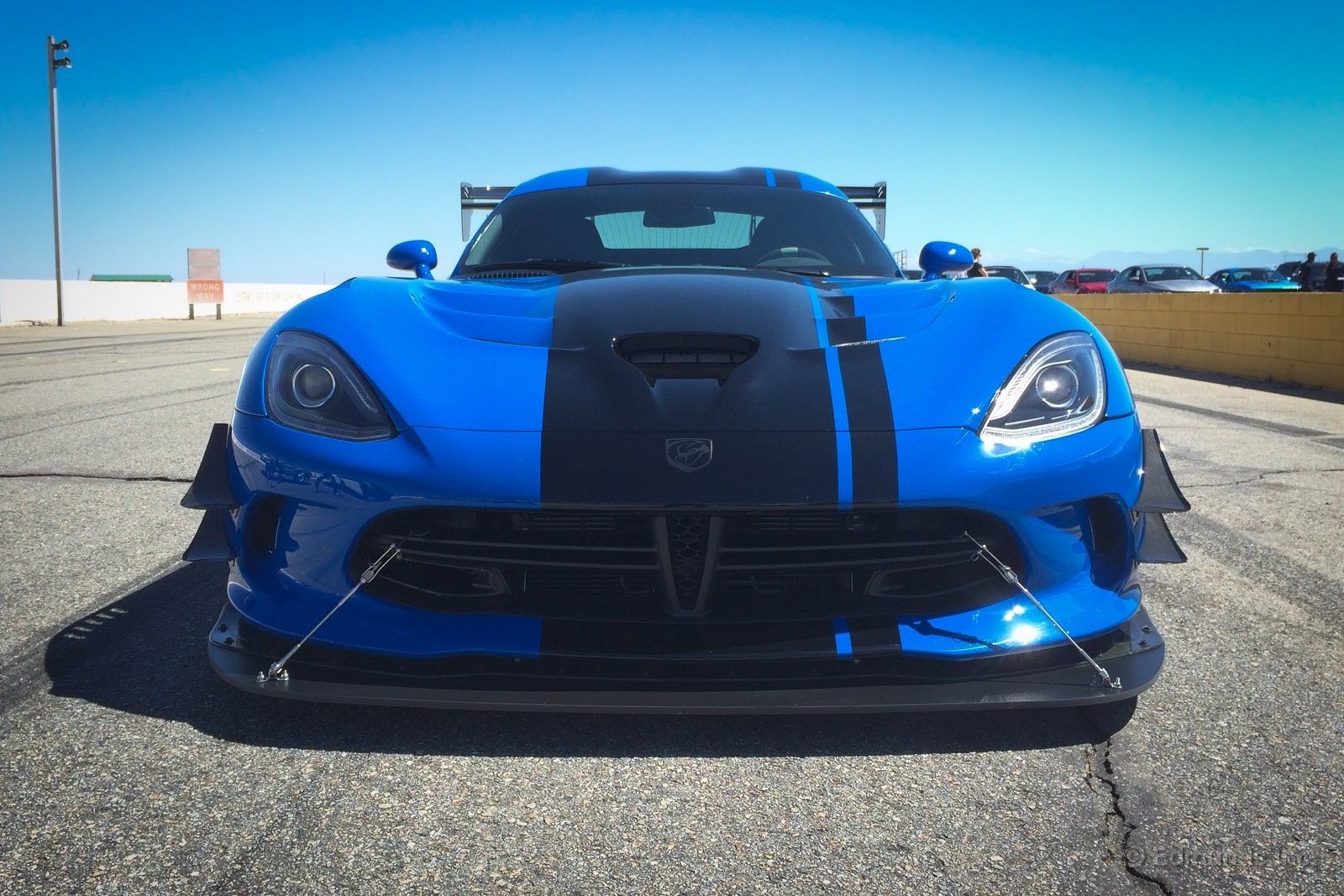
Disclosure: I've been kind of a wuss with our 2015 Dodge Viper.
Part of it is mental. Logically, I know the current generation Viper is far removed from its "bite the hand that feeds it" reputation, but it's an aspect that's nonetheless hard to fully dismiss. But even setting that aside, there's just the car itself: Monster 645-horsepower V10, tires so big they should require yellow "wide load" warning labels on them, and styling to attract an officer's attention right away. Truly testing the car's capabilities on a public road seems like a really good way to risk my license and/or mortality.
What we need for our Viper, I've decided, is track time (which is why the SRT Track Experience program is so cool). Rather conveniently, I got a taste of what it's like to drive a Viper on a racetrack recently, piloting a blue 2015 Dodge Viper ACR with a guy nicknamed "The Crazy Swede," no less.
This occurred at a Fiat-Chrysler drive event at Willow Springs Raceway in Rosamond, California. While my main focus was to sample Fiat-Chrysler's mainstream products, Dodge also had some go-fast hardware available for driving on the main track, including the pictured ACR. Dodge was letting participants drive it with a professional driver riding along, and/or hot laps with the driver (if you want to read more about the ACR, check out our road test).
I was paired with Samuel Hubinette. He seemed like a pretty cool guy when we first met, with a friendly demeanor and a Swedish accent and pretty-blue-eyes combo that I'm sure gets the ladies all googly. Only later did I learn he's also a Formula Drift champion, professional stunt driver and owner of a very cool nickname. Need an interesting person to have at your cocktail party? Invite this guy.
I buckled into the ACR's full race seat and harness first and headed out onto the track, taking my three-lap set (warm-up, full race and cool-down.). This is where our long-term Viper belongs, I thought to myself. I could drive the Viper ACR with improved confidence, pressing it harder around turns and going full whack for each straight.
It was quite interesting how it didn't seem nearly as intimidating. That said, I know I only used a fraction of the Viper's cornering abilities given my unfamiliarity with the track and a desire not to do anything dumb.
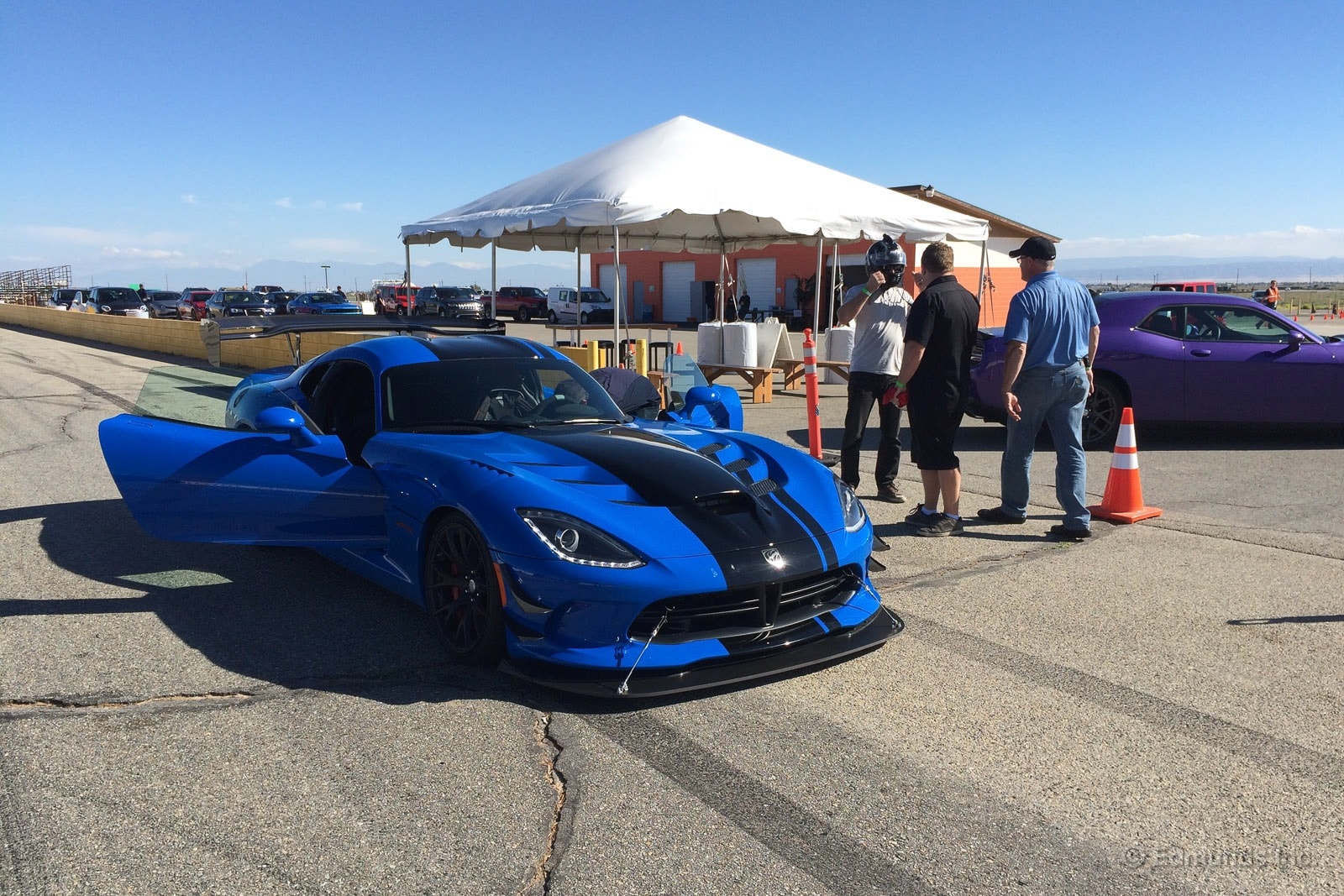
After my drive, I pulled into the pits so we could swap. "You were very smooth," Samuel the Crazy Swede said. It was a nice compliment, but hard not to think that in racer speak that translates to: "But you were slower than a goat."
After that, Samuel drove three laps. Good gravy. He didn't need no stinkin' warm-up lap. He was immediately fully on the attack. Even though I was strapped in, I still had to brace myself with my feet on the floor and right knee against the door. My head was bouncing around like a Brett Favre bobblehead, and I was laughing at the absurdity of his speed and uttering the mindless, single-syllable exclamations common in situations like this, such as "Woah!" and "Cool!"
I thought that perhaps being a drift champion and stunt driver, Samuel would have the Viper's tail hanging out the entire time in a haze of expensive tire smoke. But nope, he was calm and focused, driving a perfect line around the track. Only at one point did the Viper's back end slide a bit. He caught it easily with the steering. I gave him a thumbs-up. He replied back with a Hawaiian shaka ("hang loose") sign and put the hammer back down.
Dodge wisely nerfed a few turns with cones for the journalist drivers (most notably, the infamous eighth and ninth corners), so there was no point in tracking Sam's lap times, but around turn two, for instance, I noticed Samuel averaging 100 mph, which, having watched a couple YouTube videos with telemetry on them, is quite fast indeed.
A lot of credit is due the extra grip of the ACR's aero and tire upgrades. Samuel was even driving hard enough to get the ACR's rear diffuser to scrape when exiting turn nine, which, apparently, is supposed to happen. It's a race car that that you can put a license plate on.
Later I asked Sam how he approached driving a Viper, ACR or not.
"It's actually a very balanced car," he said. "Just be smooth in the corners, and then go very fast out."
Easy, right? But I came away with a renewed appreciation of the Viper. It's still not an "easy" car to drive fast, necessarily, but once you get used to it a little bit on a track, and then seen its potential through the lens of a professional driver, the Viper produces thrills few others can match.
Digging the Carbon Details
That the press overview for the 2015 Dodge Viper includes 28 occurrences of the words "carbon fiber" should tell you something about the material's abundance in this car. The clamshell hood, roof and hatch are all carbon on our GT trim. The front and rear brake ducts, splitter and spoiler are optionally available in the material.
I spent a recent weekend with the Viper at the track where the hood and hatch were open often. A Viper with an open hood doesn't discriminate. It is a homing device for both real men and gold-chain goons.
Details after the jump.
The prettiest piece might actually be the hatch.
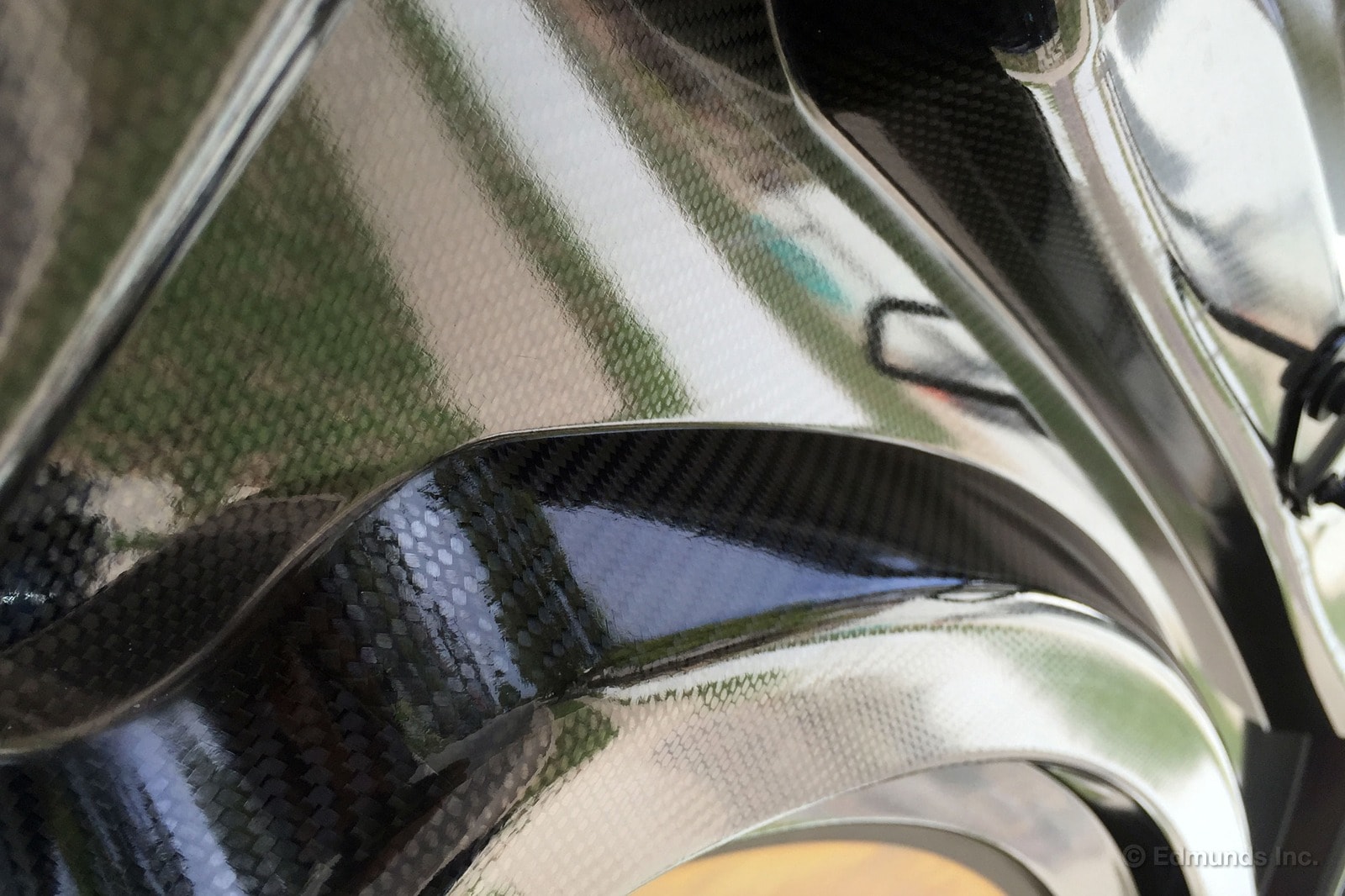
But the fender area on the underside of the hood isn't bad, either.
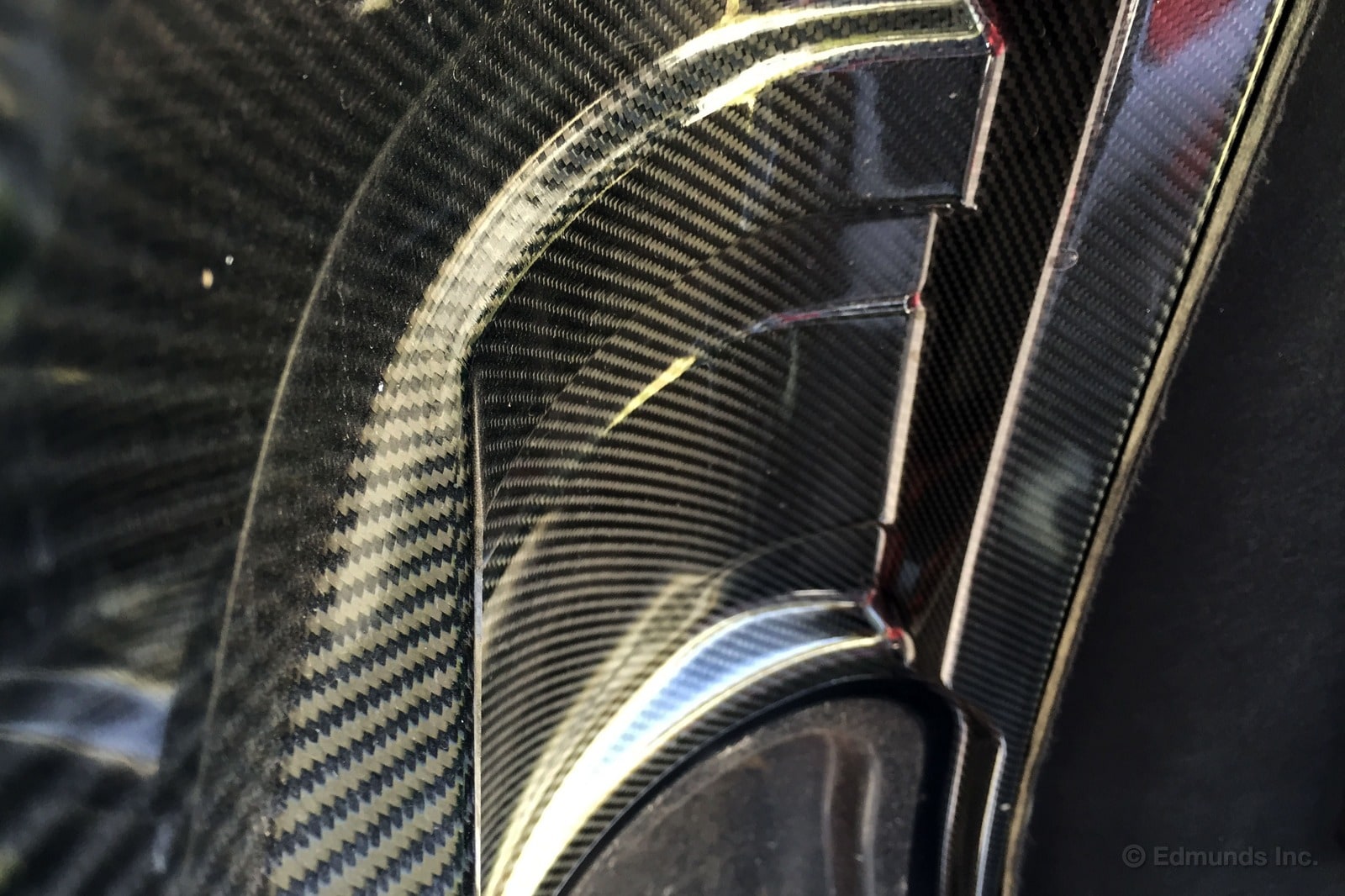
To be honest, the entire hood is a work of art.
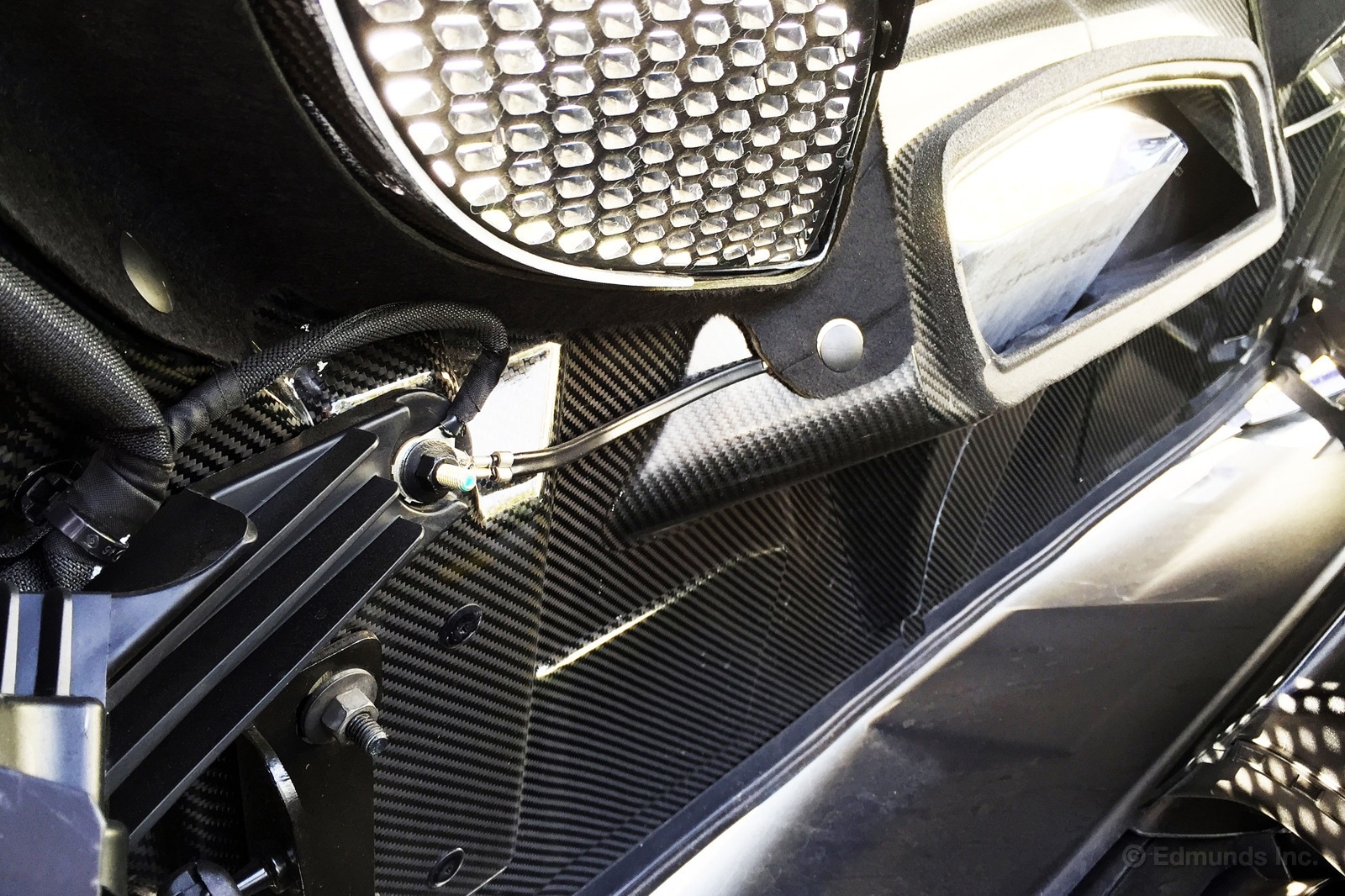

If you own a 2015 Dodge Viper, chances are you've got another vehicle in your fleet that is better suited for transporting kids to school. (No doubt Dodge will happily point you to the Durango or Grand Caravan.) Then again, it all depends on how you define "better." If you measure by kid smiles, other parent envy and all-around awesomeness, then the Viper might indeed be your new school bus.
Granted, you do have to tell your little passenger about the proper way to enter and exit, otherwise you'll risk having to explain to your significant other how Little Johnny got first-degree leg burns. But after that, the Viper's ready to go. My Recaro booster seat actually fit perfectly in the passenger seat, which isn't always the case with sport seats.
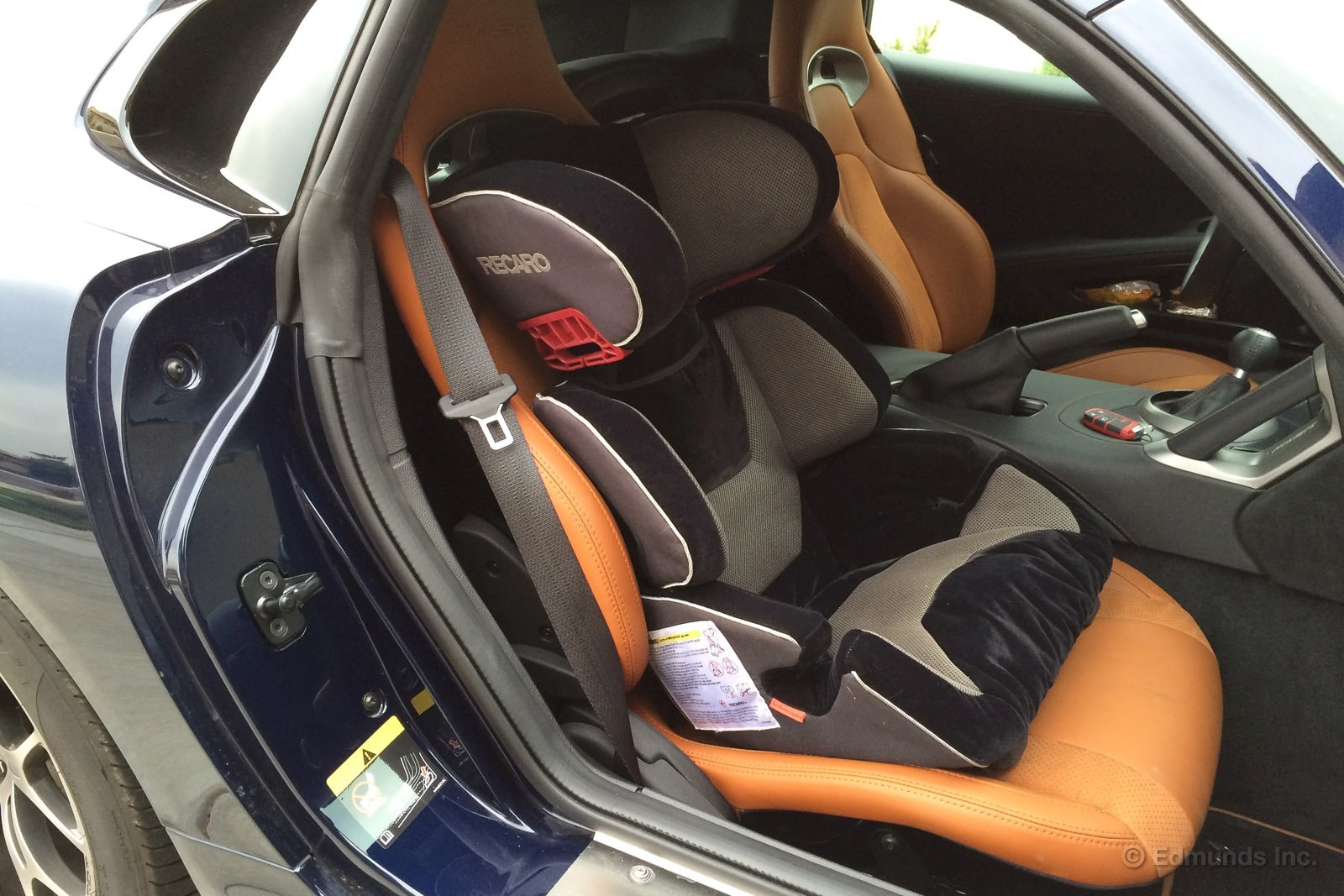
It's just fun to drive a Viper around, and the sense of occasion is amplified by the fact that you see so few of them on the road. My four-year-old boy was quite taken with it as well. After a drive home from school when I might have fully uncorked the V10 once or twice, he asked: "Daddy, can you save this car for me so I can buy it when I get older?"
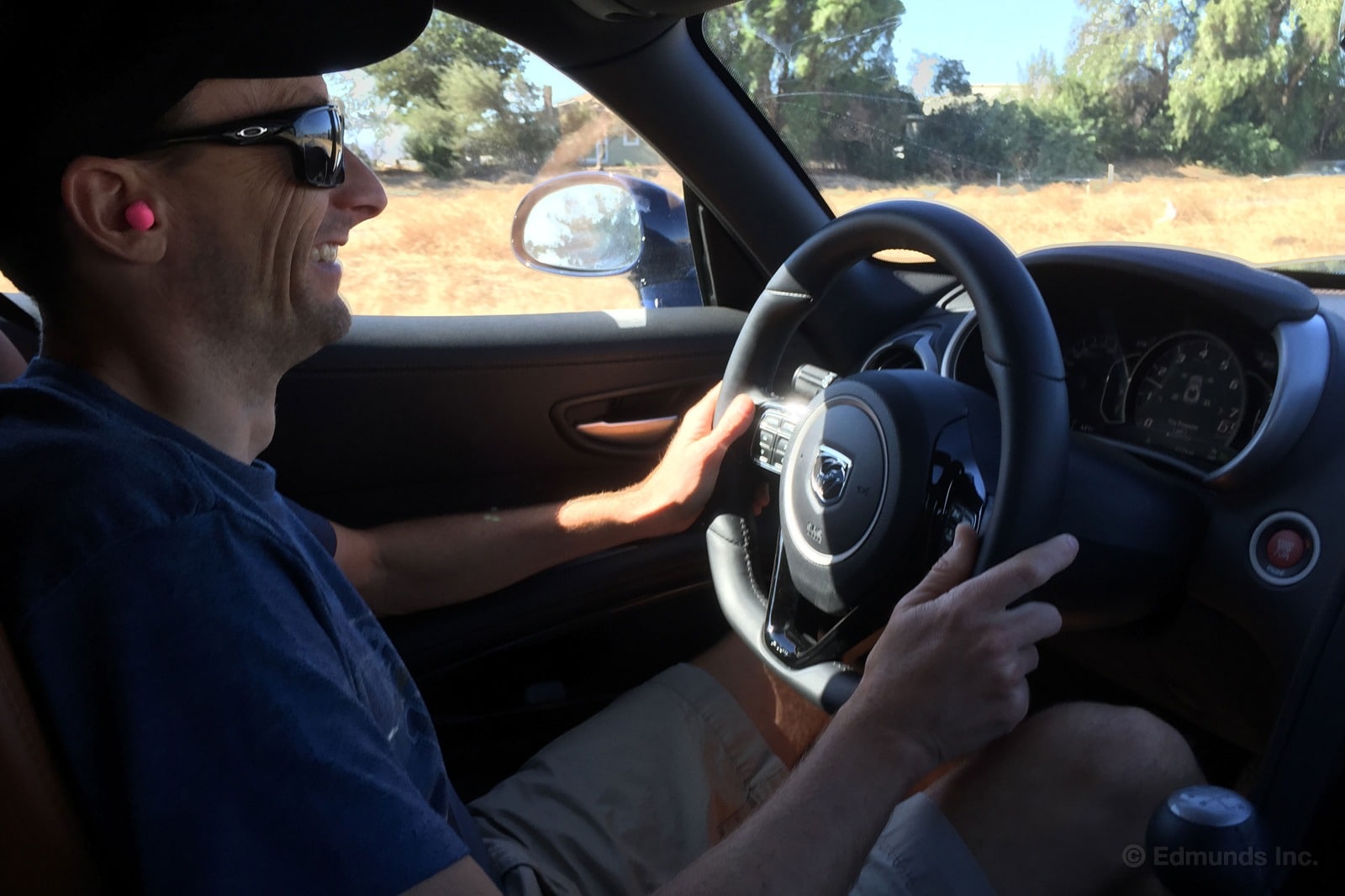
An 850-mile road trip to Monterey in our 2015 Dodge Viper was eye-opening on many levels.
First, I acknowledge that Jason Kavanagh and Carlos Lago are real men for driving this car across the country and back. It's not a machine that lets you get away with partial commitment. Plan to drive the Viper more than 100 miles and you better be all in.
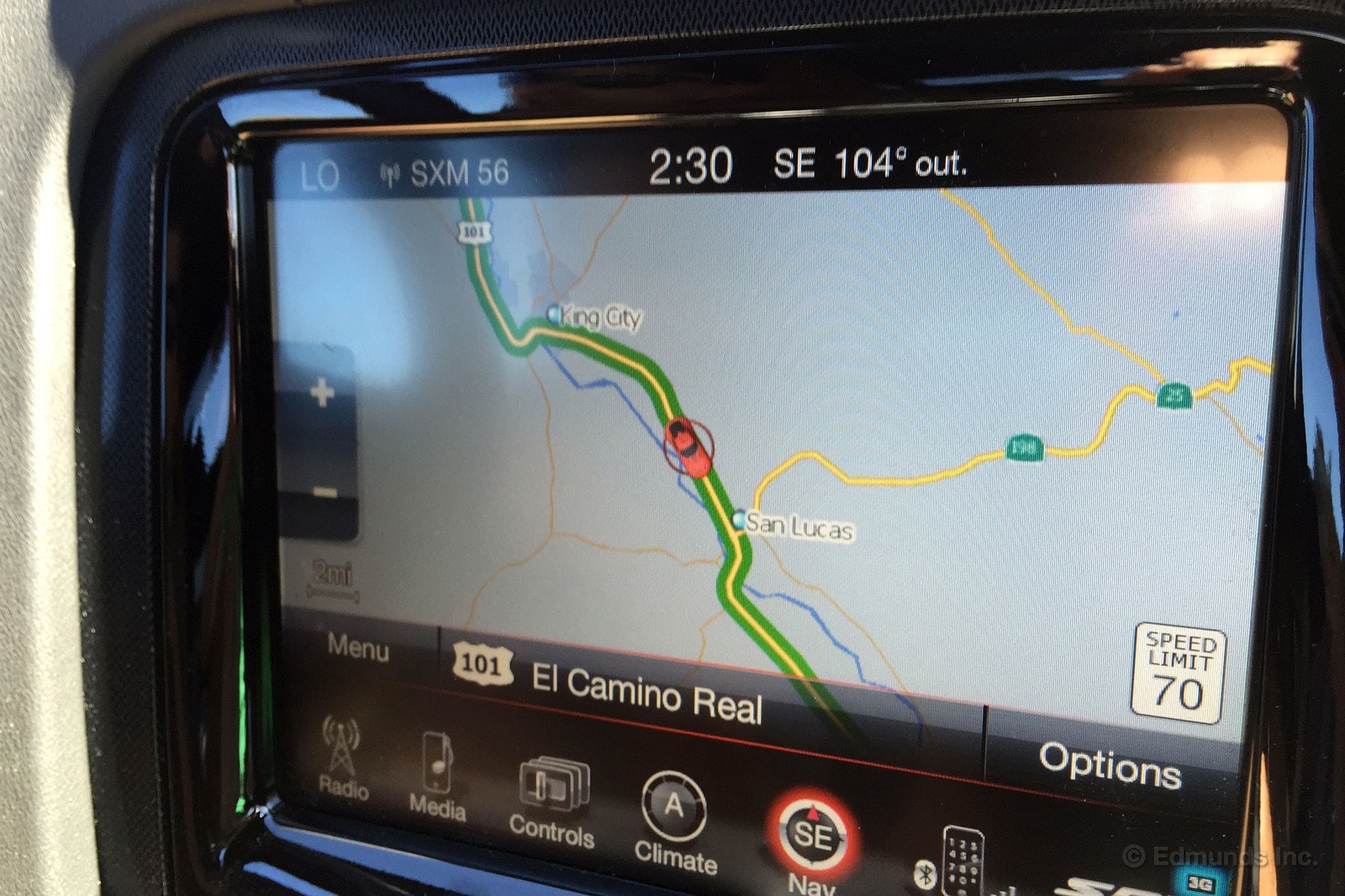
This became crystal clear during the first leg of our trip, driving about 140 miles to stay with friends in Santa Barbara. My ears were ringing from the sheer mass of ambient noise that pervaded the experience after only a few hours. The engine, the tires and wind all contribute. I've lived through enough motorcycle trips and top-down Miata adventures to know that a five-hour stint would leave me with a lingering headache. That's exactly what we had planned for the next morning.
So the next day I committed to earplugs. It was a decision lost, initially, on my wife, who insisted on enduring the aural pounding earplug-free. But it was the right decision. After an hour with the plugs, I could hear her better than she could hear me. She wore them on the way home.
The Viper might be loud, but it has effective air-conditioning. Our return trip started at around noon from Mazda Raceway Laguna Seca, taking us south on U.S. Route 101 through the blazing heat along the edge of California's Central Valley.
Ambient temperatures reached higher than 100 degrees the entire way home (note the 104 degrees indicated in the photo), but the only time the climate control struggled was when we stopped for lunch at a drive-through.
Without the added efficiency of airflow over the condenser, the system struggled and we reduced the temperature to the minimum "LO" setting. Once back on the highway, "LO" was too cold and I reset it to 72 degrees.

Maybe it was the constant droning noise on the highway or the laughably tiny pedal box that got to me. It might've been the scorching-hot door sill or the useless trunk lid that never opens on the first try. Maybe it was the unnecessarily heavy steering or the cramped cabin.
Whatever the reason, after an extended weekend climbing in and out of our long-term 2015 Dodge Viper, I knew that I couldn't justify spending a hundred grand on one, especially if it were my daily driver.
That led me to the inevitable hypothetical-money-finds-its-way-in-to-car-guy's-wallet thought-process. What would I buy if I had $103,785? Wait, do I just get one car? Does it have to be new? What about mods? Can I just put nitrous on the Yugo and keep the extra cash?
Before I went too far down the rabbit hole, I put out a call to a few of the Edmunds editors who had driven the Viper.
My e-mail read: What would you buy for $103,785? If it's the Viper, tell me that too.
One car, same price point. For extra credit: Three cars, same combined price with at least one two-door sports car in the mix.
Here's what I got in return.
Mark Takahashi was brief, but I had a hard time arguing with his response:
Jag F-Type R Coupe
Josh Sadlier went for the extra credit:
Base 911 manual with a few options (slower and I don't care); Corvette Z06 with all the extras; BMW M5 manual
For $103K, I'd be looking for a really special overall package, not just raw speed. The Viper hauls the mail on a race track, I hear, but I want my six-figure performance car to be good at everything. I don't think that's too much to ask these days. Gotta hand it to Dodge for the styling, though. Nothing matches the gravitas of a Viper rear three-quarter angle.
Jonathan Elfalan also gave me several to choose from:
Without having driven any of these: Cayman GT4, Corvette Z06, or Shelby GT350.
I'd also take a 911 Carrera S (I have driven one of these).
Brent Romans would have a well-rounded fleet at home:
Corvette Z06; Porsche 911; or combo (FCA special!):Dodge Challenger SRT, Jeep Wrangler, Fiat 500e.
Mike Magrath referred back to a breakdown he'd written about our long-term Jaguar F-Type and how he'd have a Cayman GT4 instead. He had a few backup plans, too:
A Z51 Stingray and a 528, or a Boxster Spyder and lease a 435.
James Riswick agreed with Josh Sadlier when it came to the one-car option, and he came up with a similar BMW-with-a-manual opinion:
The better question is "What wouldn't I buy instead of a Viper?"
1 Car: Whatever Porsche 911 I can get for $103,785
But I'd rather have these three:
Dodge Challenger R/T; BMW 340i manual; and, ah, because I have $16,000 leftover and I'm the used car editor, a first-gen Boxster like this.
Apparently everyone likes the GT4, because that was one of Carlos Lago's choices too:
$100K buys you a pretty solid Boxster Spyder or Cayman GT4. It also buys you a very nice Corvette Z51 with enough money left over for another car (or plenty of tires). The Viper is a unique car, though. Enough to make it appealing if it's your third (or plus) car. I'd have a Morgan 3 Wheeler.
Whether or not it was confirmation-bias, I didn't see anyone clamoring for ownership of our Viper. At least until I got a submission from Kurt Niebuhr:
For $103,785 I'd have a Viper. Our Viper, too. Why? Corvette's are tacky and 911's are too easy. You only live once.
Three cars? A standard Viper costs $87k, so I'll take one of those. That leaves just enough money for a decent 1965 Chevy C10 Shortbed and Honda CRF230F to put in the bed. I can live with that.
With only one dissenting opinion, it was hardly a win for the Viper. It's absolutely unique and undeniably fast, but that doesn't seem to make it supremely desirable. Even if you have the money, it's an acquired taste. I still haven't made up my mind as to whether I'd go with one car or many, but with so much stiff competition out there for my imaginary cash, I probably wouldn't pick the Dodge.
What would you choose? One car? Many? New? Used?
Fuel Economy Update for September - New Highs, New Lows
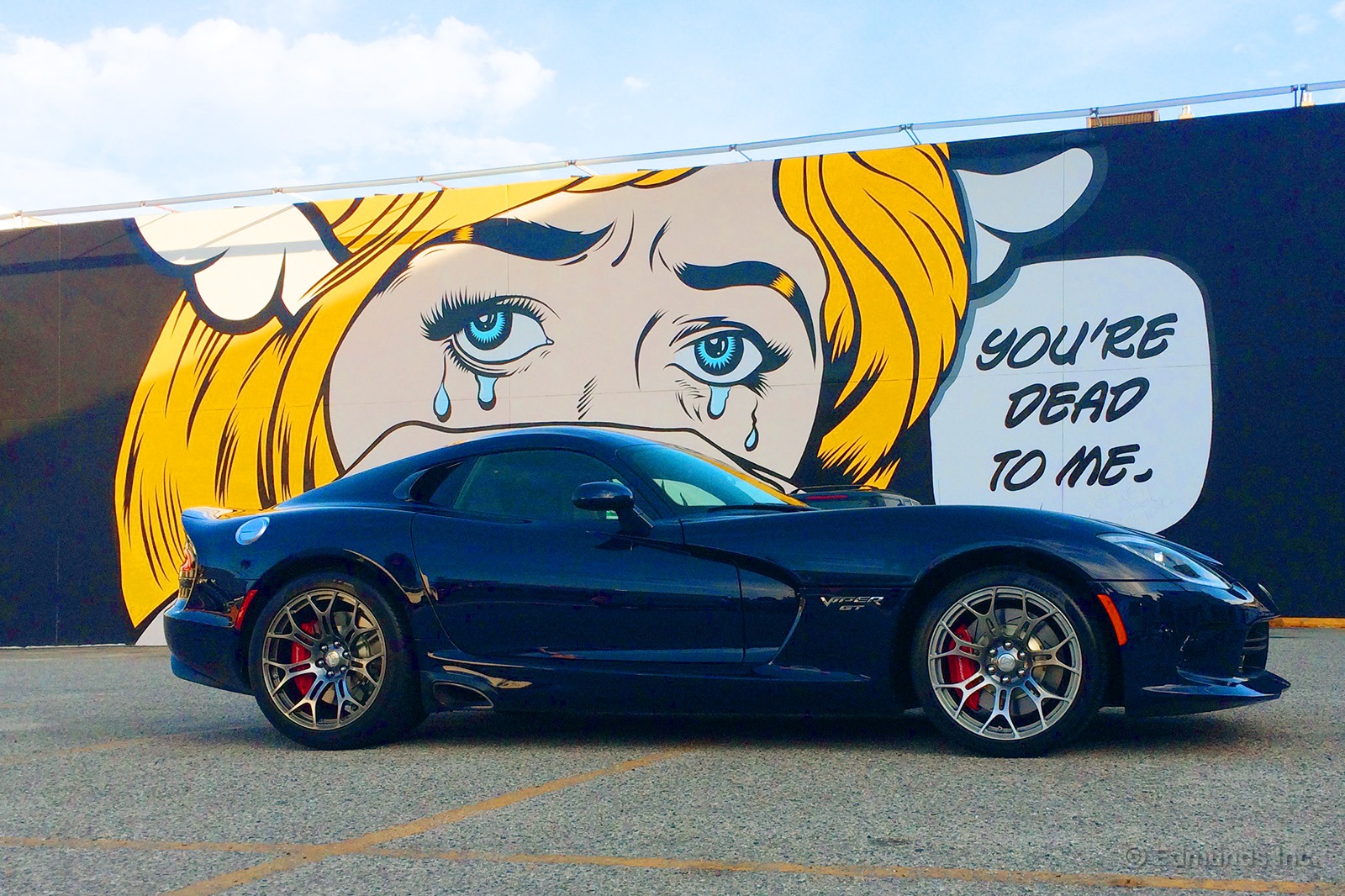
No surprise that our long-term 2015 Dodge Viper fuel economy average is adjusting to a lower figure after its initial cross-country trips. In September, it fell half-a-mile per gallon, but it was well worth it. We also scored a new high-mpg result, too.
The Viper spent some quality time circling Mazda Raceway Laguna Seca at the hands of Josh Jacquot. In two fills noted "track" on the fuel log, he achieved a 6.4 mpg and 8.4 mpg result. Oddly enough, Josh also managed to eke out a 27.2 mpg tank on the way up to Monterey, beating the previous 25.1 mpg high score. Impressive results on both sides of the spectrum.
Worst Fill MPG: 6.4
Best Fill MPG: 27.2
Average Lifetime MPG: 16.1
EPA MPG Rating: 15 Combined (12 City/21 Highway)
Best Range: 294.3 miles
Current Odometer: 12,179
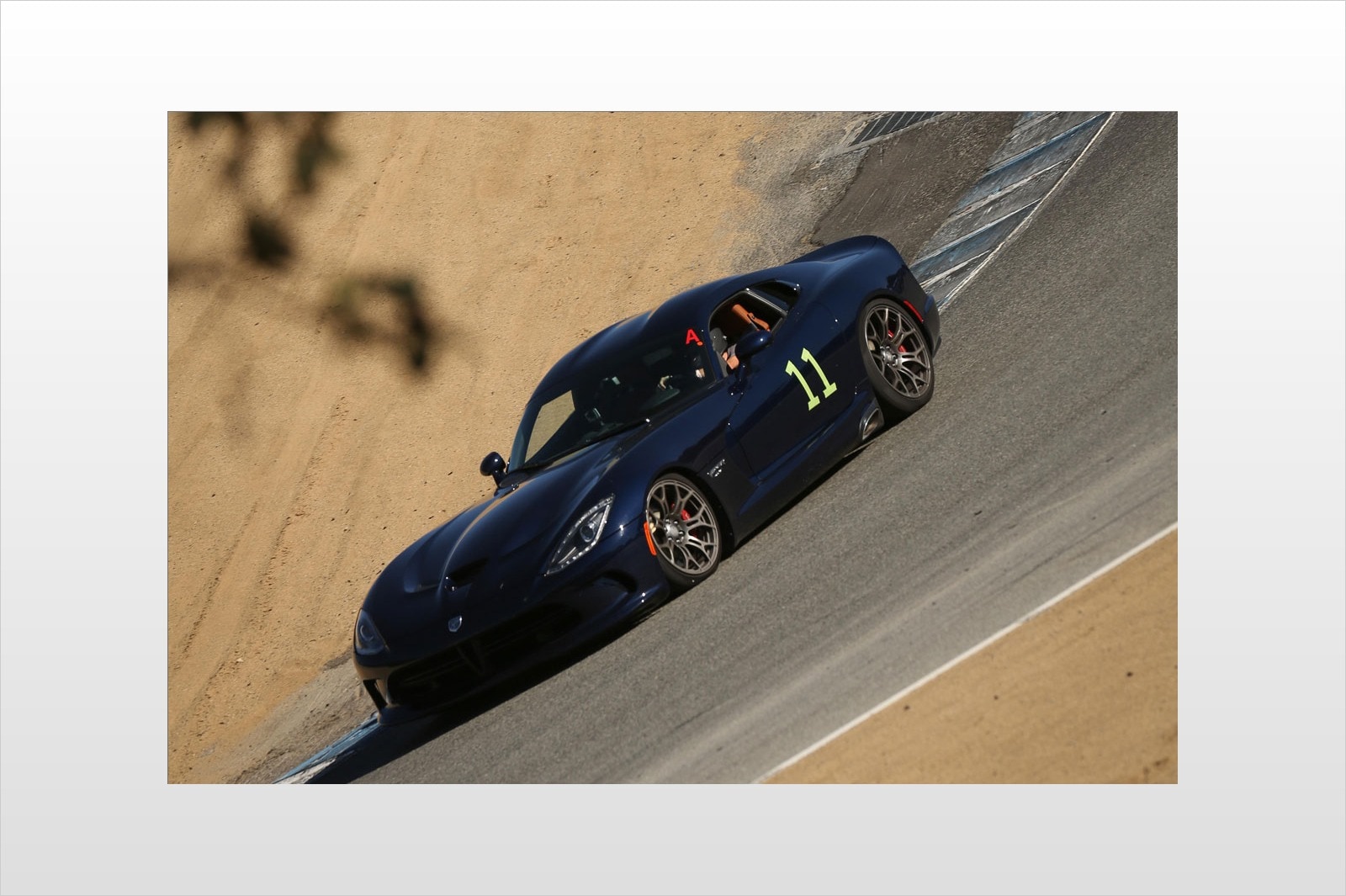
Cheater.
That's the response I got from a close friend when I told him I was bringing our long-term 2015 Dodge Viper to a track day at Mazda Raceway Laguna Seca. He's only partially right.
Sure, the thing is the Big Hammer of track cars. Given that most track days are fraught with Miatas, showing up in a Viper is like bringing a small-scale thermonuclear weapon to a slap fight. Think of it: 645 horsepower, 355mm section-width rubber in the back, an engine that sits cleanly between its axles and massive, fade-free brakes. On paper, this is about as good as it gets. And everyone knows it.
But I've driven a Viper on racetracks before. And I'm yet to love the experience.
Almost every encounter I've had with the car since its 2012 redesign has included the caveat that it lacks the communication, confidence and drivability of its contemporaries. I've always found the Viper difficult, particularly relative to the Corvette. And though I find its lusty curves and distinctly American brand of hubris appealing, I've never had the time to sort through its nuances and discover any latent potential. Two days at Mazda Raceway was bound to be eye-opening.
The thing is unapologetically stiff, loud and powerful. Its creators laugh off small tracks with utter indifference, claiming the Viper is designed for high-speed, mega-grip scenarios found in fast, smooth ribbons of asphalt. It's particularly finicky about braking over bumps and there have always been secondary motions at the limit that make me nervous. It communicates, sure. But I've never loved what is says.
When this track opportunity arose, it was with our car's original-equipment Pirelli PZero rubber — the same tires that had already carried it across the country and back. More than 11,000 miles of road use, thousands of heat cycles and several serious burnouts had come on the tires I was about to rely on through Turn 1 at 130 mph.
I went anyway.
The first few sessions were filled with the same confidence-sapping struggles I've come to expect from the Viper — slides at the wrong time, instability during braking. But I was still using trial and error to sort out the tire pressures, damping setting and preferred stability control calibration.
The old tires, I figured, offered less grip and might justify using the "street" damping setting. Turns out, those massive tires still make enough grip to demand the stiffer "Race" setting. And the "Sport" stability control setting is far too conservative for the Corkscrew. Because most of the turns at Laguna are lefts, biasing tire pressures is beneficial. I burned a few sessions coming to these conclusions all while becoming more convinced that nothing would ever change between me and the Viper.
Then everything changed.
It didn't happen all at once, but as the day progressed, I slowly learned the Viper's language. That lateral movement of the rear end under braking for Turn Two? It doesn't destabilize the chassis in a meaningful way.
As my confidence increased, I inevitably found myself in oversteer situations on the throttle. And despite the fact that the Viper has never given me confidence when its back is trying to pass its front, I found myself carrying the occasional power-on slide out of Turns 2 and 11. It's not the fast way, but dealing with it successfully built real confidence.
Even the Rainey Curve, Turn 9, a fast downhill left that falls away on the outside, was beginning to feel good. I was learning to deal successfully with feedback that was previously unnerving. And I was going faster — a lot faster.
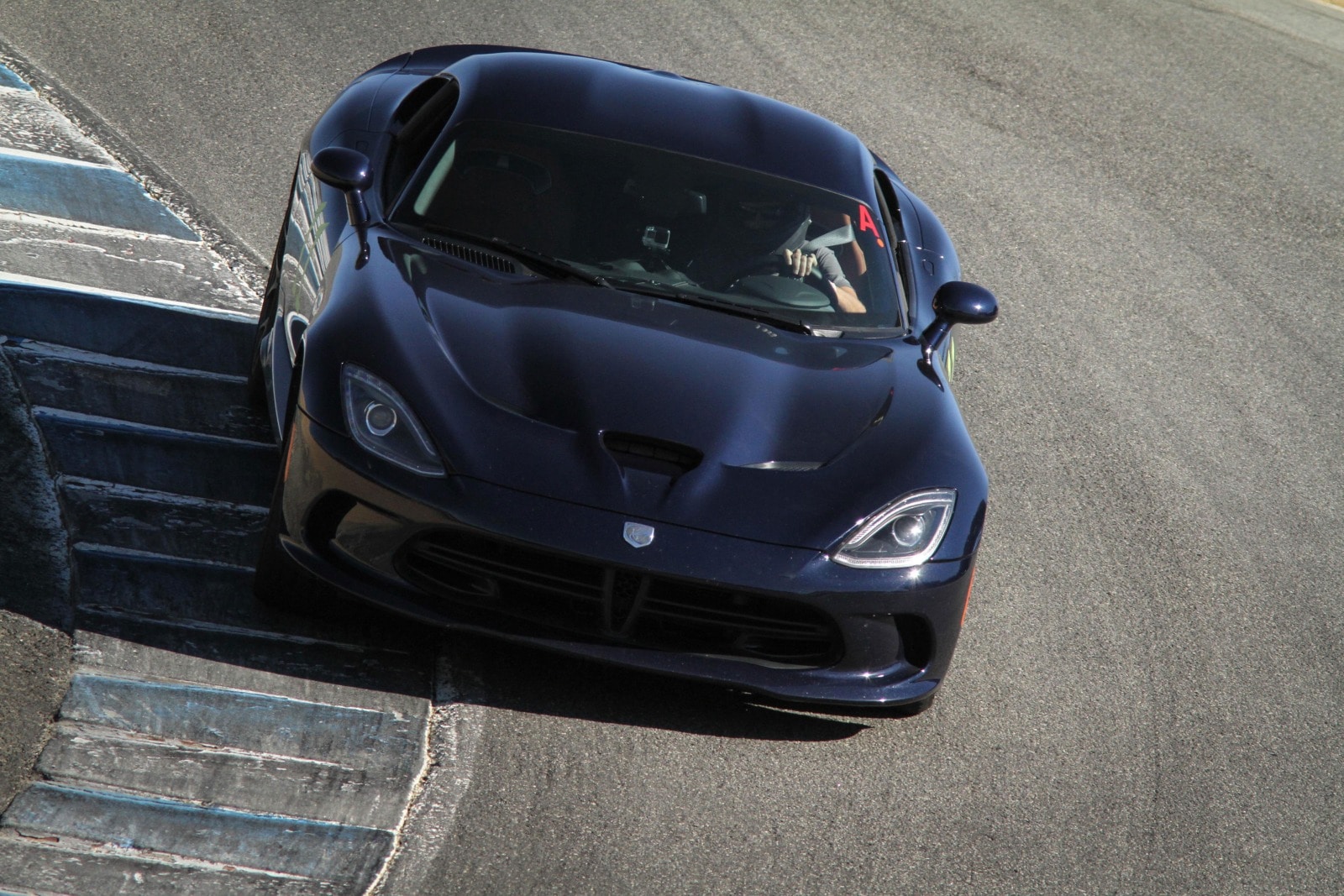
The tires took the abuse admirably and were capable of sustained lapping. As day two arrived, however, the brakes impressed the most, allowing big gains in lap times under braking. I ran the stock pads and hadn't even given them a second thought until the end of the first day. After the last session, I pulled off a front wheel to ensure enough pad remained for another day only to discover at least 50 percent remaining. That the Viper's stock pads, rotors and fluid will tolerate this kind of lapping without a hint of fade or even a bit of squeal on the street is almost unfathomable.
This video was shot midway through the first day's sessions and shows the Viper chewing its way patiently through a crowded track. At the time I was still nursing the throttle uphill between Turns 5 and 6 to avoid a sound violation. I discovered the next day that that concern was unfounded. There's a little Evo dirt rodeo exiting Turn 4 at 7:10. Audio has been disabled for the first minute to protect the innocent, but this will give you an idea what it's like.
The last session on the second day found the Viper battling two new Porsche 911 GT3s. And it was a good one. Though the GT3s had higher cornering speeds, the Viper's power advantage made for entertaining laps as we worked through traffic together. It was a good battle. And if hanging with a reasonably well-driven GT3 doesn't prove the car's potency, I don't know what does.
I left the experience with a more complete appreciation of the Viper. I stand by my belief that most of its contemporaries are easier to drive, but I now understand Viper sympathizers. It's a wildly capable track car that makes you earn it. And that's a trait I can also appreciate.
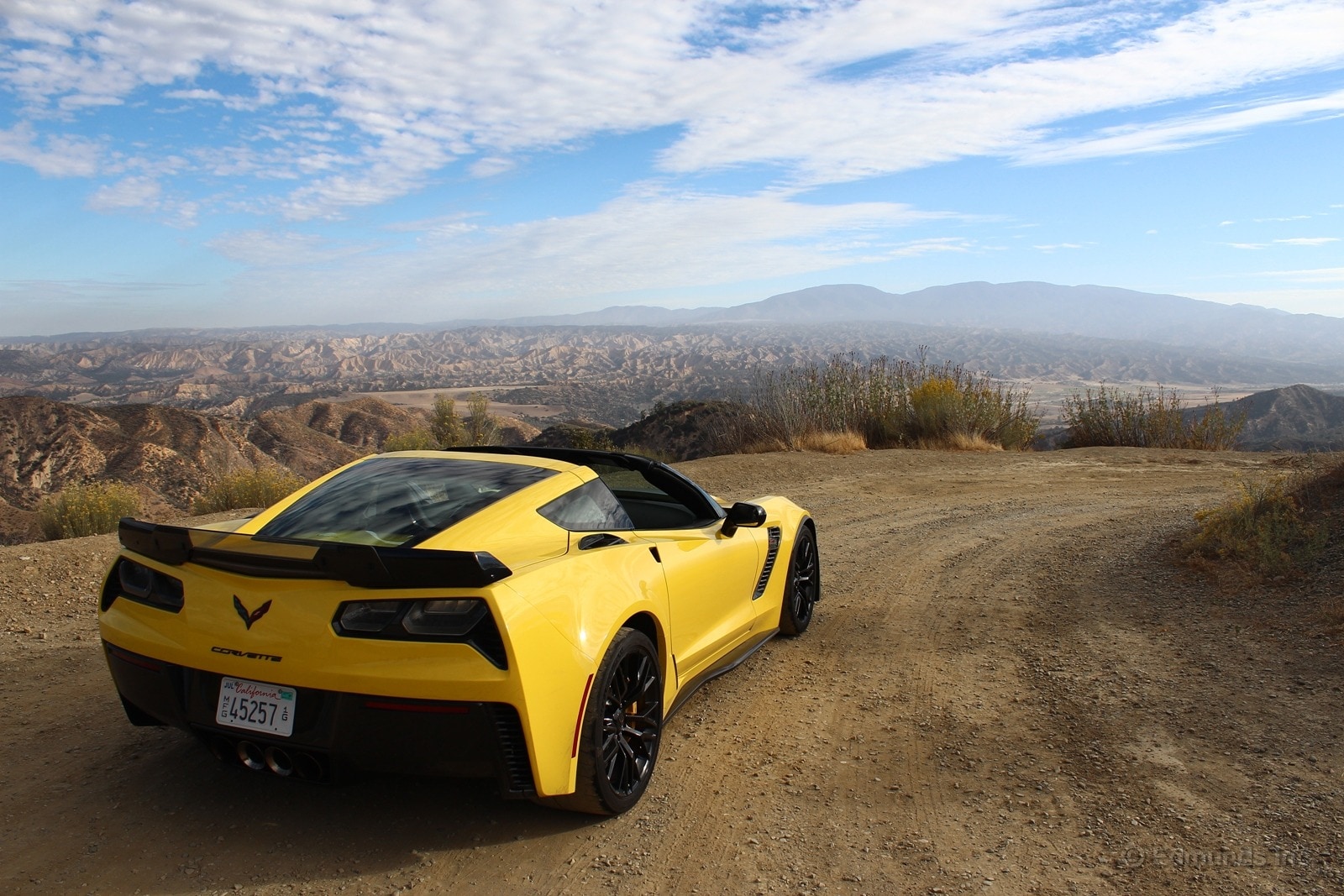
A Corvette Z06 with the Z07 package passed through recently, and I took it upon myself to give it a thorough evaluation one weekday morning in the mountains north of Ojai.
A couple days later, I grabbed our 2015 Dodge Viper's key for the weekend faster than you can say, "Personal comparison test!"
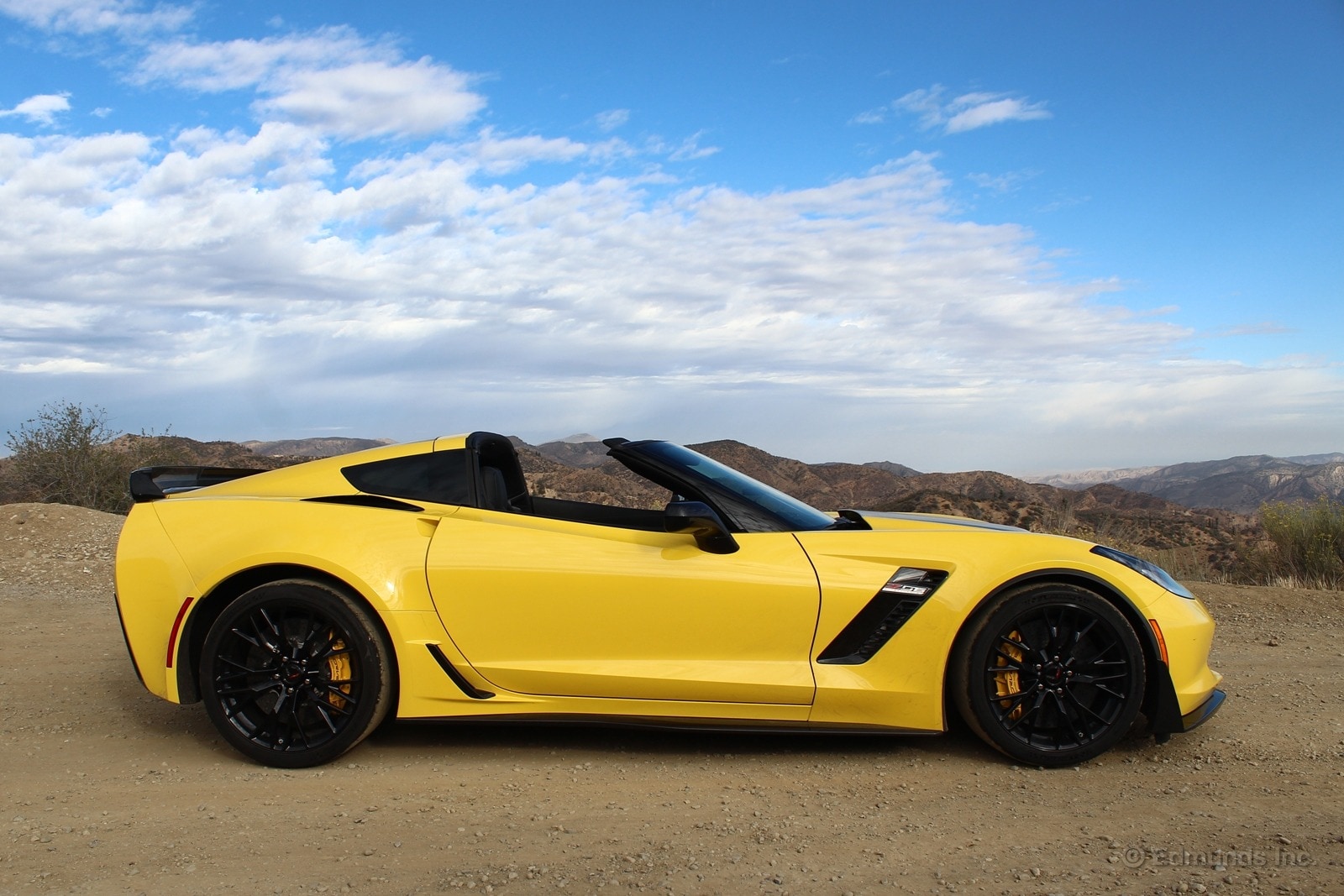
Any honest conversation about the new Z06 has to include its ECU's proclivity to turn the fun down after some hard driving. I was going at it pretty vigorously up to 5,000 feet and did not experience this issue, but then again, due to the engine's preposterous thrust from about 1,800 rpm on up, I didn't feel the need to keep it racing near redline on a public road.
In fact, you're distinctly illegal near redline unless you're in first, because second gear's good for 90 mph. What I'm saying is, it's possible to work the engine a lot harder than I was, and that's where people are reporting problems. Which is a bummer, because you want your stupendously fast car to be stupendously durable too, no matter what you throw at it.

Correct me if I'm wrong, but the Viper seems immune to such issues. Takes a licking, keeps ticking. I like that this car won't be fazed by a bunch of hot laps at the peak of summer. It's got swagger on the street and it backs that up on the track. This is why people buy Hummers, by the way. They're not necessarily going to use all that capability, but there's a heightened sense of badassery in knowing it's there. The Viper's never gonna make you question its fortitude.
Unfortunately, the same can't be said of the Z06.
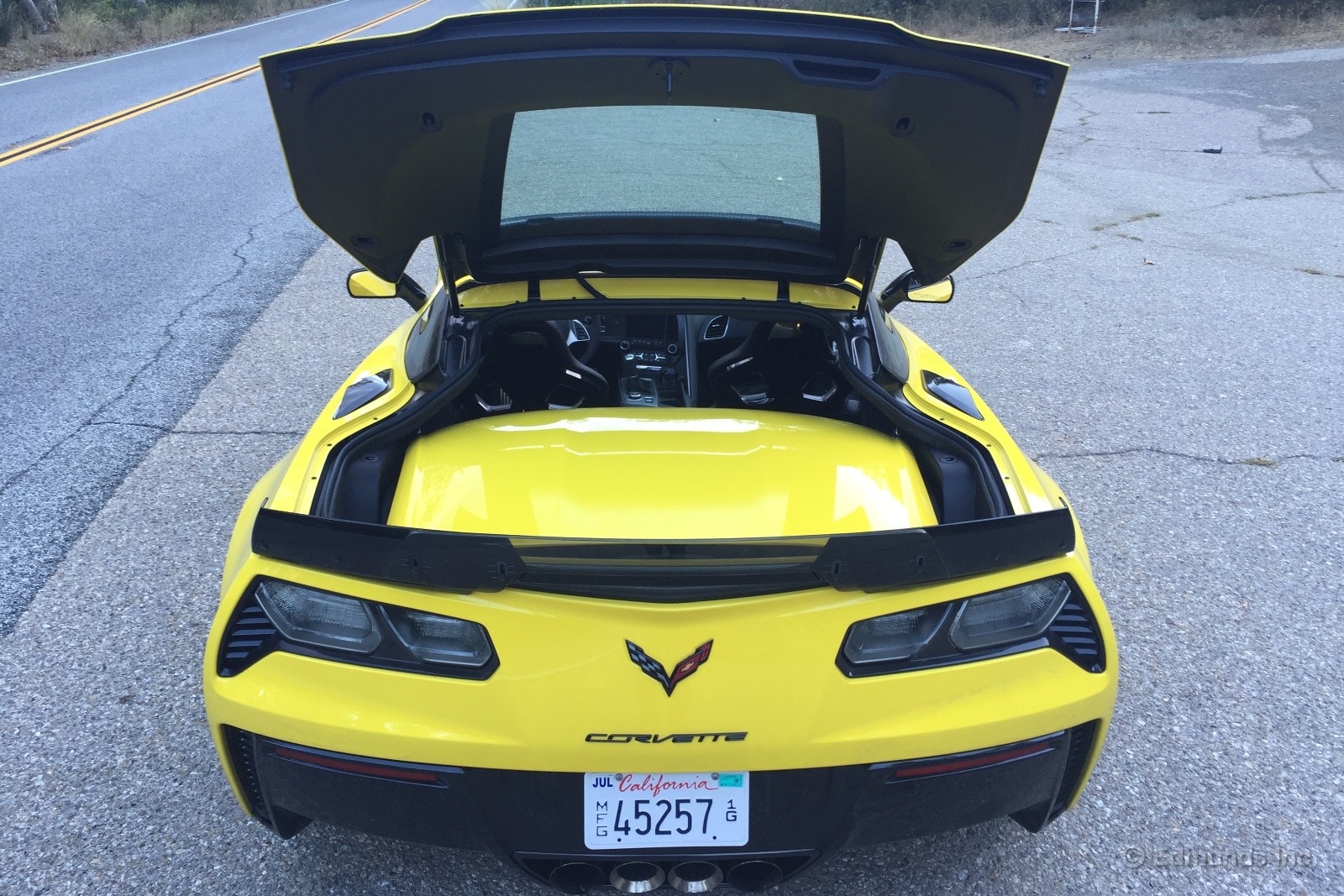
In most other areas, of course, the C7 is simply a more enjoyable companion. The engine sounds awesome, not aggravating. The roof pops off and stows neatly in the trunk, a very welcome first for this Z06 generation. The view out the front is expansive and thrilling, with voluptuous fenders framing the road like in a Lotus Elise.
The driving position is perfect. The steering is right-now responsive yet delicate and precise in a way that had me thinking slightly-less-rich man's Porsche. In any case, it's an enormous improvement over the C6. The shifter and clutch are remarkably approachable and intuitive for such a high-powered machine. And if you want to take a road trip, the Z06 has a supple grand-touring side too, no earplugs or chiropractor required.
But the Viper retains its edge as an indefatigable track-day weapon, and the styling's miles better from where I sit. If the SRT folks were to change their minds and keep building this thing, could they somehow make the V10 mellifluous, or else give us an engine that is (cough, Hellcat)? Could they close the comfort gap with the 'Vette? A Viper like that would make more sense to me at $100,000.
Possibly I'm missing the point.
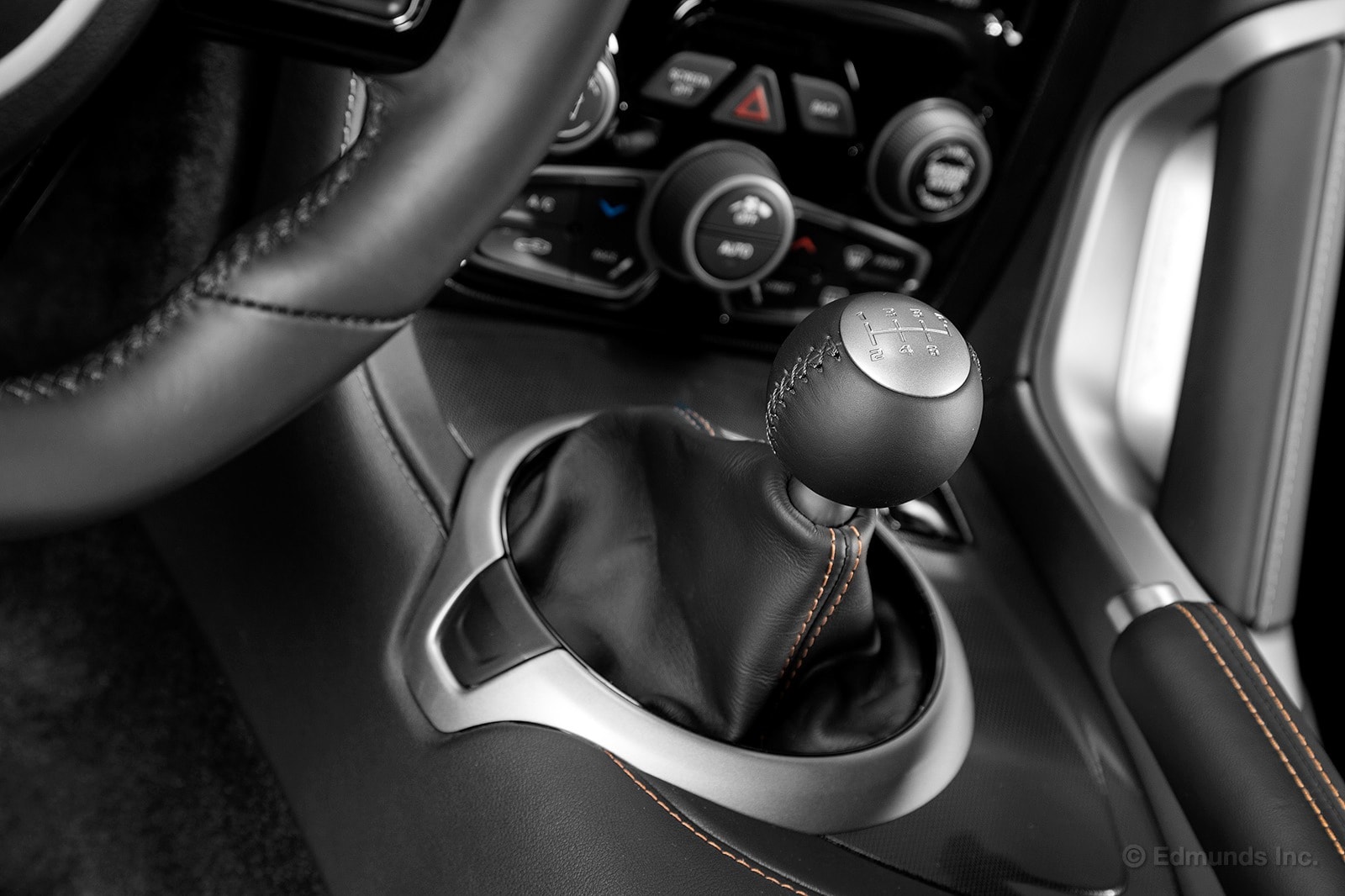
I wasn't a fan of the skip-shift feature in our long-term 2014 Chevrolet Corvette. I don't think the feature belongs in any car really, but it felt especially sacrilegious while driving the Corvette. Our long-term 2015 Dodge Viper has a skip-shift feature, too. It feels even more out of place in a V10 Dodge.
The feature, designed to increase fuel economy, locks out second and third gear and forces you to shift from first gear directly to fourth, provided that your throttle position and RPMs are within the correct parameters. Luckily, the Viper's skip-shift is pretty easy to avoid.
According to the Viper's manual, "Skip Shift is enabled when vehicle speed is greater than 16 MPH but less than 18 MPH and the accelerator is at 20% or less." Basically, there's a tiny window where skip-shift is engaged and if you want to avoid the forced shift, just change gears early (or later).
So while the skip-shift feels out of place, it's difficult to engage in normal driving. After several days commuting the Viper through city traffic, I only came up on the feature once or twice and there was a very basic solution: more loud pedal.
Toe-to-Toe With Z06 In the Mountains
That the Corvette Z06's monster motor ever feels soft should surprise you. It surprises us. But with 8.4-liters of piston-pounding hate under its hood, our 2015 Dodge Viper has a way of recalibrating our view on just about everything. Even the Z06.
It's been hot. Really hot. About 100 degrees, in fact, in a Southern California summer that will never end. We've taken our long-term Viper and a short-term Corvette Z06 tester to the mountains to feel out their differences. We're driving hard. But the heat is making the otherwise-stunning Z06 seem surprisingly out of sorts.
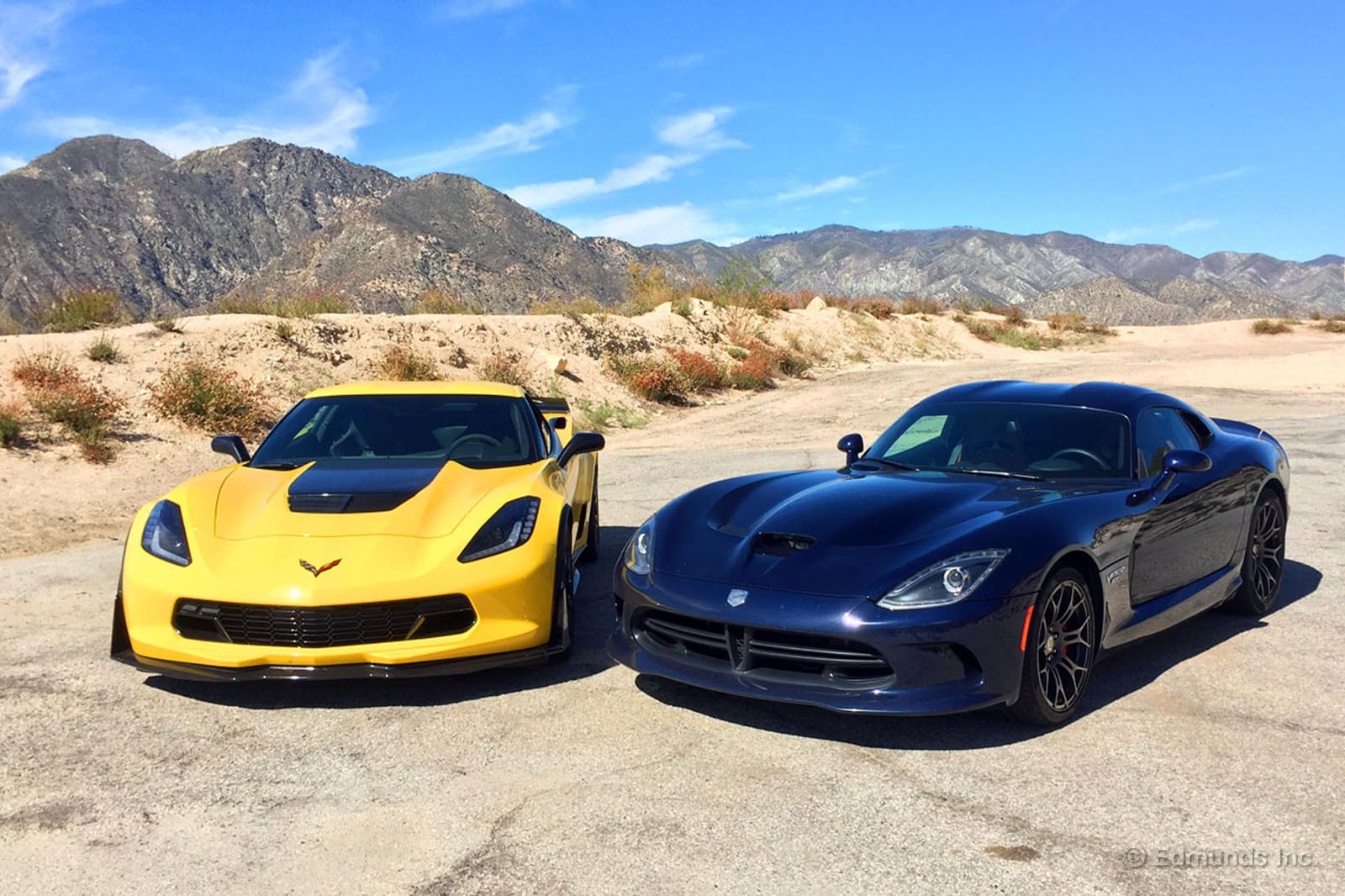
Remember that these cars have horsepower ratings that are almost identical: 645 for the Viper, 650 for the Z06. But there's no doubt that the oppressive heat hurts the Z06. With coolant temps hovering around 255 degrees and oil temps well beyond 300 degrees, the Z06 was likely on the verge of limp mode for much of our driving. At these temperatures, self-protection measures surely limit its power.
So it's unsurprising that the Viper felt more powerful, particularly at high rpm. The Corvette's torque advantage, though diminished, was still present in the lower rev range. But when driven hard in these conditions, the Viper's engine was easily the more impressive, aided in part by hauling around 146 fewer pounds.
But the Z06 has a lot more going for it than just its engine. Its stickier rubber coupled with more intuitive steering feel and brake response don't hurt. The Z07 package on this Z06 provides Michelin Pilot Sport Cup 2 tires which are among the stickiest tires sold on any production car today. At the very least they're a good bit stickier than the worn-out Pirelli PZeros on our Viper. For this to be a fair comparison from a grip standpoint, we'd need the Viper's optional PZero Corsas.
Speaking of tires, it surprised me to discover that the transformation to Z06 has dulled some of the base Stingray's fantastic feedback. This is particularly true of the steering where massive, sticky tires are possibly the culprits. Though it's better than the Viper, steering feel isn't as good in the Z06 as it is in the standard Corvette. This is easily noticeable on a tight mountain road where small corrections are a constant necessity. The limits might be higher, but the confidence to approach them isn't as good.
Even so, the C7's fundamentally predictable, communicative nature shines when the car is pushed in this environment. It's easier to drive the big Vette quickly than it is to hustle the Viper. Better forward visibility factors into the equation, especially on public roads where blind corners and blind crests reveal every visibility woe.
Both cars have more headroom in their braking system than you need on a public road. Heat simply isn't an issue in either case, but the Z06's carbon-ceramic rotors coupled with stickier rubber provide a more responsive pedal which scrubs speed with less effort. And even though the Vette is the heavier of the two, it's stable and easily controlled under hard braking. Losing 40 mph in a few seconds is easy and comfortable in this car. The Viper, because of some lateral monkey motion, almost always makes me think twice.
Overall, there's plenty to appreciate from either driver's seat. But if I were tasked with reaching the other end of a mountain road as quickly as possible, I'd reach for the Z06 keys first. If it weren't 100 degrees, that is.
Performance-Tested Versus Corvette Z06
The Viper-versus-Corvette argument has raged since Dodge introduced the Viper in 1992. Back then, the Viper made a measly 400 horsepower from its 8.0-liter V10. The best-performing Corvette of the day, the ZR-1, only managed 375 horsepower from its Lotus-designed V8 (bumped to 405 hp in 1993).
Performance bragging rights have swayed over the years. Each new model tries to outrun and outgun the other in every single metric. Our long-term 2015 Dodge Viper and the 2016 Chevrolet Corvette Z06 are still within five horsepower of each other. Nearly every other category comes down to tenths or hundredths.
While the cars are faster and more powerful than ever before, the basic formulas haven't changed. Both are rear-wheel drive coupes with a shift-for-yourself transmission. The Viper still has a big V10 under the hood while the Corvette remains V8-powered, though that's now accompanied by a supercharger.
Numbers alone won't do these two machines justice, though they do provide fodder for bench racers.
|
2015 Dodge Viper GT |
2016 Chevrolet Corvette Z06 |
0-60 (sec) |
3.6 |
3.8 |
0-60 w/rollout (sec) |
3.4 |
3.5 |
1/4-mile (sec @ mph) |
11.41 @ 128.75 |
11.49 @ 123.75 |
60-0 Braking (feet) |
103 |
90 |
Skidpad (g) |
1.03 |
1.16 |
Weight (lbs) |
3,367 |
3,513 |
Horsepower |
645 |
650 |
Price |
$103,785 |
$98,360 |
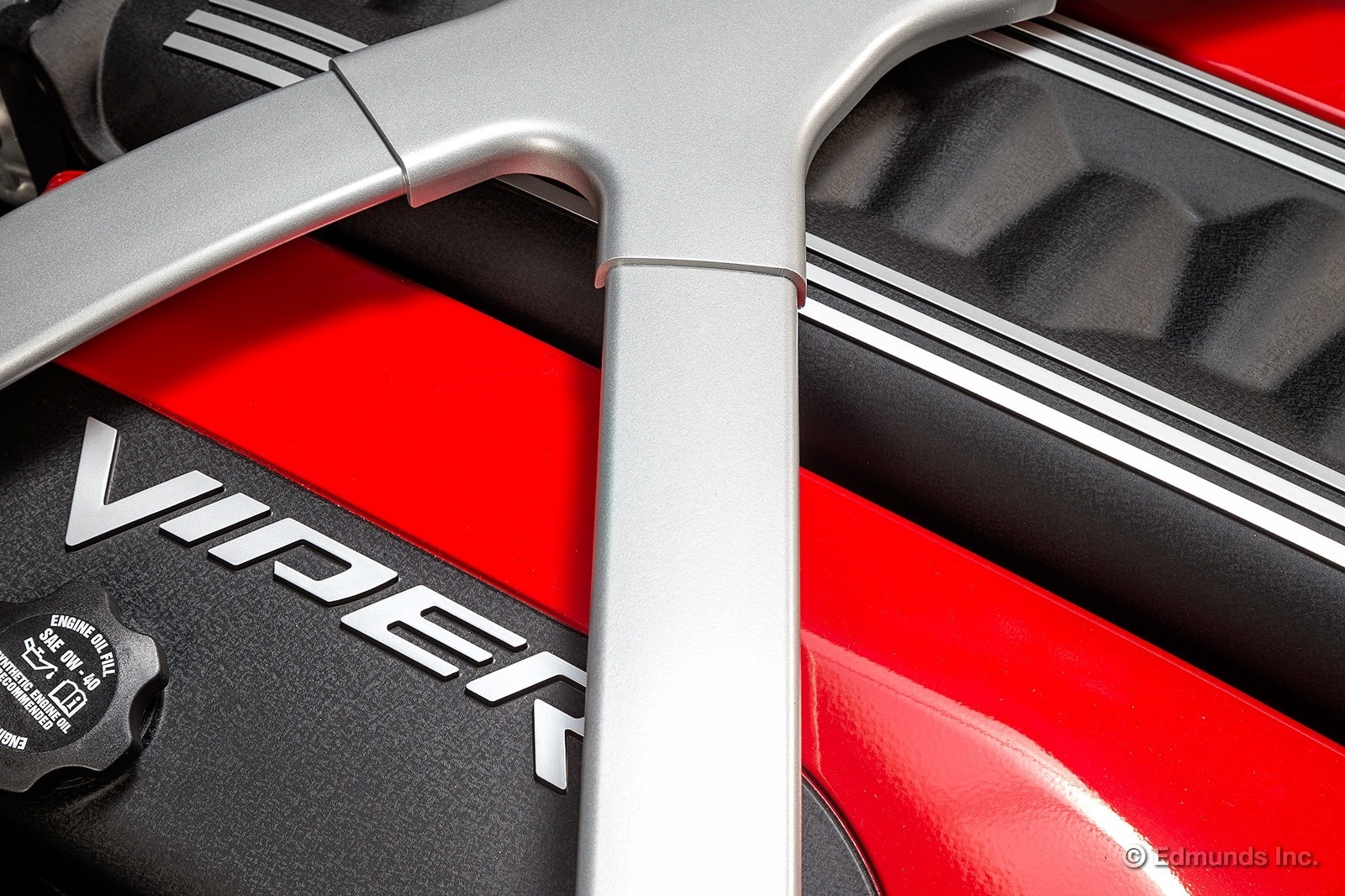
Vehicle: 2015 Dodge Viper GT
Odometer: 8,030
Date: 7/28/2015
Driver: Carlos Lago
Price: $103,785
Specifications:
Drive Type: Rear-Wheel Drive
Transmission Type: Six-speed manual
Engine Type: V10
Displacement (cc/cu-in): 8,390/512
Redline (rpm): 6250
Horsepower (hp @ rpm): 645 @ 6200
Torque (lb-ft @ rpm): 600 @ 5,000
Brake Type (front): Two-piece vented and slotted disc with four-piston fixed calipers
Brake Type (rear): Two-piece vented and slotted disc with four-piston fixed calipers
Suspension Type (front): Cast-aluminum unequal-length upper and lower "A" arms, coil springs, low-pressure gas-charged shock absorbers, stabilizer bar
Suspension Type (rear): Cast-aluminum unequal-length upper and lower "A" arms, toe-control links, coil springs, low-pressure gas-charged shock absorbers, stabilizer bar
Tire Size (front): P295/30ZR18 94Y
Tire Size (rear): P355/30ZR19 99Y
Tire Brand: Pirelli
Tire Model: PZero
Tire Type: Summer
As-tested Curb Weight (lb): 3,367
Test Results
Acceleration:
0-30 (sec): 1.8 (w/ TC on 2.2)
0-45 (sec): 2.7 (w/ TC on 3.1)
0-60 (sec): 3.6 (w/TC on 4.1)
0-60 with 1-ft Rollout (sec): 3.4 (w/TC on 3.8)
0-75 (sec): 5.0 (w/TC on 5.3)
1/4-Mile (sec @ mph): 11.41 @ 128.75 (w/TC on 11.74 @ 128.02)
Braking:
30-0 (ft): 25
60-0 (ft): 103
Handling:
Slalom (mph): 69.2 (68.9 w/ESC on)
Skid Pad Lateral acceleration (g): 1.03 (1.01 w/ESC on)
RPM @ 70: 1550
Comments
Acceleration: "The Viper produces immense acceleration even in key-up settings. Traction control helps minimize wheel spin, but doesn't go overboard and engage too aggressively. It smoothly lets up once the tires find grip. Launch control is less impressive. I followed the on-screen instructions (quickly apply gas and quickly release clutch), and it simply did a burnout. The resulting acceleration was slower than the key-up run."
"Best acceleration was achieved with electronic aids off and a clutch release at around 1,500 rpm. First gear can do 60 mph, but catching it without hitting the rev limiter is difficult. Gearing is otherwise spaced nicely for the quarter-mile. You run out of fourth right after the finish line. I love this shifter and clutch pedal. Shift lever has excellent, positive throws. You can rush it really fast and never fear missing a shift, unlike the Corvette. This really helps you tighten up shift times.
Viper exhibited lots of wheel hop on aggressive launches, which it really did not seem to like. I tried minimizing it by extending the clutch take up, but it didn't seem to improve anything."
Braking: "Braking distance improved by three feet from the first to second run, indicating that the system and/or tires want some heat in them. The brake pedal has good bite at normal speeds, but requires extremely high effort to exert maximum stopping force. It has good, predictable feel, but you really have to dig into it. Five stops produced no fade or odor, and stops remained consistent around 103 feet. While braking repeatability was satisfactory, we were surprised this couldn't break the 100-foot barrier. We've seen Corvette Z51 pack cars do that, including our old long-term test car."
Handling:
Slalom: "The Viper confidently approaches the slalom at 70 mph. It's stable and controlled, provided you plan and get the steering inputs right. It'll do exactly what you ask of it, even if what you ask it is to spin. Track ESC settings allow a lot of freedom and offer a safety net you can lean into. The high-grip, high-g, high-effort experience can be tiring."
Skidpad: "Good neutral balance. It transitions smoothly from understeer when you're going too fast to oversteer when you lift the throttle, which helps the driver control the nature of the car around a corner. The front has a ton of bite and precision. And you can provoke little slides to keep the speed up. But don't let those slides get too big! Once the Viper exceeds a certain slip angle, it's gone."
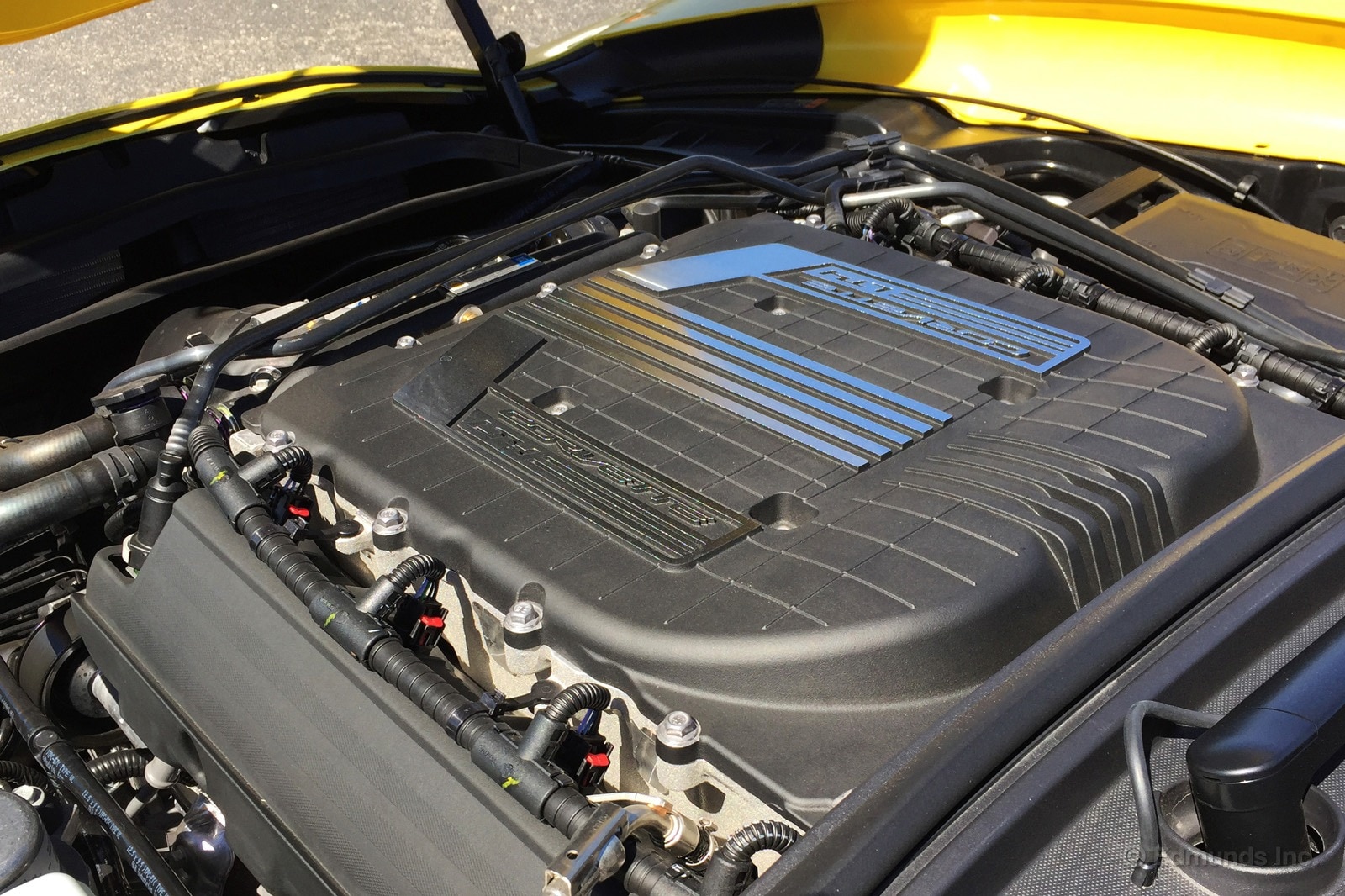
Vehicle: 2016 Chevrolet Corvette Z06 with Z07 Performance Package
Odometer: 705
Date: 9/29/2015
Driver: Carlos Lago
Price: $98,360
Specifications:
Drive Type: Rear-Wheel Drive
Transmission Type: Seven-speed manual
Engine Type: Supercharged V8
Displacement (cc/cu-in): 6,162/375
Redline (rpm): 6,600
Horsepower (hp @ rpm): 650 @ 6,400
Torque (lb-ft @ rpm): 650 @ 3,600
Brake Type (front): Vented and drilled carbon-ceramic rotors with six-piston fixed calipers
Brake Type (rear): Vented and drilled carbon-ceramic rotors with four-piston fixed calipers
Suspension Type (front): Short/long arm (SLA) double wishbone, cast aluminum upper and lower control arms, transverse-mounted composite spring, monotube shock absorber
Suspension Type (rear): Short/long arm (SLA) double wishbone, cast aluminum upper and lower control arms, transverse-mounted composite spring, monotube shock absorber
Tire Size (front): P285/30ZR19 94Y
Tire Size (rear): P335/25ZR20 99y
Tire Brand: Michelin
Tire Model: Pilot Sport Cup 2
Tire Type: Summer
As-tested Curb Weight (lb): 3,513
Test Results
Acceleration:
0-30 (sec): 1.8 (w/ TC on 2.1)
0-45 (sec): 2.6 (w/ TC on 3.0)
0-60 (sec): 3.8 (w/TC on 3.9)
0-60 with 1-ft Rollout (sec): 3.5 (w/TC on 3.6)
0-75 (sec): 4.9 (w/TC on 5.3)
1/4-Mile (sec @ mph): 11.49 @ 123.75 (w/TC on 11.75 @ 122.65)
Braking:
30-0 (ft): 22
60-0 (ft): 90
Handling:
Slalom (mph): 73.2 (68.1 w/ESC on)
Skid Pad Lateral acceleration (g): 1.16 (1.15 w/ESC on)
RPM @ 70: 1,400
Comments
Acceleration: "We removed the adjustable portion of the Gurney flap before acceleration testing. The drag from the flap adversely affects acceleration, so it makes sense to take it off before doing a run up a drag strip. Undoing the four screws takes a minute or two. A key-up 11.75-second quarter-mile pass shows the traction control system's effectiveness. It does a fantastic job of keeping the car stable and reducing wheelspin without significantly hurting acceleration.
The Performance Traction Management sub settings are easy to find once you get familiar with them, and Launch Control is simple to activate. Once PTM is engaged, hold the throttle and release the clutch. LC holds a rather high engine speed (around 4,000 rpm), but excellently manages acceleration. It's easy and consistent, perfect for bracket racing or for situations where there are no do-overs.
Launching with no assists is faster, but much more difficult. Lots of grip and low end torque makes the clutch hand off tricky. My best launch was at around 1,500 rpm and a quick clutch release — not a side step. There's a fine line of a few hundred rpm between getting it right and wrong. Throttle management is critical. Even the slightest tire chatter can transform into too much spin once the motor gets into its powerband.
Once it's hooked, it's simply a matter of hitting your shifts. No-lift shift makes this simple. You can keep your foot planted on the throttle during a shift, which allows for faster acceleration as there's no throttle interruption. The shifter is easy to move quickly. I only missed the 2-3 shift once.
The Z06 will do 60 mph in first gear, which cuts a few tenths off the 0-60 mph time. I forgot this while testing and shifted before 60 mph, which is why the 0-60 time here is slower than the previous manual Z06 we tested. Even though we removed part of the Gurney flap, the other aero pieces still produce enough drag to hurt the trap speed of the Z07-package car."
Braking: "Simply awesome braking performance. The first stop, on cold tires, was 93.8 feet, which is already ahead of the majority of sports and super cars. As the tires starting heating up, the distances kept improving. The best stop was 89.51 feet, which is the shortest stop I have ever recorded from a production car. This performance was consistent; five of the seven stops were under 90 feet.
Despite the short stopping length, there isn't much drama. No ABS noise or shudder. Not even tire squeal. There's just so much tire. The performance improved as the tires got warm, but the cold performance isn't bad either. It's not like an on/off switch. The pedal doesn't require a lot of effort. The brakes didn't produce any odor or fade. This system feels like it can be used hard all day."
Handling:
Skidpad: It's like driving a Tilt-A-Whirl. Average 1.16 g on a small, 200-ft skidpad is an insane amount of mechanical grip, and there's little if any aero influence at this speed. Just tire. And lots of it. The cornering forces push you hard into the sides of the seat. It's incredible how hard this thing can turn. The balance feels nice and neutral, too.
The Z06 settles on its max lateral g happily and doesn't need much correction. I netted the fastest result running the car with PTM set to the most aggressive setting (Race), which is how I'd approach a race track that I wasn't intimately familiar with. The stability control system does a fantastic job of allowing the amount of slip that keeps you going fast, but pulls the car back in when the slip starts slowing you down. It's an amazing learning tool. The Z07 package brings a 0.07-g average increase. That's huge when you're above 1.0 g.
Slalom: High-g and high-effort car. It bounces back between 1-g extremes over and over, which is tiring. Fortunately the controls are light, which helps maneuver this wide car though the cones.
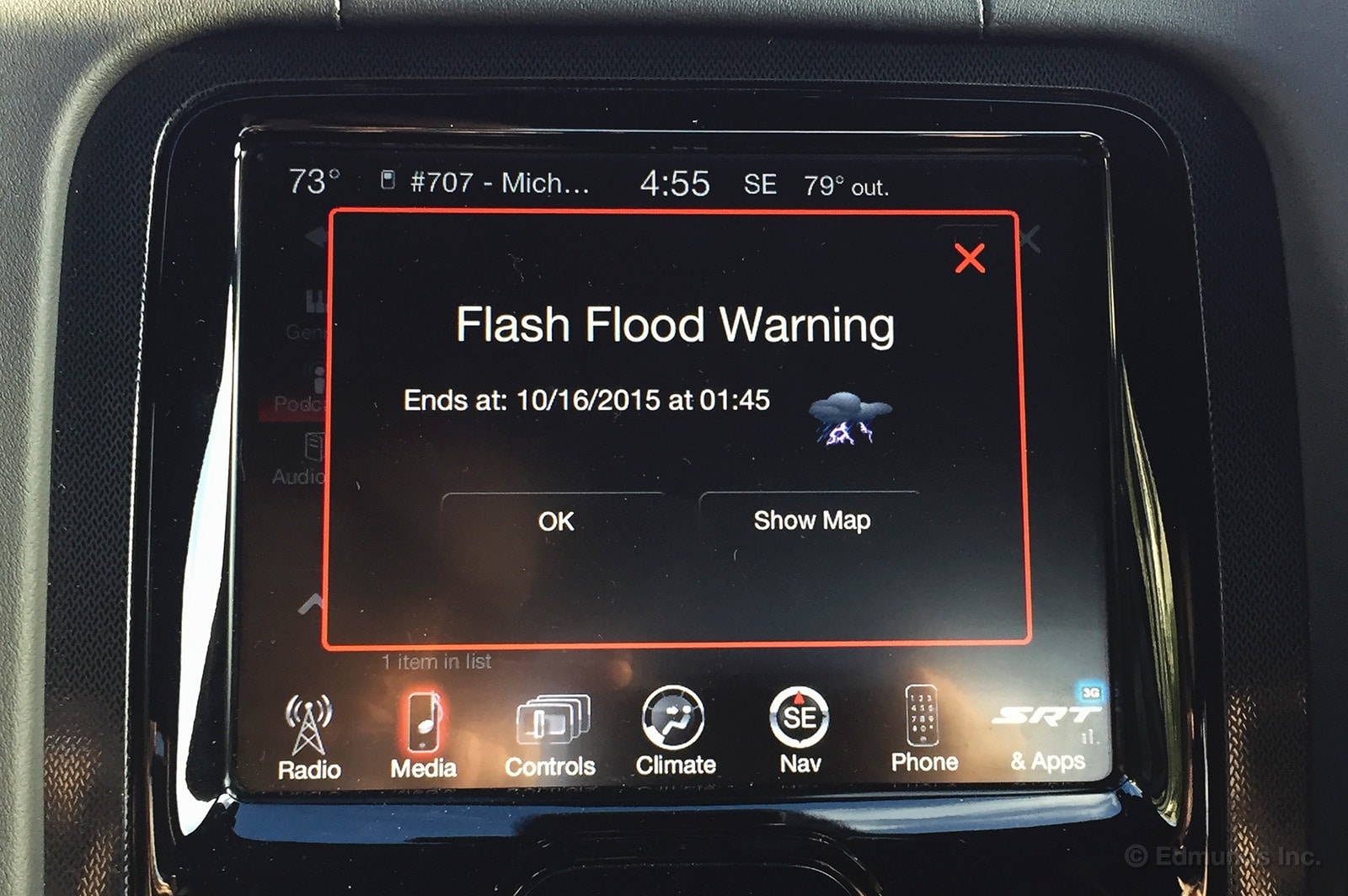
It doesn't rain much here in Los Angeles, so when we see clouds on the horizon, we tend to get a bit frantic. Freeway traffic stops completely, news tickers immediately read "STORM WATCH 2015!" and weather reporters don bright-yellow boots to brave the elements.
The weather-alert in our long term 2015 Dodge Viper had a similar reaction to a weather report last week and it chimed in during my commute to warn me of the impending doom.
As you can see in the first photo, the center screen in the Viper read "Flash Flood Warning." To me, this meant imminent danger. I wanted to know immediately where the water was and what routes home would be open and safe. In a low car like the Viper, large bodies of standing water are something you avoid at all costs. Of course, I immediately pressed the "Show Map" button.
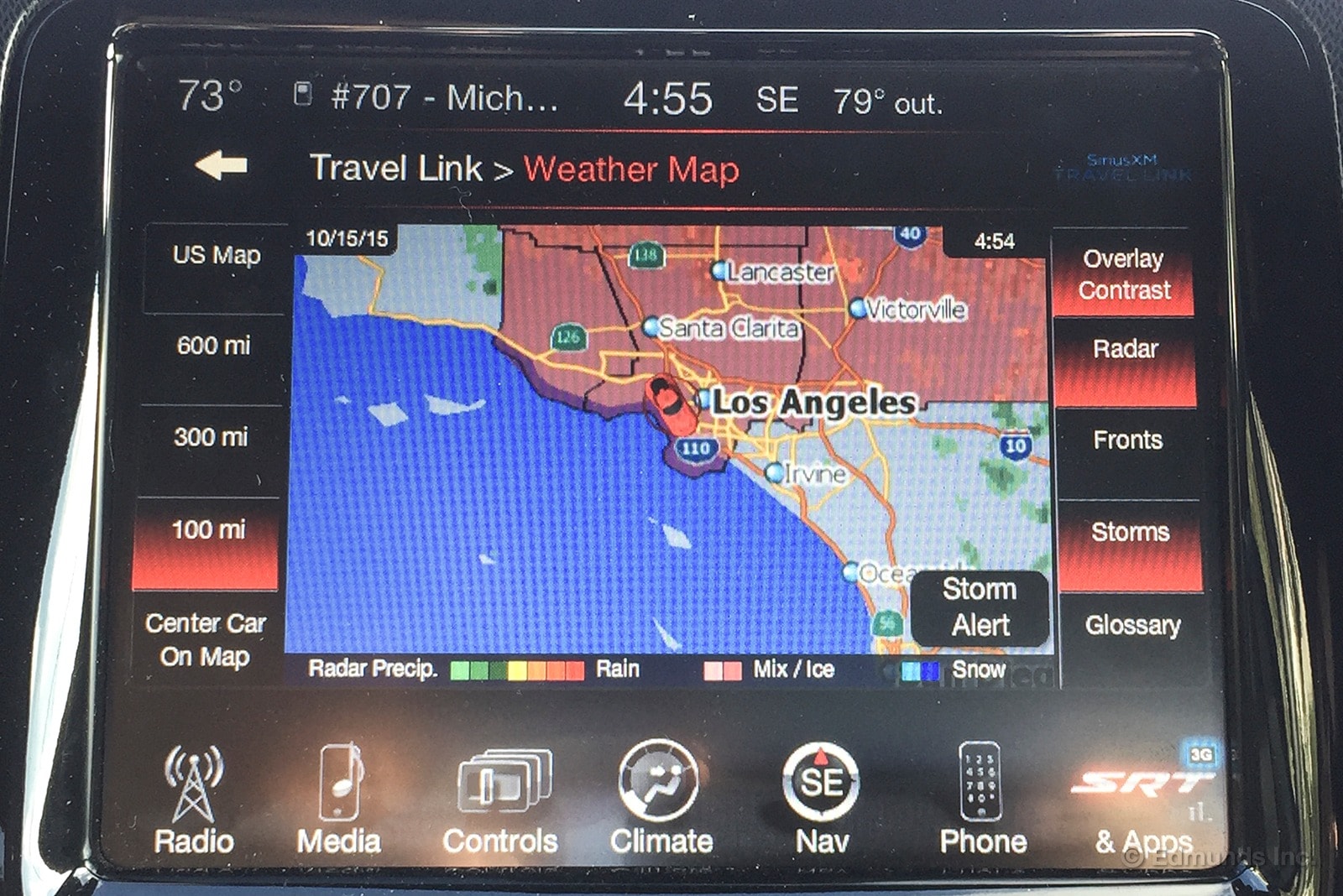
The area in red is the Flash Flood Warning zone. If you know anything about the topography of Los Angeles, you'll understand why I let out a hearty laugh upon seeing the map.
Victorville, labeled on the upper right-hand corner of the map, is more than 100 miles from the Edmunds office in Santa Monica and there's an elevation difference of about 3,000 feet. There was almost zero chance that a flash flood was happening in both places at the same time, especially since it wasn't currently raining in either location. I suppose this kind of alert would be more useful on long road trips, but for my commute it was pretty useless.
The Viper's warning system kicked on once more along my short drive home, but this time I ignored it. And the grand total of rainfall in my area that day? Zero-point-zero inches.

"DING... DING... DING..."
Our long-term 2015 Dodge Viper started chiming at me about a mile into my morning commute last week and a message popped up on the TFT display. It read "Low Tire" so I cycled through the available screens to find the tire pressure readings. Only one tire (the front left) was low enough to set off the warning but all four tires were below the recommended cold-spec of 29 PSI.
Visual inspection was fine, no nails or screws that I could spot, so I drove the remaining three miles to the office, where Testing Assistant Reese Counts busted out our gauge for a double-check. Sure enough, they all needed some air. We filled all four tires to 29 PSI.
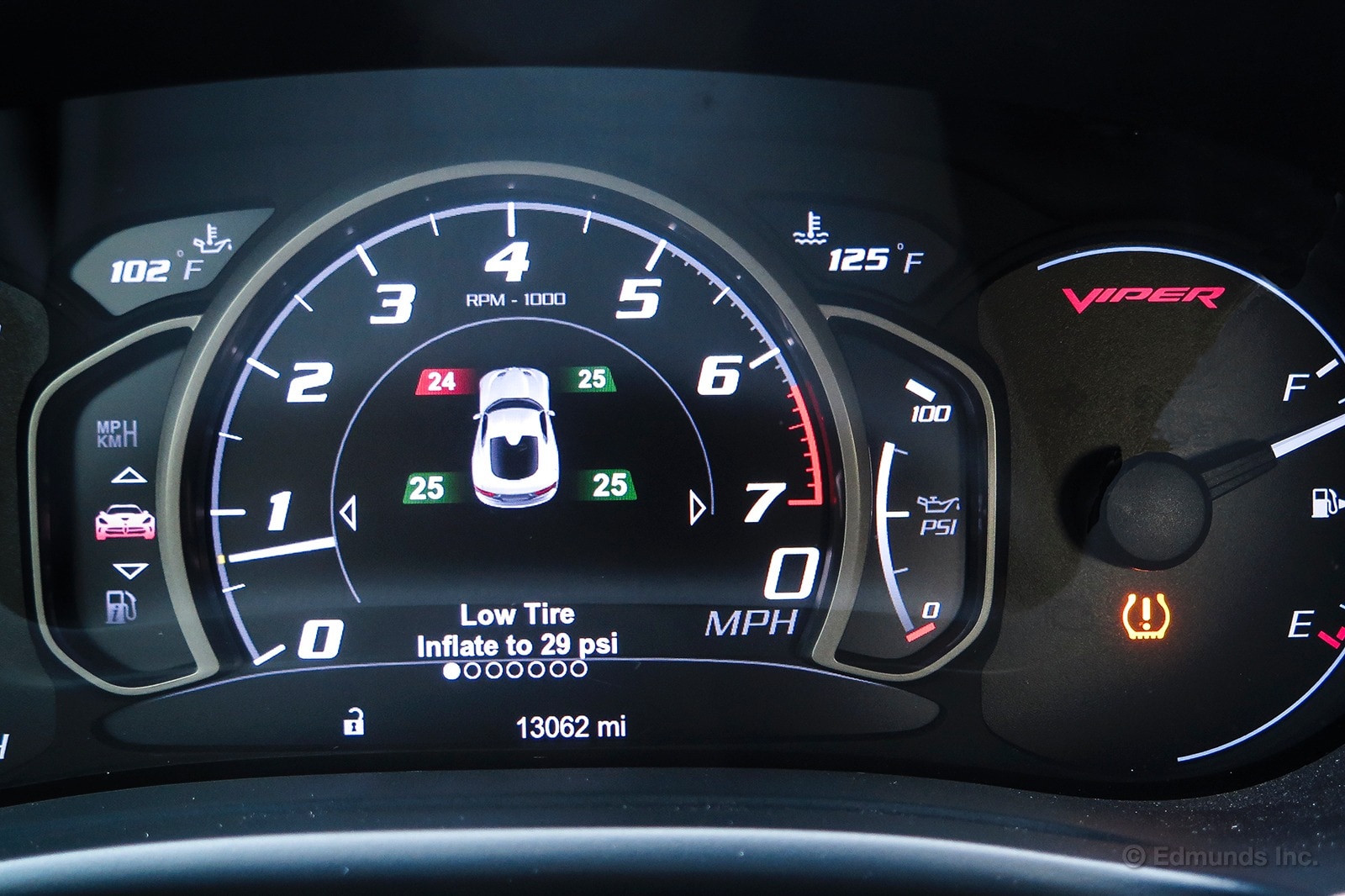
The tread looks fine all around, but I get the feeling that multiple heat cycles have seriously affected the amount of grip left in the P-Zeros. With a few cross-country journeys and more than one trip to the track, this set of rubber has been through a lot in 13,000 miles. It's probably time to start searching the interwebs and calling our local sources for prices on a new set.
In the meantime, we'll be watching for slow leaks.
Side note: how awesome do those wheels look? I wonder if they'd fit our Mustang...
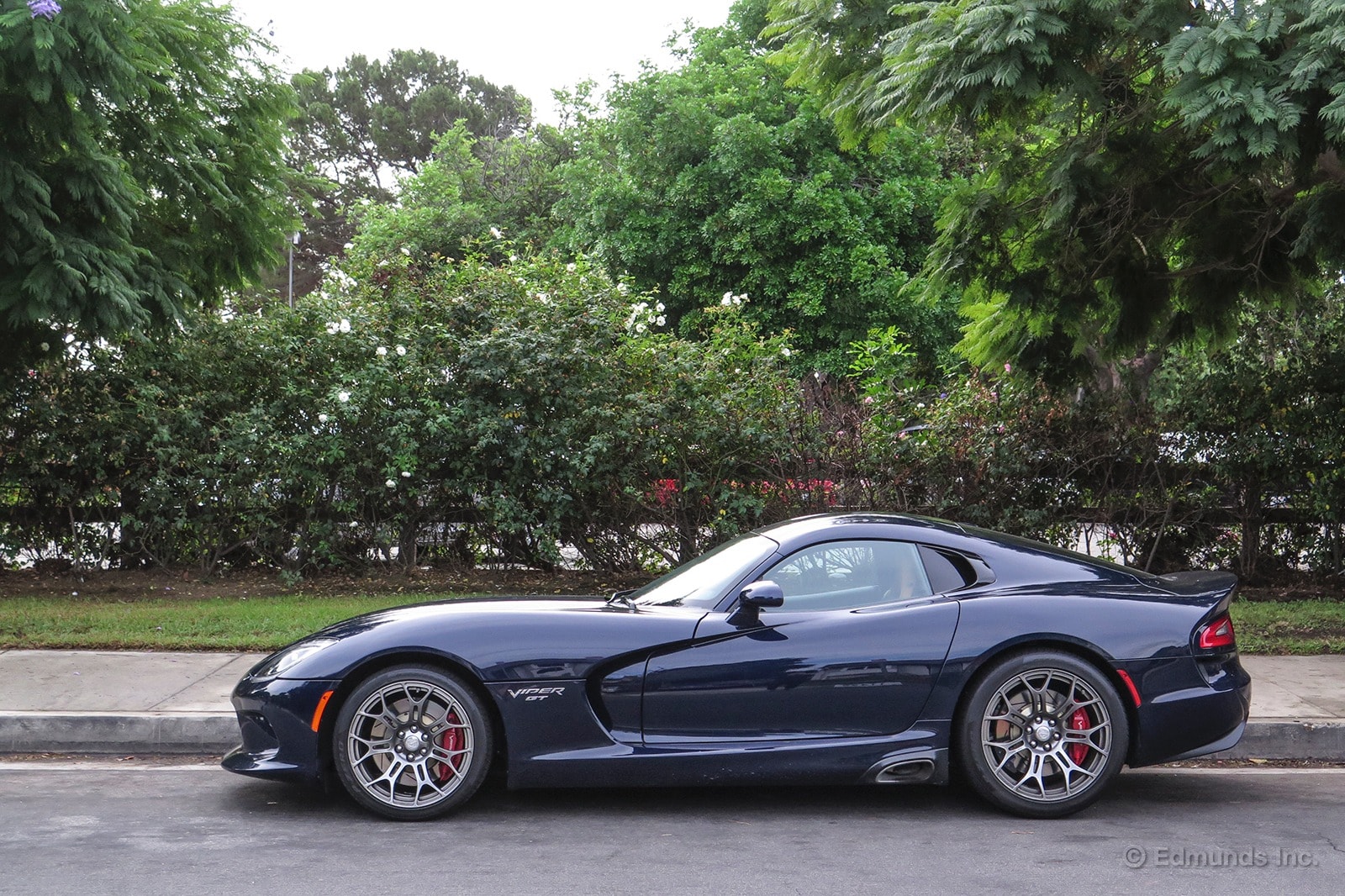
The typical Monday-morning routine for the editorial staff here at Edmunds almost always includes a car wash. So everything was business as usual when I took our long-term 2015 Dodge Viper to the car wash last week, until I tried to leave.
For cars like the Viper (i.e. expensive), we typically go with a hand wash. This means a guy with a hose and a bucket did the work of getting the car clean. And afterwards, when he handed me the keys, the car wouldn't start.
"Chug chug chug chug chug". Nope.
"Um, that's weird," I thought. I waited a few seconds then tried again.
"Chug chug chug chug chug chug chug". Still nothing.
I climbed out to inspect the car. Maybe someone had put a banana in the side pipes? I looked, but found nothing. Before I had a chance to open the hood, the manager of the car wash wandered over to see what the trouble was. He climbed in, pumped the gas pedal a few times (I wondered for a moment if our Viper was carbureted and no one told me) and the car started for him, first try. We made a few jokes about the car not starting and I left, confused by the whole experience.
Back in the office, I asked around.
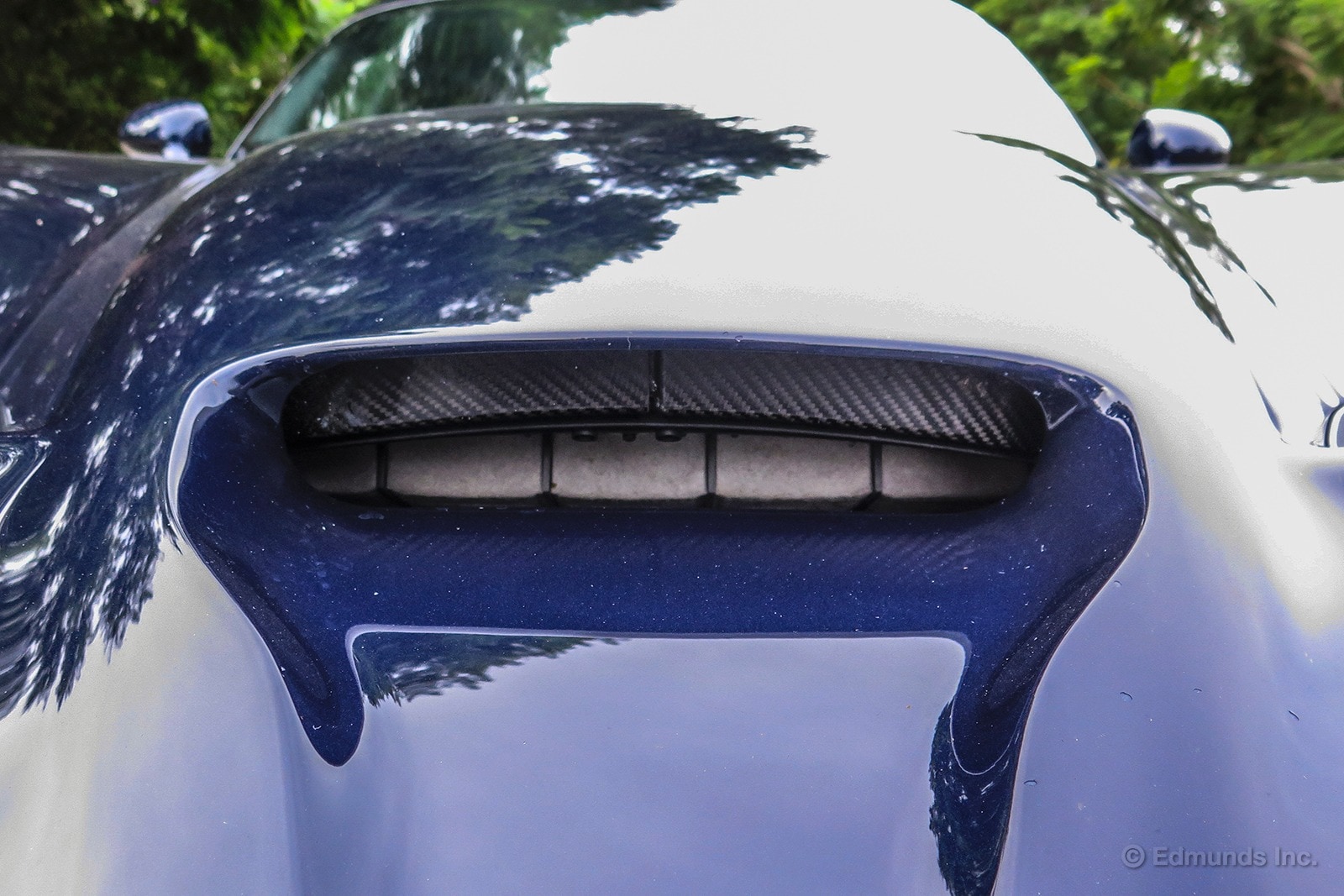
Apparently this wasn't an isolated incident. Features Editor Mike Magrath confirmed that this sort of thing had happened to him before and Road Test Editor Carlos Lago suggested that water might've made its way in to the engine bay through the open slot in the nose. I scoured the manual for any warnings about driving the Viper in rain or avoiding water in the nose, but there was nothing.
For now, I'm considering the water-in-the-engine-bay hypothesis the only viable explanation. In the future, I'll be sure to warn the porters to keep the hose away from the gaping hole in the Viper's hood.
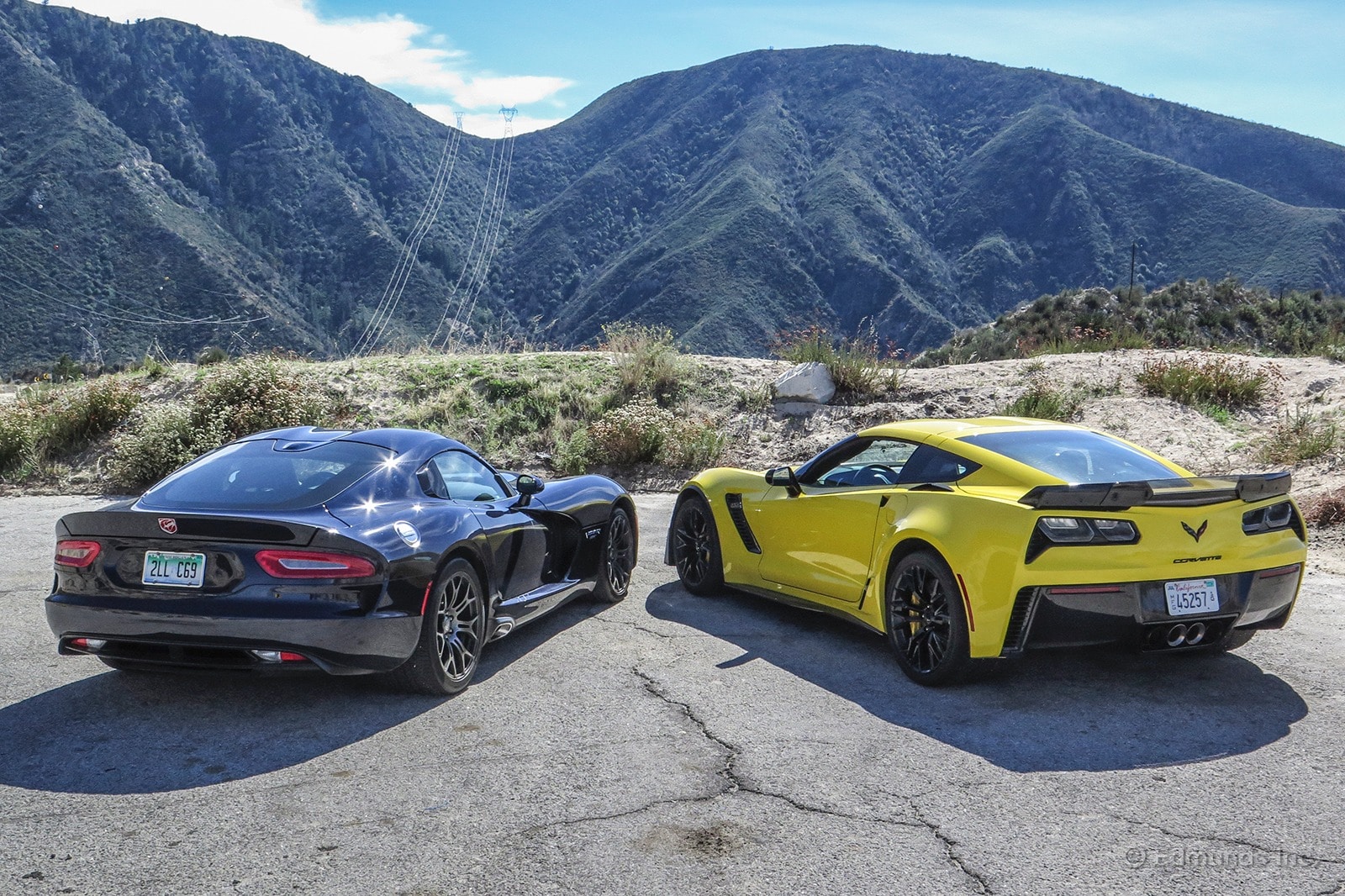
Four months with our 2015 Dodge Viper proves that what was true for the first Viper is also true for this one: this is not a car for the faint of heart.
It is a sports car designed to pummel the road into submission, creature comforts be damned. The low roof and high hood diminish forward visibility. Headroom is limited despite the head bubbles above the driver and passenger seats. Even with the suspension in its comfort-oriented setting, vibration is severe enough to register steps on my pedometer. And I have yet to find a way to climb out of the cabin without burning the hell out of my legs on the searing metal door sill plates.
On the bright side, gearing is tall, so commutes don't require constant shifting. On more than one occasion I've been stopped by onlookers who gush over the Viper's criminally seductive body. And the V10 produces more power here than any sane person could ever use.
But I'm not convinced the positives outweigh the practical considerations I must take into account before choosing to take the Viper home for a day or two.
But 2015 has brought salvation in the form of a sports car that combines everyday drivability with the unrelenting power of the Viper. A single night in a short-term 2015 Chevrolet Corvette Z06 has convinced me that it is the perfect all-rounder in the sub-$100k price range.
We recently tested a Z06 with the Z07 Performance package, which adds carbon ceramic brakes, Michelin Pilot Super Sport Cup 2 tires and a front splitter. With 650 horsepower and 650 pound-feet of torque on tap — 5 hp and 50 lb-ft more than the Viper — it's the most hardcore Corvette you can buy. It's also infinitely easier to live with day-to-day.
Where the Viper is best enjoyed in short spurts before you climb into your everyday commuter, the Z06 is completely usable as a daily driver. The bulge of the Corvette's hood cuts into the outward view, but there's far more to see here than in the Viper. There are no extra-large door sills to worry about, so ingress and egress requires no special gymnastic training. The exhaust shuts up at legal speeds. And, most importantly, I can get out of the Corvette without cooking up a side of fried Cameron calves.
The Z06 is also available with an abundance of creature comforts. You can get ventilated seats, front curb view cameras, and a head-up display. The ultra-cool Performance Data Recorder uses a windshield-mounted camera to shoot video in 720p, which you can transfer to your personal computer via an SD card. You can have the Z06 as a coupe or convertible and it is even available with an 8-speed automatic transmission, although I don't recommend it.
The Viper has a delightfully old-school sports car charm to it and its personality is off the charts. But if I was in the market for a six-figure sports car, I'd want one that pulled off the Jeckyll/Hyde combo of being easy to live with and capable around a track. The Z06 is genuinely enjoyable around town, has a wealth of 21st century tech in the cabin, tackles mountain passes with ease, and costs thousands less.
The only thing I won't like is cutting into those savings to have it painted in the now-discontinued Lime Rock Green.

I decided to finally drive our long-term 2015 Dodge Viper this weekend. I knew, based on experiences shared by my colleagues, that it would not exactly be my cup of tea, Earl Grey hot. But what the hey, I thought. It's good to try everything once. There are plenty of cars that I can appreciate even if they don't exactly tickle my particular fancy. The Corvette, for instance. Brilliant car. Have no interest in buying one.
And then I got in the Viper, drove it halfway through the Edmunds garage and knew I'd made a terrible mistake. It was all I could do not to turn around immediately and swap keys for the Yugo. That isn't hyperbole. I would rather drive the Yugo.
This could get rather long, so let's forego transitions and just stick with bullet points:
-
How the hell do you get into this car? You can't touch the sill because it'll burn your hand. You can't sit on the sill because it'll burn your butt. You can't climb into it normally because the sill is a foot wide, the car is 3 inches off the ground, the foot well is tiny and the steering wheel is in the way.
-
What is going on with this seating position? The seat, which adjusts six ways (no front seat tilt), feels like it expects my back to be roughly shaped like this: { Putting the back rest bolt upright corrects this somewhat, but then that only exacerbates the next problem.
-
Visibility is appalling. Look at the picture below. That is my view out. I am looking at the windshield header. I have to lean the seat back to actually see out of the car. I am 6-foot 3, which is tall, but I'm not Dikembe Mutombo. The Viper makes me feel like I am. And no, this is not common for modern exotic cars.
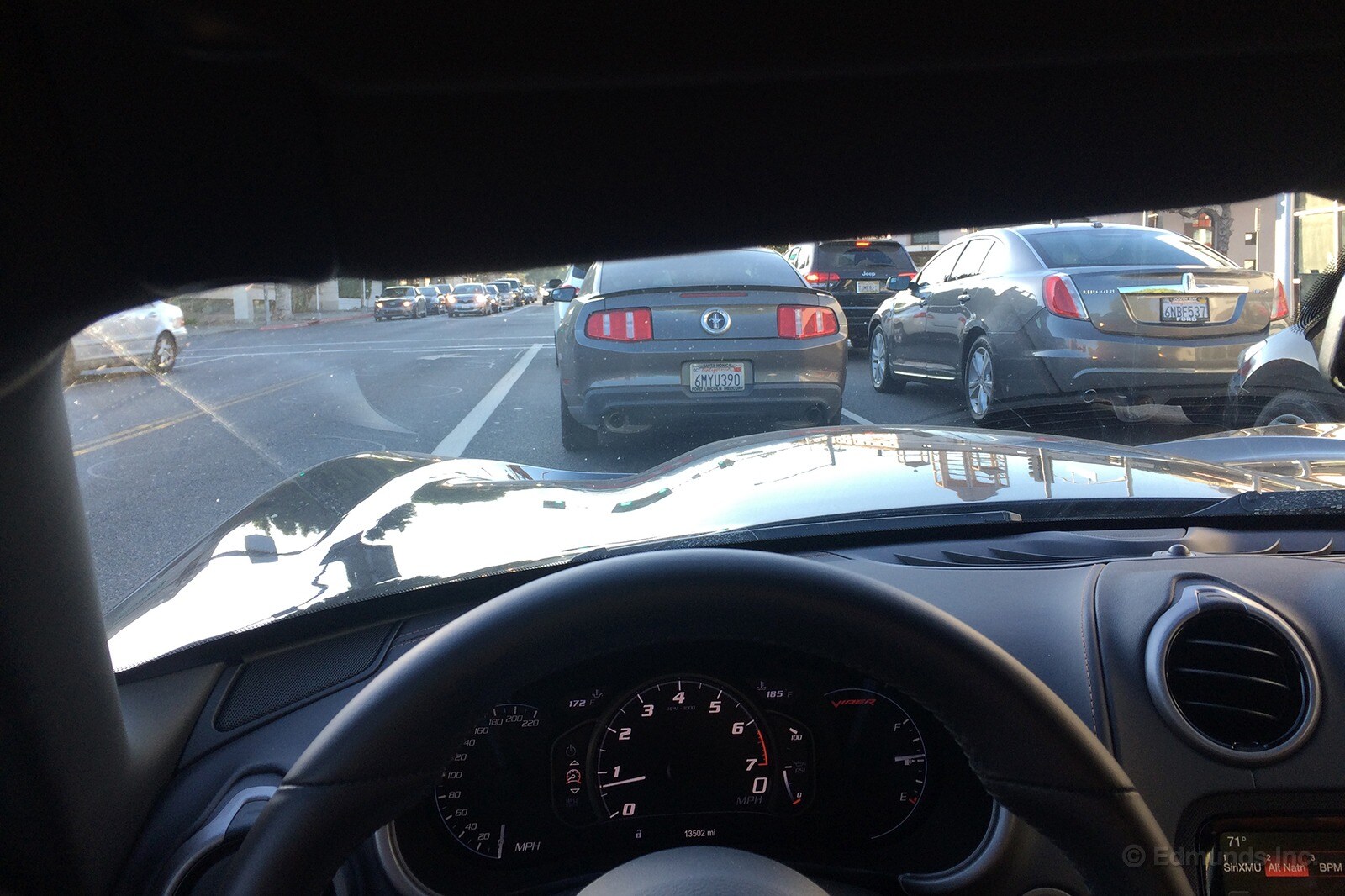
-
What is going on with the dead pedal? It's not on the same plane as the throttle. It's literally a metal pedal and it's placed vertically. As if the seating position couldn't get any worse.
-
The shifter and its placement are excellent. Figured I should say something nice.
-
The cupholders are behind you. So are the small bin and plugs for your smartphone.
-
It's really loud, and not in a good way. Unless you're absolutely gunning the engine, in which case you're most certainly going 95 mph in a 35, it sounds like a truck. Actually, that's unfair to trucks. They are quite quiet and refined these days.
-
Is there actually a suspension? The ride around town would imply otherwise.
-
It's creaky and rickety. Our long-termer is a $100,000 car. Its build quality does not indicate that.
You will note none of my complaints have much to do with how it drives out on some mountain road where its abundant power and grip would reveal the Viper to be a thrilling driving machine. That's because, for me, it is completely irrelevant. I would never be able to stand being in it for long enough to get to that mountain road. It actually made me angry.
So forget the Yugo. The Viper is MY penalty box.
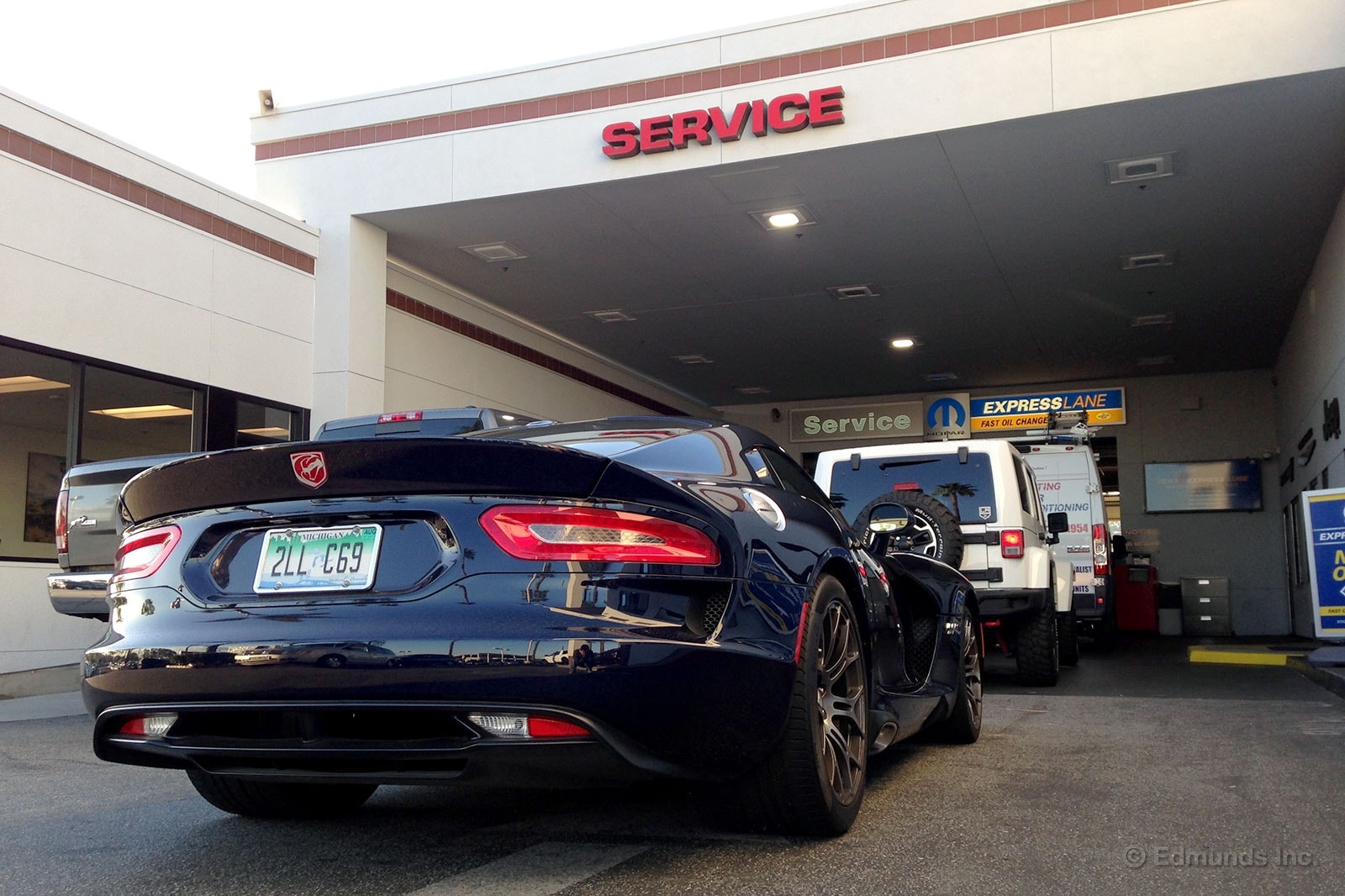
At the core of the Viper persona is raw power. The car can be brutal and unforgiving, and it commands respect. It makes no excuses for its actions. And in all of its years, the addition of stability control was the closest it's come to an apology for what it is: Awesome.
Our 2015 Dodge Viper earned its place atop the Dodge performance lineup. True, Hellcats have blurred the leaderboard recently. But there should still be no contesting the recognition and attention that a 645-horsepower, $100,000 Viper deserves ahead of the high-volume likes of the Dart or Avenger.
So why is the Viper service experience so poor?
Or rather, why has our service experience with the Viper been so poor?
Maybe we have bad luck. After all, one advisor wanted his body shop to cut a hole in our Viper SRT-10 to reach a bracket that was accessible by simply removing one interior panel. More recently we encountered another tech trying to pop the rear hatch to access the engine.
Maybe other manufacturers just do it better. When we needed service for our long-term Audi R8 and Nissan GT-R it was like the world stopped. Cars parted. Porters opened our doors. Heads poked out from cubicles. It was a red carpet treatment by comparison.
Our most recent 12,000-mile Viper service had two parts.
Part one was a complete bust. We called a dealership 16 miles from our office for an appointment. The service writer gave an estimate of two days if we brought the car in the following morning. That was fine with us. But a surprise work obligation arose and we had to reschedule.
We called and asked to drop it off that afternoon instead. This was when he broke the news that the next available appointment wasn't for another two to three weeks. He offered no explanation aside from their Viper tech being booked until then. We took our business elsewhere.
Part two was a success, on paper at least. We called a second dealership 29 miles from our office, Glenn E. Thomas Dodge in Long Beach. It had a slot for us at 7:00 am the next morning. Perfect. We arrived 10 minutes early. On the phone we did not specify an advisor, so it took a few extra minutes to determine who would take our car. Once settled, our advisor promptly checked us in. No upsells or drama. She pointed us to the waiting area and gave an estimate of 60-90 minutes. It was 7:30.
At 9:30 the Viper was ready. It was 30 minutes longer than our quoted time but we were in no hurry. We then sat patiently while the cashier juggled running our invoice, covering for the dealership phone operator and snacking on fries. She was so polite we didn't mind. The total cost was $168.14 for inspections, an oil change and a left-to-right tire rotation.
Parts one and two of this adventure averaged out to a check in the box, overall. The work was completed. The quality of service at the second location was acceptable. The cost was perhaps the highlight when compared to our R8 and GT-R long-termers. Still, the experience left us wanting more.
Service is part of any ownership experience and for a Viper it should be different, even special. But in our experience, it is not. So far, that's the most disappointing part of owning a Viper.
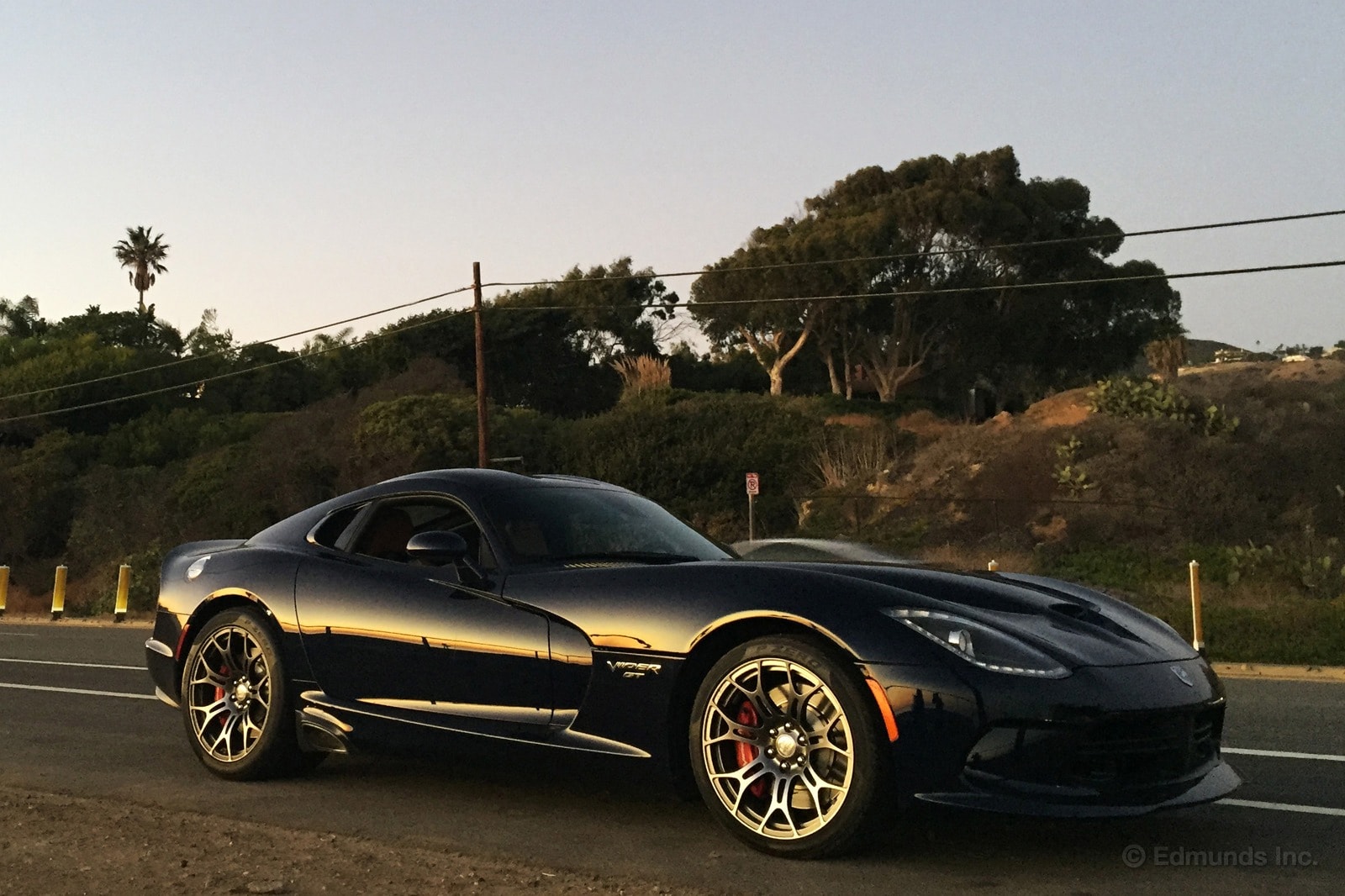
I'll admit I was a bit apprehensive when I finally pocketed the keys to our 2015 Dodge Viper for an entire weekend.
The Viper's reputation is not something to scoff at and Vehicle Testing Manager Mike Schmidt warned me that the tires, the same ones that the car arrived on 14,000 miles ago, were nearing the end of their life. I assured him that I would bring both myself and the car back to the office safe and sound on Monday morning.
I'd been itching to drive the Viper for months. It arrived when I was still an intern and I've been pining over its GTS-R Blue Pearl painted body ever since.
Taking it for a weekend meant only using a percentage of what this vehicle is truly capable of. Even experienced drivers on a racetrack admit that the Viper demands respect and a bit of time to settle in. I was simply planning on driving around Los Angeles and up the coast a bit.
Reaching the limits of this car on a public road would quickly lead to trouble.
I'm not just talking about speeding tickets. This is a car that builds speed so quickly that you become a rolling hazard to yourself and other drivers. I'm not going to be the one that gives our car the salvage title reputation.
Three days in the Viper helped me quickly get over my initial apprehension. Sure, all the complaints about the visibility, seat comfort and loud, ugly-sounding exhaust are completely valid. But by Monday morning, I was still looking forward to getting behind the wheel, even knowing I was about to sit through an hour-and-a-half of traffic.
I didn't hate myself for grabbing the keys and, more importantly, my girlfriend was still speaking to me after spending her entire Saturday strapped into the passenger seat.
The Viper has loads of personality. Only a weekend in our former long-term 1966 Chevrolet Corvette Sting Ray beckoned more people over, whether asking for photos or just a few questions. I'm going to chalk it up to side-exit exhaust.
Yes the steering is heavy and yes it's hard to see out of, but after a little bit behind the wheel you settle in and get used to it. Just tip into the throttle a little and you'll understand why a naturally-aspirated V10 pushing out 645 horsepower is so special. It makes you forget all of the flaws. The Viper is theater. Nothing else in our fleet is as dramatic, except for maybe our 1989 Yugo GVL.
I finally understand why someone would drop their hard-earned money on a Viper. It's not a Corvette, a 911 or an F-Type. The Viper offers something different. You buy a Viper for something distinctly and wonderfully American. You buy a Viper for performance above all else.
Mike told me that the first weekend is always the best. It's not until the second or third time you take it home that the flaws really start to bring down the experience. Well, if no one else wants the keys, please hand them to me.

No, that title doesn't refer to the diminutive center on your high school basketball team. That's Short Phil. I'm referring to a recurring problem when refueling our long-term 2015 Dodge Viper.
I was on the brink of running the Viper's tank dry the other night, a common occurrence when you have 645 horsepower and 8.4 liters of displacement. After fueling up until the pump stopped, then trying to explain to a panhandler that I was indeed not as wealthy as the car suggested, I wriggled back into the driver seat.
I was met by the image you see above. Seeing a 7/8ths-full tank made my eyes roll and my lungs expel their contents. Stumble back out, swipe the card, ignore the panhandler making snide remarks and start fueling again. Click. Click again.
I figured it was this particular pump, so I just barely cracked it open, slowly trickling gas in the filler neck until another click. Yup, it's full now. Wriggle, rinse, repeat, and I'm back in the seat, met with a strong gasoline smell.
That ain't right.
Another hundred or so miles later (I drive like a meathead in the Viper) and I'm back to fumes in the tank. After the first click, I waited then gave it another slow fill. Click. Once again, another 7/8ths reading. Argh.
Not wanting to overfill it again, I left it as is and notified our man Schmidt that it'll need some looking into the next time the Viper's in for service. Will this somehow affect our fuel economy readings? Perhaps. Will it matter? No.
It's a Viper. We're lucky we measure it by mpg and not gpm.
Fuel Economy Update for November — Not Best Choice for Obama's Showcase at Paris Climate Talks
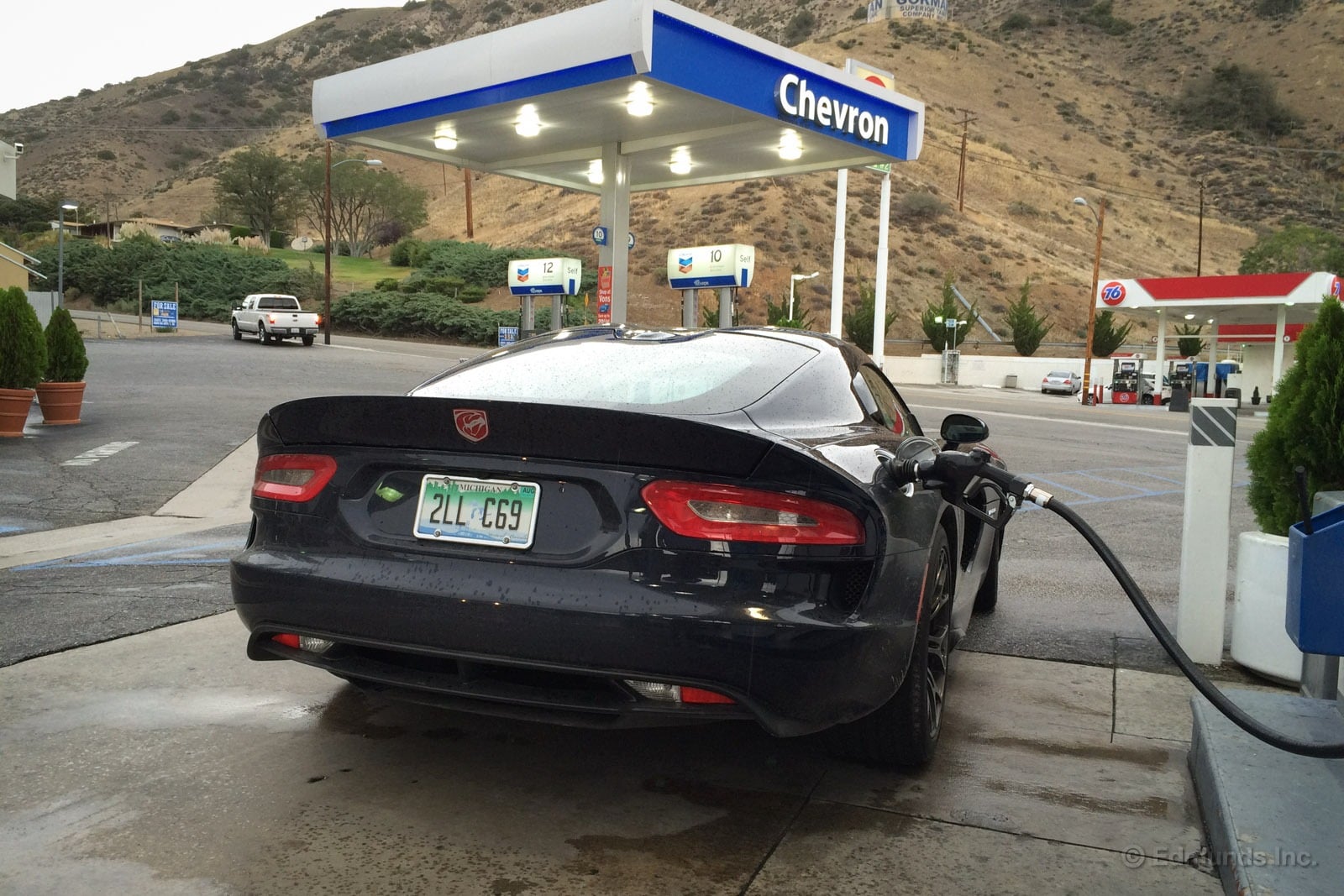
If nothing else, our 2015 Dodge Viper is staying true to itself. As has been the case since we got it, the Viper's fuel economy hovered in the mid-teens on good days this past month. Lay into the throttle with regularity — the only way some of our staff know how to drive this Viper — and fuel economy plummets into the single digits at fill-up.
Fun? Heck yes! Fuel efficient? Not really.
For the past two months (we didn't report on fuel economy for October), we averaged 12.1 mpg. That dragged down our lifetime average, which was 16.1 mpg previously and now stands at 15.3 mpg. Prior lifetime highs and lows for fuel economy fill-ups remain unchanged.
Interestingly, my co-worker Mark Takahashi wrote about his experience on a couple of fill-ups where the Viper wouldn't accept a full tank of gas. The same thing happened to me on one of my fill-ups. But a subsequent one was fine and resulted in a completely full tank.
Is it the car, the type of pump, or perhaps a combination of both? Our fuel log also has a few notes from earlier this year that would also indicate some short fills. This inconsistency is perhaps throwing off our mpg tracking a bit.
But on a Viper, I don't think anyone's going to notice much.
Worst Fill MPG: 6.4
Best Fill MPG: 27.2
Average Lifetime MPG: 15.3
EPA MPG Rating: 15 Combined (12 City/21 Highway)
Best Range: 294.3 miles
Current Odometer: 14,465
Familiarity Breeds Greater Appreciation
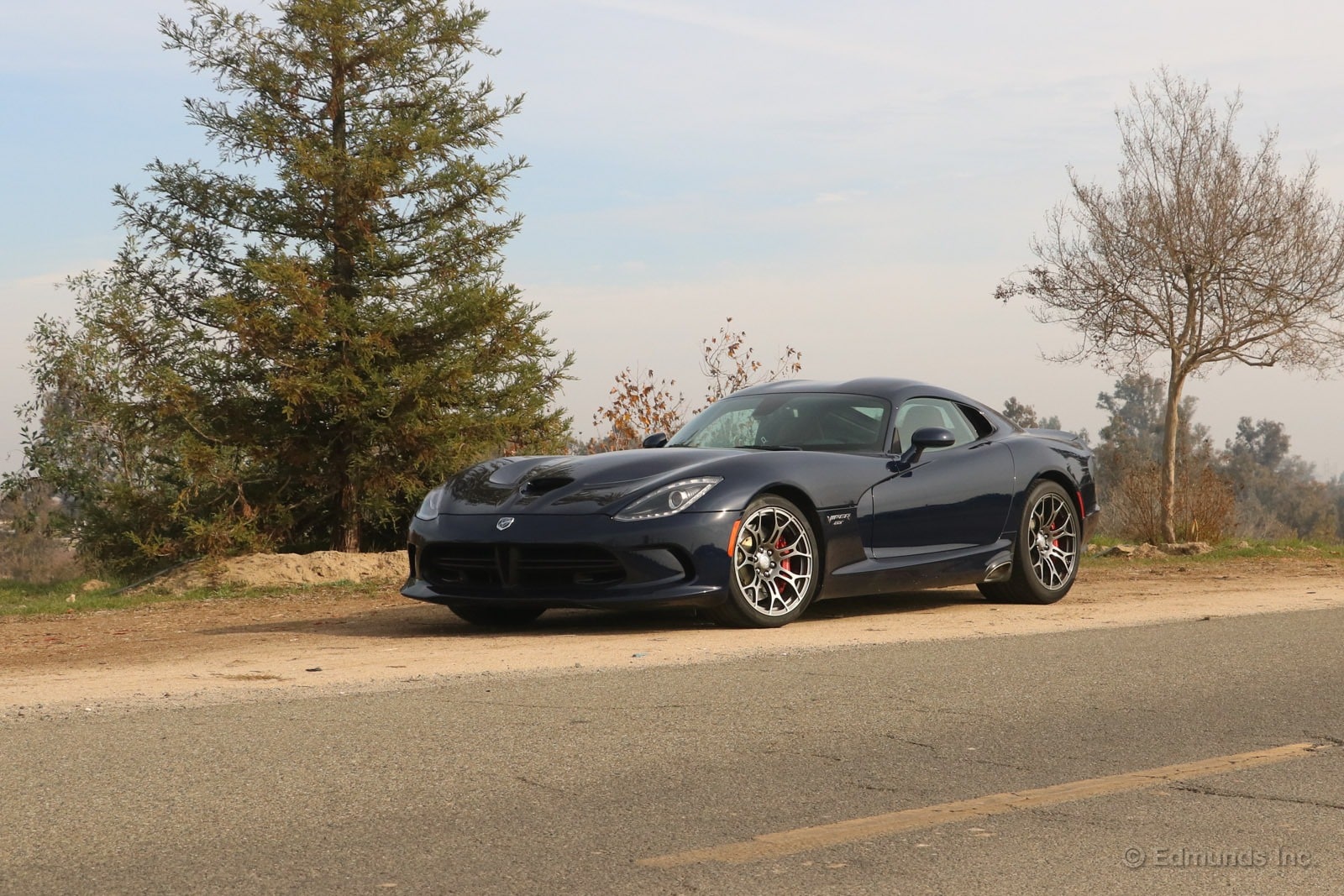
Last night a text message popped up on my phone from Editor-in-Chief Scott Oldham: "How's that Viper?" it read. I wasn't sure exactly why he was asking. The question came out of the blue and, to my recollection, the number of times Scott had messaged me during my career here at Edmunds would be, well, zero.
But hey, when the boss asks you a question, you answer. With honesty, I replied: "Getting to like it the more I drive it, actually."
Based on our published updates so far, it's fair to say this isn't an easy car to love. A Viper is just a car you have to make excuses for, especially if you've got a Chevrolet Corvette Z06 or Porsche 911 around to compare it to.
Beyond the ergonomic and/or comfort aspects that have been highlighted in prior updates, I've also found the Viper intimidating to drive at times. Puttering around town for errands or what not, that's no problem. But if you want to drive with some enthusiasm on public roads and sample the Viper's herculean power and grip, it just doesn't automatically imbue you with confidence.
That's especially true if, like me, your talents are modest and your style of driving is conservative for fear of doing something career-endingly stupid. Some of that is because of the way the car drives and communicates through the steering, but part of it is just the mental aspect of knowing about the car's rough-edged reputation.
But the interesting aspect is, like Reese Counts noted in his recent update about driving our Viper for three days in a row, or Josh Jacquot making peace with it during a track day, I've found myself liking the Viper with each passing day it's been in my driveway.
I've carefully teased out more about how the car handles over time, gaining confidence. The butt-plop maneuver to get in the driver seat is now second nature. Upshifts and rev-matched downshifts are now easier and quicker than ever.
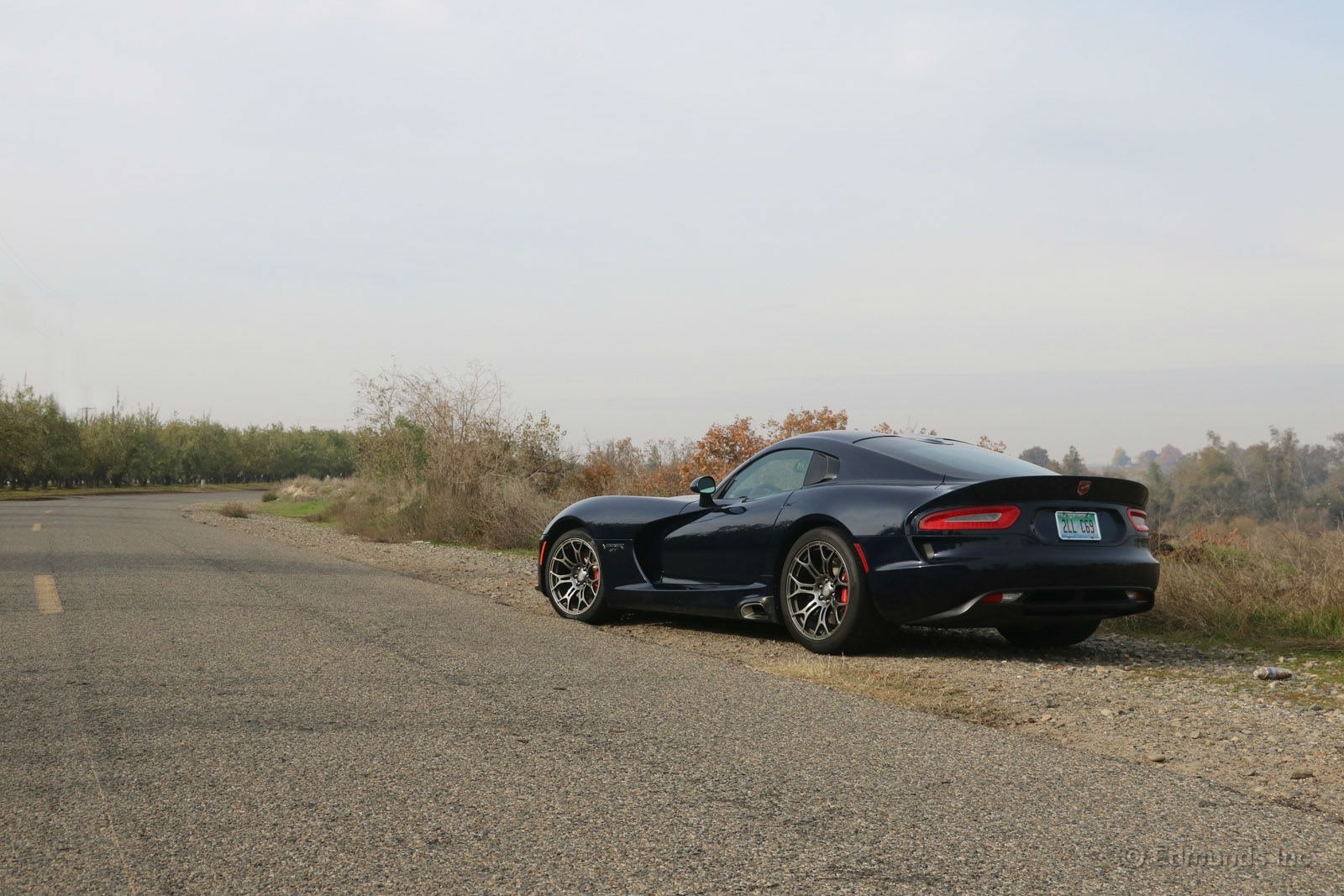
More time with the car has also allowed me to enjoy the car's other aspects. First of all: we've got a 645-horspower Viper in our fleet! How cool is that? You'll see dozens or perhaps hundreds of Corvettes and 911s on the road before you see another Viper.
I've even come to like the exhaust note. It's not pretty at startup and low rpm, true. You could say it sounds like a UPS truck and you'd be right. But you can also think about it positively and say it's not much of a stretch to say it sounds a F4U Corsair firing up. And just like a Corsair in a dive, the Viper has its own aural appeal when you pin the throttle and let it rev past four grand.
How's that Viper? It's pretty great.
The Aftermarket Upgrade We Absolutely Must Get
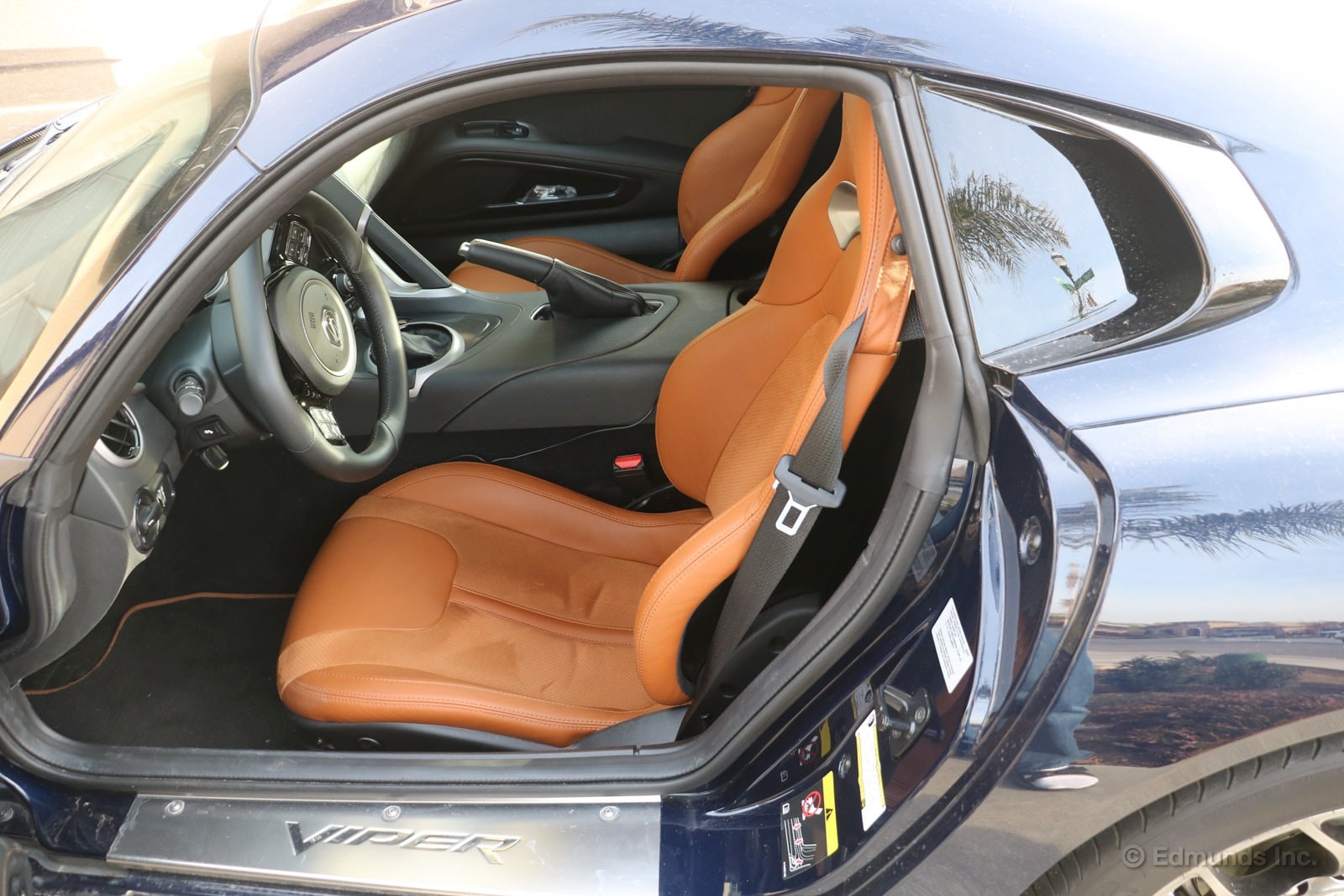
We added an aftermarket Ford Racing suspension to our 2015 Ford Mustang after a few of us found its handling wanting. To our departed 2013 Scion FR-S we added an aftermarket supercharger kit to help boost the car's power.
Now it's time to add something to our 2015 Dodge Viper GT. 'Sweet!', you might be thinking. A Hennessey 700R upgrade!
Admittedly, it could be worth it just for the more exotic-sounding exhaust alone. But I've got something even more useful in mind.
The Car Cane!
I know, I know. You think I'm joking. But I'm not. We totally need this. See the old guy right at the beginning of the video? Minus the grey hair and arthritis, he might as well be New & Used Car Editor James Riswick trying to getting in and out of our Viper.
As Road Test Editor Carlos Lagos noted in another update, the only effective/classy/discrete way to get out involves using the lateral bolster of the seat as your support. He's right. But a Car Cane would be way better and way classier.
I'm going to order one. I'm serious. Hopefully it will clear my expense report. But even if it doesn't, it'll be worth it.
But wait, there's more! Right now because of the holidays the Car Cane website says I can get two for the price of one! (Although, I must say I'm a little disappointed that the Swivel Seat (butt gasket!) seen at the end of the above video doesn't seem to be available anymore. That would have added another level of functionality and class to our Viper).
I'll let you know once the Car Cane set arrives.
Pleasant Surprise - Nose Doesn't Scrape
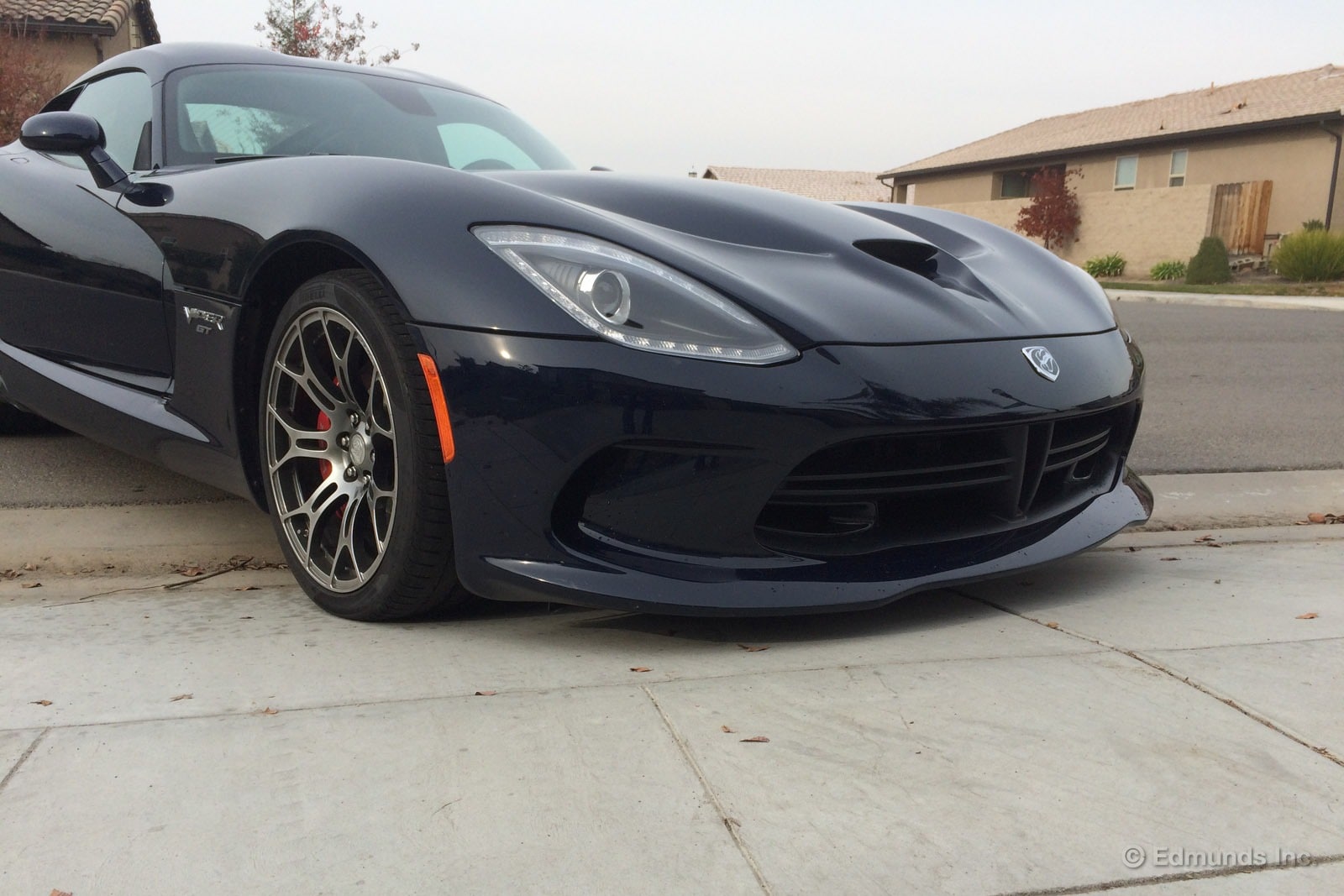
With a low-slung sports car, a minimal amount of ground clearance is just something you learn to deal with. To avoid scraping up the car's front chin, you take an angled approach to just about everything. Pedestrians or other motorists watch with amusement as you baby your expensive toy over a 4-inch speedbump.
In a bit of good news though, our 2015 Dodge Viper GT is actually better than average in this regard.
I've noticed it most on my driveway. The Viper's arch-rival, the Corvette, notoriously scrapes its underbody wind-cheating plastic skirt every time I've backed out of my garage (C5, C6 and C7 anyway). With the Viper, there's no such problem.
There's even a local restaurant I go to on occasion located in a strip mall with a dramatically angled entryway ramp from the street. Many cars, not just sports cars, can get scuffed if you're not careful. I wasn't planning on taking the Viper on the ramp, and feared the worst when I did. But I was near-amazed when it drove through the gauntlet, trouble-free.
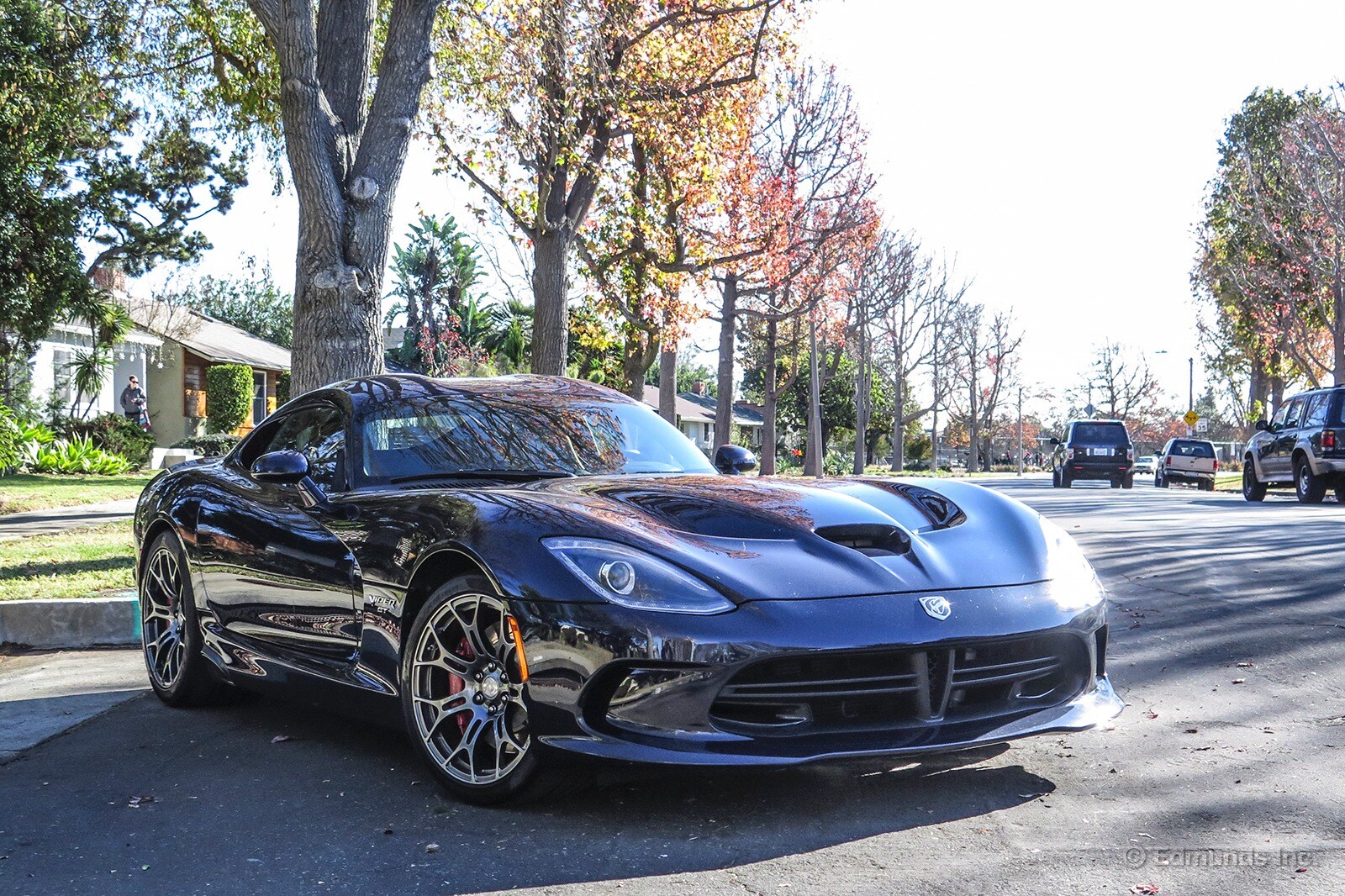
It may be long, wide and boisterous, but our long-term 2015 Dodge Viper is also really low. The top of the roof is just 49 inches off the ground. Most midsize sedans are seven or eight inches higher off the ground and a typical crossover like a Honda CR-V has a roof that is nearly 15 inches higher than the Viper's.
And with many of the other cars on the road sitting so much higher, a low-slung sports car can easily get lost in the fray.
Part of the problem is the Viper's dark blue (GTS-R Blue Pearl) paint job. Darker colors are harder to see. Our long-term Jaguar F-Type almost never suffered from this issue thanks to its fantastic Firesand orange paint job. The F-Type was also three inches taller at the roofline.
Being cut off on such a regular basis normally means I turn to judicious use of the horn, but the Viper's horn is surprisingly unresponsive to the touch. Basically, I have to punch the center of the steering wheel with all I've got just some noise out of it. I've often hit the center of the steering two or three times to warn a fellow motorist of impending doom, but gotten no noise at all. When I eventually do get the Dodge to honk, it makes a noise barely worth mentioning.
I've given up on this annoying sparring match with the steering wheel and taken to engaging the loud pedal instead. It's not an elegant solution, but it seems to garner much more attention than a weak horn. So far in my audible social experiment, it's also kept the Viper's corner panel free of dents.
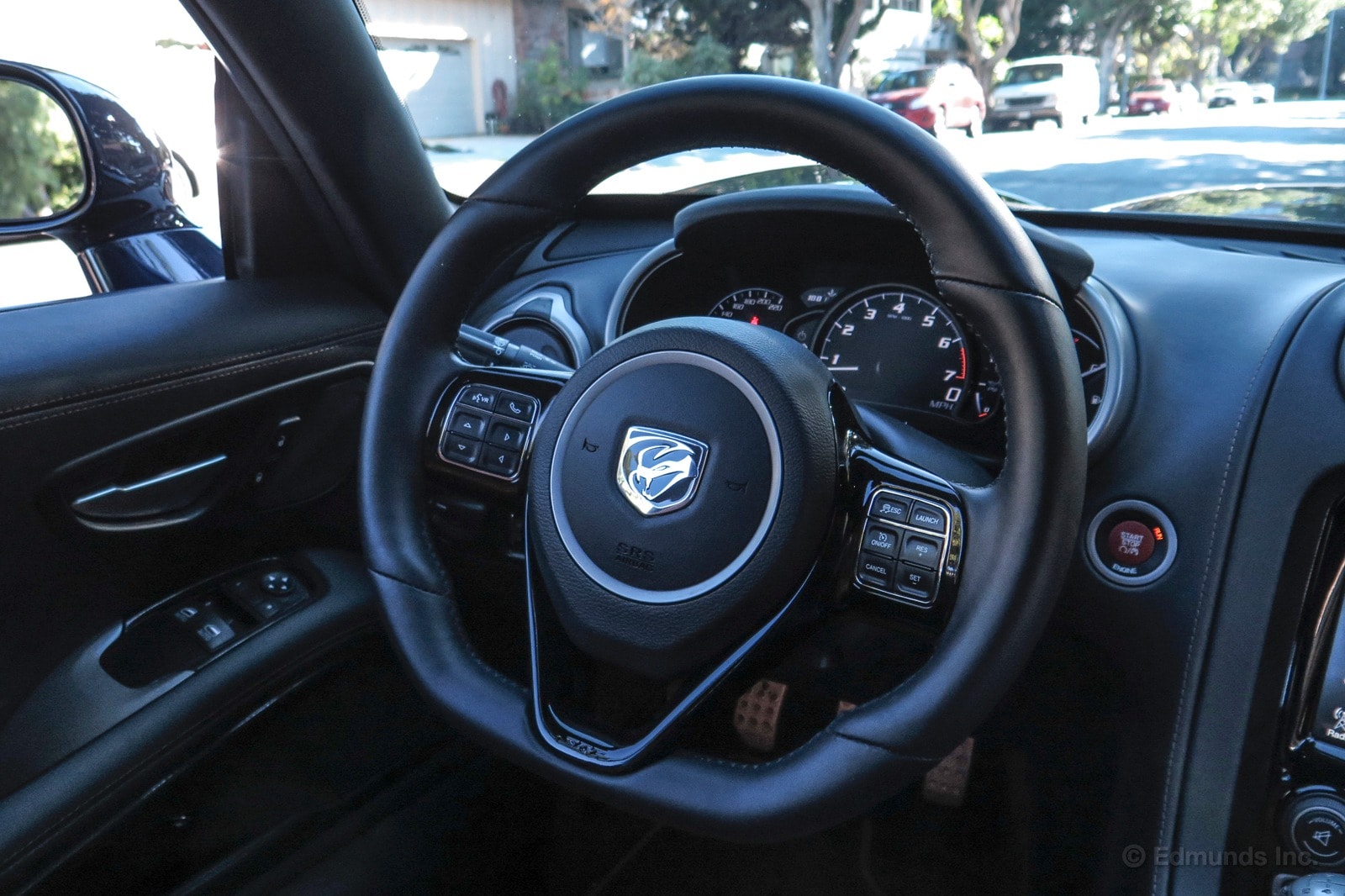
Originally, I thought our long-term 2015 Dodge Viper was missing a telescoping steering wheel because it was the mid-level GT trim. After a bit of investigation though, I was surprised to learn that the steering wheel on the Viper doesn't telescope at all, regardless of trim level.
Wait, what?
The inability to get a telescoping steering wheel, combined with the lackluster seats, makes the cabin of the Viper a truly woeful place to my mind. At 5-foot-9, I don't expect every car to fit me perfectly, but I'd hope to be able to find a mildly acceptable seating position. In the Viper, I just can't.
To get properly situated in relation to the pedals and the steering wheel (arguably two of the most important parts of the driving experience), I have to sit at a 90-degree angle, remarkably close to the steering wheel. This means a decrease in the already-terrible visibility and a hip-crushing entry every time I get in, plus a back-breaking pretzel-twist-exit every time I park.
Either that or I have to move the seat back and forth every time I stop the car to get out, which is starting to look more feasible each time I drive the Viper.

I'd previously written about my weekend with our long-term 2015 Dodge Viper and how long I'd waited to get behind the wheel. I came away supremely impressed and, despite some flaws, I wanted the keys back in my possession.
My Christmas wish was granted: two full weeks with the Viper to finish out the year.
In reality, I didn't have much of a choice. Everyone had picked a car for the holidays and I was left with a choice between the Viper and the Yugo. Since my wife has already expressed her disdain for the latter, I grabbed the keys to the Dodge.
I didn't have anything big planned. I just wanted to use the Viper as my daily driver and finish the year on a high note. Plenty of people drive Corvettes and 911s daily. It's not an outrageous notion to purchase a Viper for that purpose.
Several things came to light during those two weeks.
First off, it gets a lot of attention. Far more than any other car I've ever driven. Los Angeles is lousy with Corvettes and 911s. Seeing a Viper is like finding a unicorn. I've passed more McLaren P1s in Southern California than I have Vipers.
People will try to take photos while you're in traffic. I'll see thumbs up from the backseat or a wave from the front. Strangers come up to you in parking lots with questions, comments or a chance to take a photo with the car. I overheard a couple of teenagers behind me discussing the Viper while I was waiting on my coffee.
Even if someone doesn't know exactly what it is, they know it's something special. It just makes the right sort of noises and it has the right proportions. When someone asks, I leave out all of my complaints. If seeing a Viper gets a kid into cars, I'm not going to ruin that. The Viper is a romantic, aspirational machine and I want to keep it that way for most people.
Second, it's more practical than it gets credit for. There's plenty of room for groceries or luggage for a relatively short trip. It fits into most parking spots, though parking requires some finesse. It might be hard to see out the window when the Viper's fully loaded, but since rear visibility is so bad to begin with, you're not losing much. It's limited, but not horrible. I never once had to change my plans because I had the Viper instead of something larger.
Third, the Viper requires a lot of effort to drive. A Corvette is near effortless. The Viper requires force. It likes to pick up grooves in the pavement, so you constantly need to muscle the heavy steering to keep the car straight. Maneuvering a parking garage means dealing with the long nose and subpar turning radius.
The clutch is long and on the heavier side. The shifter is short and accurate, but it's not the kind you can gently move with two fingers. As others have described, looking out of the Viper is like looking out of a mail slot. It's even worse when the sun is both shining in your face and reflecting off the hood. I began to plan my day around the direction of the sun.
Lastly, this thing is tremendously fast. There is enough power to easily send the traction control into full alert. With traction control turned off, this will spin the P355/30R19 rear Pirellis PZeros through third gear. Gaps close quickly and any on-ramp becomes a runway. It doesn't take much to suddenly become the fastest and loudest thing on the road.
It's no secret the Viper isn't the easy or safe choice. There is no such thing as casually driving one. It's loud, hot, stiff, and has poor visibility, but I didn't get into this business just to drive the latest compact crossover. The things this car excels at are in my opinion worth it. Speed is intoxicating and in our current long-term fleet, nothing satisfies more than the Viper.
Would I spend my money on one? I honestly don't know. But I'll sure as hell enjoy this one.
When everything was going right, I was in love. The Viper made me believe all of life's problems can be solved with more power. I didn't care about all the flaws. I just wanted to keep on going until the tank ran dry, which it eventually did. Several times.
I've been with Edmunds.com since May 26, 2015 and in that time I've had the opportunity to drive a lot of amazing vehicles. This life is everything I hoped it would be and to finish the year on a high like this is something I won't ever take for granted.
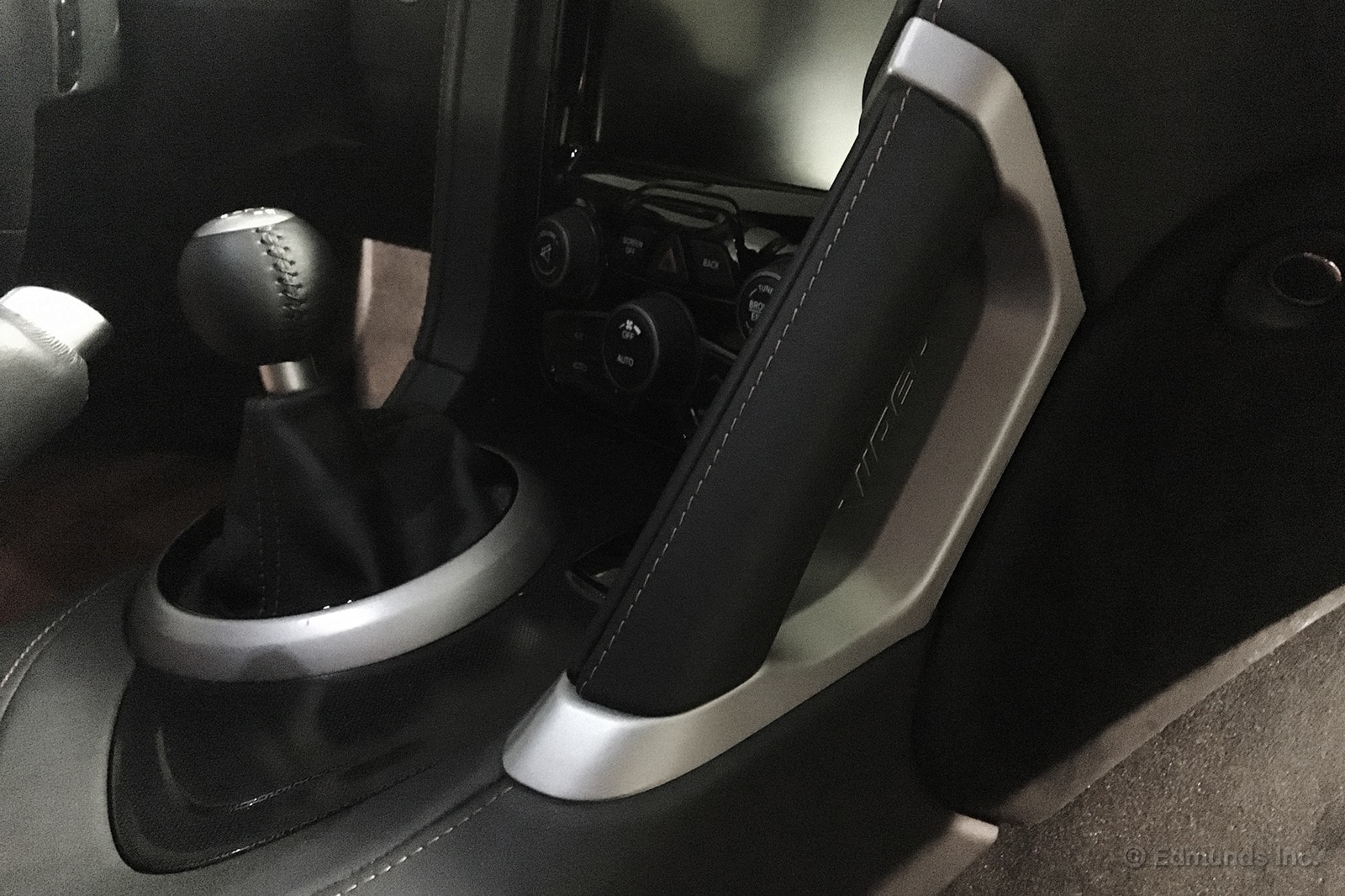
Bonkers sports cars need good passenger grab handles and the 2015 Dodge Viper's got a good one. I was driving my passenger home after dinner and we were approaching a quick right-left uphill chicane. She grabbed the handle so hard that I heard the plastic substructure creak.
But she gave me fair warning when I asked her out in the first place.
"I like fast cars in a straight line, but I discovered that I get carsick in the curves."
Noted.
I tip-toed the Viper through the chicane since I'm not a fan of girl puke, but we did unleash the V10's fury in one of downtown L.A.'s tunnels. Giggles ensued.
That grab handle looks beefy, but it's not made as strong as it looks. It's well-placed and angled to give the passenger a good anchor, though. The best by far has to be our dearly departed Jaguar F-Type's. That one felt way more substantial and had a matching handle in the door so the terrified occupant could hold on with both hands like an amusement park ride.
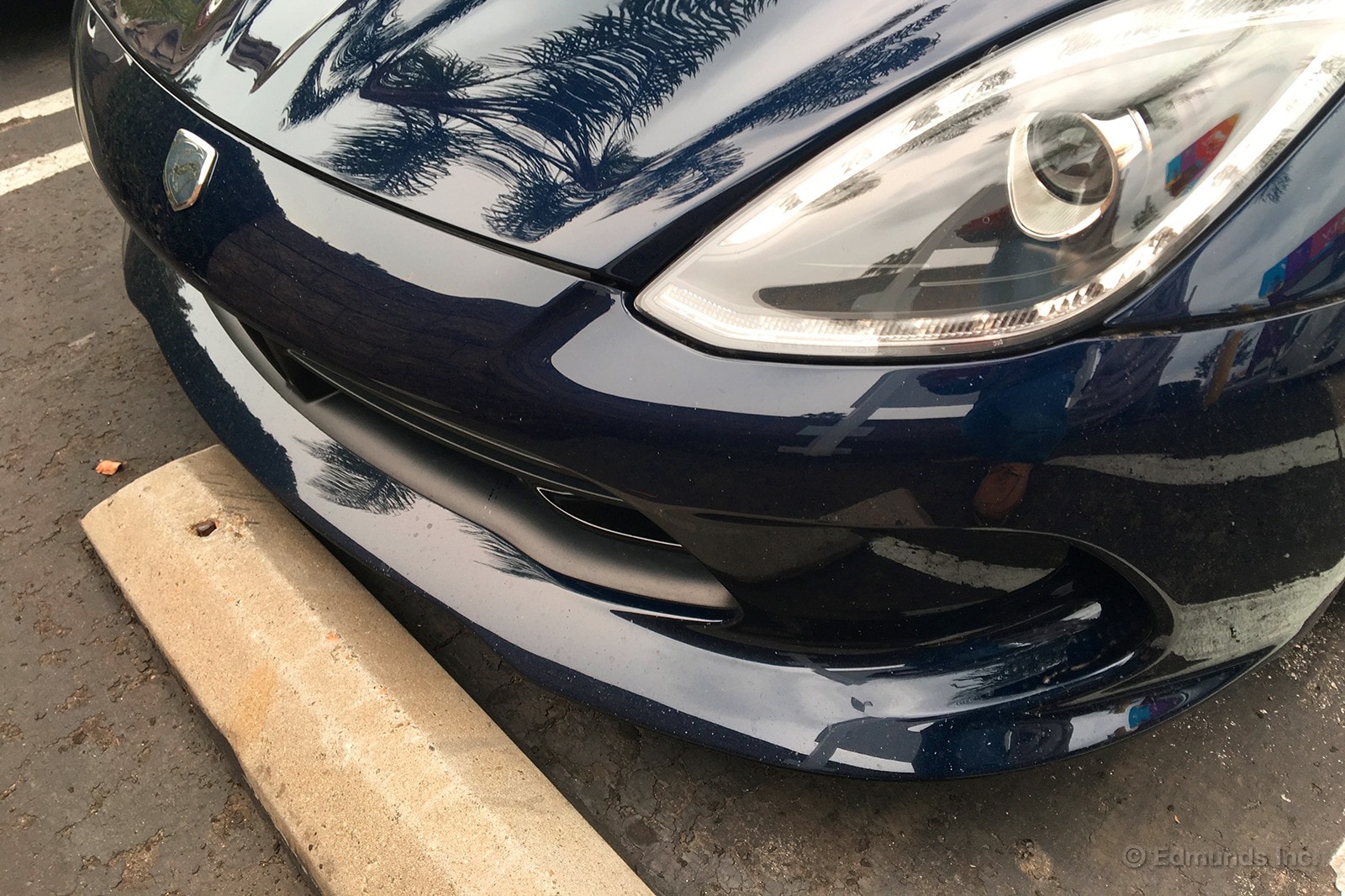
The 2015 Dodge Viper has a long nose and very little indication of where the front splitter is. Head-in parking means I need to be extra careful. From the driver seat, I always give myself what I think is some extra room, but when I get out I'm usually surprised by how close I am to a parking block.
Look at the shot above, for example. I was convinced there'd be about six inches of space. Nope. It's about an inch away from me needing to fill out some damage paperwork.
It's far easier to back into a spot in the Viper because the rearview camera shows a sliver of the rear bumper. That gives you a very clear indication of how close you are to an object. As far as I can tell, parking sensors aren't available.
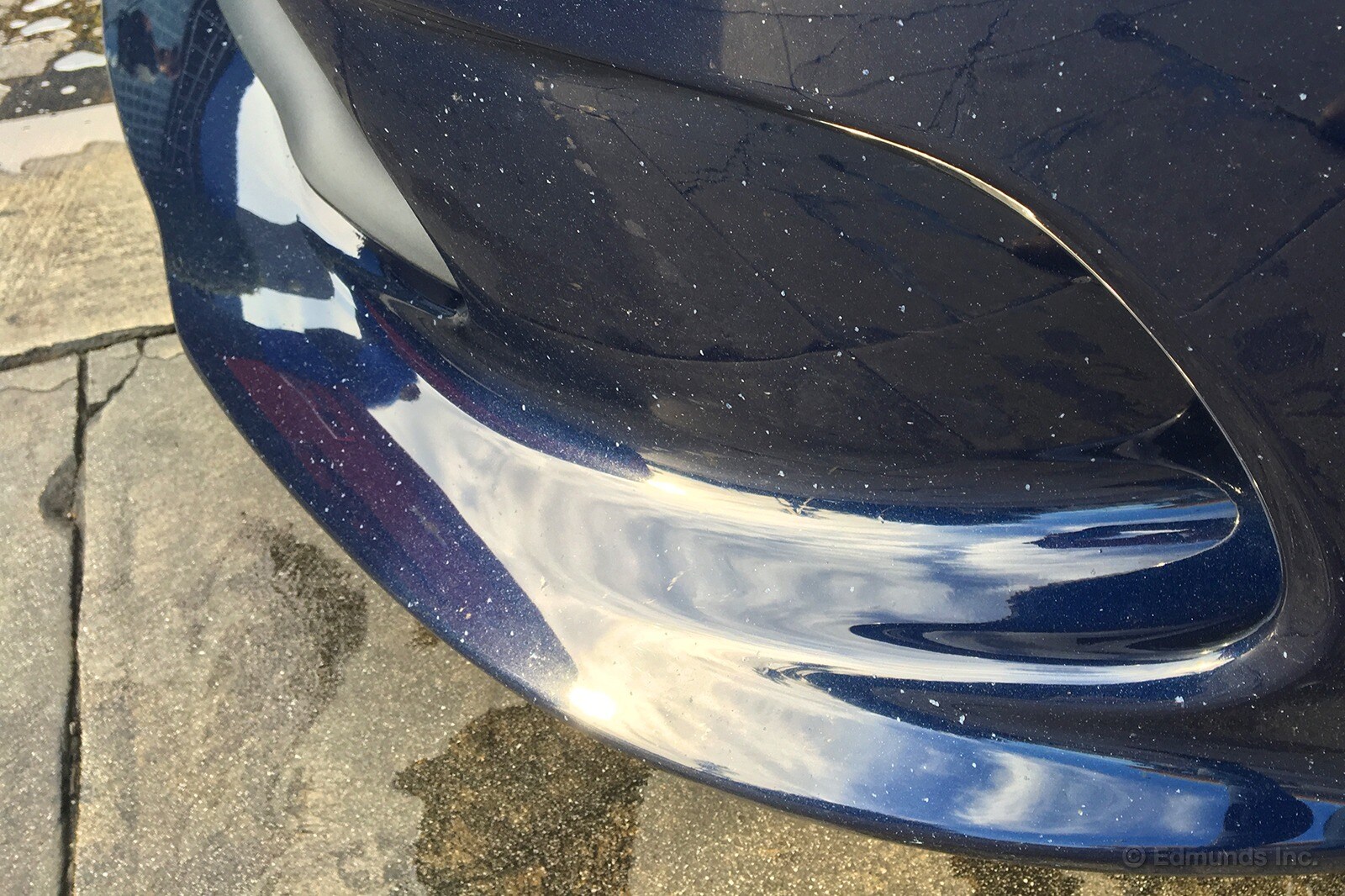
That gorgeous Midnight Blue paint on our 2015 Dodge Viper GT is getting battered by road debris. The image above is right after a car wash, before I even got in to leave. It looks like the damage is limited to the clearcoat, so I'm planning to give that frontal area a good buffing with all the detailing equipment we have from Meguiar's.
Look for a forthcoming post shortly.
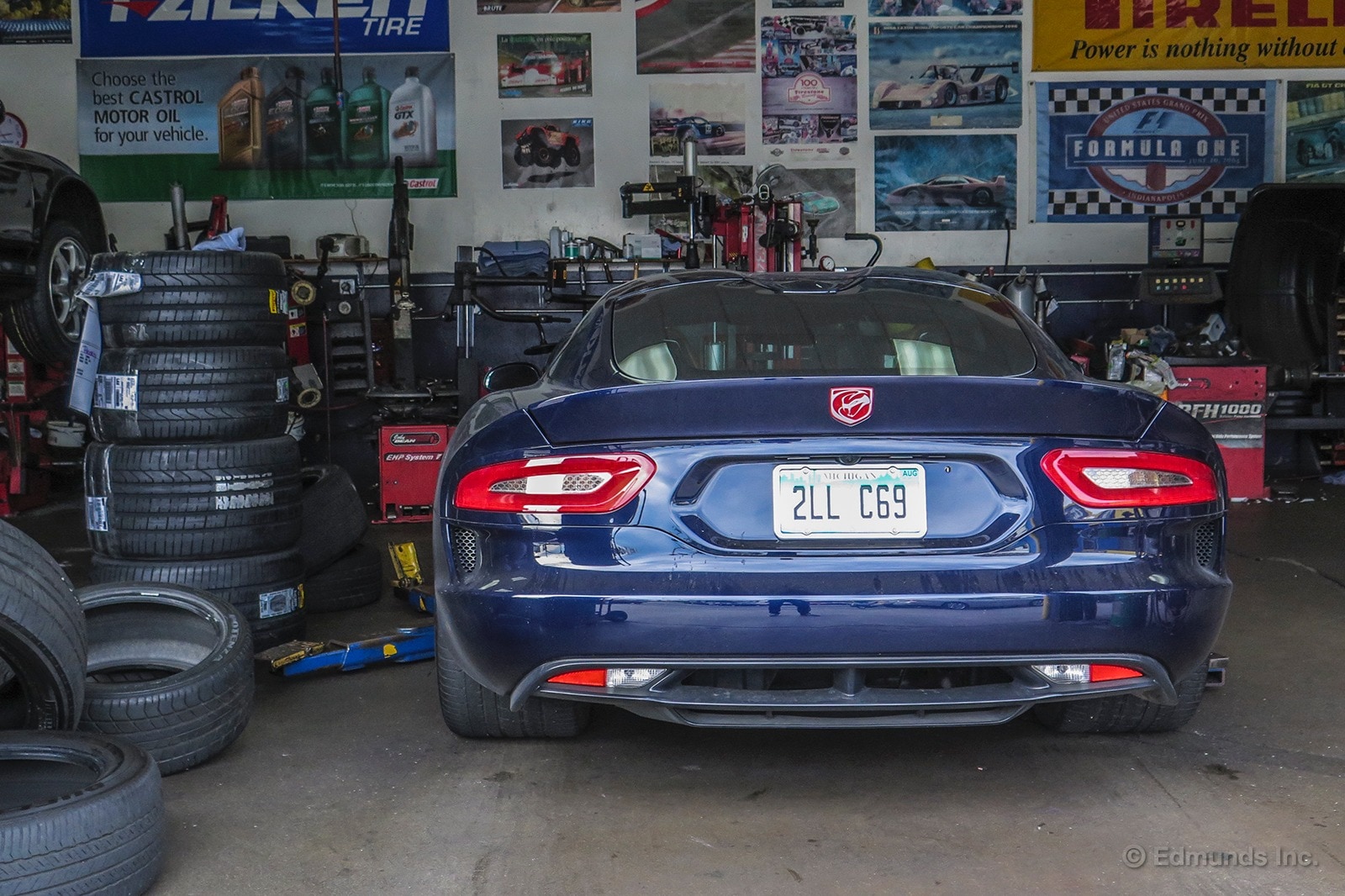
After two cross-country road trips, a few track days and plenty of hard miles through local b-roads, our long-term 2015 Dodge Viper needed some new rubber. I started calling around, searching tire websites and scouring the web for options. In the end though, I discovered that there were only two realistic options for tires on our Viper.
In the front, the Viper runs 295/30-18s and in the rear it's got significantly wider 335/30-19s. The two available sets of tires were direct replacements (Pirelli P Zero) or stickier P Zero Corsa. The Corsas are nice and all, but have a much-lower treadwear rating of 60 AA, compared to the standard P Zero, rated at 200 AA.
There were other tires available, but only just for the front or rear, so they'd all be mismatched. Since this isn't a track-dedicated machine and we want the tires to last a while, we went with the standards P Zero.
A low-budget independent shop I'm familiar with said it would take 4-5 days to get the tires. Another major chain said they couldn't get them at all. The third call I made was to our local tire shop, Stokes Tire Service. They could get the tires in less than 24 hours and have them installed before the weekend.
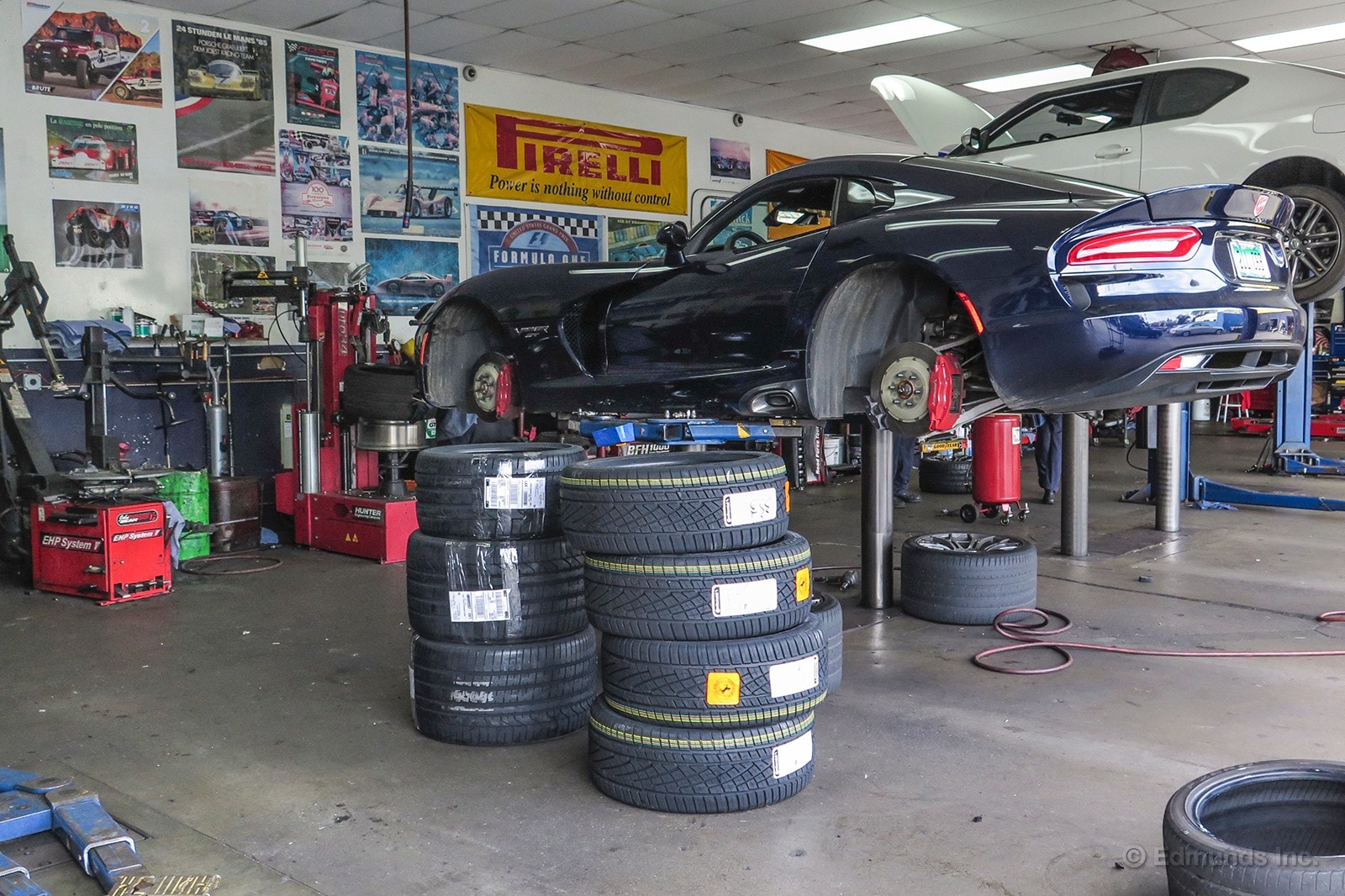
I decided to wait at the shop for the install. After three hours, the techs explained to me what was taking so long. They had to "road force" balance the wheels. Otherwise, the 14-inch wide rear wheels would've looked a bit silly with wheel weights along half of the inside of the wheel.
All said and done, tires and install ran us $1,797. We might've saved a few bucks, but our local shop got things done quickly and correctly, all with free Wi-Fi in the waiting area. And if you own a $100K Viper, you probably aren't going to squabble over just a few shekels on tires.
So, we've got another set of stiff (but grippy) Pirellis and the Viper is back on the road, ready for
burnouts
testing.
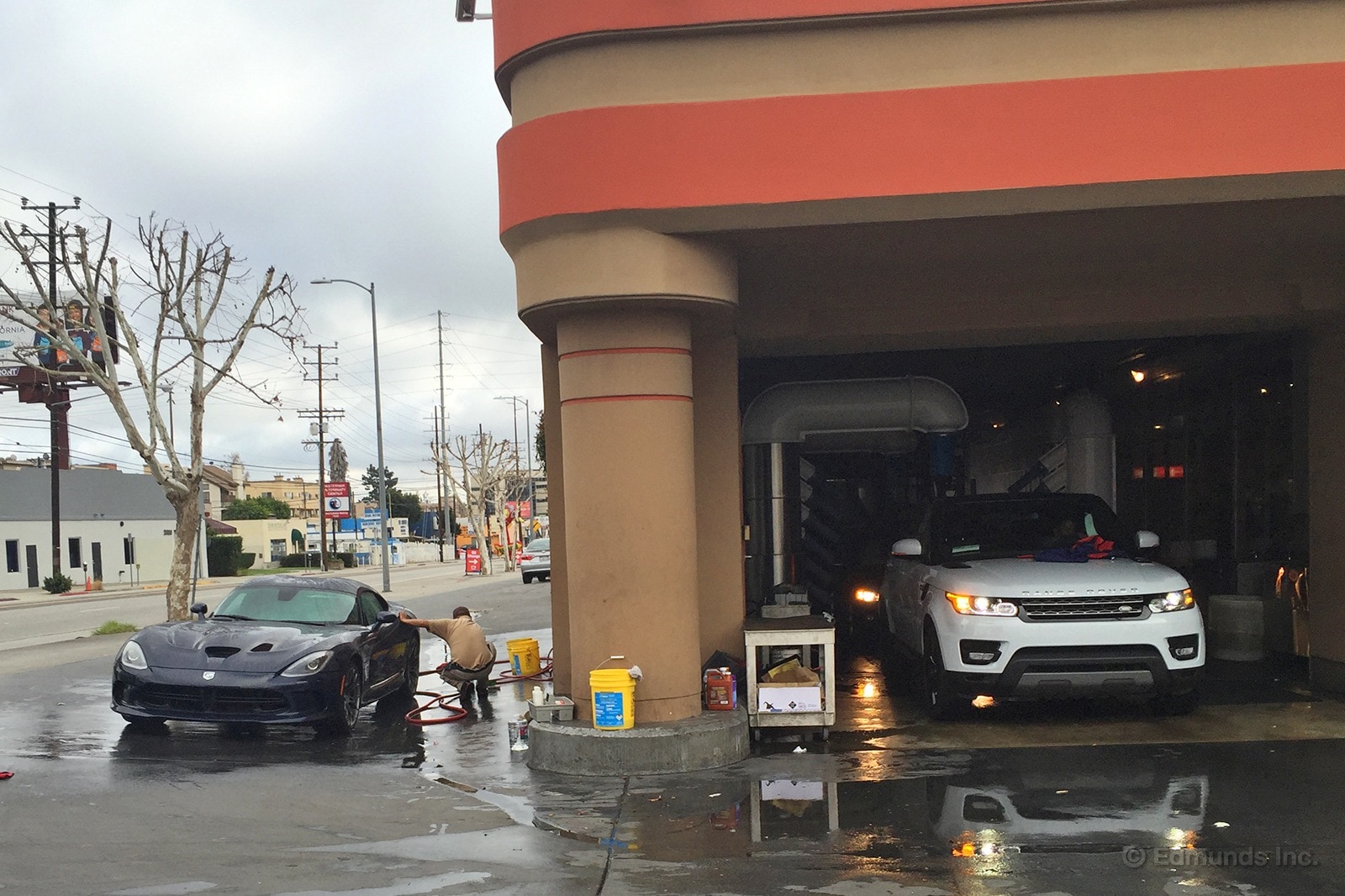
"Excuse me sir, is the Viper yours?"
"Yeah, what's up?" I said to the car wash attendant.
"Um, it's going to be more expensive. Your car can't fit."
I was sitting on a cold concrete bench in the front of the car wash, admiring a classic Morgan when I got the news. The rear tires on our long-term 2015 Dodge Viper are wide — nearly 14 inches wide. There's a track that moves all sorts of trucks, SUVs and various other sports cars through the wash without an issue, but something with this much rear rubber just couldn't be accommodated. It would need a hand-wash.
So after adding 10 bucks to my tab, the porter pulled the Viper alongside the building for the hand-wash treatment. Combine this with the gaping hole in the Viper's hood that allows water in and makes for difficult starts if you point the hose in the wrong direction, and I'd probably get used to owning a dirty Viper very quickly.
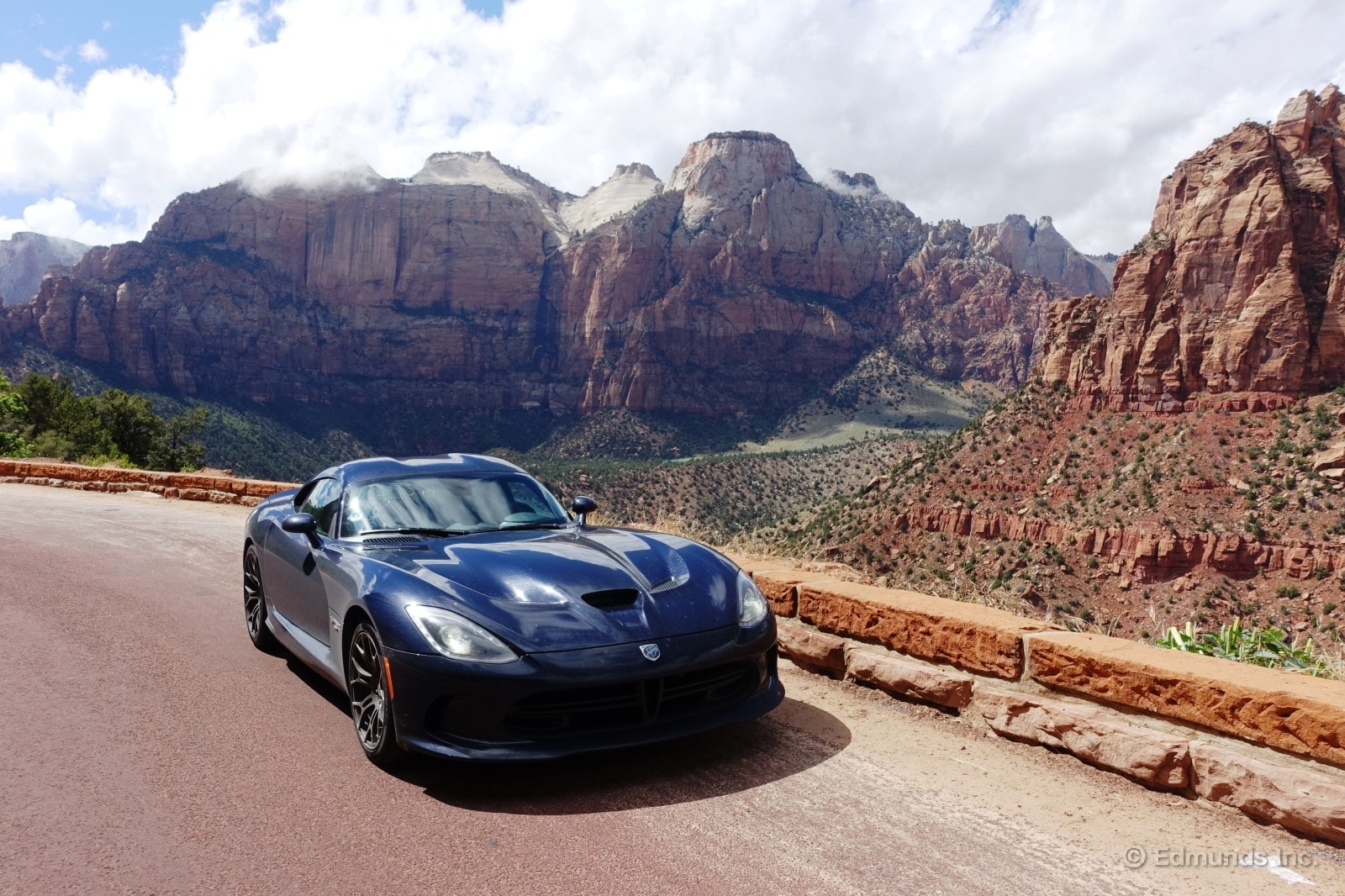
Man, our 2015 Dodge Viper pings. I noticed the occasional crack of engine knock earlier during its stay with us, way back when I took it on a cross-country road trip. Since then, I really haven't driven it.
The other night I took the Viper and when I had the opportunity to lay into the throttle, memories of the road trip came flooding back. And I was reminded of the pinginess.
By now the engine's long-term knock correction would long have since adjusted to its steady diet of 91 octane. But sure enough, at full whack the big V10 delivered a crackling stream of detonation so prominent it made me wince. I lifted, and shortly thereafter gave it another dose of throttle and it readily pinged again, somewhat less this time but still cringe-inducing. A third return to the throttle yielded a slight reduction in pinginess, but still present. I stopped giving it full throttle at that point.
I know what some of you are thinking. I don't buy "tank of bad gas" arguments, unless we're talking about a fuel that's been sitting for six months or more. Around Los Angeles, every fuel station has high fuel turnover. And we only ever use name brand, "top tier" stations. The Viper has pinged before, it pings now, everywhere a ping-ping. And no other car in our fleet exhibits audible detonation like this thing does.
Its knock-prone nature is a little puzzling. It's not as though the big, lazy V10 is some highly-strung engine. On the contrary, the Viper's engine is relatively under-stressed as performance cars go. Maybe the Viper's knock correction algorithm is just really crappy. Then again, side-plug, wedge-chamber engines inherently typically don't have the knock resistance of the central-plug pentroof chambers found in every multi-valve engine today.

Expecting good fuel economy from an 8.4-liter V10 when it's used as a daily driver is, well, dumb. And our 2015 Dodge Viper is doing absolutely nothing to change anyone's expectations there. But what about the rest of the car?
In January we put another 1,000 miles on our quasi-supercar, and as a result we've experienced the pains — and costs — of that reality. For one thing, the nose of our beautiful blue Viper is starting to show the wear and tear that 17,000 miles does to the front end of a car. The mileage didn't just get to the paint either, as we went ahead and replaced all four tires at a head rush-inducing price of $1800.
But tires and paint are just hardware. What about the liquidware?
Like I said, there's another 1,000 miles behind our Viper, and in January we averaged just over 12.2 mpg. That brought our overall average down a bit to 14.8 mpg.
Is that poor fuel economy? Normal? Disappointingly high? I guess it depends on how you see a car like the Viper, but I'd call that number just about right. Here's where we are now:
Worst Fill MPG: 6.2
Best Fill MPG: 27.2
Average Lifetime MPG: 14.8
EPA MPG Rating: 15 Combined (12 City / 21 Highway)
Best Range: 294.3 miles
Current Odometer: 16,802 miles
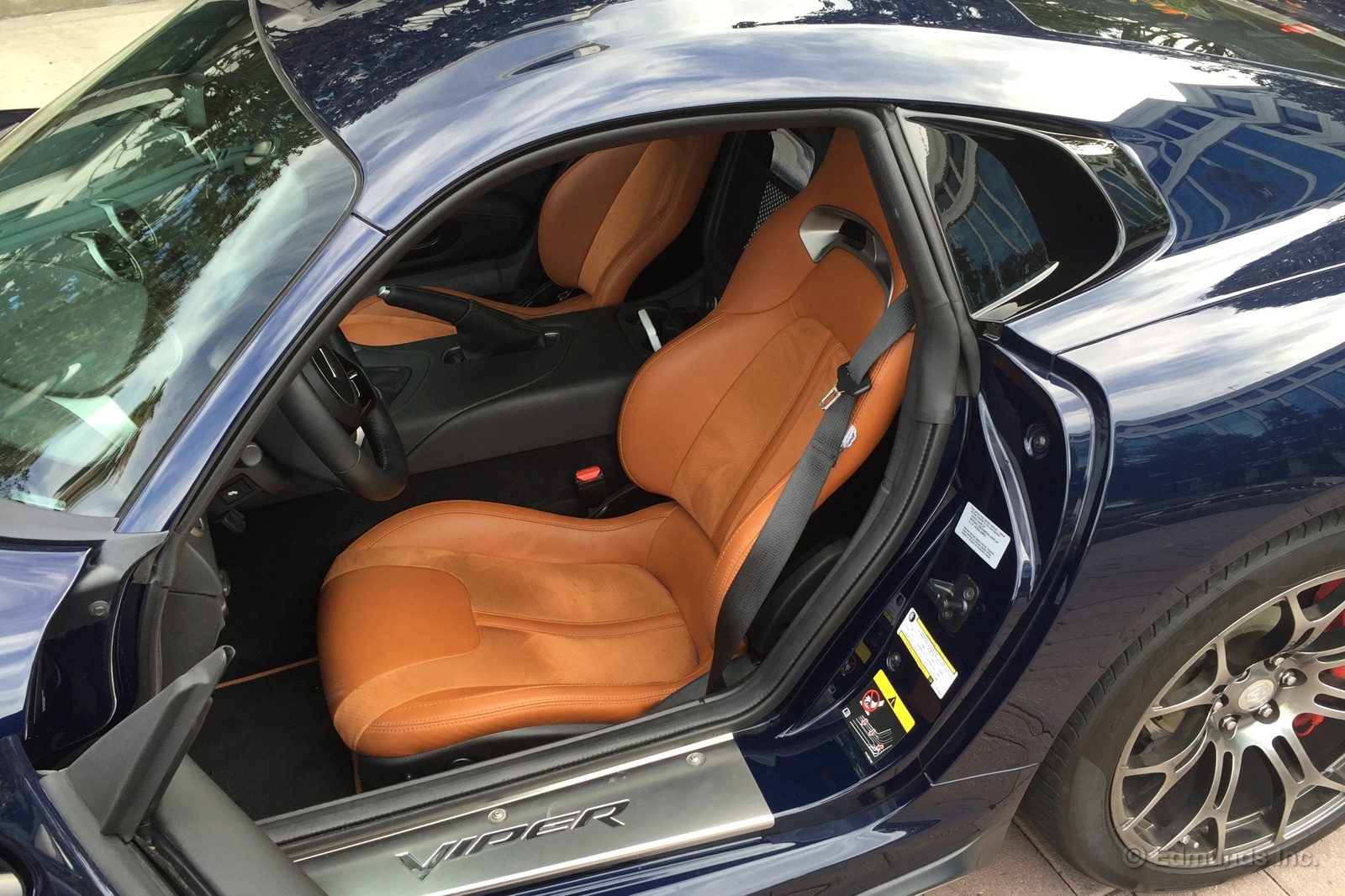
The 2015 Dodge Viper isn't for everyone. Click on any post below and you'll find gripes about the flaming hot door sills, back-breaking suspension and outward visibility that is among the worst of any car on sale today. To save some time, you could just read James's post which catalogues the Viper's most egregious crimes against humanity, and walk away with a pretty good idea of what the car is all about.
My own opinion of the Viper fell more or less in line with that of other editors, but something interesting is happening. My opinion is changing. I am changing. Is someone gripped by Stockholm syndrome aware of their condition?
The reason for me slowly accepting the Dark Side is my increasing familiarity with the Viper. My experience is the inverse of Mike's comment to Reese: "The first weekend is always the best. It's not until the second or third time you take it home that the flaws really start to bring down the experience."
The first time I took the Viper around the block, I knew it was a car I wouldn't drive much. Not because most of the editors have seniority over me, but because the car is so compromised.
It turns out that are few Viper aficionados on the staff. The 2015 BMW M235i and 2015 Ford Mustang GT are more routinely signed out for those who want a car with a little get-up-and-go. I prefer driving vehicles with a little bit of pep underhood, so my options within our current fleet of cars are limited. I began taking the Viper home at the end of the night with increasing regularity. And then my contempt started to wane.
I got used to the tight pedal box, terrible visibility, claustrophobic cabin and droning exhaust. I accepted that the Viper will never be a sports car that you can use every day like you can a Corvette or 911.
There are no hidden surprises; the Viper just is what it is. You might have second thoughts when you take one for a test drive, but give it another shot later. The Viper will never change, but you just might.
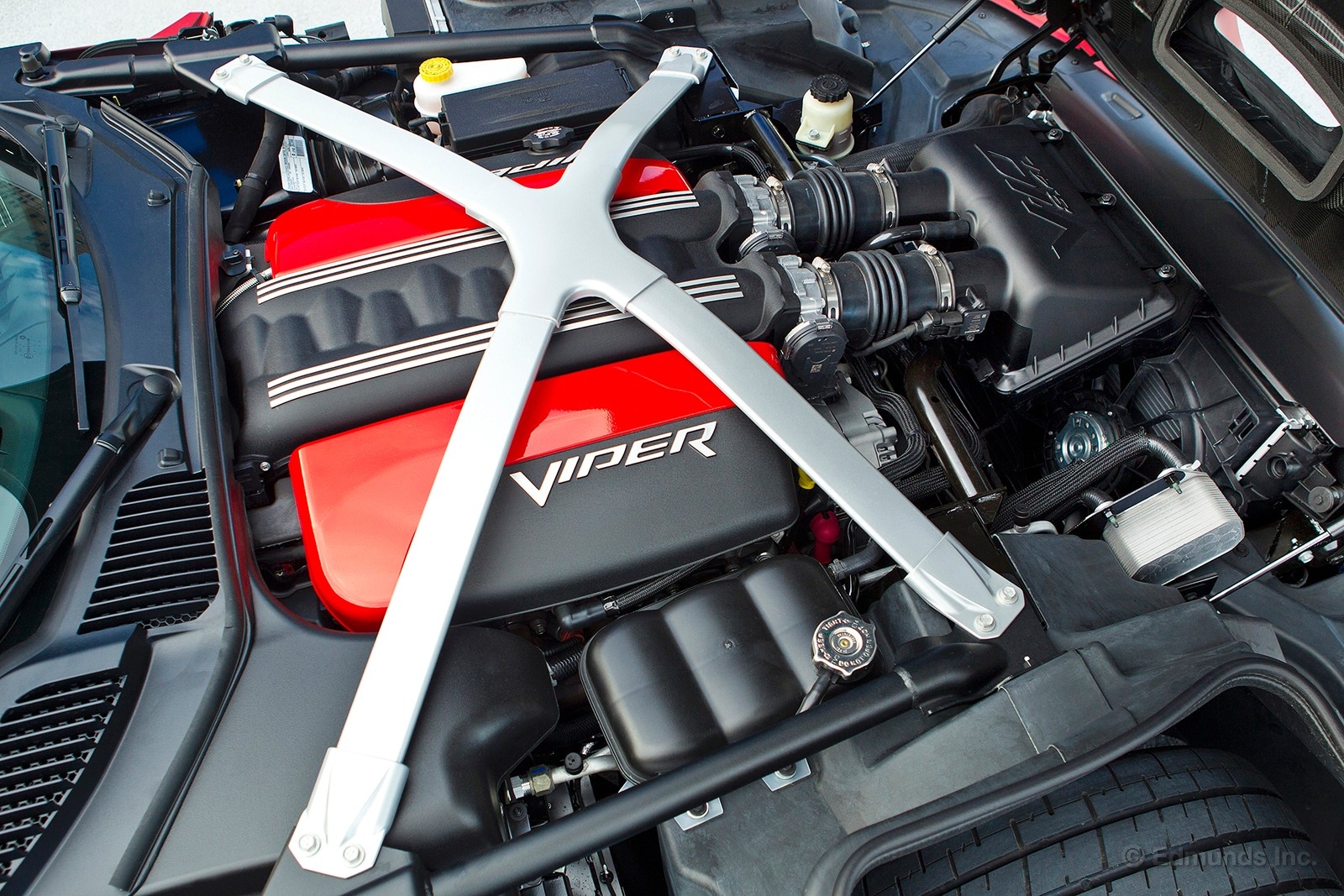
Fiat Chrysler Automobiles voluntarily recalled a batch of the current-generation Vipers, which included our 2015 Dodge Viper GT, for an oil contamination and consumption issue. There was also another recall for the radio software that affects a whole bunch more Chrysler products.
The R28 recall sounds the most serious and thankfully our Viper did not fall under it. That issue involves the engine block becoming contaminated with abrasive debris that could possibly result in engine replacement. Ooooof. That's gotta hurt.
Our Viper did undergo the R29 recall service that addresses oil being forced into the Make Up Air Hose (MUA) in high-speed, high-rpm right-hand cornering at light throttle. The fix amounted to a new oil management system with a new valve cover assembly and relocated MUA fitting and baffle.
The R40 recall sounds a lot less critical on the surface, with a description of "reprogram radio software," but it is actually far more disconcerting. This service hopefully closes a security vulnerability in the software that enabled hackers to take control of some of the car's systems. This gap could have allowed minimally-equipped hackers to control the engine, brakes, locks and steering. Scary stuff.
The car is already back in rotation and the only difference we're noticing is the clutch, which probably shouldn't have been affected by these service campaigns. I noticed it as soon as I rolled out of the parking space in our garage. It seems better than before with the friction zone now slightly easier to predict. It's a small thing that most people won't notice.
Fuel Economy Update for February — Winning With Single-Digit MPGs

It's been a slow month for our long-term 2015 Dodge Viper, logging only 753 miles in February. That's mostly because it went in for an extended service visit (details to come, I'm sure).
Of the few fuel log entries, Kurt and I managed to keep the Viper's consumption appropriately high by returning single-digit mpg numbers. The effect on the overall average was negligible, dropping by only 0.1 mpg.
Now that it's back in circulation, we'll try to bring that average down even further.
Worst Fill MPG: 6.2
Best Fill MPG: 27.2
Average Lifetime MPG: 14.7
EPA MPG Rating: 15 Combined (12 City /21 Highway)
Best Range: 294.3 miles
Current Odometer: 17,555 miles
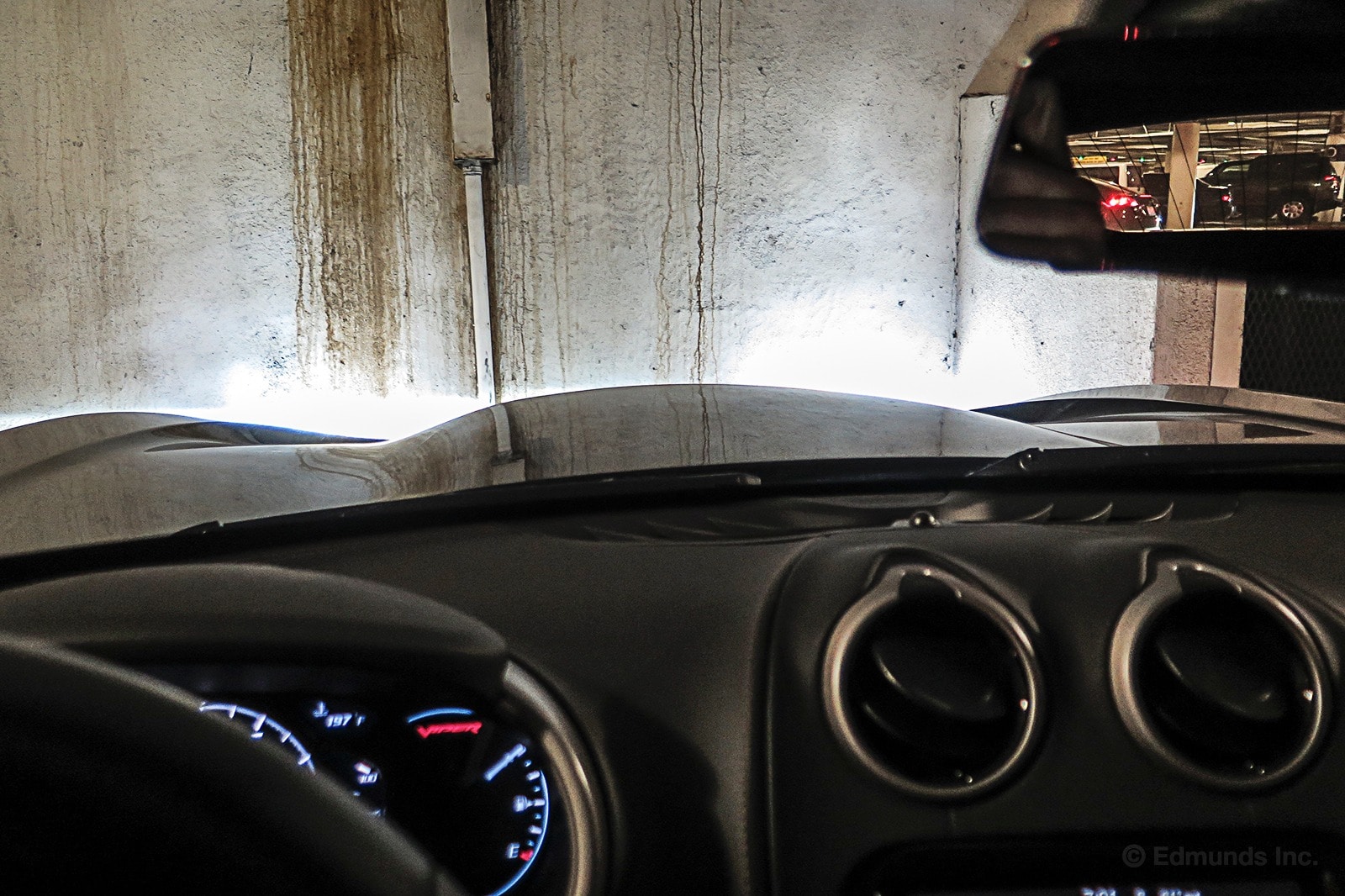
From the windshield to the front bumper, the hood on our long-term 2015 Dodge Viper measures six feet long. That kind of real estate is necessary with a V10 but it makes up 41 percent of the Viper's total length (14.5 feet). Combine the length with the high arc of the hood and the low driver's seat and it's nearly impossible to tell where the front bumper is, especially when you're parking.
This would be a perfect opportunity for modern technology to step in and solve the problem, but the Viper it seems can't be bothered. No matter which trim level, you can't get parking sensors in the Viper, front or rear.
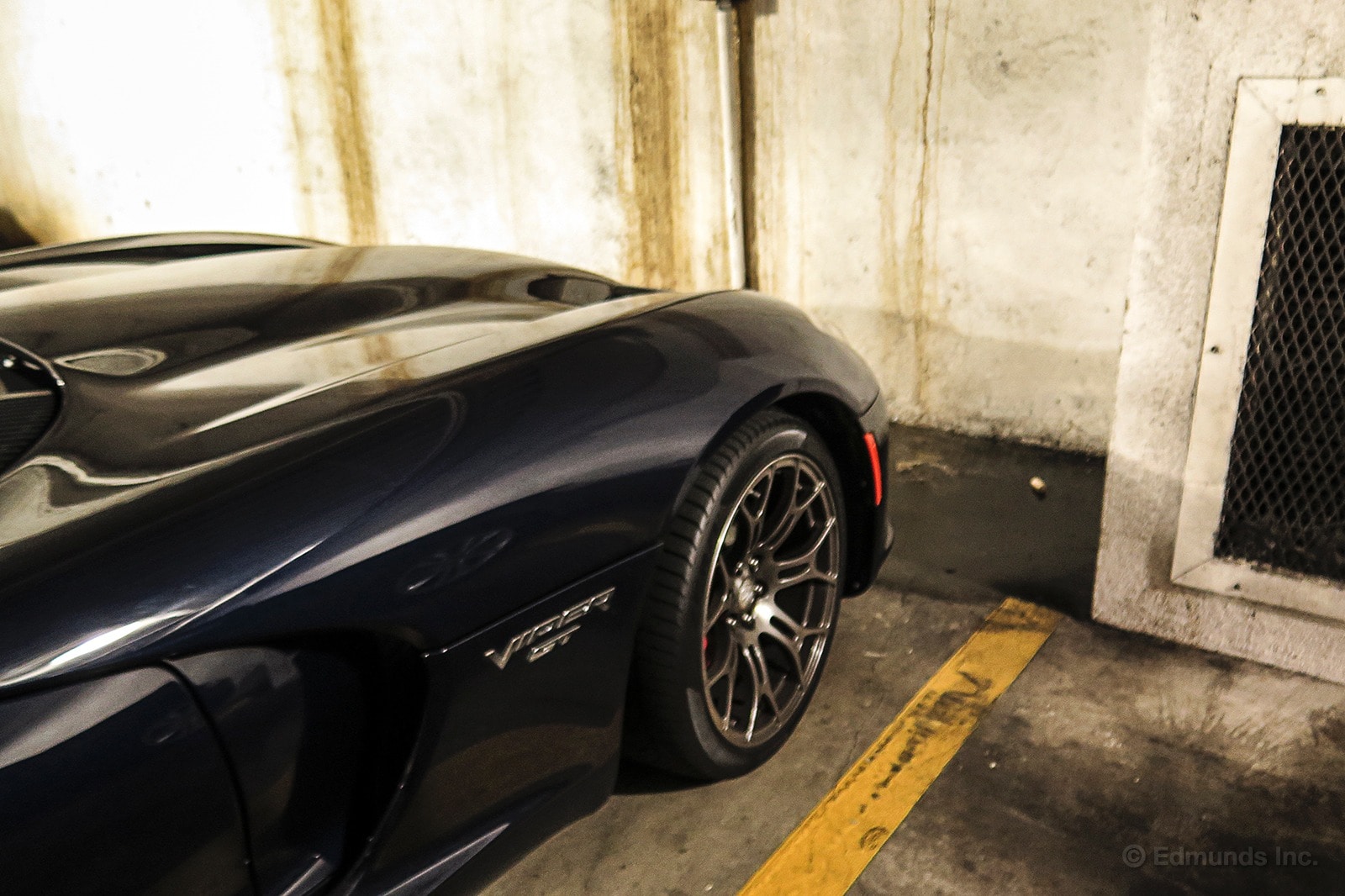
Dodge makes parking sensors available as a $395 option on vehicles like our long-term Ram 1500, but not on this $100k supercar. This means you take the cautious route, trying not to bump in to walls or unseen parking stops and you have to corner wide around pillars, all to save the paint on the long nose of your Viper.
And most of the time, this means you end up feet from a wall, rather than inches.
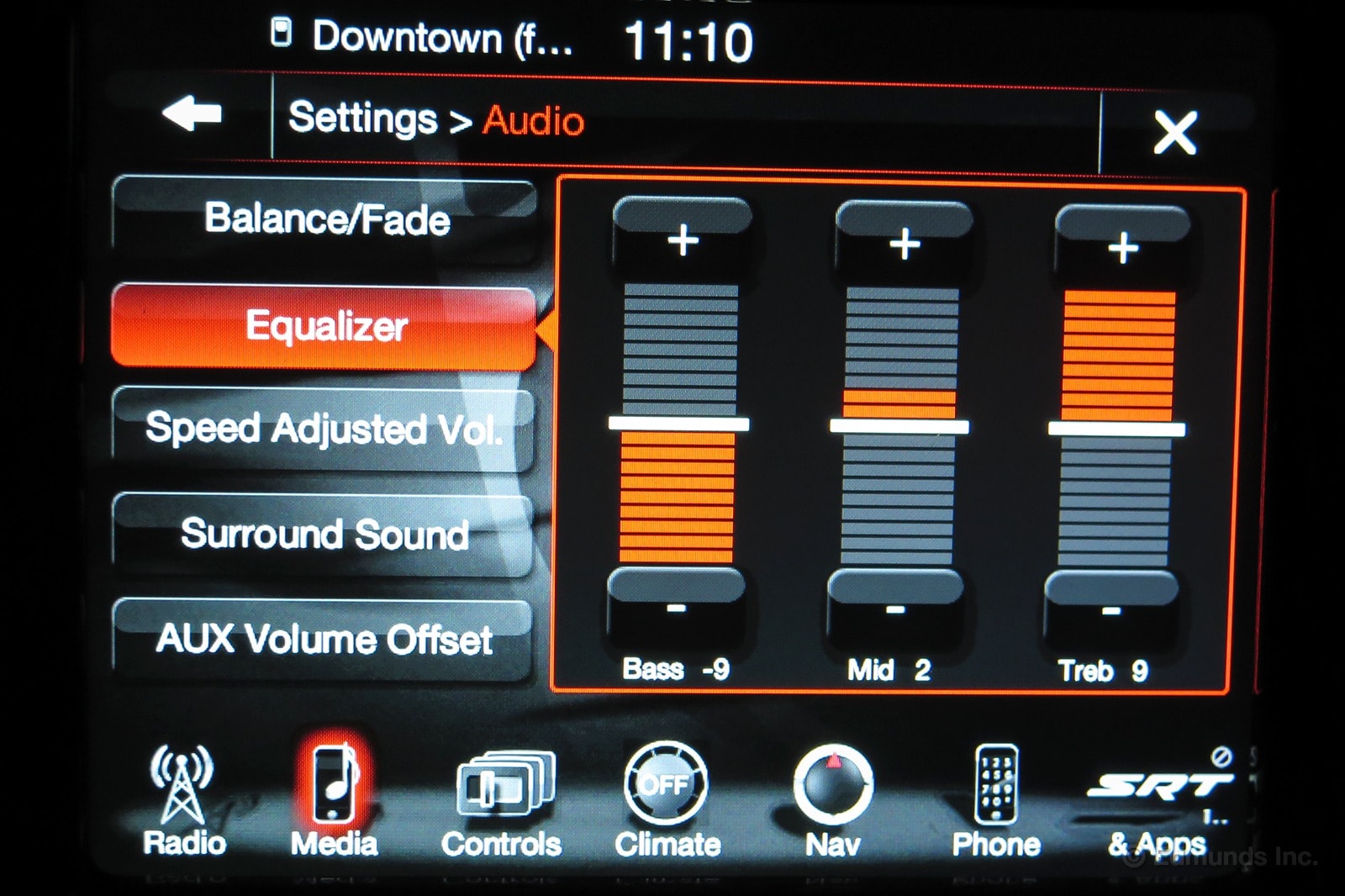
There are two very distinct and frustrating issues with the stereo in our long-term 2015 Dodge Viper. First: the bass is turned up way too high. Second: it doesn't get loud enough. Whether it's the radio, Bluetooth or an iPod plugged in, nothing meets my personal volume standards.
We've got the 18-speaker Harman Kardon sound system ($1,995) in our Viper and as you can see in the photo, you can adjust the system's settings for bass, mids and treble. Unfortunately, even with the bass turned all the way down and the treble all the way up, it doesn't do much good. Maybe it's the tiny cabin, but the bass from this system is always overbearing, regardless of driving conditions or whether the windows are up or down. Even at low volume, it's too much.
Another issue, especially with the amount of noise that makes it inside the Viper's cabin, is that the audio is too quiet. There's a setting for AUX Volume Offset, which I have turned all the way up, but it still doesn't provide the kind of rocking-out decibel levels I desire. Combine this with the fact that the system's Speed Adjusted Volume doesn't work and I get real fed up when I'm trying to listen to a new album inside the Viper.
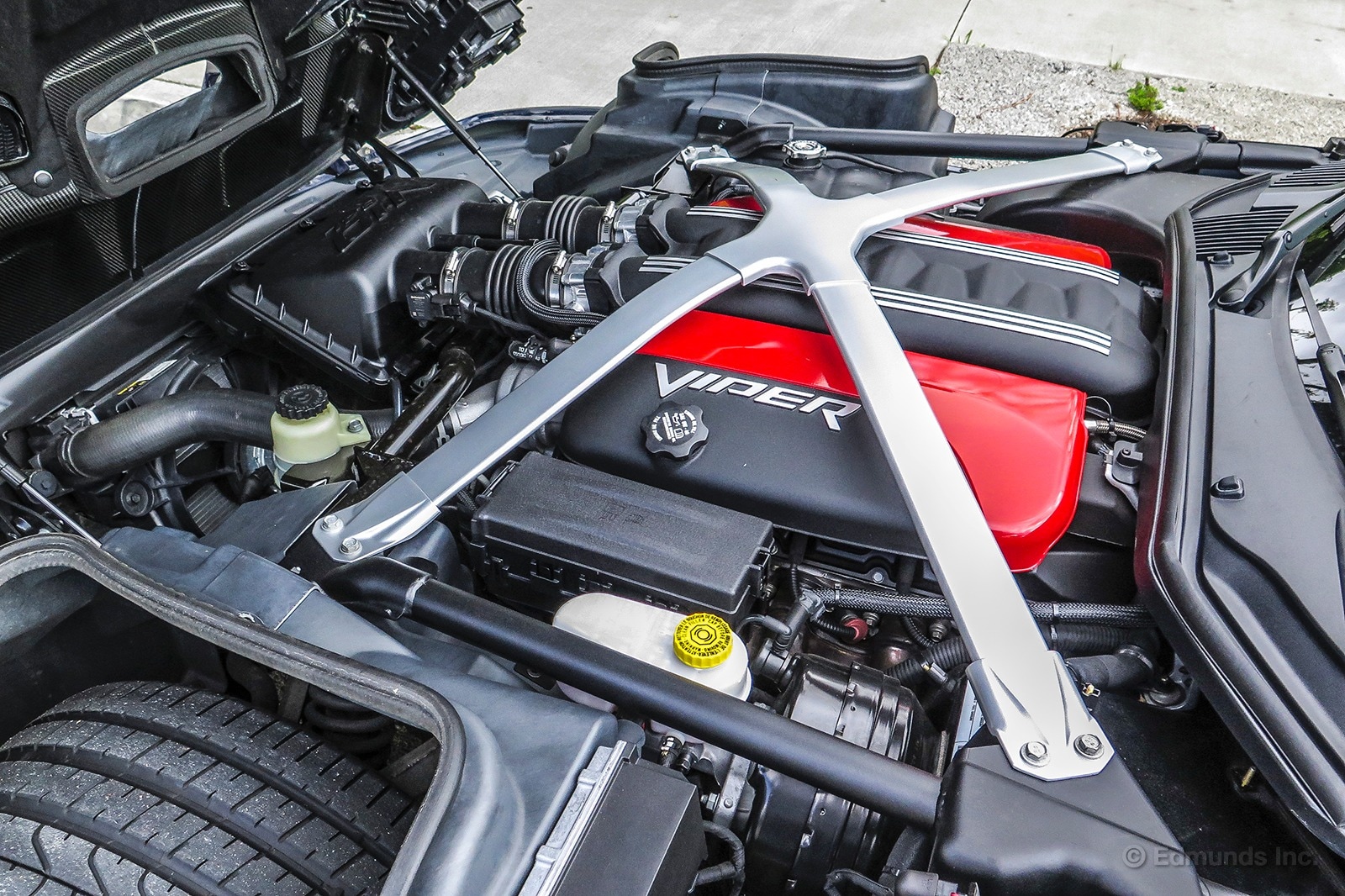
Recently, our long-term 2015 Dodge Viper went out for service and when it returned, the engine bay was in pristine condition. Part of the service was a new valve cover assembly, which at a minimum means the cross-brace and the plastic covers on the top of the engine had to be removed. When they were, some cleaning was clearly done. Most of the under-hood surfaces seemed to have been wiped down (at the very least) and it reminded me just how good this engine bay looks.
The well-laid carbon fiber is exposed on the underside of the hood when you show it some sunlight and there is a small splash of red on the plastic covers that really makes everything pop. You can see that there are several wires and hoses, but they don't dominate the view.
It might not be minimalist or entirely exposed, but up against our long-term Porsche 911 or our Jaguar F-Type, the engine bay in our Viper feels like a stripped-out racecar. Aesthetically speaking, this is a really nice engine bay. If it were mine, I'd be motivated to keep it clean.
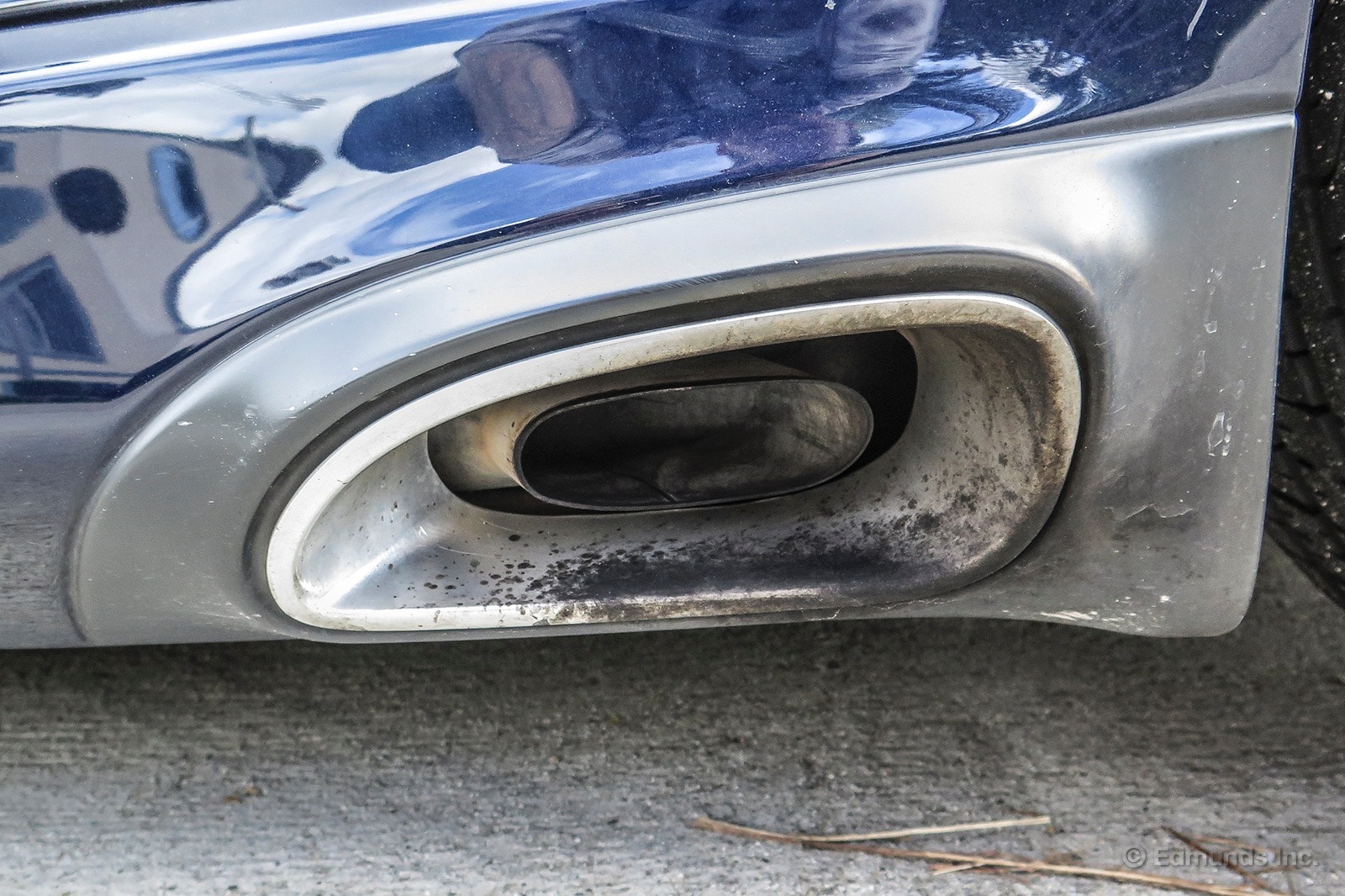
Maybe it's because they're attached to side pipes and I keep my eyes forward when I'm sitting down in a car. Maybe it's because and I'm usually focused on keeping my legs from getting burnt rather than what the super-hot surface looks like. Whatever the cause, I've let the exhaust tips on our long-term 2015 Dodge Viper get way too dirty.
I've recently been anointed "resident guy-who-likes-shiny-stuff" (by myself, about five minutes ago) so clearly, I'm the right person to take on this monumental task.
This is a bit of the car that goes unnoticed, no matter how many hand-washes we get at our local car wash. As a result, I've done some light detailing before on our long-term SLS AMG and our C7 Corvette. And the next time I get the Viper for the night, I'll shine up the exhaust tips with Nevr Dull and elbow grease, then get back to you, our dedicated readers, with some photos.
I've Been Hard on it. And I'm Sorry. Sort of.

I've been pretty hard on our long-term 2015 Dodge Viper and I feel bad about it.
I've nitpicked about the stereo (twice), complained about the panel gaps, criticized the non-telescoping wheel, bemoaned the lack of parking sensors, whined about the poor visibility, groaned about the super-wide rear tires, protested the presence of skip-shift in a 645-hp supercar and lamented its inconsistent ability to start after being washed.
Don't get me wrong, I stand next to those critiques, but I feel bad about saying mostly negative things about this car. And every time I drive it, I'm reminded of the one ultra-redeeming factor: It's fast. Really, really fast.
Before you roll on the throttle in any gear, you'd better be sure that the tires are warm and the road is dry. Otherwise: sideways. It makes loud, abrasive noises and people love to look at it. I've never been at a traffic light in the Viper without someone stopping in their tracks to look it up and down.
Kids give it thumbs up, burly old men in parking lots give me the car-guy-nod-of-acknowledgment when I squirm out of it at car meets, parents hold their children close for protection, and respectable women gasp in horror when it storms in to city centers. It's the tattooed, mohawked, punk rock version of a supercar. It still listens to The Clash and it's not gonna get a real job working for The Man.
It makes me laugh and grin and chuckle every time I redline a gear and the red Viper on the dash lights up. I may not like it as much as our long-term Jaguar F-Type R Coupe (which I still list as my favorite car ever when anyone asks), but I've had more than a few moments when I enjoyed the Viper, very much.
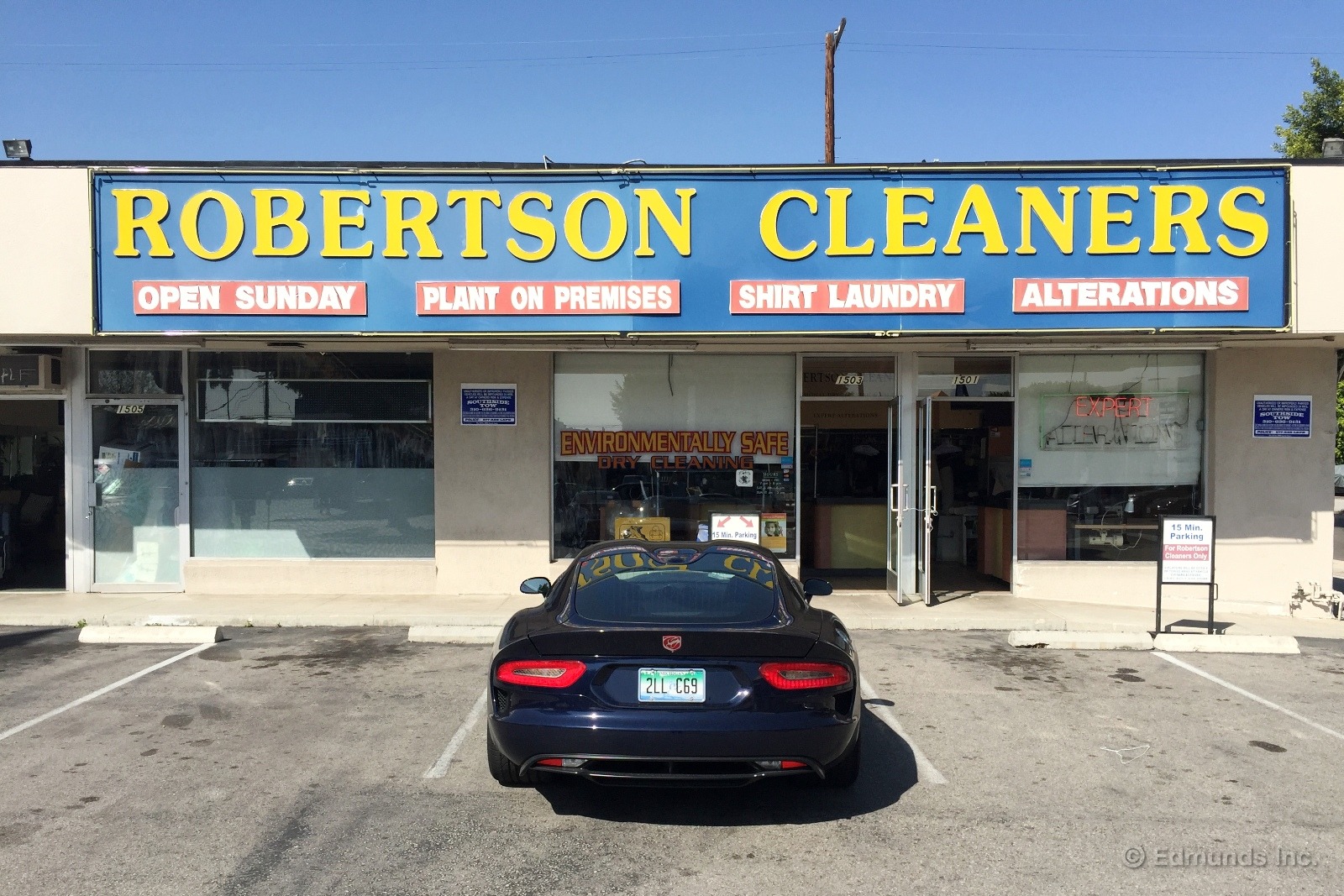
Our 2015 Dodge Viper has received its fair share of criticism as a daily driver. Editor Frio was "not sold" on its cargo-carrying ability and Editor Riswick memorably wasn't sold on anything. I can't really disagree, but at the same time, I developed some genuine affection for the Viper while running errands over the past few days.
In fact, I'm here to tell you that there's no current long-termer I'd rather drive to the drycleaner.
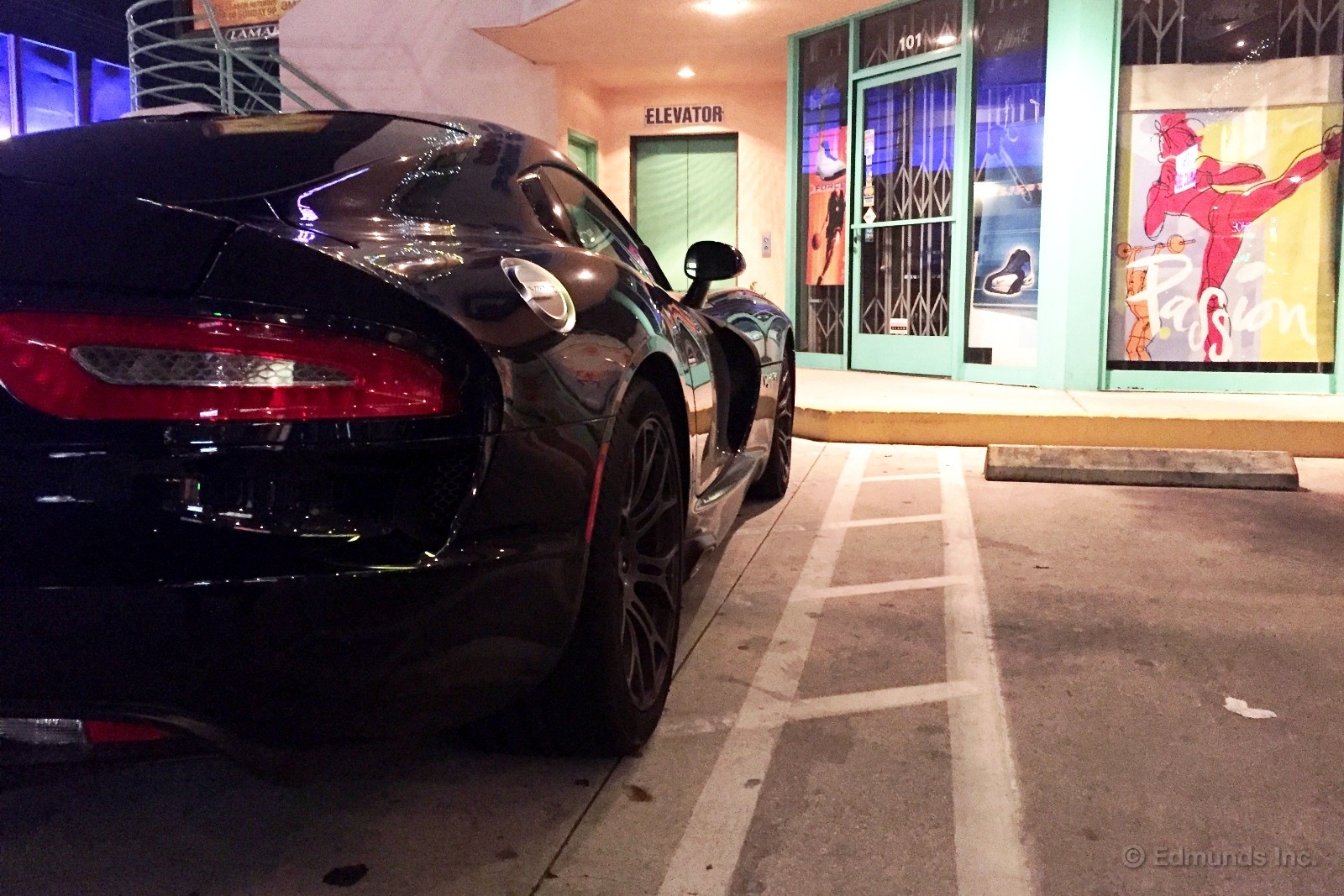
There's a learning curve with this car, as Brent and Reese have mentioned. Or maybe it's more of an adjustment period, since there's nothing complicated going on. But you've got to figure some stuff out. Like the clutch pedal, for example. It feels like there's about three feet of travel down to the floor, but the engagement point is closer to the top, so you don't have to press it in all the way. With a little practice, you'll be shifting smoothly almost every time. Pedal effort is pleasantly light, too. It's a remarkably user-friendly setup given the car's uncouth reputation.

There are other things. The blind spot over your right shoulder is huge, so you have to keep close tabs on traffic before it enters that area for peace of mind. Blind-spot monitoring the old-fashioned way. The gearing is exceptionally tall, so you learn to leave it in first a lot longer — I'll take it up to 40 mph sometimes — in order to facilitate a nice positive change into second (and circumvent the infuriating 1-4 skip-shift function).
The gearing also has implications for matching revs on downshifts, with the common 3-2 swap needing just the lightest dab of throttle. Otherwise you get a cranky V10 bellow and miss your mark by 2,000 rpm.
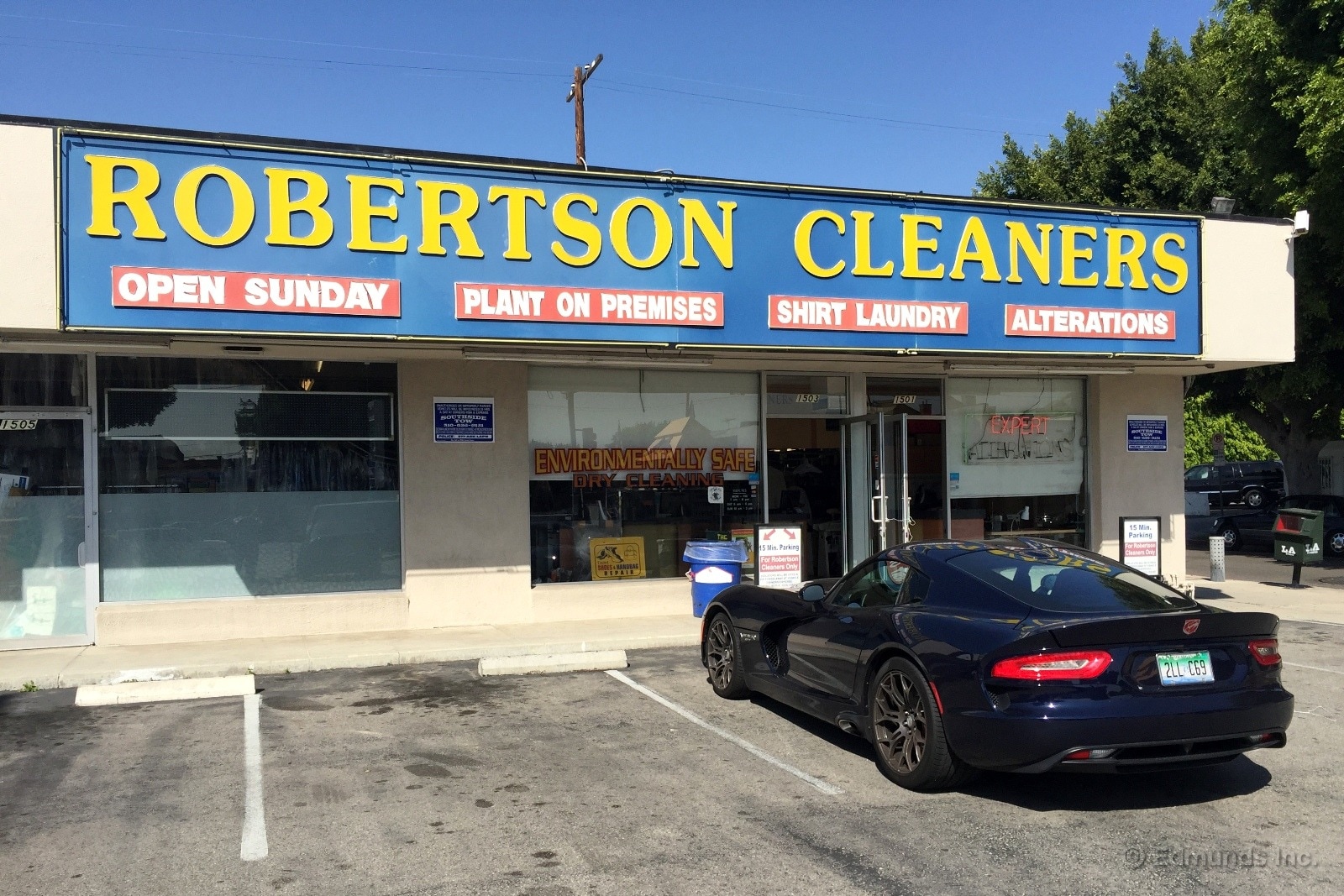
But you get used to it. And once you do, this machine grows on you. Despite the Batmobile nose and insane track skills, the chin seemingly never scrapes when exiting parking lots (eat your heart out, Chevy Volt). Yes, there are creaks and rattles, but the suspension itself feels cartoonishly solid — I actually don't mind driving over rough patches in the Viper, just because it's cool how the suspension shrugs it off. And walking up to a Viper when your errand's done is a thrill that never wanes. If there's a more arresting rear-three-quarter view of any car today, enlighten me. I haven't seen it.
So yeah, nevermind the Optima, Civic, Pilot and all the rest of the supposedly superior grocery-getters. I'll get around town in this thing anytime.
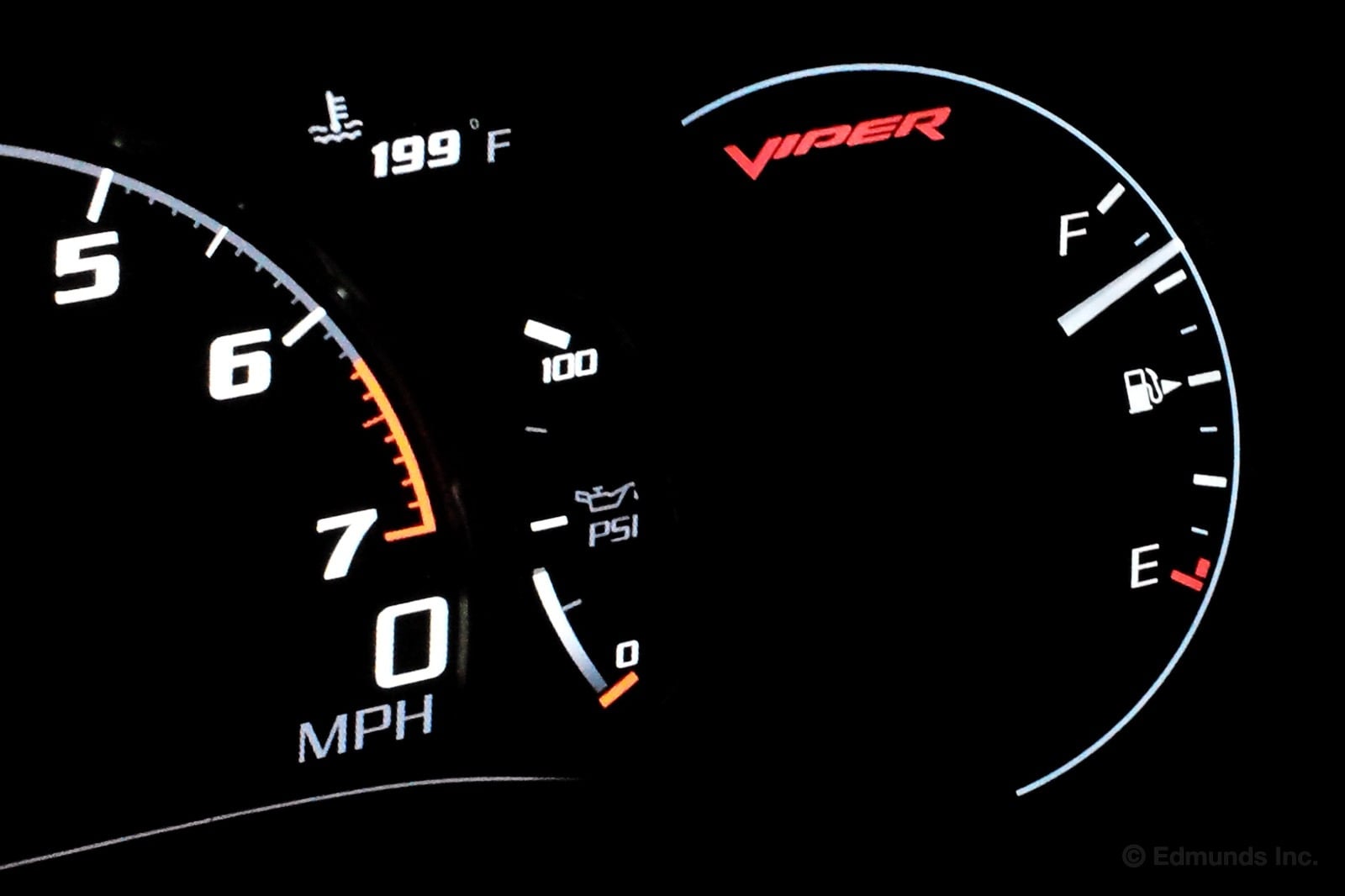
When we weren't scything through traffic in our 2015 Dodge Viper, ah who are we kidding. All we do is scythe through traffic.
March saw us put another 1000 or so miles on the clock, discover that indeed exhaust pipes get dirty, admit to a too early damnation of a magnificent and visceral beast, and discovery of the joys of erranding around Los Angeles in our blue meanie. Did I mention we scythed through traffic? 'Cause we did that, too.
There's a cadre of Viper drivers at this point (myself included), and I believe we've progressed beyond mindlessly taching the Viper out to make progress. As such, we're started to use incrementally less fuel than we did in early months — we actually hit the EPA's city number at 12.01 MPG.
Double digits? What's wrong with us?
Worst Fill MPG: 6.2
Best Fill MPG: 27.2
Average Lifetime MPG: 14.5
EPA MPG Rating: 15 Combined (12 City / 21 Highway)
Best Range: 294.3 miles
Current Odometer: 18,642 miles
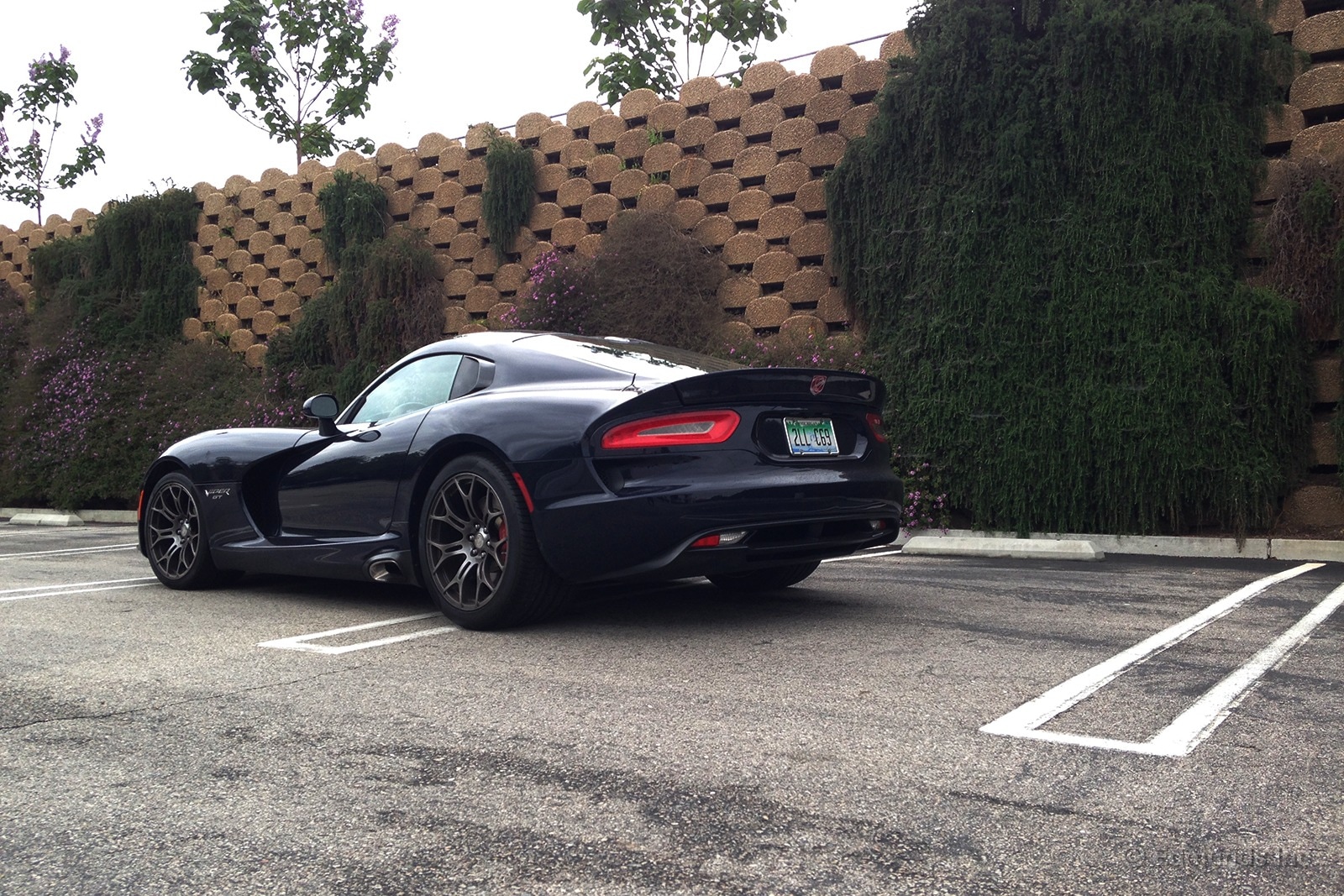
Our time with the 2015 Dodge Viper is winding down. We still have two months to enjoy it, but the blue beast does a lot of sitting around these days. Seems like most of us have had our fill. Inspired by Josh's recent post about the Viper's livability as an errand runner, I decided to revisit the car before it was too late.
Immediately after contorting myself into the front seat, I remembered why I'd earlier vowed that I'd had enough Viper for one lifetime. Part of it is my height, or lack thereof. At 5-foot-6, I've got the pedals max forward and the seat pretty far forward just to work the clutch pedal. With no telescoping function, the steering wheel feels like it's nearly in my chest. But it's kind of an agreeable racecar-ish seating position and I can deal with it.
The next reminder of why I don't drive the Viper more often came minutes later on the freeway heading home, trying to collect my internal organs shook loose by the Viper's ride. Look, I know it's silly to complain about the ride comfort of a car like this. But at one point I mused that being towed behind a car while lying down on my skateboard would've been more comfortable. The suspension was set in normal mode.
Another silly point of contention in a car like the Viper: the audio system. It's just not very good. Power users will of course want to know why I need to listen to the stereo when all the music I need is on the other side of the firewall. Fair point, but here are two problems with that suggestion. First, my commute is about 60 miles of highway, and at night after traffic has mostly subsided, that's 60 miles of listening to a V10 at a steady drone. It's OK, but it's just not that interesting. And I usually need a little podcast, talk radio or introspective music to keep my brain active until I reach home.
Second, the Viper just doesn't sound that good. It's a car of superlatives, but "melodious engine and exhaust note" is not one of them.
The next day, however, I went out to run a few errands. Drove to the bank, the hardware store, the coffee shop. Remembered when I had the Viper for a weekend and made a Costco run with it. I was starting to mesh with Josh's sentiments about enjoying the Viper on the daily. Not only is there a thrill when walking up to the car after an errand, but also wheeling out of the parking lot with the huge, curvy hood line ahead of you.
The Viper is one of those cars where the thought of actually going out with it in suburban or city traffic is worse than the reality. You just get out, you do it, you find parking, you learn to drive it slowly and purposefully around rolling obstacles, and you come home happy that you did.
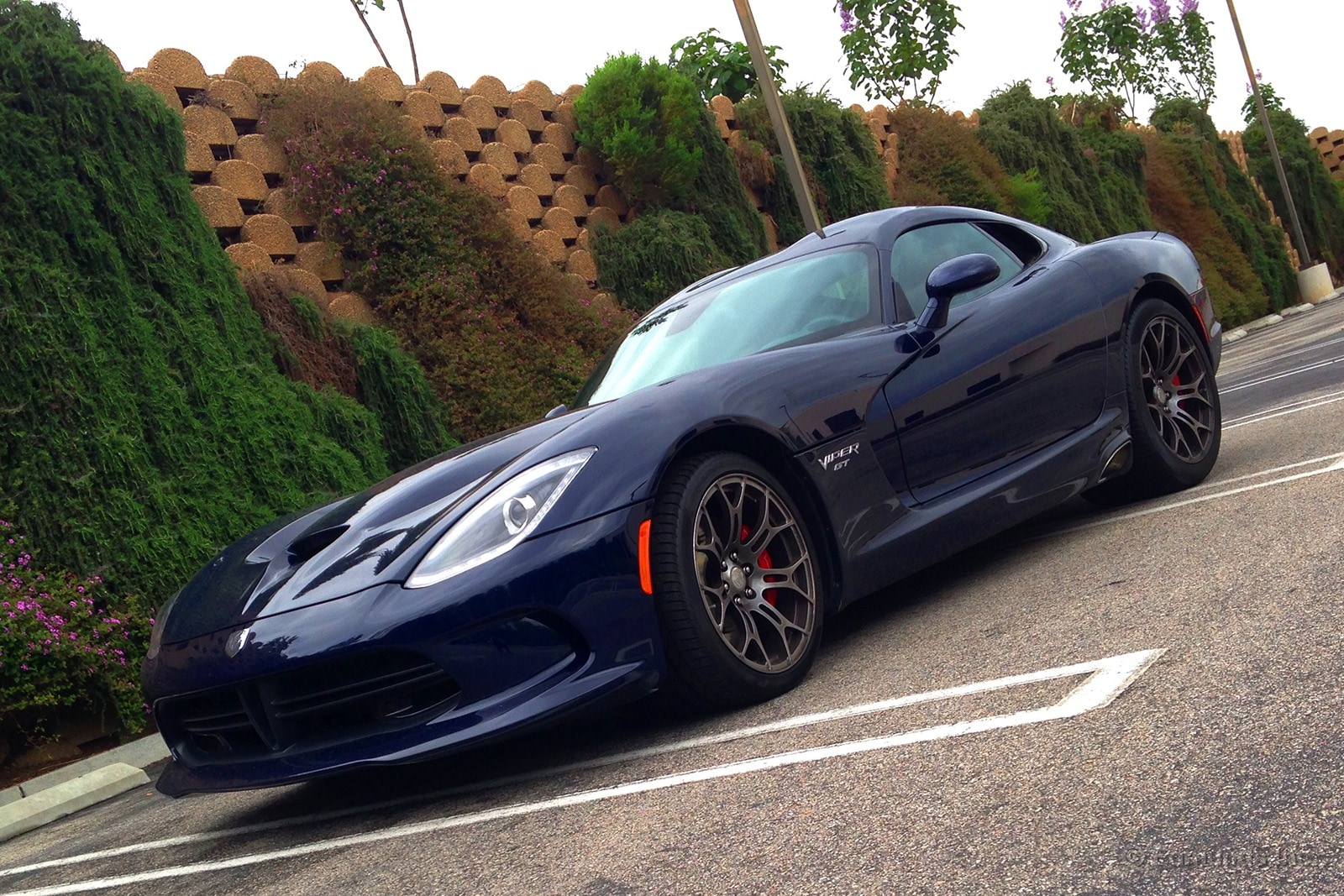
"Niiice car," my neighbor says from her driveway, her pitch rising through the first word.
"That car is so awesome," says one of the neighborhood kids. "Can I sit in it?"
Even the door-to-door salesman chimes in.
"Oh maaaaaaaan!!! I've been saving you for last, bro. That car, man! Oh man, can I just have a look inside?"
You know, I feel lucky enough to have a job where I drive and write about cars, so I always try to oblige someone this small gesture. What I don't realize until later of course, after he's relieved me of $40 for some non-toxic, all-purpose super cleaner, is that our 2015 Dodge Viper was a well-timed and easy sales opener.
"This car is for winners, man. Winners! You mind me askin': how'd you become successful enough to buy this car? Because I wanna be successful and own something like this one day."
He doesn't seem any less impressed when I explain that the car isn't mine and why it's in my driveway. He then tells me of a wayward life he left behind in Mississippi and how he's trying to set an example for his daughter with his sales work, and of course I fall for the whole damn thing. But he's a personable guy and we have a long and genuine conversation about class, race and wealth. Seems like the least I can do is buy a bottle of his wonder water (I haven't tried it yet, but it rates well on Amazon).
Afterward, the two neighborhood boys who've been hovering nearby on their bikes ask if they can climb in. They do and proceed to geek out on everything within reach. One of the boys recognizes that the center console stack and touchscreen display in this $100,000 supercar is nearly identical to the one in the 2014 Ram 1500 his family just bought.
They keep chanting, "this is so awesome." After about the third time I ask, "what is it that you like about it?" The one boy says, "it looks totally from the future, but it's like, I can touch it today. Like, in a few years, I could actually drive this." I thought that was a cool observation.
Then it's on to the old show-stopper sequence: open hood, ignite engine, blip throttle. Young minds blown.
I've been living with the Viper for about a week at this point. And as cool and wholesome and American and car-nerdy as this scene was, I realized that attention is the only thing the Viper really brings to the supercar table.
Everything great about this car can be had in other cars for the same money, more or less. No, you won't find another V10 in this class. But that's not a bad thing. This V10 just doesn't sound that good. Not at idle, not at 75-mph cruise. At idle, it's not as chatty as a diesel, but there's enough clatter to make you ask "just where exactly did they spend the $100,000 I just paid for this car?"
It does sound pretty good running up through third gear into fourth, though. That slinging sweet spot is still the Viper's ace, the only real visceral, head-pinning thrill that might still make it all worth it. Then again, a Z06 offers pretty substantial kicks in the same range of the powerband.
Despite the sales guy's conviction that the Viper was a car for winners, I was feeling anything but a few days later after I'd bashed my shoulder after engaging in a little contact sporting. Steering this car with two arms and shoulders is hard work on a good day. Steering with one arm, in reverse, with my left upper body swollen and on fire was no small effort, I'll tell ya, not to mention slowly, deliberately and awkwardly lifting myself in and out of the car while trying to clear the scorching door sill.
I couldn't wait to return this thing to the office. It wasn't just the discomfort of my injury (later diagnosed as a low-level separation), though. Even a few days before, I realized I just don't love the Viper. I started to think about driving my old Cherokee to handle errands around town.
For me, the Viper is a car I could see owning for a year, maybe, before trading it for something else. A Challenger Hellcat, Z06, GT500, maybe a C63 AMG. I just think it sacrifices too much for too little compared to other choices. Yes, it's one of the sexiest cars around. The curves, stance and proportions are almost flawless. It's why it attracts so much attention.
But day to day, I couldn't deal with it. Even as a weekend toy, I couldn't see myself driving it that often. It's simply too much work, too uncomfortable (for me), too chintzy in too many places, too much compromise.
I admit I might feel different if I was doing 10-12 track days a year.
One of the younger guys on staff alleged that I was simply too old. Kurt Niebuhr silently indulged my analysis but with his trademark smirk that lets you know he pities the choices you make.
The Viper is a singular experience and I'm glad it's around and glad that someone makes it (for not much longer, however). I'm not charmed by its raw appeal, but I get why others are. Still, it feels like its window of relevance is closing. Apparently Fiat-Chrysler and many Americans shopping for $100,000 cars agree; fewer than 1,300 were sold in the last two years. And as much as I want to like the idea of a Viper in my garage when I am one day king, I know I'd end up grabbing the keys of many other alternatives first.
That's OK. There will always be a home for the Viper in Kurt's garage.
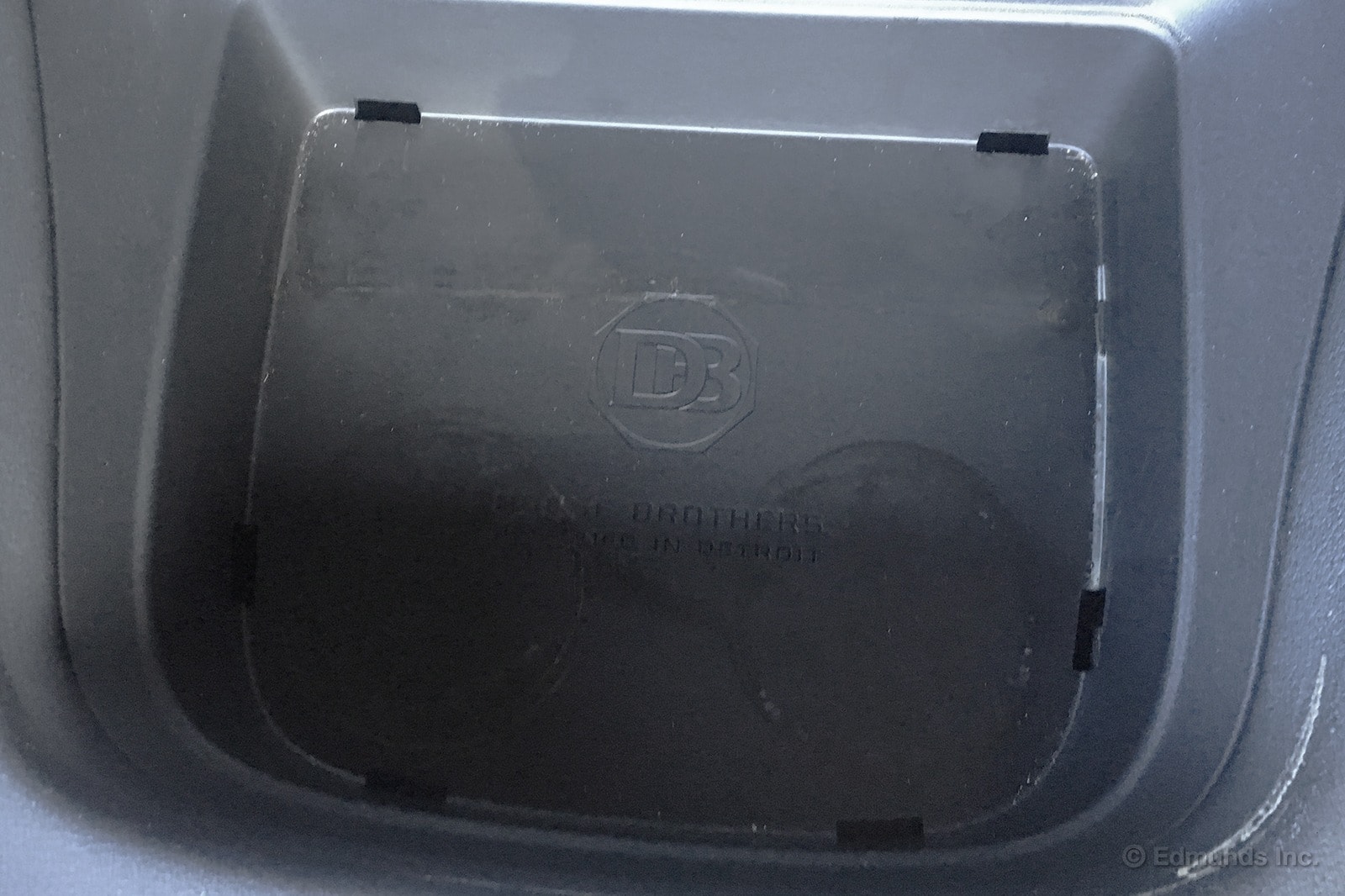
I was transporting a bottle of wine one night. Rather than let it roll around on the passenger seat, I crammed it into one of the cupholders behind my elbow. When I arrived at the dinner location, I grabbed the wine and out came the cupholder tray attached to the heel of the bottle. And there it was, a subtle nod to the company's founders.
The company was originally called the Dodge Brothers for John and Horace Dodge. A recent ad campaign also paid homage to the brothers. This embossed panel uses a simplified version of the original logo that featured an interlocking six-point star.
Kurt Niebuhr found this Easter egg in a previous Viper that rolled through here, so I'll credit him with the original discovery. Personally, I like heritage stuff like this when it's not so prominently displayed. Our Jeep Renegade also has some subtle and obvious touches.
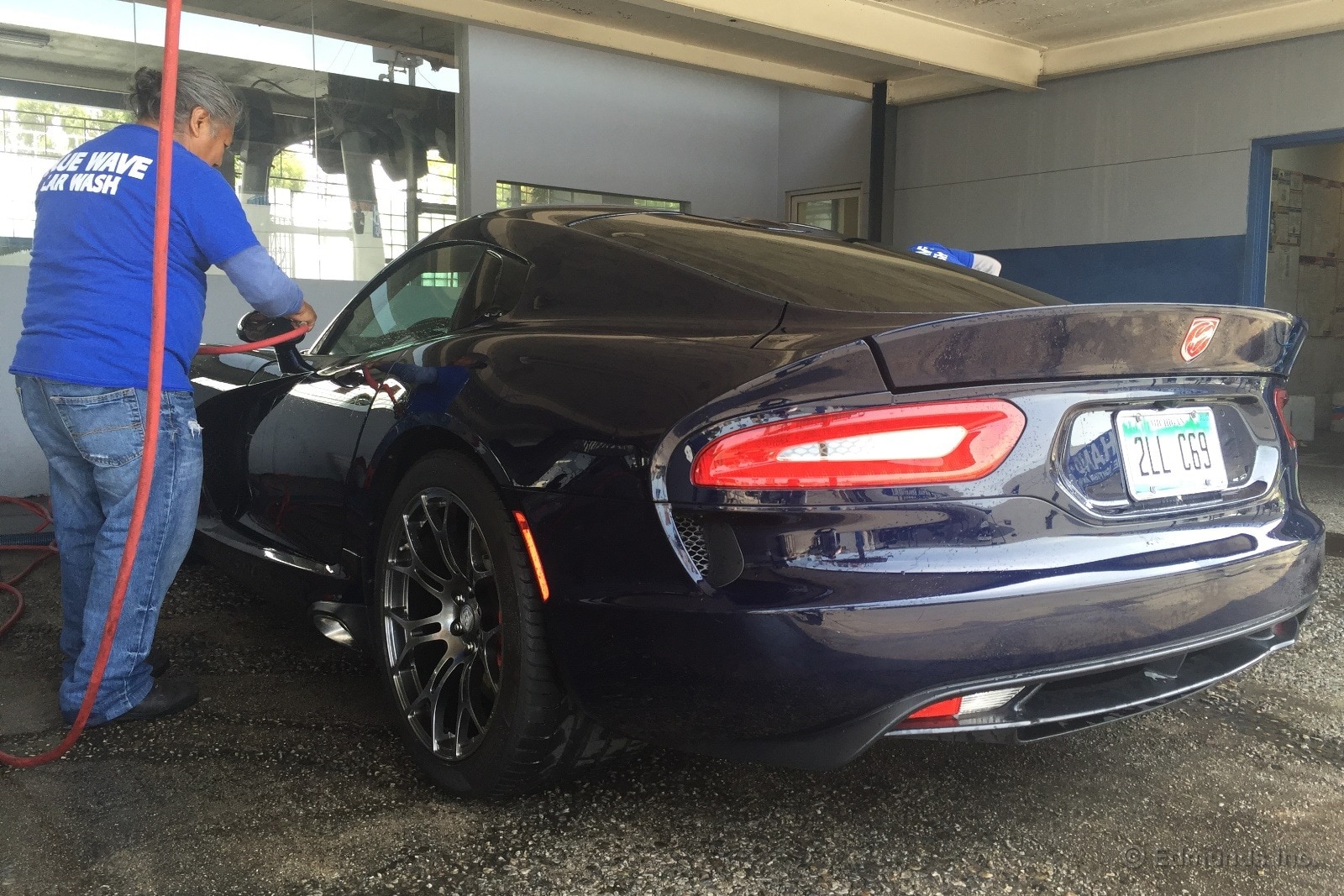
Our 2015 Dodge Viper may be a polarizing vehicle in terms of how it drives, but there's no debate about the styling. Or there shouldn't be, at least. I've driven the thing countless times by now, and I still catch myself admiring the rear three-quarter view like it's a poster in my childhood bedroom.
That's no small thing these days. When I look around at other cars with this kind of performance, I see a general lack of inspiration. McLaren? Can't tell 'em apart. Ferrari? Okay, the 458 Italia and 488GTB are beautiful, but otherwise I feel like that company hasn't come out with a compelling design in years. Lamborghini? Paper airplanes with wheels. New Acura NSX? Please. And the new Audi R8 is less attractive than the original.
Meanwhile, the Viper just keeps on evoking the Michael Keaton Batmobile, which is high praise in my world. Styling really matters for this sort of car, and it's one thing the Viper's got down pat.
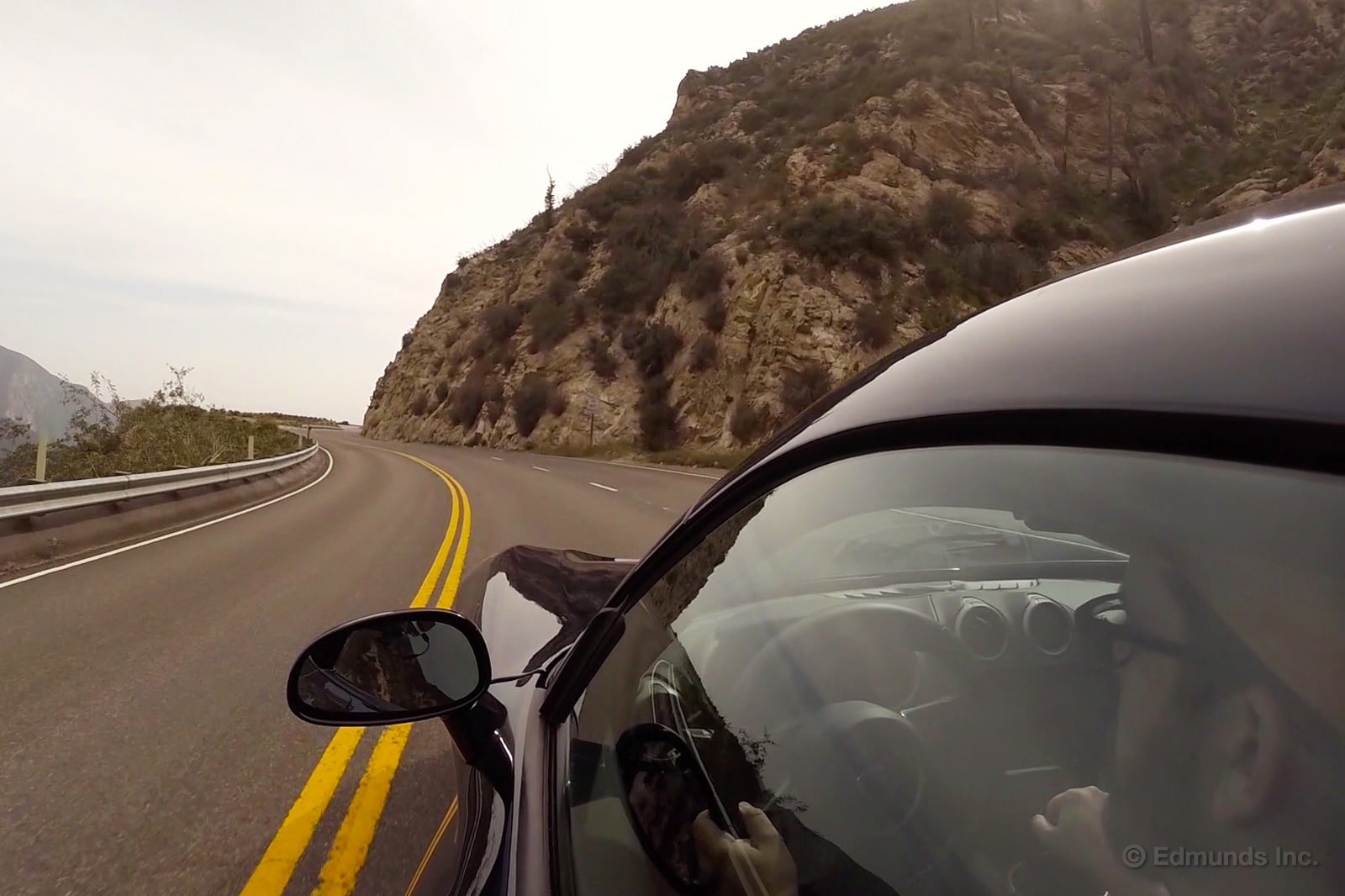
I believe I've made my feelings about our long-term 2015 Dodge Viper quite clear by now. I'm not going to bore you by repeating myself. Suffice to say that I grab the key whenever the opportunity presents itself.
The last time the Viper was in my possession, I attached my GoPro to the side and headed down a short stretch of Angeles Crest Highway, one of my favorite roads in Southern California. The audio was trash, so I decided to speed the whole thing up and present it that way.
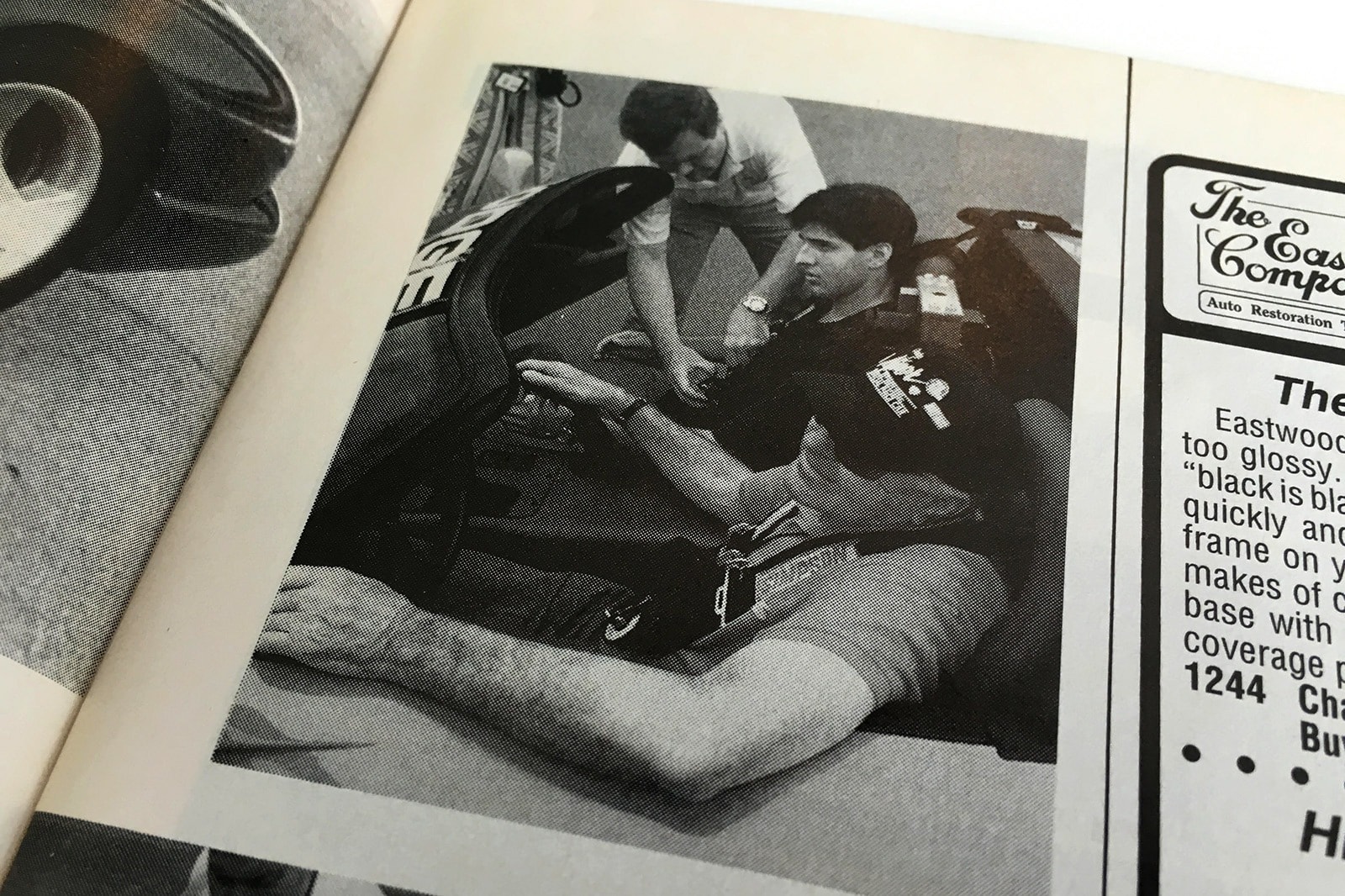
Yes, that's a picture of a 21-year old me in the very first Dodge Viper ever built. And yes that's Carroll Shelby driving. Yes, the Carroll Shelby.
We were at the Indianapolis Motor Speedway back in 1991 for the 500. Ol Shel', less than a year after his first heart transplant, was pacing the race in Dodge's soon to be supercar (sales were still about a year away) and I was fresh out of college and working at my first gig, mopping floors at Mopar Action magazine.
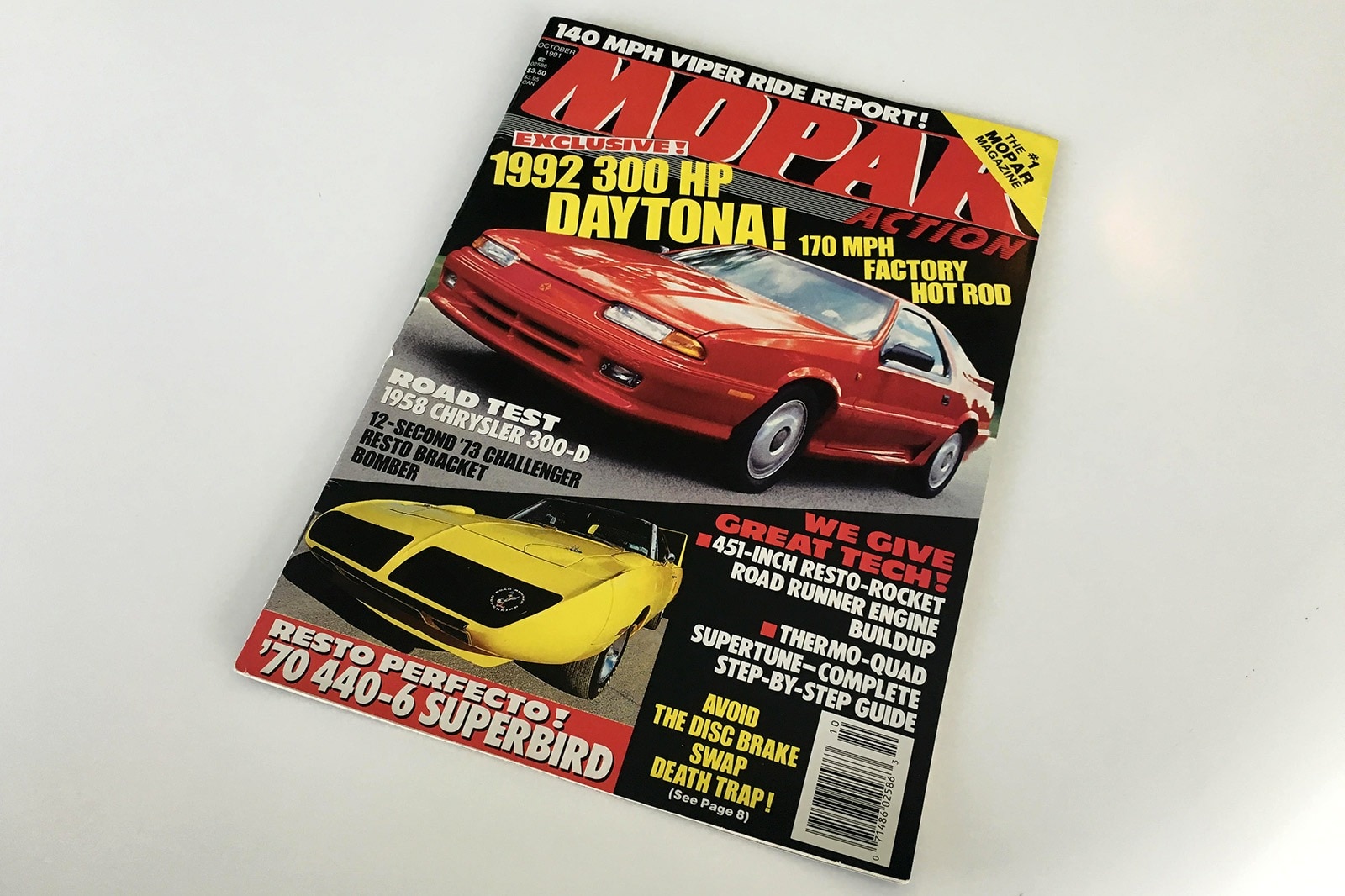
Originally the Dodge Stealth was to be the pace car that year, but when middle America realized the twin-turbo all-wheel drive super coupe was built in Japan by Mitsubishi (it was a twin to the Mitsubishi 3000GT) and would be the first pace car not built on American soil, the backlash was loud enough to put Chrysler's PR machine into swift action. Under the supervision of Bob Lutz himself the Stealth was replaced with a pre-production Viper dressed up to look production ready and then they put a "America's Enzo Ferrari" behind the wheel.
Everyone was happy. And then, they invited members of the automotive press to the track the Friday before the race to get rides in the car around the track with Shelby driving. Which is where I came in.
I've driven many Vipers over the years, but every time I drive our long-term 2015 Dodge Viper GT I think back to that day. I can't help it. I was just a kid. A kid in the presence of greatness: the man, the car and the track. It's hard to believe it was 25 years ago.
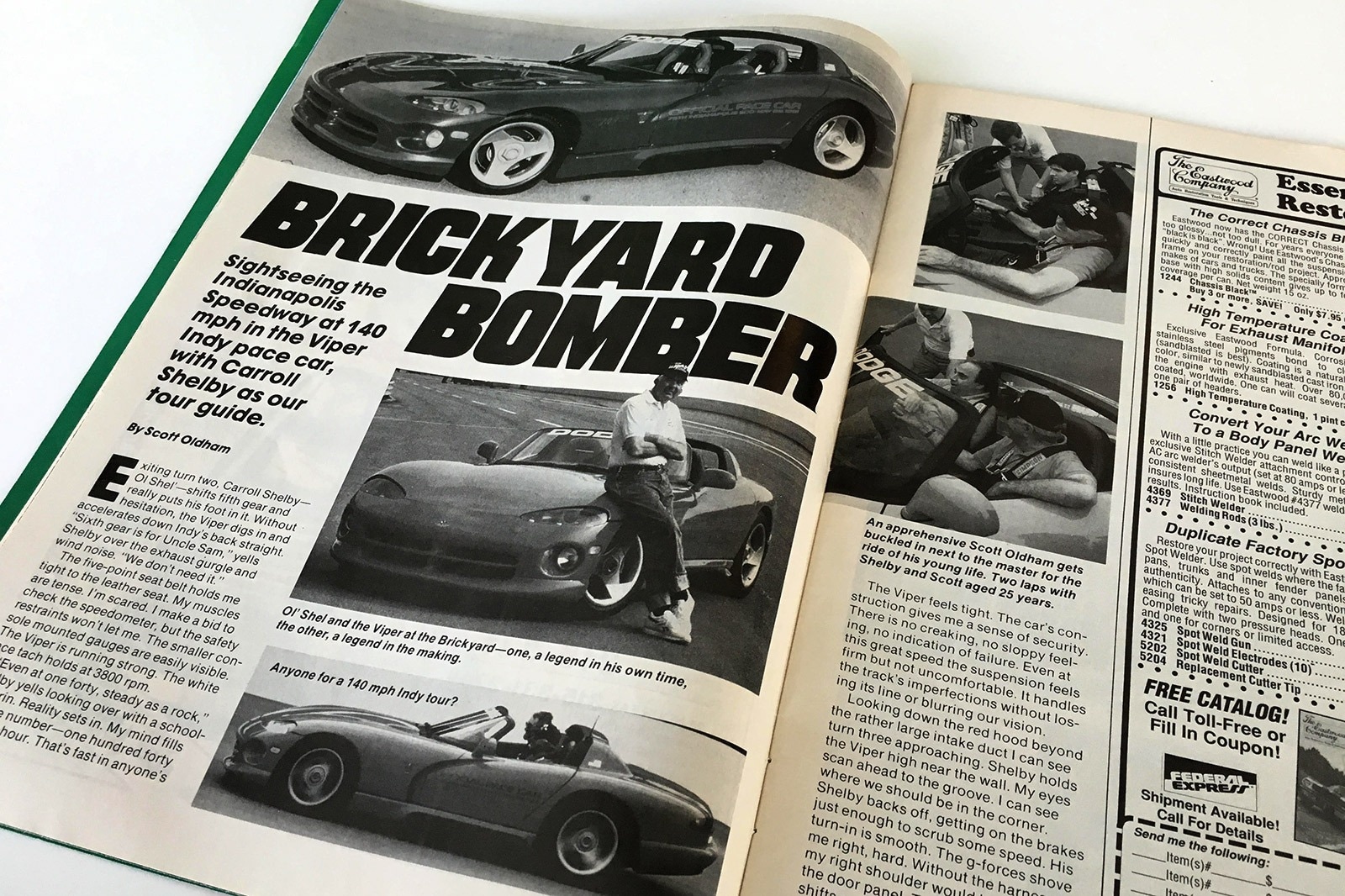
A few days later, after the race, I wrote an article about the experience, which was published in the October 1991 issue of Mopar Action. I dug it out last week and included it here in its entirety. I think it still holds up, what do you think?
"Exiting turn two, Carroll Shelby — Ol Shel' — shifts fifth gear and really puts his foot in it. Without hesitation, the Viper digs in and accelerates down Indy's back straight. "Sixth gear is for Uncle Sam," yells Shelby over the exhaust gurgle and wind noise. "We don't need it."
The five-point seat belt holds me tight to the leather seat. My muscles are tense. I'm scared. I make a bid to check the speedometer, but the safety restraints won't let me. The smaller console mounted gauges are easily visible. The Viper is running strong. The white face tach holds at 3800 rpm.
"Even at one forty, steady as a rock," Shelby yells looking over with a schoolboy grin. Reality sets in. My mind fills with the number — one hundred forty miles an hour. That's fast in anyone's book.
The Viper feels tight. The car's construction gives me a sense of security. There is no creaking, no sloppy feeling, no indication of failure. Even at this great speed the suspension feels firm but not uncomfortable. It handles the track's imperfections without losing its line or blurring our vision.
Looking down the red hood beyond the rather large intake duct I can see turn three approaching. Shelby holds the Viper high near the wall. My eyes scan ahead to the groove. I can see where we should be in the corner. Shelby backs off, getting on the brakes just enough to scrub some speed. His turn-in is smooth. The g-forces shove me right, hard. Without the harnesses my right shoulder would be pinned to the door panel. The Viper's weight shifts onto the right side tires. I can feel the suspension working. I can feel it settle in as we clip the apex. Once the suspension settles Ol Shel' gets on the power, balancing the Viper through the turn. The short shoot blurs as the Viper accelerates hard. The revs climb to 3300 rpm and hold.
Quickly turn four is upon us. Fear strikes my body. For the past month, drivers have been putting it into the wall in Four. Kevin Cogan's violent accident in 1990 was in turn four, as was Dominic Dobson's this year. As Shelby turns in, my eyes lock on the dozens of skid marks running from the apex into the outside wall. My right hand grips the edge of the windshield as Ol' Shel' compensates for some oversteer induced by the rippled groove. Again the g-forces play with my neck muscles.
Shelby quickly is back on the power, bringing the Viper up to speed. Down the front straight the tach climbs back up to 3800 rpm. 140 mph. Running on the outside at one-third the Viper's speed is a convoy of the Motor Speedway's support trucks. As we blast past each truck on the inside, Shelby graciously tosses each driver a wave. But the Viper shoots past them so fast that by the time Shelby's hand raises above the windshield we are gone.
I am starting to relax. My fingers are beginning to loosen their grip on the windshield. My neck muscles are no longer bulging. The Viper's side exhaust is shrieking a perfect mix of Hemi roar and screaming drone of a Ferrari V12 as the suspension thunks over the famous yard of bricks marking the start/finish line.
Pit wall ends fast and we are quickly into turn one. Another smooth corner and another g-force shove to the right. The belts hold firm.
Turn two is also smooth and steady, the tach reading 3300 rpm throughout the corner. Again the g-forces play with my insides. As we exit up to the wall, Ol Shel' is quickly back on the power. The tach rebounds up to 3800 rpm fast. Again we are cruising at 140 mph down the back straight, only this time the clouds begin adding moisture to the equation.
By the time we are halfway down the straight the rain is exploding on the windshield. I figure the ride is over, but Ol Shel' never lifts. He keeps the speed up at 140 mph, never hesitating. When turn one arrives, I am scared again. My hand returns its grip to the edge of the windshield and my muscles tense.
I can see the track is damp. But just as before, Shelby lifts and scrubs speed as he turns. The Viper miraculously holds the line. Nothing new. The rain stops but the short shoot is damp. Notorious turn four is back again. Shelby turns in. The Viper bites hard. By the apex we are running up the butt of a support truck sitting in the groove.
Shelby doesn't blink. I, on the other hand, give every muscle in my body a squeeze as Shelby moves right, taking the Viper out of the groove onto the gray area to avoid the truck. From watching time trials I know the gray area is bad news. I know we aren't supposed to be out there. Dominic Dobson slamming the outside wall is in my thoughts as the Viper flies over the dozens of skid marks. Ol' Shel' gets us around the truck and onto the front straight beautifully.
As he decelerates down the straight and pulls into the end of pit road, we are both sporting smiles Jimmy Carter could call his own. The Viper felt great. It possesses the straight line speed and cornering capabilities to make it a world performance leader.
"A year ago I thought I would be staring at the roots of daisies," jokes Shelby. Not you Ol Shel'. The Legend grows."
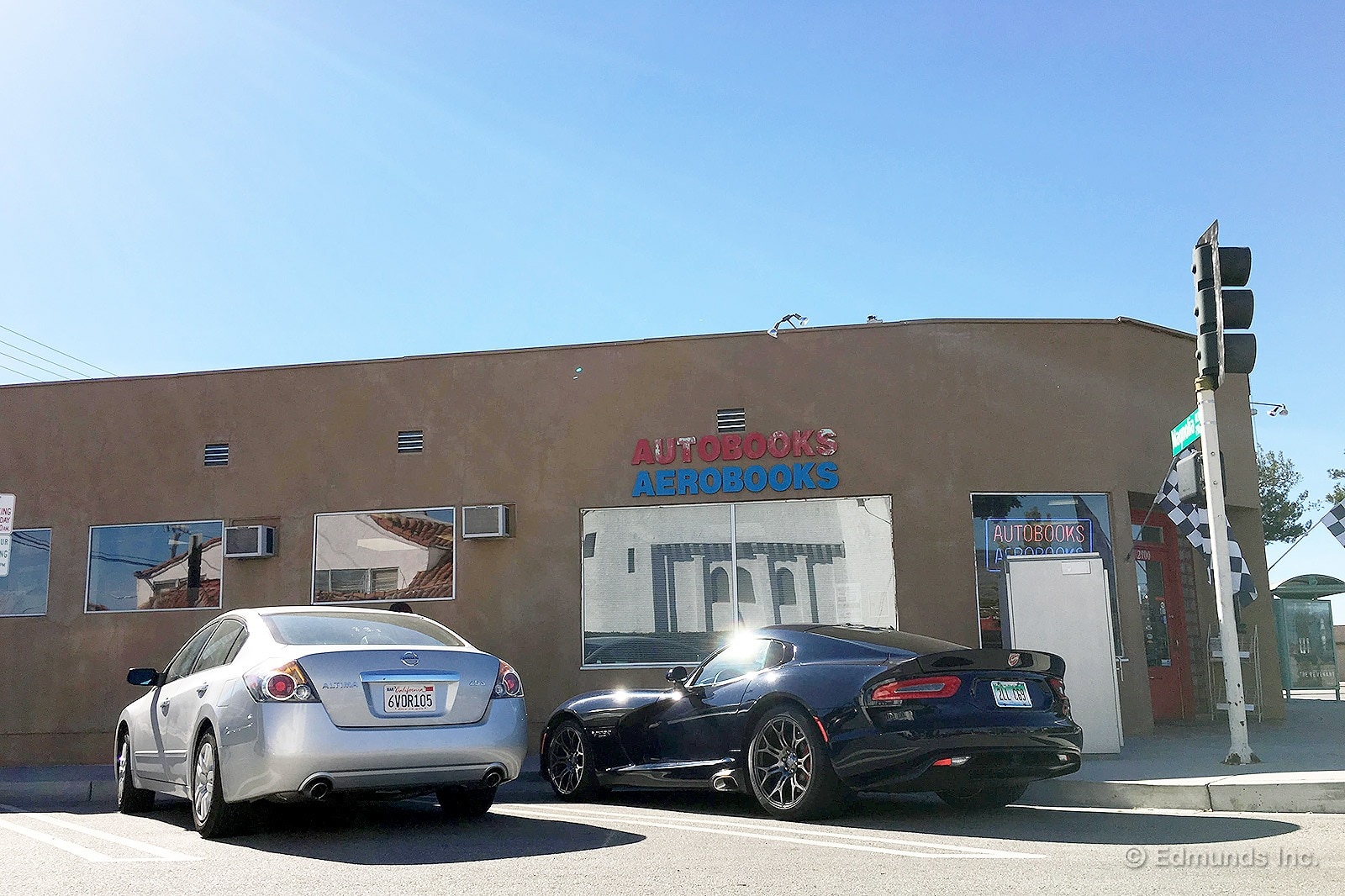
The debate rages on. Can you drive a Viper every day?
After living with our long-term 2015 Dodge Viper GT for 11 months and over 19,000 miles some members of our staff say yes while some say absolutely not.
I'm in the yes camp. I would happily drive our Viper every day. But I admit the circumstances have to be right.
Here are a few tips to fitting a Dodge Viper into your daily life.
Live Close to Work: I live about nine miles from the Edmunds office, which takes me about 30 minutes as I wind my way through the surface streets of West Los Angeles. It's long enough to be considered a commute, but it's short enough to be fun in the Viper.
Be a Real Gearhead: I'm obsessed with cars. Obsessed. All cars. Old. New. But, for me, personally, cars aren't about need. They're about want. Any car can get you there. Even cars you don't want. I want to want my cars. I want my cars to be more than transportation. And that usually comes with some sacrifices. I'm okay with that. The Viper is all about want.
Pad the Pedals: If I really owned the Viper and was going to drive it every single day I would make one small modification to increase its driver comfort. I would pad its pedals. The pedals in the Viper, which include its dead pedal, are raw aluminum. And they are hard. Hard. They look cool. And the gearhead inside me digs the statement they make, but rubber covers would go a long way. What can I say, I have sensitive feet.
Make Peace With the Mileage: If you drive a Viper every day you're going to purchase a lot of gas. In city driving the Viper averages about 10 mpg and needs a fill up every 140 miles or so. This reality comes with the obvious expense, but the short range also increases the hassle factor as you must take that additional time at the pump. Follow tip number one and this isn't as large an issue. My 20 mile round trip to work means I can eke out a week's worth of driving per tank. Still, for some, filling up every week will get old and financially taxing. I would get around the financial impact by forcing my young children into the workforce.
Enjoy it: The Viper is about joy. So enjoy it. Hear it. Feel it. Drive it. Really drive it. Don't talk on the phone. Don't think about work or your mortgage or that judgmental look from the Bernie supporter in his vegan Prius. And absolutely don't text. Let the Viper be your joy. Your escape. It's not a pod, so don't treat it as one. It'll put a smile on your face if you let it.
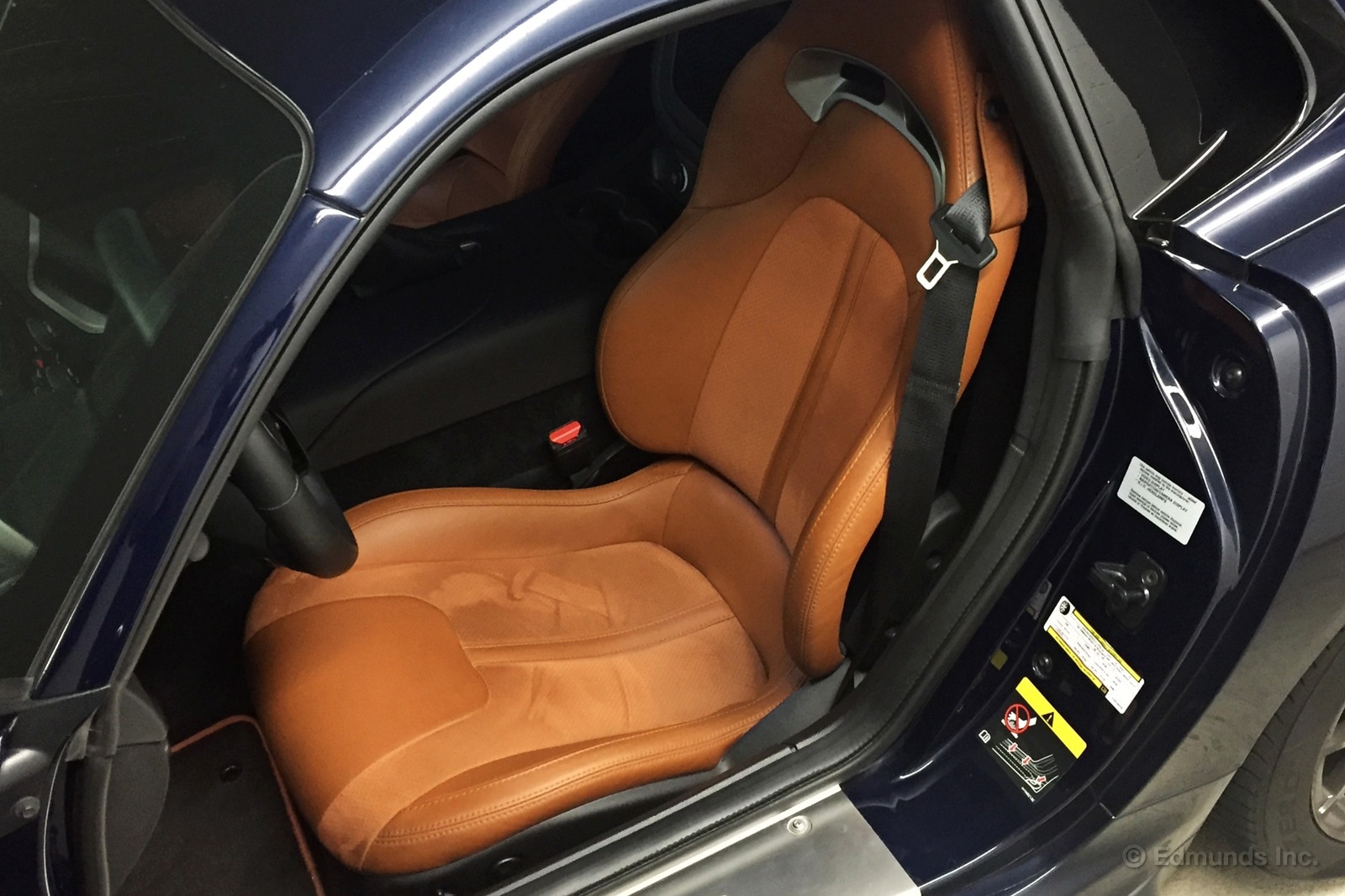
I don't care what Magrath says, the seats in our long-term 2015 Dodge Viper are shaped perfectly.
The Viper has a lot of problems with comfort and visibility, but I find it difficult to fault the seats. The bucket may look weird with the high, mandatory lumbar, but it works perfectly to keep me planted. When combined with the supportive but not too aggressive side bolsters, I never feel like I might slide or fall out of my seat. This is especially important in a car that can move through corners as quickly as this one.
The seat bottom and and lumbar curve along my sides and back just how I like it. I concede that there is next to no adjustability. Up, down, forward, backward and tilt. That's it. The pedals adjust, but there's nothing in the way of lumbar, bolster or thigh adjustment. That might put off other drivers, but I like the shape and wouldn't adjust it much anyway.
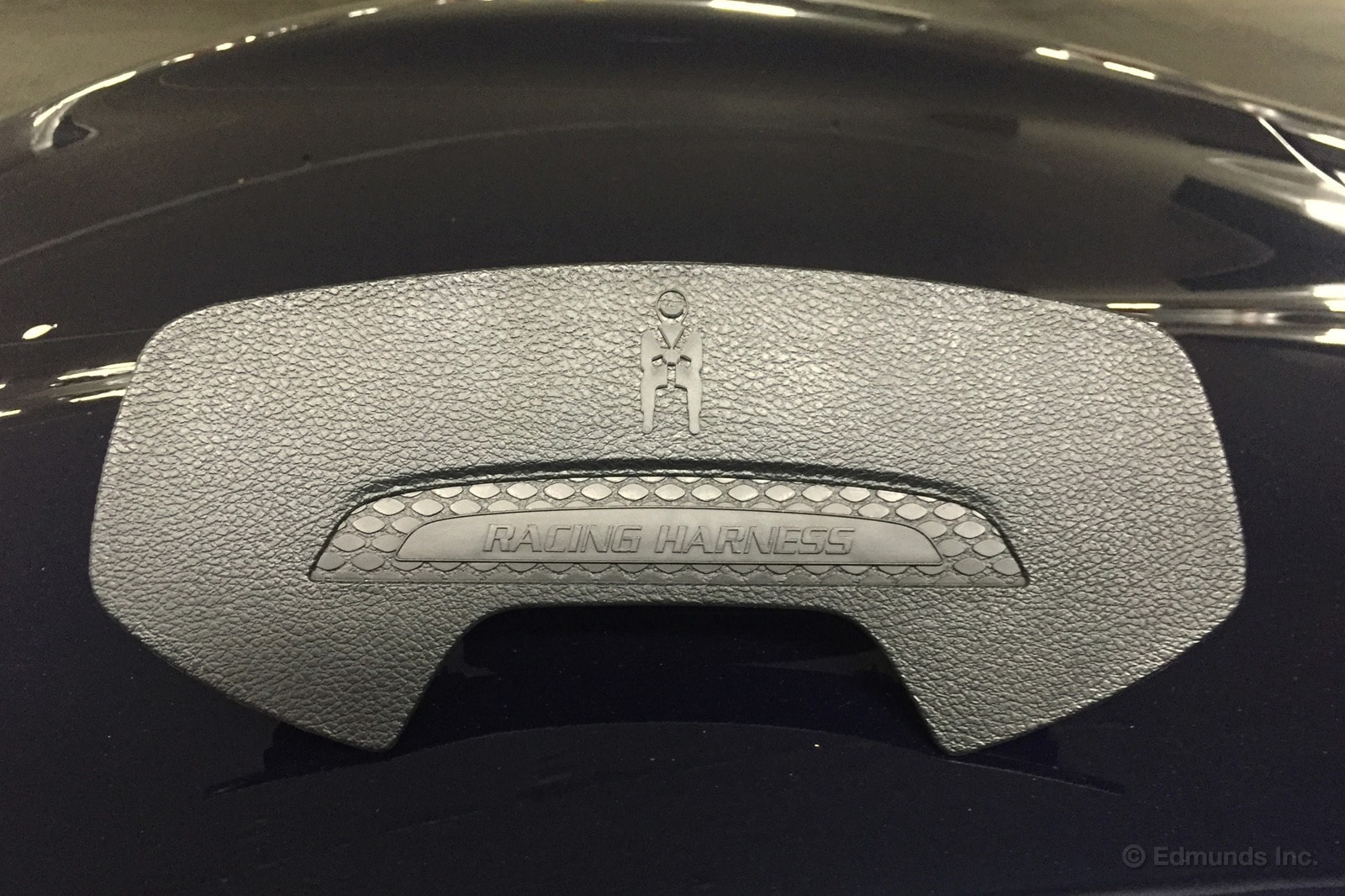
The seats have a passthrough for a harness. If you scoot the seat forward and remove this panel, you'll find mounting points on both sides. A cool feature and something I can genuinely see Viper owners using.
There are plenty of bad seats out there and at least a couple in our long-term fleet, but I don't count these among them.
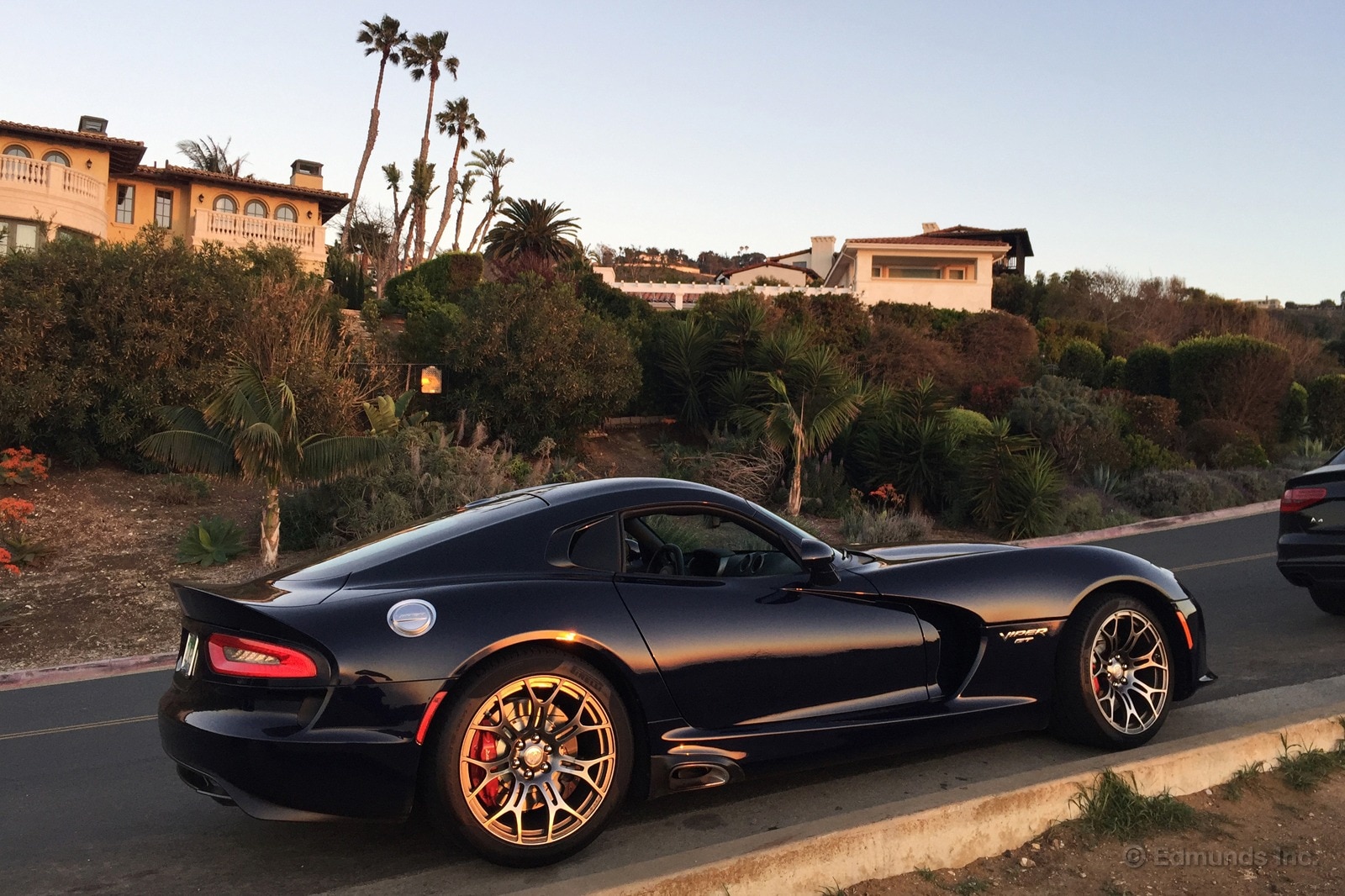
All good things must come to an end, and so goes my time with our long-term 2015 Dodge Viper. I knew it wouldn't be around forever, but that doesn't make me any less sorry. I've really enjoyed every curve, every shift and every time the rear starts to slip when you flat foot in through first, second and third.
I started at Edmunds as an intern in May of 2015. One of my first assignments was to write the car's introduction. I was excited to have it in the test fleet, even if it was months before I got more than a few minutes of seat time. When I finally did, the car failed to disappoint.
I was never a huge fan of the previous Vipers. I had a bit of seat time in a 1994 Viper owned by a family friend, but, as exciting as it was, I never pined for one. In truth, I grew up in a GM family. My father has owned 17 Corvettes over his life, five since I've been around. I appreciated the Viper, but it was always the wild and raucous American sports car. It may have been faster than the Corvette, but, to me, it was never more appealing.
Things have changed with the current Viper. It's still fast and wild, but it's also a bit more refined. I'm still not sure if I would buy one, but I'm not sure I would go out and get a Z06 either.
Production ends on the Viper next year. While it may not be the car for me, I'm happy that it exists. The car is a riot and it makes everything else on the road seem milquetoast in comparison. At least for a few moments.
Goodbye, Viper. I'll miss you.
5 Things I Learned About the Viper Fighting Juvenile Diabetes
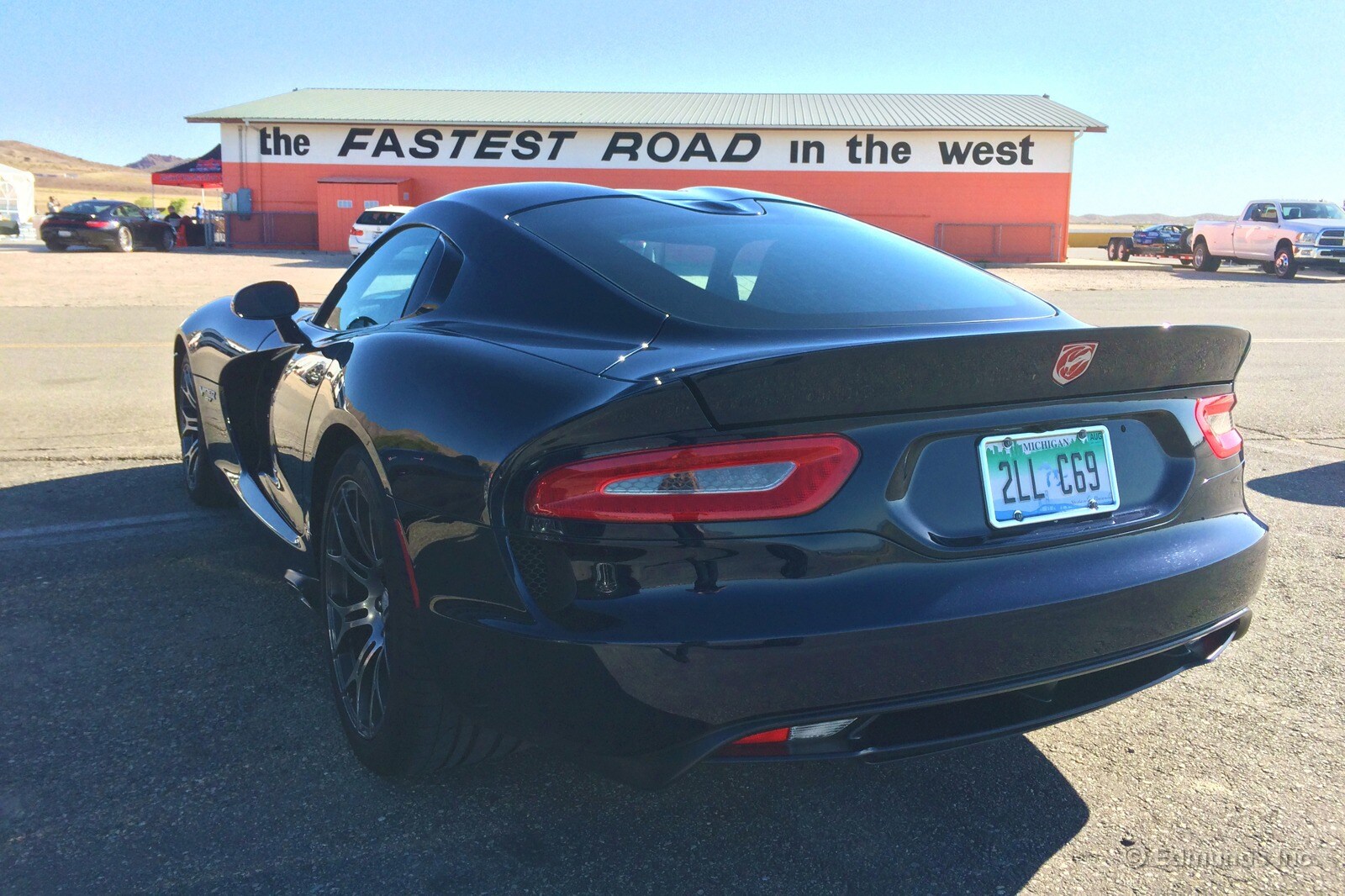
The LA Car Connection and Juvenile Diabetes Research Foundation have hosted an annual track day for the last five years to raise money for the fight against Type 1 Diabetes. The event draws a good crowd and with it a good group of cars — the types of cars that are too often locked in temperature-controlled prisons rather than running wild as they were meant to.
But not today.
For the second consecutive year, Edmunds was invited to join the good battle for the cause. So, we brought the along the most potent weapon in our arsenal, the 2015 Dodge Viper.
At the typical club-organized track day, a Viper is a Great White among guppies. But the waters at Willow Springs were especially chummy for this event, attracting the likes of more than a few late model Porsche GT3 RSs, Chevrolet Corvette Z06s and a scattering of other exotic species.
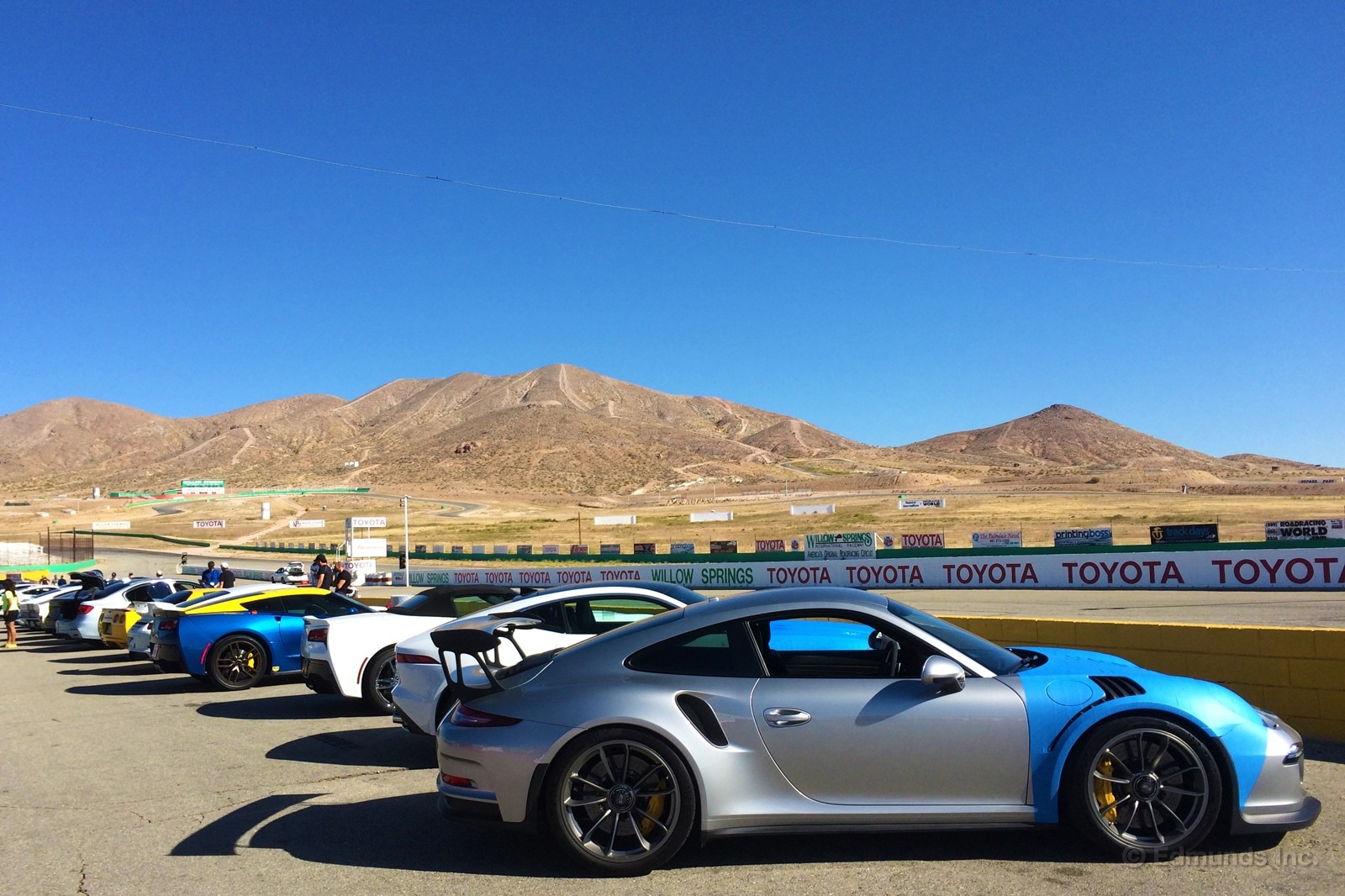
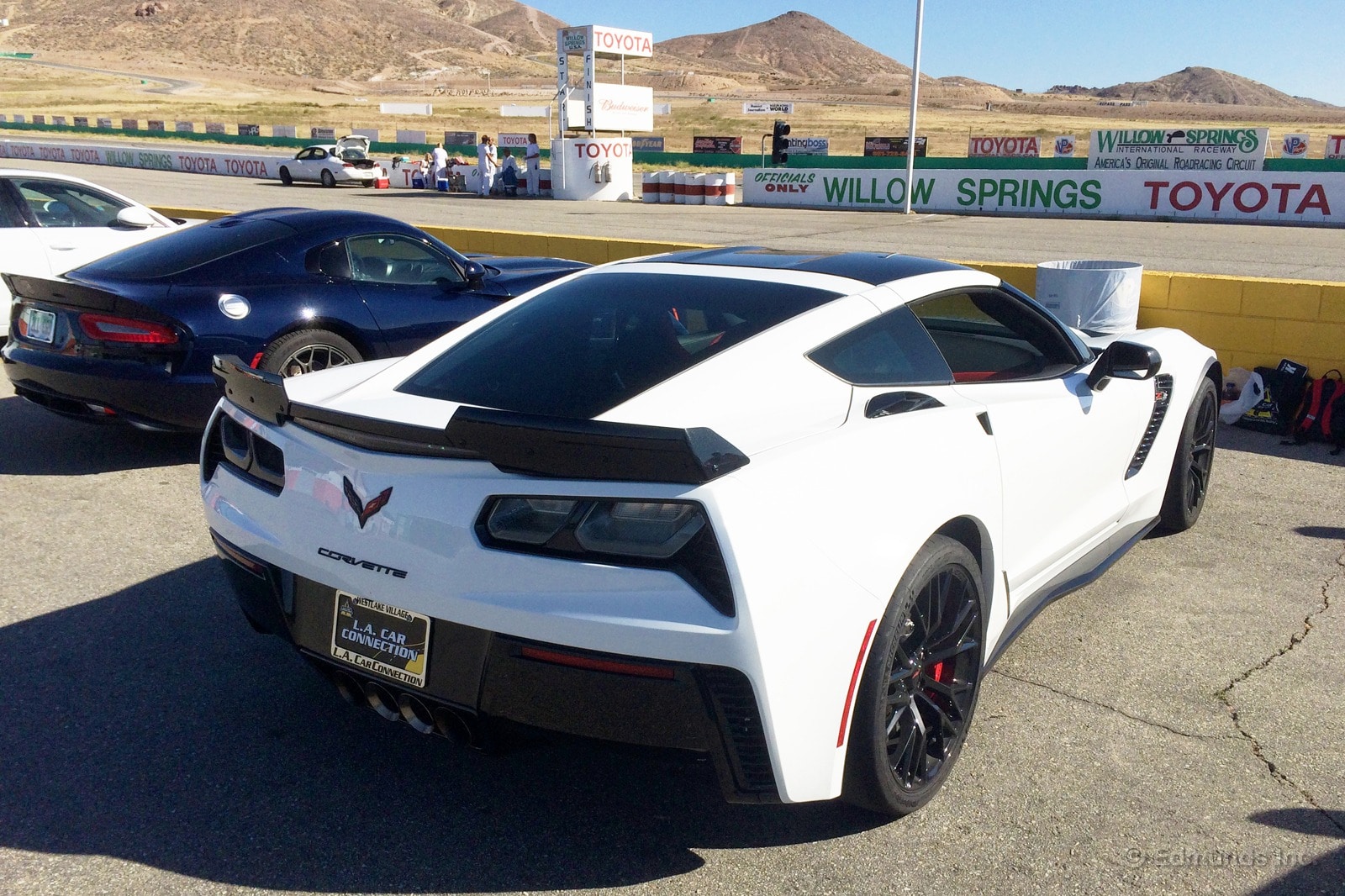
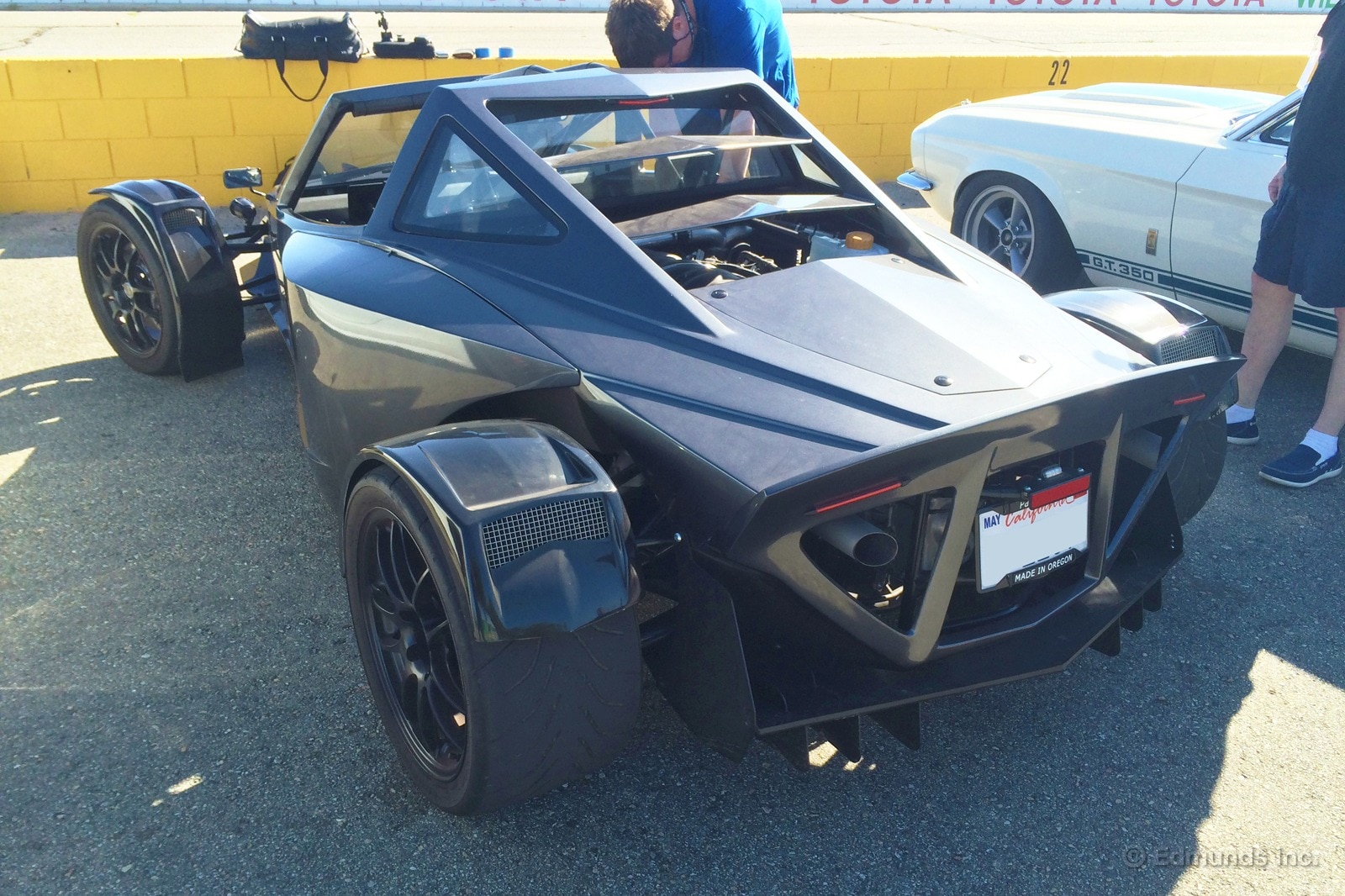
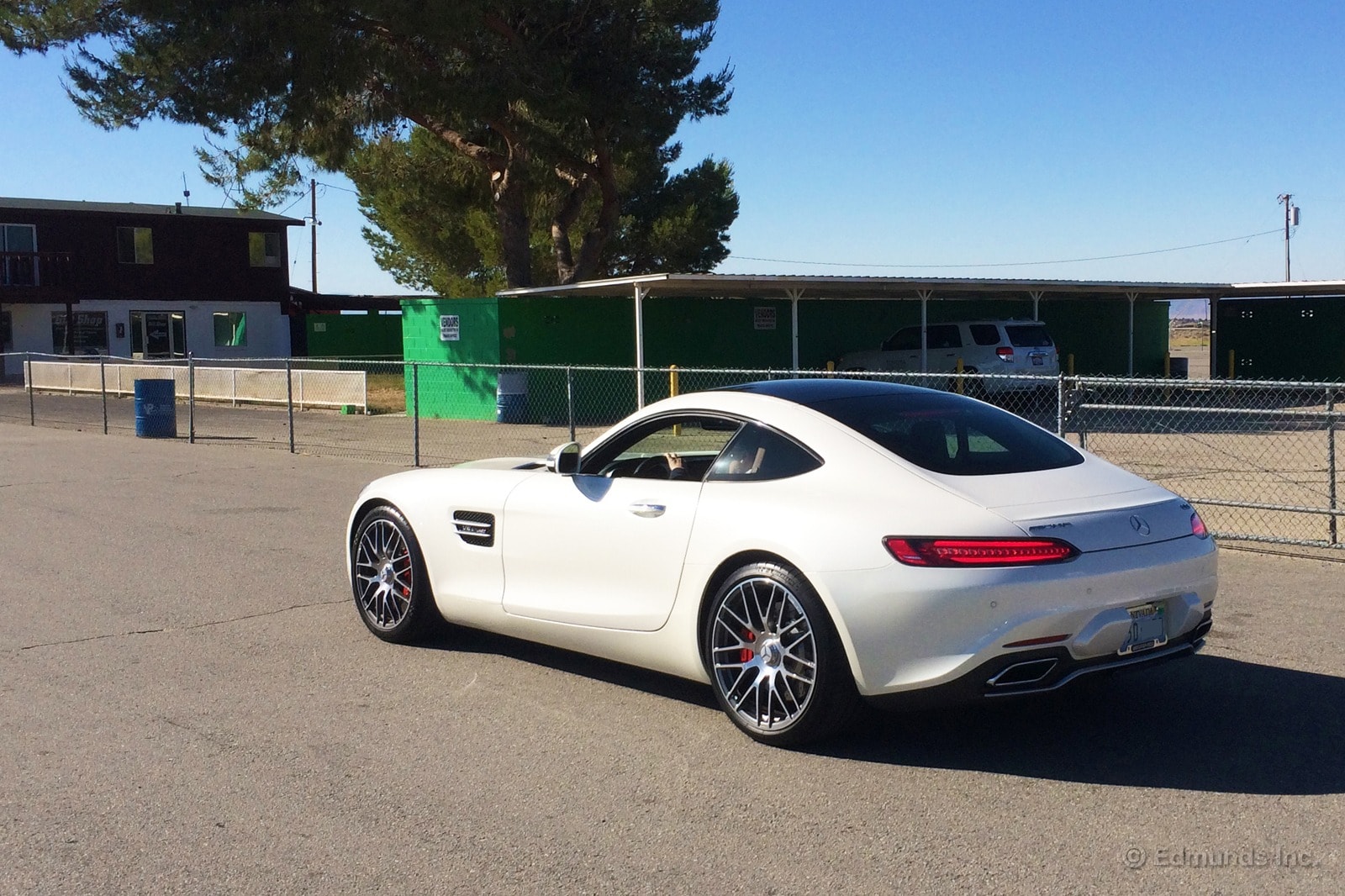

Despite the wealth of eye candy rolling around the pits, the lowly Viper managed to draw a good share of curious passengers, many of which were convinced shortly after that it could warp the laws of physics. Having never driven our Viper on a track before, I learned a few things myself after turning fun laps for four sweaty hours in the saddle.
1. The seats are great for the track, but suck on the street.
I agree with both Magrath and Reese on some levels, but have a few of my own thoughts regarding the Viper seats. The two hours or so I spent driving from our office to the track, were in some ways more brutal than my four hours of track time. I actually found the lumbar support to be insufficient in my usual "cruising" seat position, or maybe it's supporting the wrong area. Either way, it took a toll on my lower back. On track, adopting a more vertical seating position, like Magrath mentioned, provides back support where it's wanted along with proper steering wheel leverage. I'm 5'9" and sit with the seat as low as it goes, so the head clearance isn't an issue even with a lid on. This is comfortable from a support standpoint, and best experienced in intervals lasting 20-30 minutes tops.
2. It needs door padding.
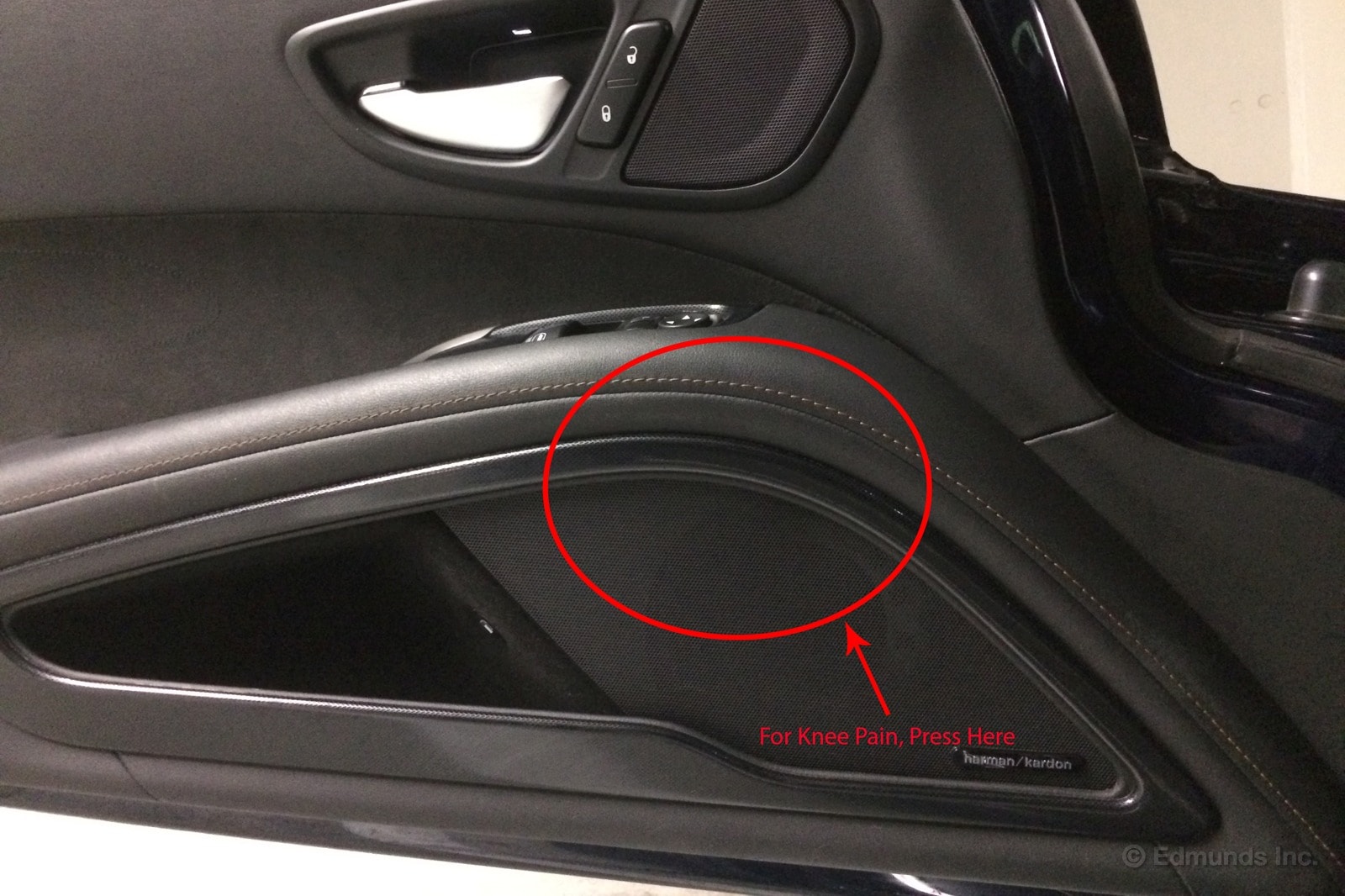
As good as the seats' bolsters may be they don't fully counteract the g-forces the Viper generates while cornering. This became apparent when I got home at the end of the day and thought someone had taken a hockey stick to my left knee. The bruise was from subconsciously bracing off the door as I lapped around a track comprised primarily of long-sweeping right turns. The hard speaker surround lined up perfectly with my knee contusion, and a steady drip of the adrenaline throughout the day kept me from noticing until later that night.
This is not a new concept. In fact padding is sufficient for the right knee along the center console where most would likely lean against.
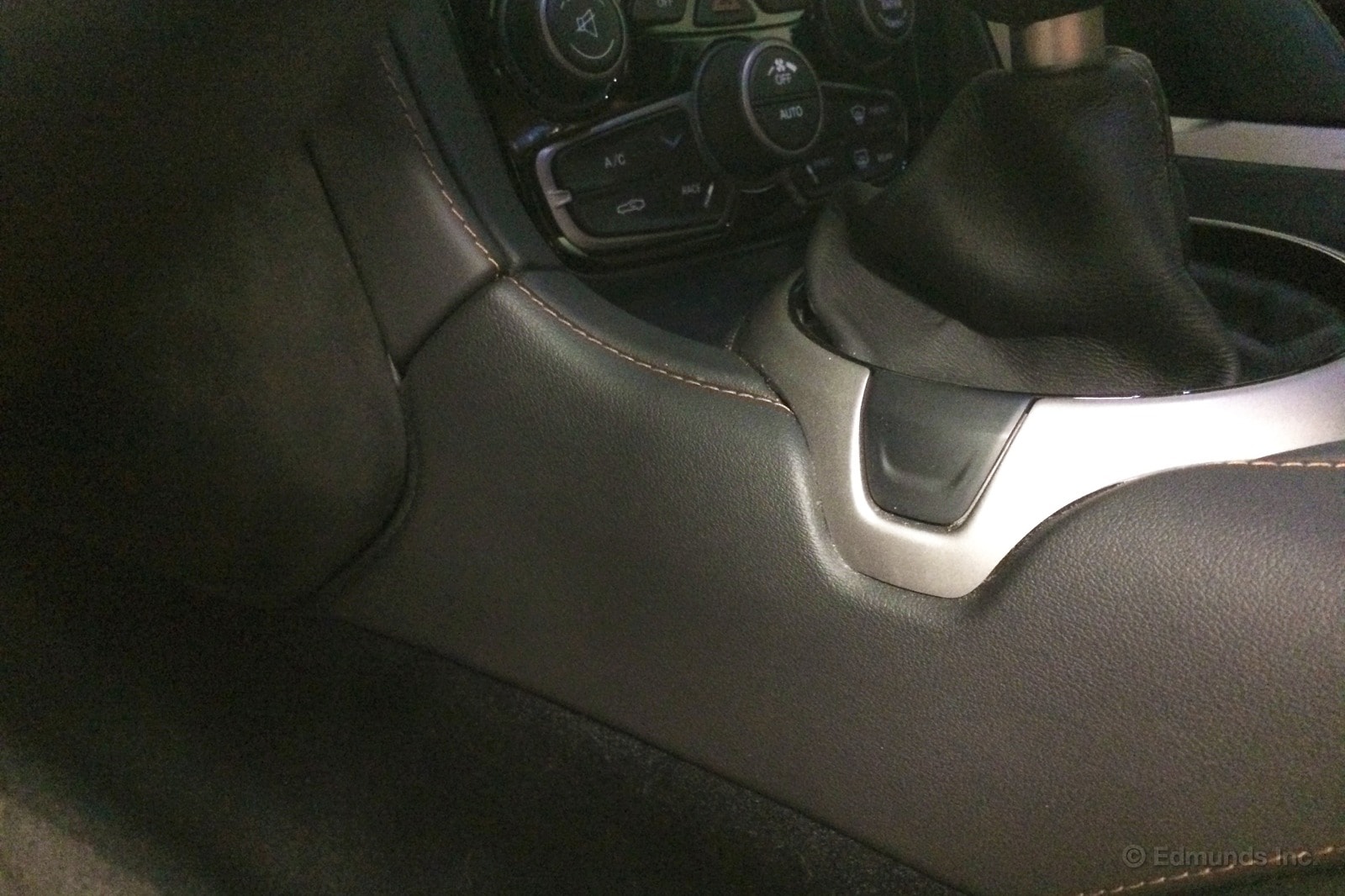
It would be ideal to have something similar to what Scion did with their FR-S.
3. The steering wheel radio controls are poorly placed, especially for track use.
When negotiating a turn at 120 mph, something that isn't conducive to hitting your apex is a sudden crescendo of Mariachi band music blaring in the cabin. Like many other Dodge/Chrysler vehicles the volume and station controls are directly behind the 3- and 9-o'clock wheel spokes.
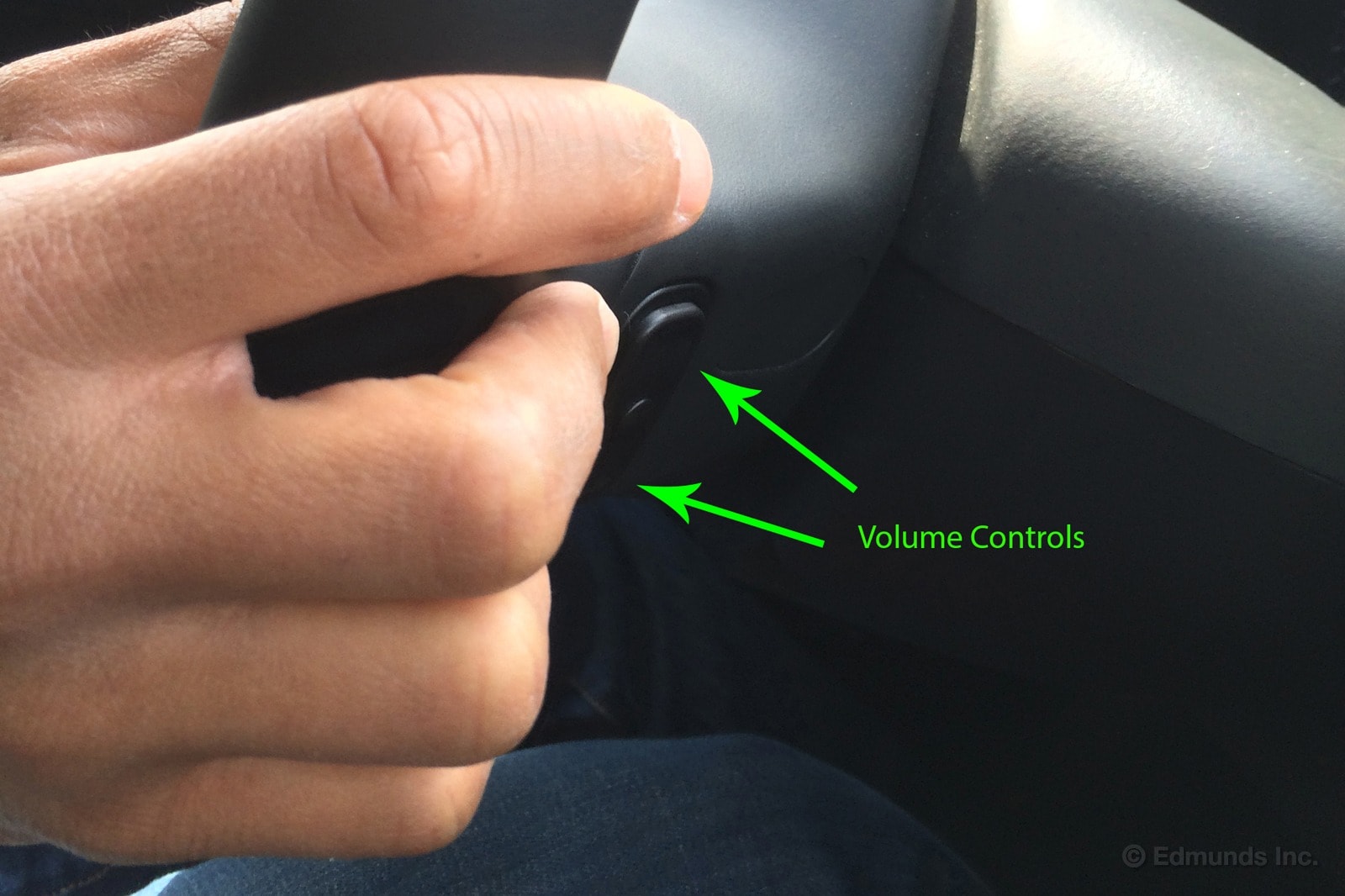
This also happens to be the exact space your fingers occupy if you're gripping the steering wheel properly.
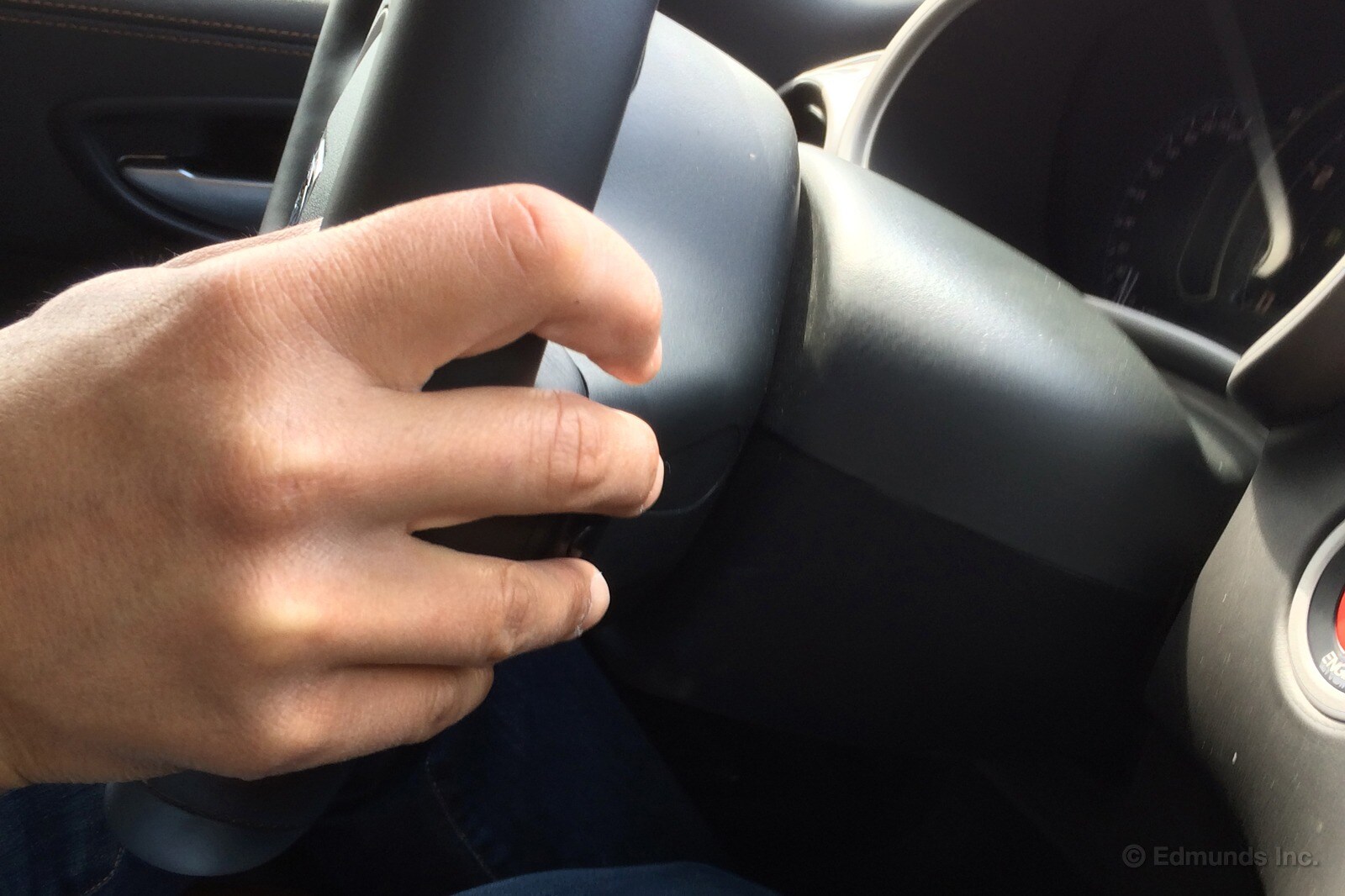
This may make for easy stereo adjustments while idling through traffic, but they were hugely distracting when I kept pressing them inadvertently, resulting in the scenario above. For a vehicle as track focused as the Viper, these buttons have no business hanging out here.
4. The pedals are closer together than you think.
This is not a complaint, but rather an observation. Have a look at the pedal arrangement below and you'll see where the brake and accelerator live in relation to each other.
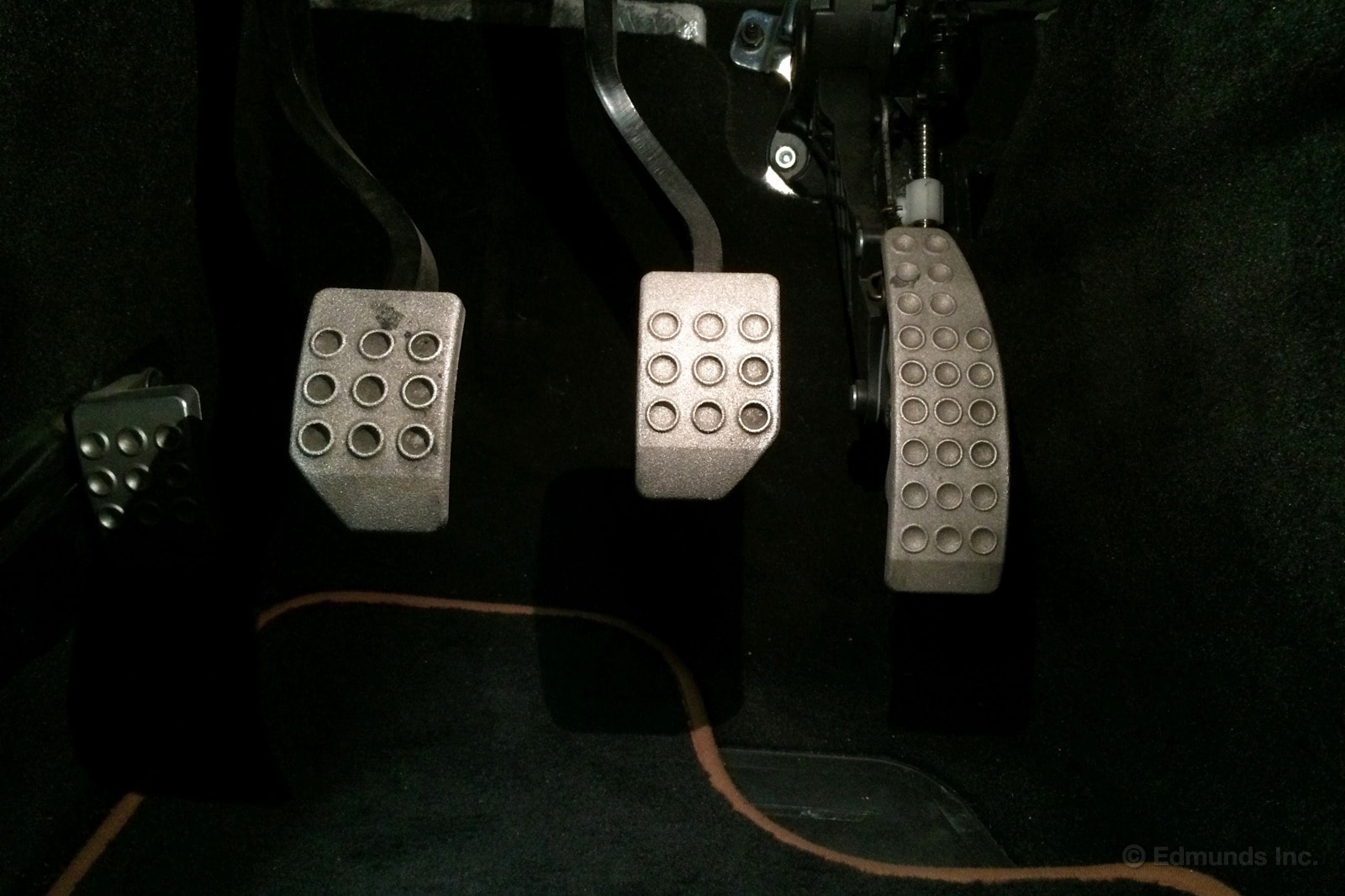
We've blogged about optimal pedal placement for heel-and-toe shifting before, and the Viper is a textbook example. However, after running a bunch of laps on a hot day, even the Viper's rock-solid brake pedal will begin to soften a little. It was here that I ran into the occasional issue of just grazing the accelerator under maximum braking.
If you aren't careful with your foot placement, or wear wider shoes, this can happen to you, too. The sensation feels a little like sudden-onset brake fade which is frightening, when in reality you're really just pitting the brakes against the engine momentarily.
As soon as I figured this out I paid extra attention to my foot position while braking and it was no longer an issue.
5. Opening the hood is an easy way to inspect front tire wear.
Checking rear tire wear is as easy as putting an ear to the ground at the rear bumper, but often times front end overhang makes it harder to see the front tires following the same method. The Viper is a perfect example here.
The solution for this is to crank the steering to full lock to get a better peek at the front tread — but oh, what a hassle! Behold the Viper hood, unlatched.
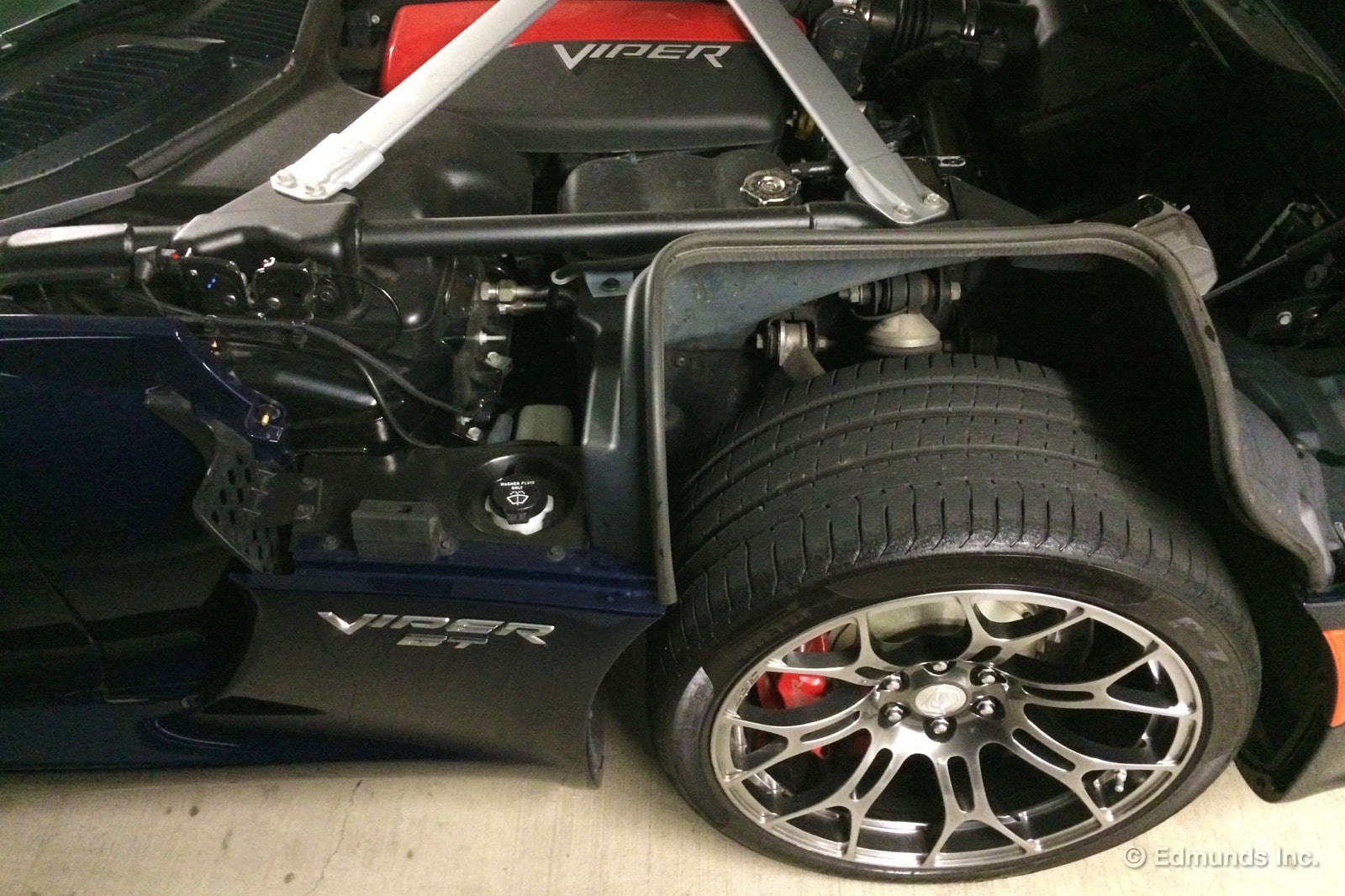
By popping the hood, you gain instant and full visual access to both front tire treads. Your freshly caned V10 will also welcome the breathing room.
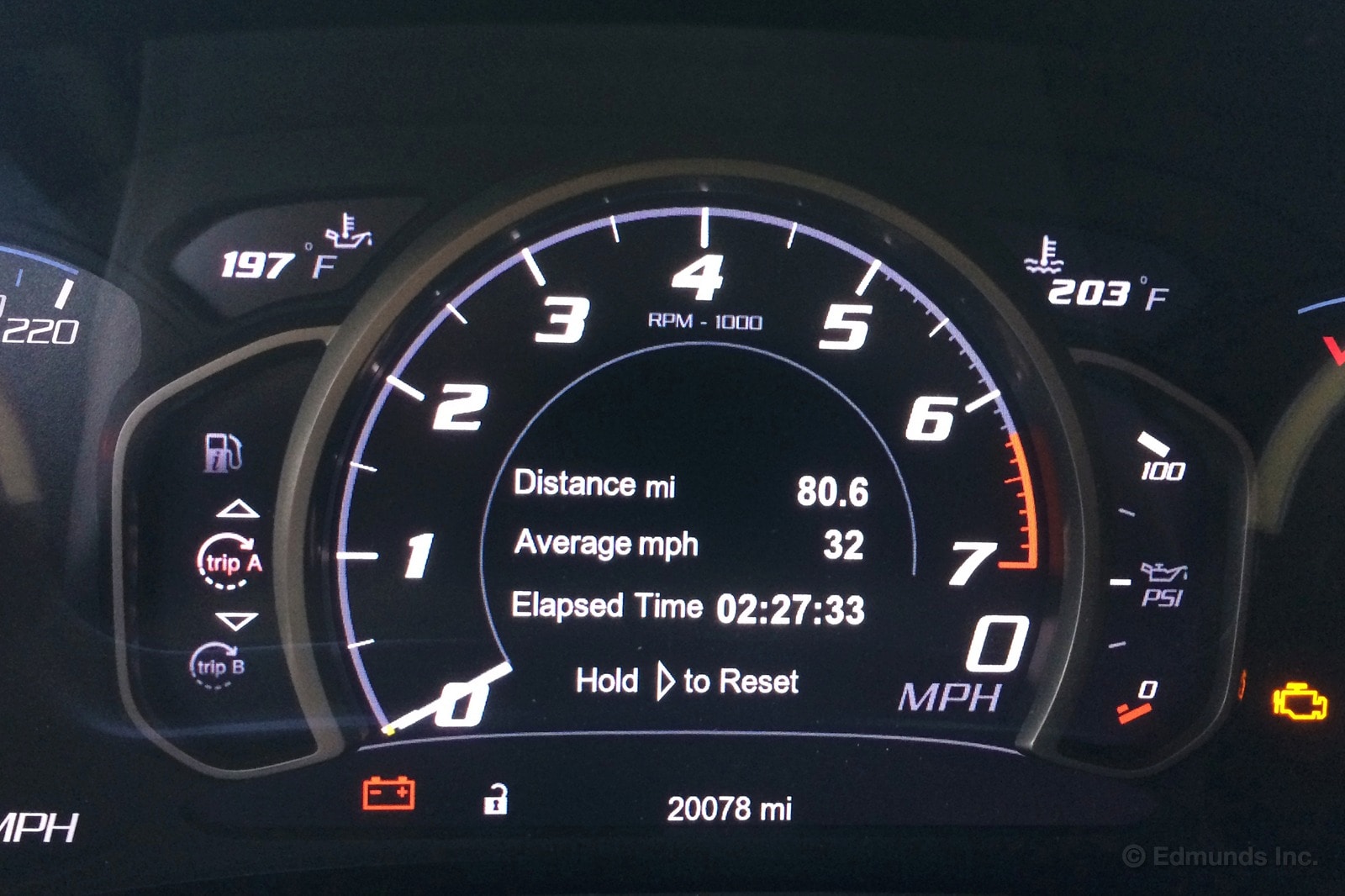
Our 2015 Dodge Viper flew over the 20,000-mile mark the way it was meant to — on a race track at wide open throttle.
"Would you buy one?" my passenger asks, climbing out after a few hot laps around Big Willow. "Because I think I really want one now."
I tell him that it isn't really my style, so probably not. But I empathize with his sentiment: adrenaline can be a powerfully addictive drug.
If I had the means to own a Viper and only use it for track days, I might want one, too. But living in the real world with it is another story. Over the last 10,000 miles, the Edmunds Editorial team seems to have been divided into three camps: the ones who would own a Viper, those who thought they might but changed their minds, and those who avoid it at all costs.
One thing that's indisputable is how well the Viper has held up during its relatively rough life with us. Aside from the recalls earlier this year, a round-trip cross-country journey, a handful of hard track days and countless casual thrashings on nearby mountain roads have done little damage beyond an extravagant tire change.
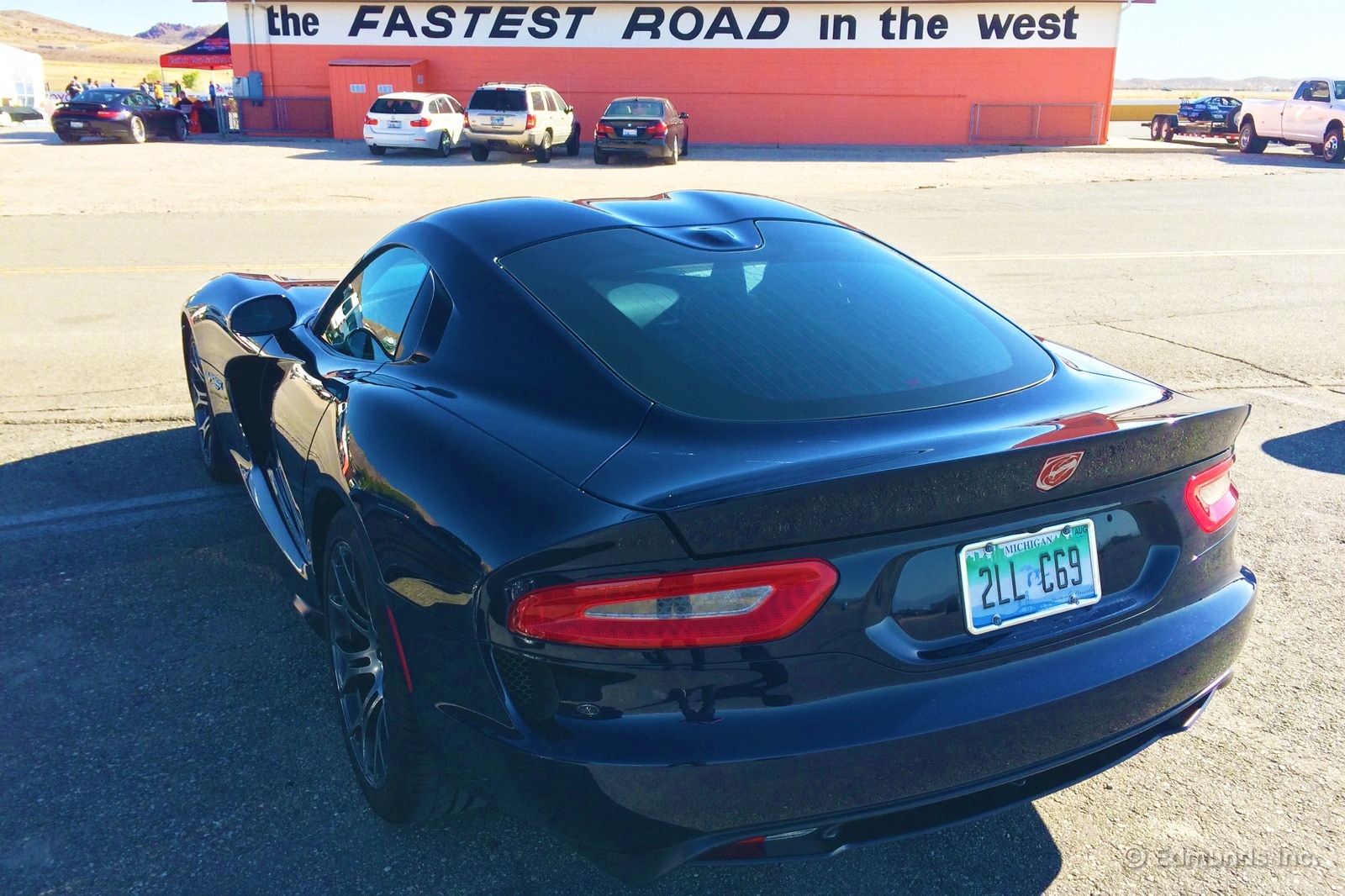
We're coming up on the Viper's one-year anniversary with us, which means its days are numbered. I think on some level we'll all hate to see it go, but we'll love to watch it leave.
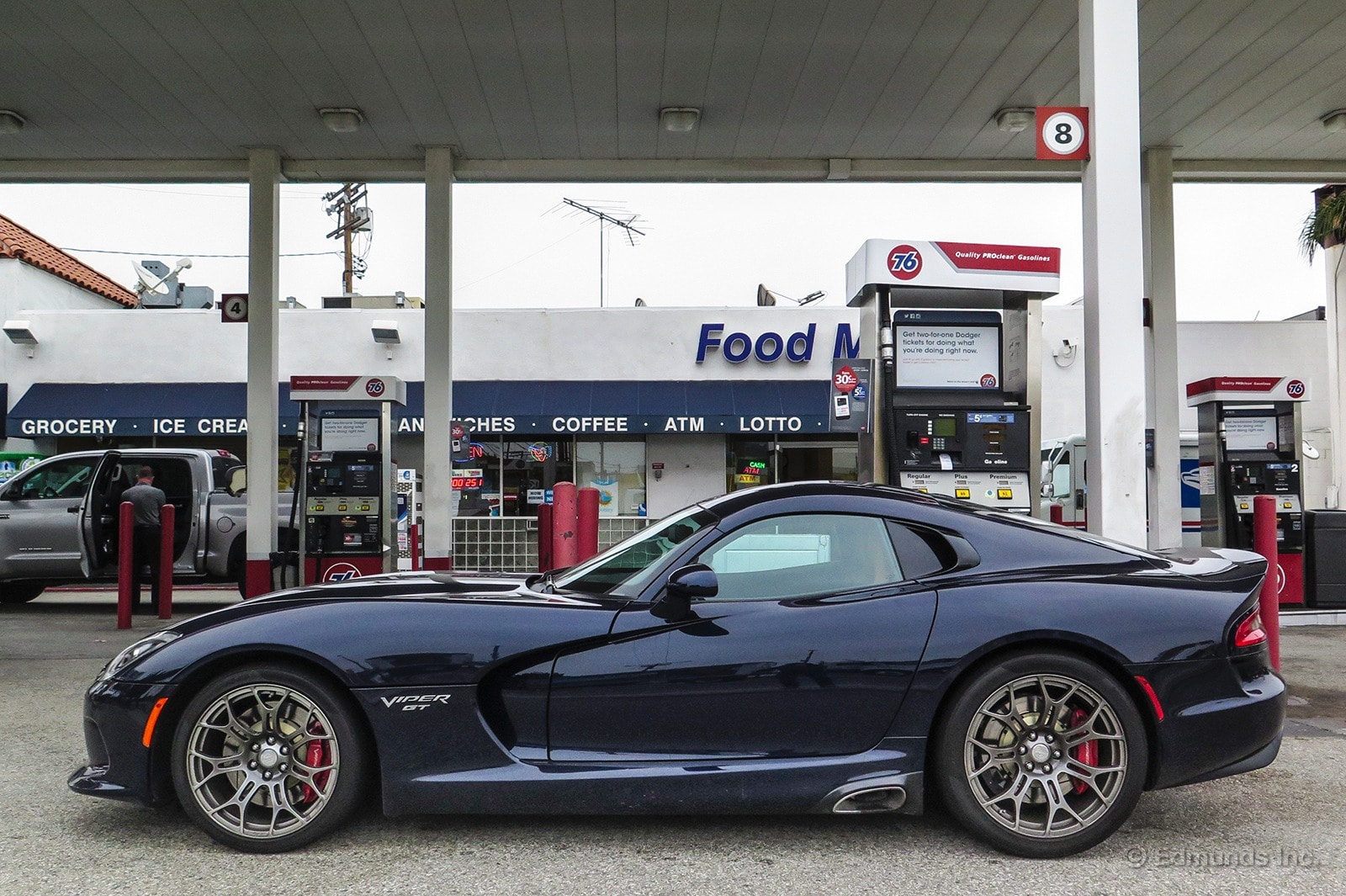
We've been remiss. We didn't update our long-term 2015 Dodge Viper's fuel economy last month. As an apology, here's a two-month update on the V10 powerhouse that currently sits at the top of our in-house leaderboard for worst MPG.
Between March 31 and June 1, we added 2,000 miles to the Viper's odo. We crossed the 20,000-mile mark, took it to a track day and, much to the satisfaction of Kurt Niebuhr, we lowered the Viper's lifetime average fuel economy from 14.5 mpg to 14.0 mpg.
Also, there's a reporting error to correct. Our previous "worst fill" mpg was listed as 6.2 mpg. While the Viper did achieve that hilariously low number, it was during track testing. Since that includes multiple launches and nothing we'd consider real-world driving, we normally throw that fill out of the equation. Now though, we've corrected our spreadsheet and you'll be happy to know that the worst fill has gone up to a whopping 7.0 mpg.
Worst Fill MPG: 7.0
Best Fill MPG: 27.2
Average Lifetime MPG: 14.0
EPA MPG Rating: 15 Combined (12 City /21 Highway)
Best Range: 294.3 miles
Current Odometer: 20,575

When I first arrived at the Memorial Day barbecue, I parked up the street, away from the action. But then, my friend Matt, one of the hosts, asked what I was driving.
"The Viper," I said. His eyes lit up. I volunteered to pull it into the driveway for official car-guy inspection. Suddenly playing cornhole could wait. There was a new centerpiece at the party: the Edmunds long-term 2015 Dodge Viper.
"How fast have you taken it?"
"Is it turbocharged?"
"8.4 LITERS!?"
"How much does it cost?"
"Is it all carbon fiber?"
I fielded all sorts of questions about the Viper, its competition and what other cars my job has allowed me to drive. A few of the guys took photos, others wanted to sit in it. One jumped on Snapchat to document the experience. Another connected via Facetime to his brother in South America, just so he could share the experience of looking at such a wild American supercar.
A few of the guys' wives/girlfriends came out to see what all of the fuss was about. You could almost hear their eyes' collective eye-roll at our collective dude moment around the car. One scoffed at the Viper and said something vaguely disapproving like, "Ugh, I totally wouldn't date a guy who bought this. Such a show-off car."
"Why not? I think it's sexy," another responded.
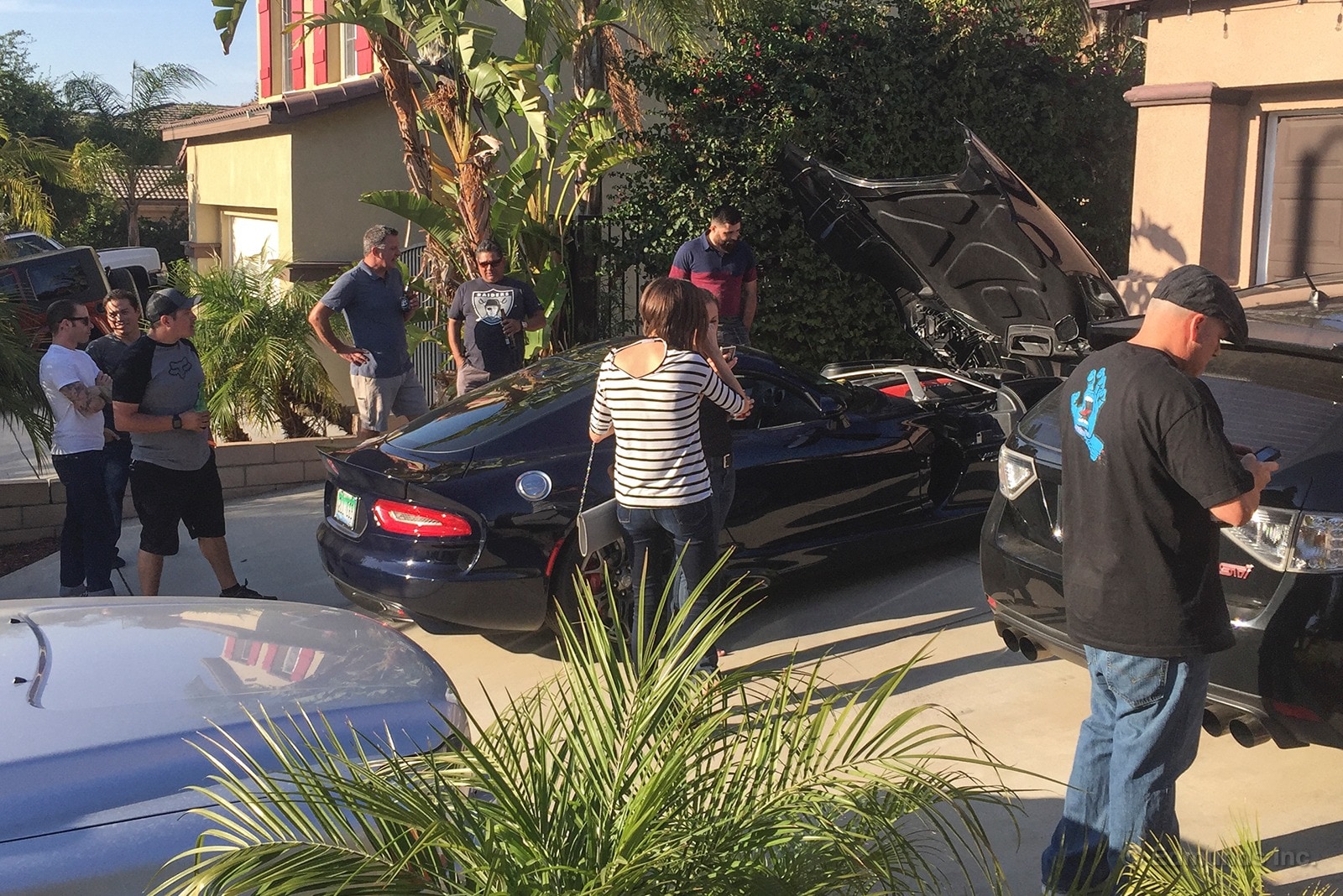
Whatever it was, the car was eliciting some type of response from everyone there. If I had driven our long-term Civic, we'd all still be in the backyard chatting about real estate prices. Yawn.
Later in the week I spotted a kid in the grocery store parking lot as I parked the Viper.
"Wow, mom! Look!" He pointed, jumped up and down in excitement and finally she looked up from her cell phone long enough to see what he was pointing at. She rolled her eyes at his excitement over the light-up third brake light with a Viper on it.
Big displacement, sexy styling and a complete-disregard-for-mpg attitude are part of what make this car unique and that seems to translate — even to people who don't speak Car Guy. You don't have to care about power-to-weight ratios or Nürburgring lap times to know it's special, even if you don't like it. You can tell just by looking at it.
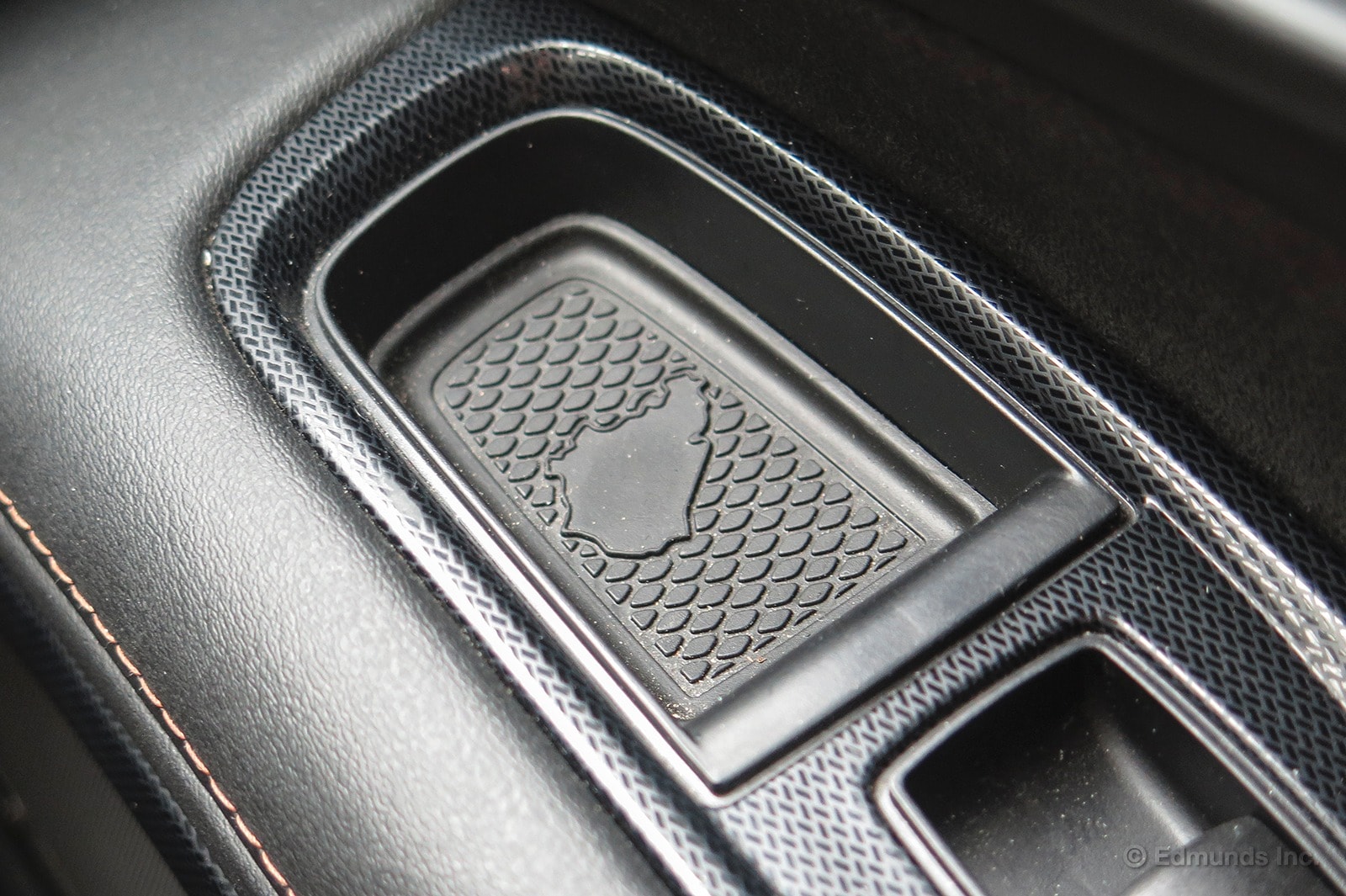
OK, so I didn't find an easter egg in the Viper, my passenger did. We've had our long-term 2015 Dodge Viper for 11 months now and somehow I've missed this little detail the entire time. While we were riding along, my passenger said "Hey, what's this." I knew what it was as soon as I looked at it. Can you guess?
It's an outline of the Nürburgring in Germany and it's located in the passenger door handle of the Viper. It's probably there to pay homage to the production-car records that the Viper has set there over time.
Apparently, Dodge is proud enough of those records to put a bit of a tribute inside the car. It's a detail that I certainly didn't expect to spot this far into our test of the Viper and it reminds you that this car was designed for track use, not the kind of soul-crushing commutes it's been dealing with lately.

Time flies when you're having fun and this last year was far too short thanks to our long-term Viper. Depending on who you believe, this may be the end of the line for the Viper's production, too.
You can check out the Viper's long-term wrap-up here and it should come as no surprise that some editors had comfort issues and some were able to look past it to revel in the glory of 645 horsepower. Besides an expensive set of tires and a regularly scheduled maintenance visit, the Viper remained mostly trouble-free.
In its wake, there's a noticeable void in our test lot. Hopefully we'll get something as bonkers and polarizing as soon as possible. Stay tuned.
Wrap-Up
What We Got
Throwbacks like the Dodge Viper have the kind of alive-or-dead ambiguity normally associated with Abe Vigoda. As of this writing, Dodge executives have left the door barely cracked open to the notion of another Viper after current production ends in 2017. With this in mind, we count ourselves as lucky to have experienced this beast of a sports car before its likely discontinuation.
It just so happens that the probable reason for the Viper's extinction is also why so many people (including some of us) love it. It's primitive compared to alternatives that have evolved over generations. The Viper has a massive 8.4-liter V10 engine that makes 645 horsepower and 600 pound-feet of torque, while other sports cars have migrated to smaller engines with fewer cylinders and turbochargers. You also have to contort yourself over a massive side sill that is usually searing hot from the side exhaust, and the ride quality is as unyielding as a butcher block.
Our 2015 Viper GT had leather and alcantara seats, a GTS-style hood, upgraded two-piece Brembo brakes, a more sophisticated traction/stability control system and adjustable dampers that go from really stiff to way too stiff. Add in special blue paint, super sexy Sidewinder wheels, 18-speaker Harman Kardon audio and $2,100 for the gas-guzzler tax, and our as-tested price shot up to $103,785. That puts it in a league price-wise with cars like the Audi R8, Jaguar F-Type and Porsche 911.
That's a tough pill to swallow but we had one year and 20,000 miles to digest it. Here's what we learned.
Performance
"It's no secret the Viper isn't the easy or safe choice. There is no such thing as casually driving one. It's loud, hot, stiff, and has poor visibility. The things this car excels at are, in my opinion, worth it. Speed is intoxicating and in our current long-term fleet, nothing satisfies more than the Viper." — Reese Counts
"I left the experience with a more complete appreciation of the Viper. I stand by my belief that most of its contemporaries are easier to drive, but I now understand Viper sympathizers. It's a wildly capable track car that makes you earn it. And that's a trait I can also appreciate." — Josh Jacquot
"It's raw, with an ungodly amount of power and it should scare you. This latest Viper is a bit easier to drive, but I contend it's one of the more difficult to find its limits without endangering yourself." — Mark Takahashi
MPG
"Expecting good fuel economy from an 8.4-liter V10 when it's used as a daily driver is, well, dumb. And our 2015 Dodge Viper is doing absolutely nothing to change anyone's expectations there." — Kurt Niebuhr
"The Viper spent some quality time circling Mazda Raceway Laguna Seca at the hands of Josh Jacquot. In two fills noted "track" on the fuel log, he achieved a 6.4 mpg and an 8.4 mpg result. Oddly enough, Josh also managed to eke out a 27.2 mpg tank on the way up to Monterey, beating the previous 25.1 mpg high score. Impressive results on both sides of the spectrum." — Mark Takahashi
Comfort
"None of my complaints have much to do with how it drives out on some mountain road where its abundant power and grip would reveal the Viper to be a thrilling driving machine. That's because, for me, it is completely irrelevant. I would never be able to stand being in it for long enough to get to that mountain road. It actually made me angry." — James Riswick
"I get that it's a Viper and it's not supposed to be pleasant, but I keep feeling like Chrysler products are penalizing me because one of their seat engineers has a back that doesn't match mine. After 15 hours behind the wheel in only a few days, I was beat. I got back home, kicked off my shoes and lay down on the floor without moving for about an hour." — Mike Magrath
"The Viper has a lot of problems with comfort and visibility, but I find it difficult to fault the seats. The bucket may look weird with the high, mandatory lumbar, but it works perfectly to keep me planted. When combined with the supportive but not too aggressive side bolsters, I never feel like I might slide or fall out of my seat. This is especially important in a car that can move through corners as quickly as this one." — Reese Counts
"You spend day one acclimating to the Viper's interior. Remember the saying about trying to fit a square peg through a circular hole? If the hammer's big enough, you can do it. I make way toward Arizona being pressed into the form required by the offset pedals and aggressive seats. The engine drone and road and tire noise muffle the stereo and Bluetooth phone calls. I use it as an excuse to practice meditation." — Carlos Lago
Cargo Space
"Actually, I was pretty surprised and impressed that the Viper could handle this Labor Day BBQ-prep run as well as it did. I was certain that some of these items would be riding shotgun, but no. After a few re-shuffles, it all managed to fit quite snugly in the rear cargo well. There was even room remaining on the cargo shelf, which would've been useful if I'd had longer, flat items." — Dan Frio
"So our Viper can handle a little cargo when necessary, which is good. No one expects a car like this to be easy to live with, but this Viper is more accommodating than you might think." — Ed Hellwig
Interior
"During my break-in road trip, the temps hovered around 116 with the occasional spike to 118 and the occasional low of 112. For more than 12 hours, the Viper existed in triple-digit temps and, honest-to-god, not once did I complain about the air-conditioning. My feet weren't cooking and my hands weren't frozen. The interior of the car was almost cool." — Mike Magrath
"I got used to the tight pedal box, terrible visibility, claustrophobic cabin and droning exhaust. I accepted that the Viper will never be a sports car that you can use every day like you can a Corvette or 911. There are no hidden surprises; the Viper just is what it is. You might have second thoughts when you take one for a test-drive, but give it another shot later. The Viper will never change, but you just might." — Cameron Rogers
Audio and Technology
"There are two very distinct and frustrating issues with the stereo in our long-term 2015 Dodge Viper. First: the bass is turned up way too high. Second: it doesn't get loud enough. Whether it's the radio, Bluetooth or an iPod plugged in, nothing meets my personal volume standards." — Travis Langness
Maintenance
"Parts one and two of this adventure averaged out to a check in the box, overall. The work was completed. The quality of service at the second location was acceptable. The cost was perhaps the highlight when compared to our R8 and GT-R long-termers. Still, the experience left us wanting more. Service is part of any ownership experience and for a Viper it should be different, even special. But in our experience, it is not. So far, that's the most disappointing part of owning a Viper." — Mike Schmidt
"All said and done, tires and install ran us $1,797. We might've saved a few bucks, but our local shop got things done quickly and correctly, all with free WiFi in the waiting area. And if you own a $100K Viper, you probably aren't going to squabble over just a few shekels on tires." — Travis Langness
Miscellaneous
"Our 2015 Dodge Viper may be a polarizing vehicle in terms of how it drives, but there's no debate about the styling. Or there shouldn't be, at least. I've driven the thing countless times by now, and I still catch myself admiring the rear three-quarter view like it's a poster in my childhood bedroom." — Josh Sadlier
Maintenance & Repairs
Regular Maintenance:
Our long-term Viper's first scheduled maintenance occurred on the return leg of a cross-country trip, just as the odometer struck 6,000 miles. That visit resulted in an oil and filter change as well as a multipoint inspection, all of which was covered by the warranty.
At the 12,000-mile mark we spent $168.14 for a scheduled inspection, oil change and tire rotation. That price certainly seems reasonable for a high-performance vehicle like the Viper, but the experience left us less than satisfied.
Service Campaigns:
We experienced one recall incident that included two items. The first was for the oil management system and a new valve cover assembly listed as the R29 recall. The second was for the R40 campaign that reprogrammed the radio software in order to close a security vulnerability. Both recalls were handled free of charge.
Fuel Economy and Resale Value
Observed Fuel Economy:
The EPA estimates fuel economy for the Viper at 15 mpg combined (12 city/21 highway). Over the course of our year-long test, we averaged 13.9 mpg. Our best result was an impressive 27.2 mpg, which contrasts nicely against our worst tank of only 7.0 mpg. We also managed to squeeze 294.3 miles out of a single tank once.
Resale and Depreciation:
Our long-term Viper had an as-tested price of $103,785. After one year and 20,898 miles, our Edmunds TMV® Calculator adjusted the price to $79,495 based on a private-party sale. That amounts to a 23 percent depreciation if we were to try and sell it ourselves.
Summing Up
Pros:
This car has performance and presence that few cars on the road can match; enough power to scare even the most experienced drivers; handling and grip that matches the power of its engine; an intuitive infotainment system with plenty of features; a reasonably useful cargo area.
Cons:
Stiff ride that isn't helped by the adjustable suspension; limited outward visibility that can make maneuvering tricky; driving position is compromised by stiff seats and a non-telescoping steering wheel; getting in and out requires an awkward slide over a piping hot door sill.
Bottom Line:
Yes, you could drive this Viper every day. It has attained that level of refinement and comfort. If you want to truly appreciate this Viper, however, you have to want to drive it just for the sake of driving. It's only then that you would appreciate its unique personality, one that is vastly different from its competitors and unlikely to be replicated ever again.
| Total Body Repair Costs: | None |
| Total Routine Maintenance Costs: | $168.14 |
| Additional Maintenance Costs: | $1,797 for four new tires |
| Warranty Repairs: | R29 and R40 recalls |
| Non-Warranty Repairs: | None |
| Scheduled Dealer Visits: | 1 |
| Unscheduled Dealer Visits: | 2 |
| Days Out of Service: | 1 |
| Breakdowns Stranding Driver: | None |
| Best Fuel Economy: | 27.2 mpg |
| Worst Fuel Economy: | 7.0 mpg |
| Average Fuel Economy: | 13.9 mpg |
| True Market Value at service end: | $79,495 (private-party sale) |
| What it Sold for: | N/A |
| Depreciation: | $24,290 (23% of paid price) |
| Final Odometer Reading: | 20,898 miles |
The manufacturer provided Edmunds this vehicle for the purposes of evaluation.